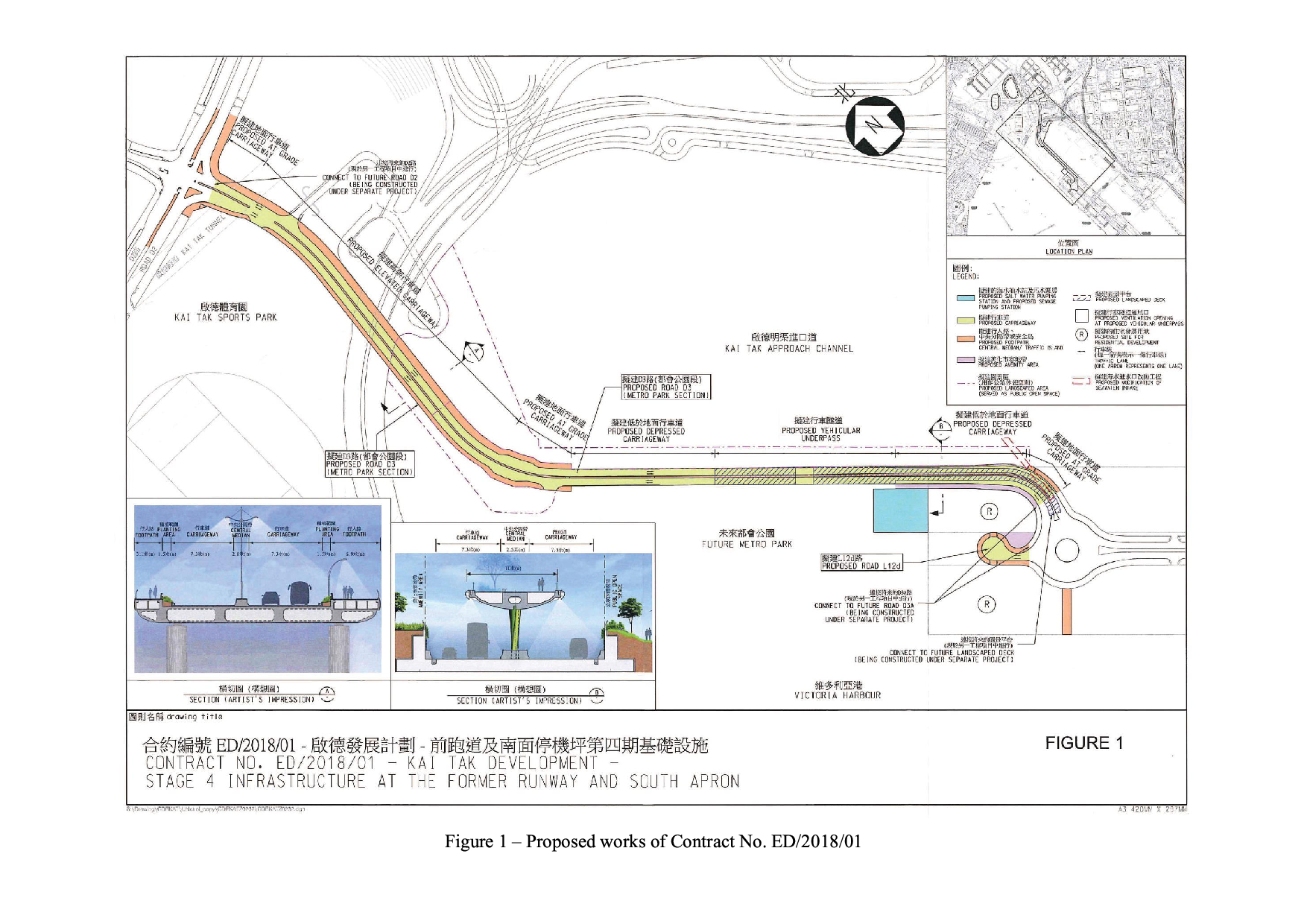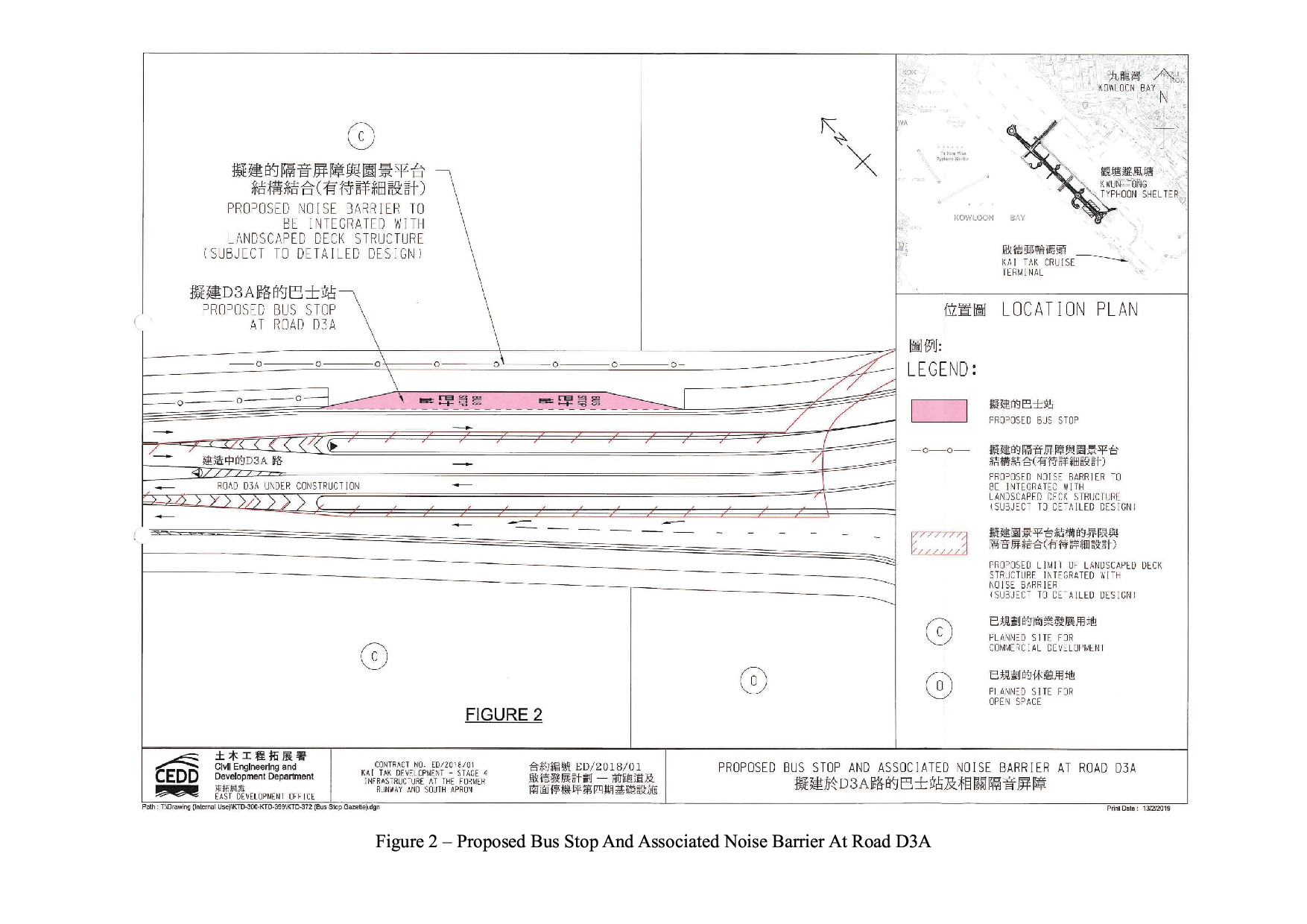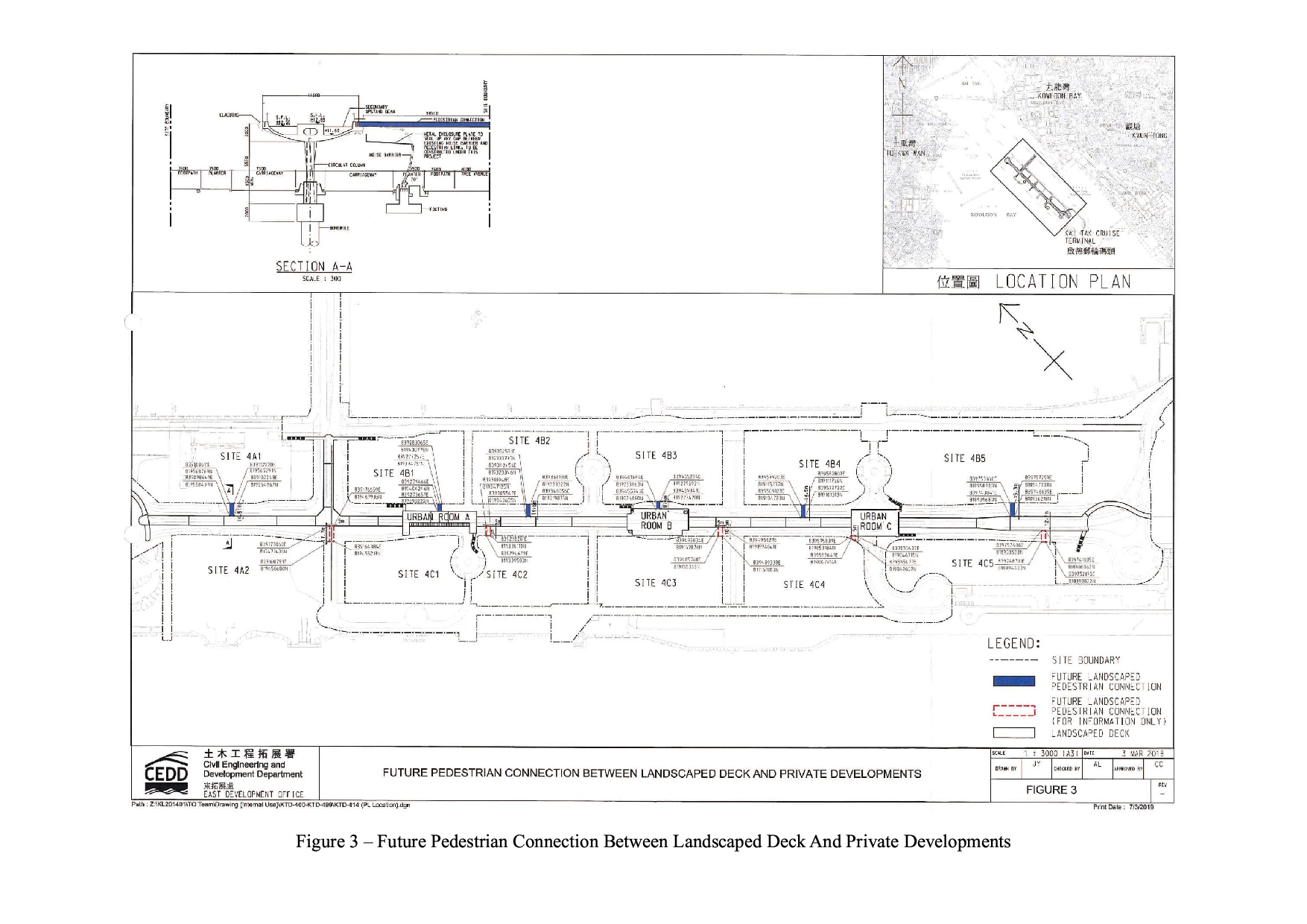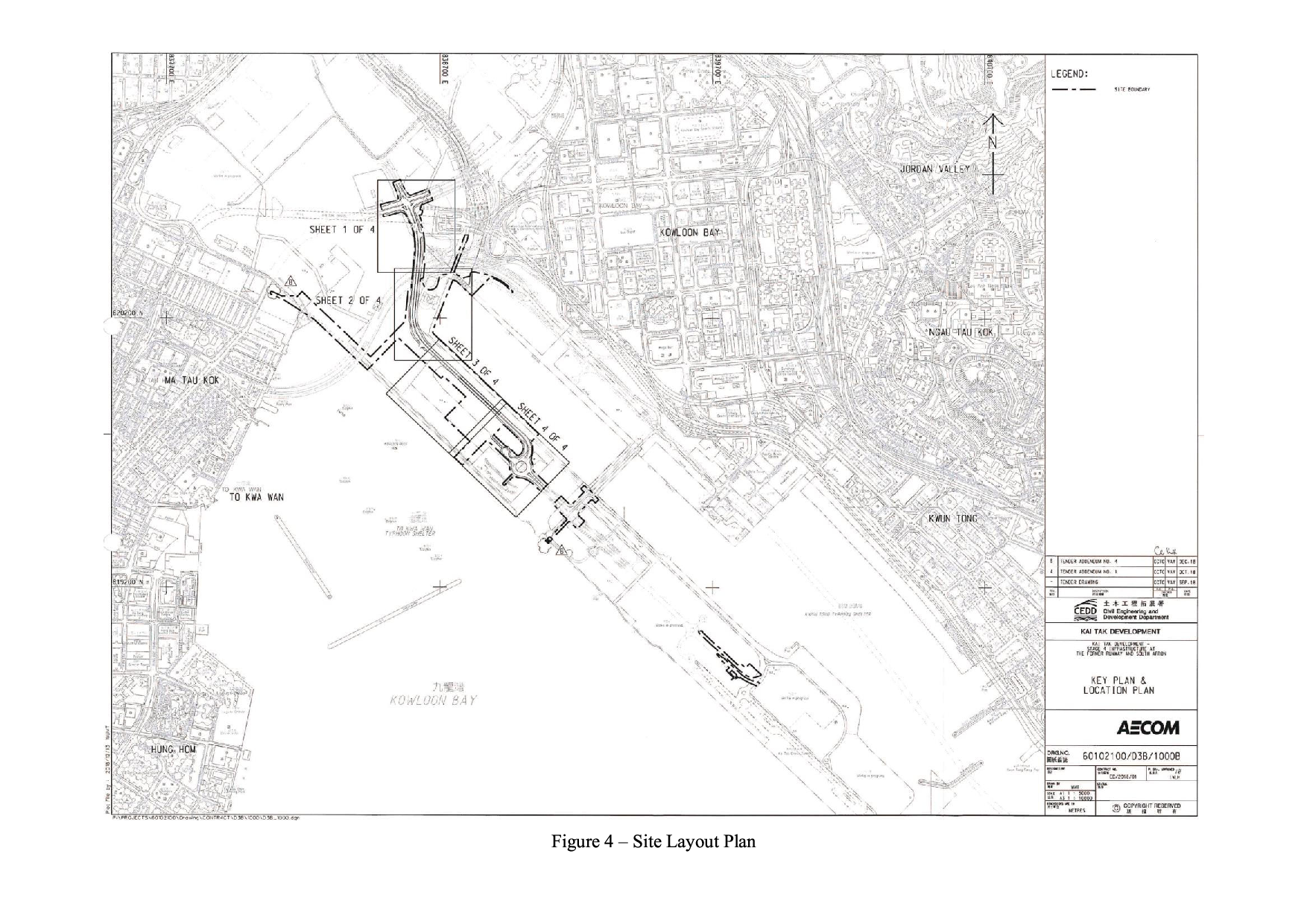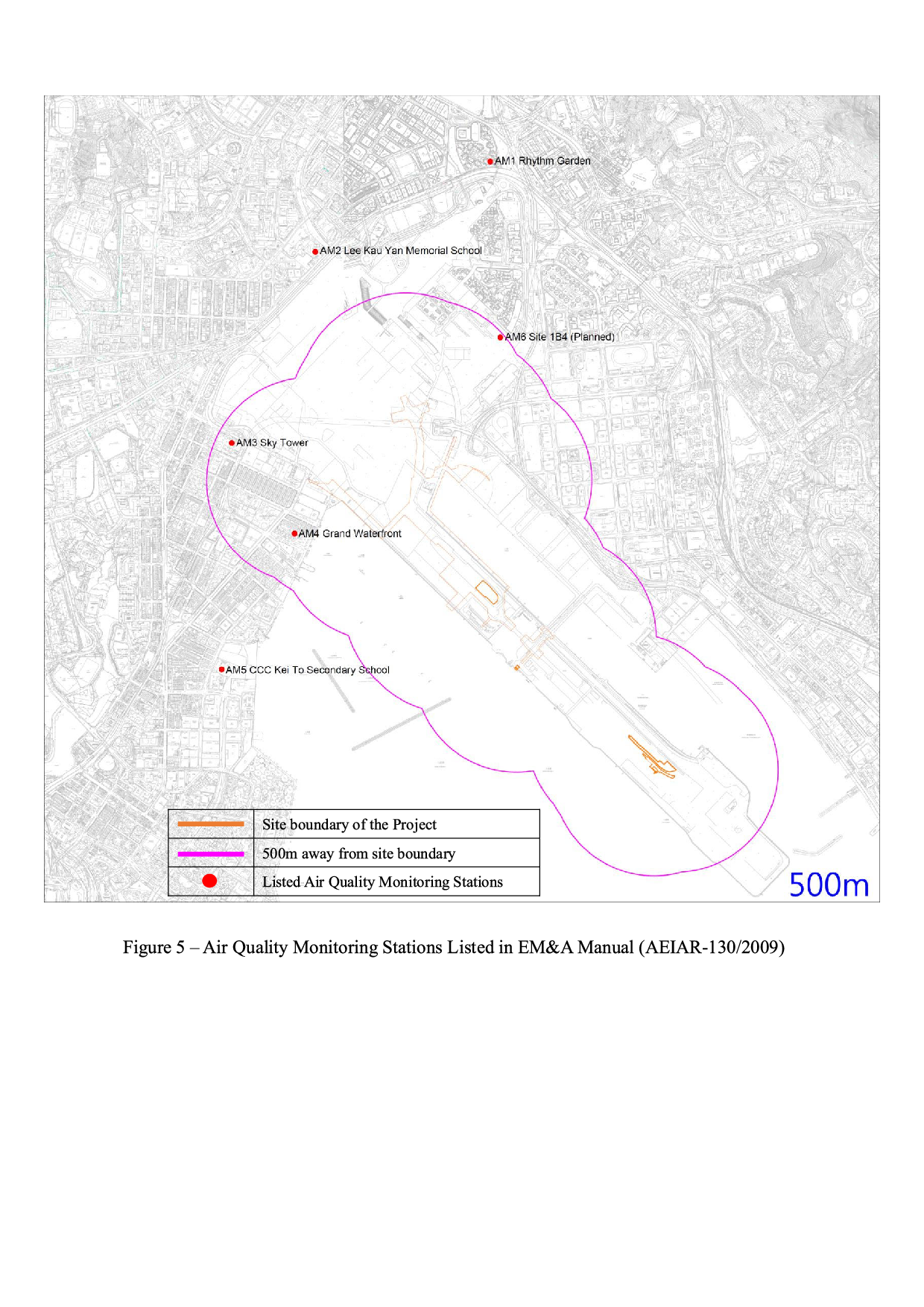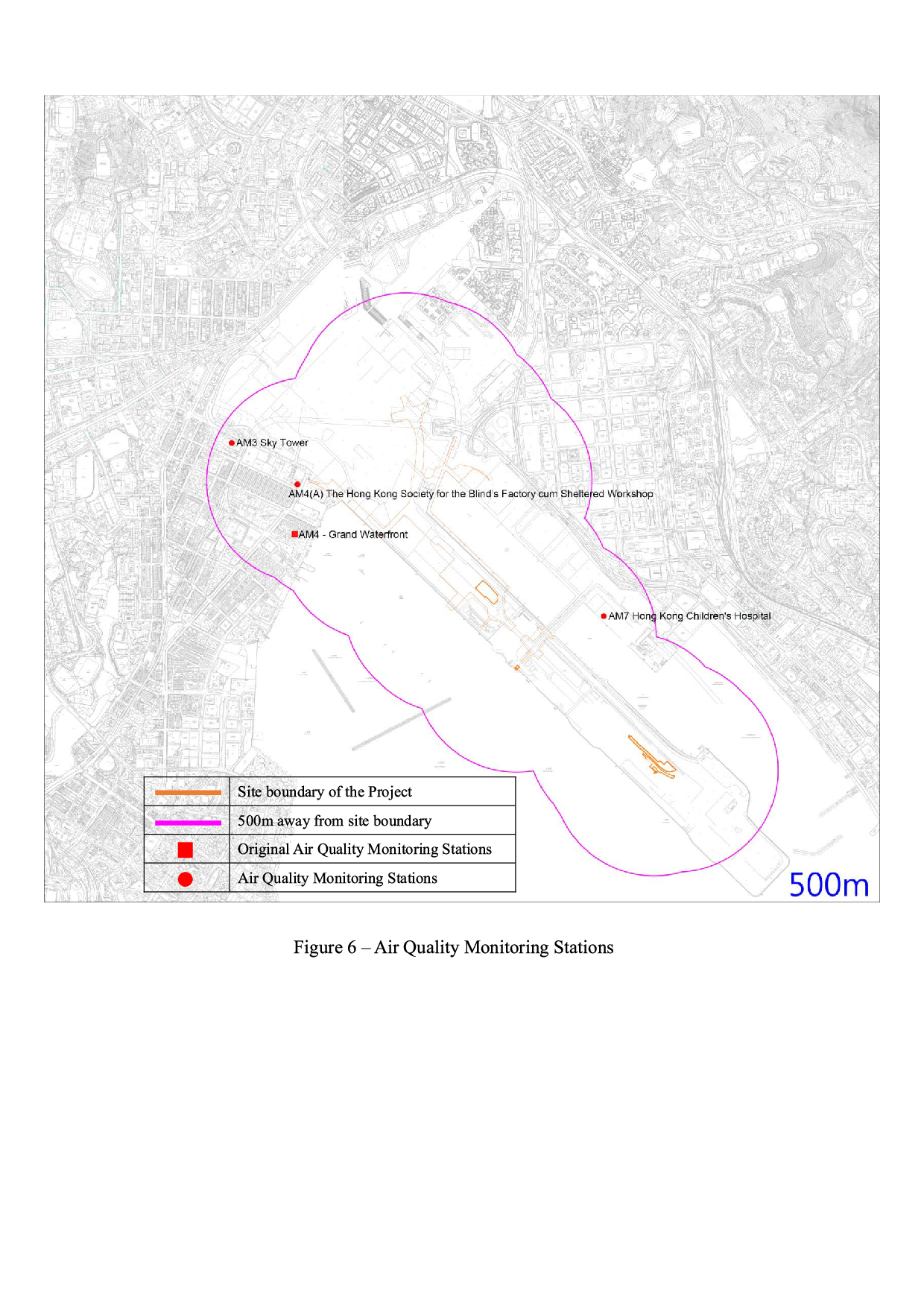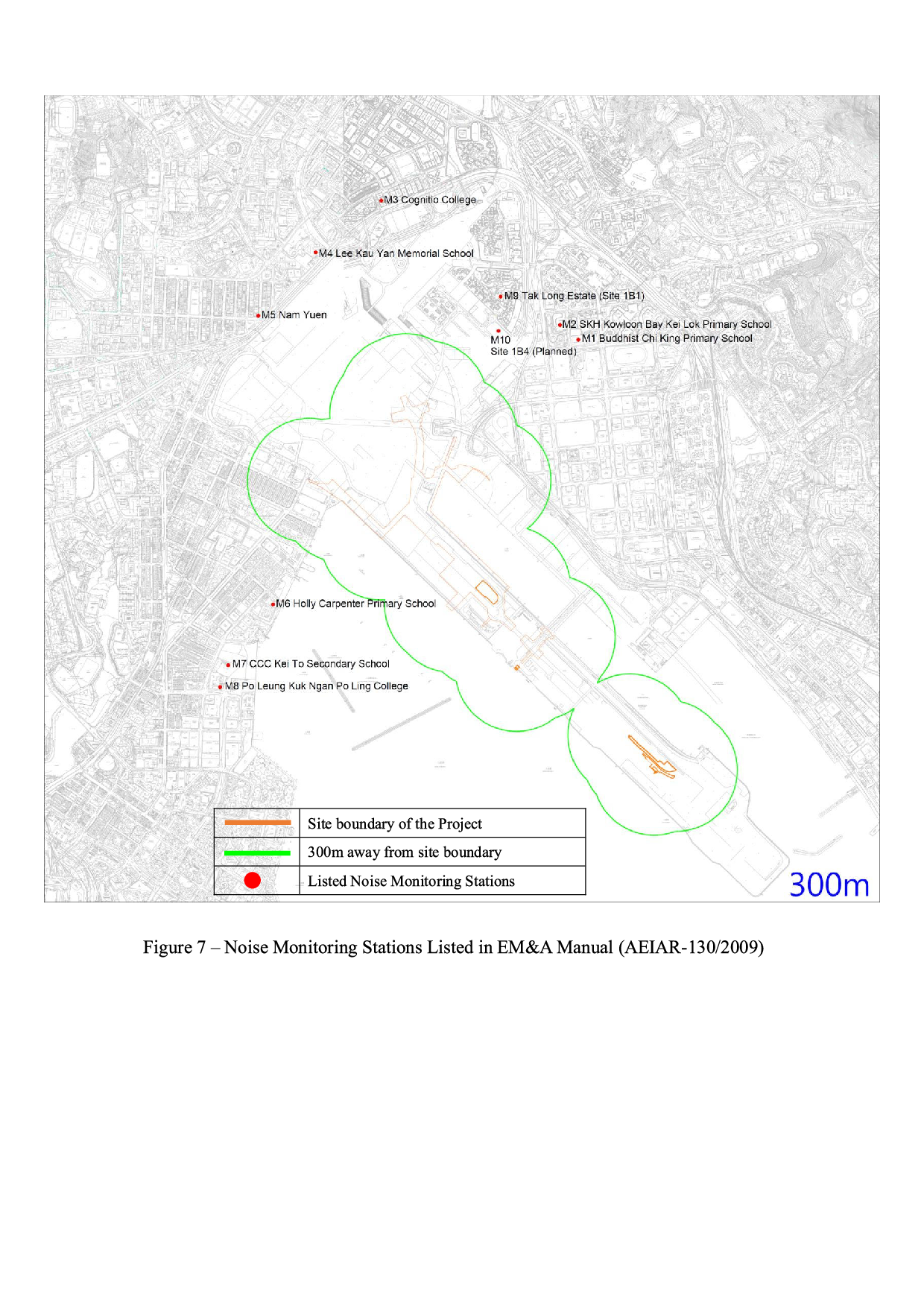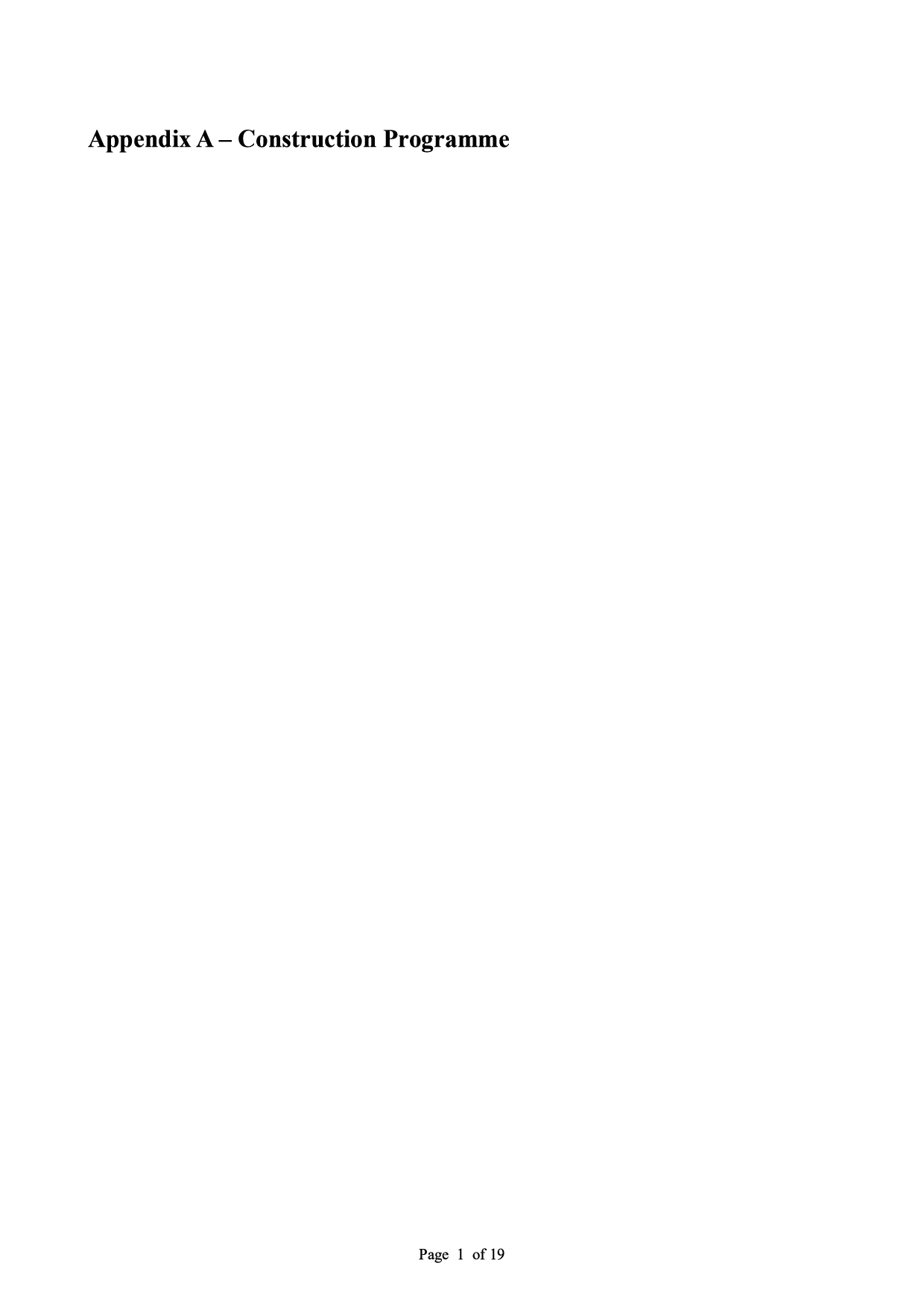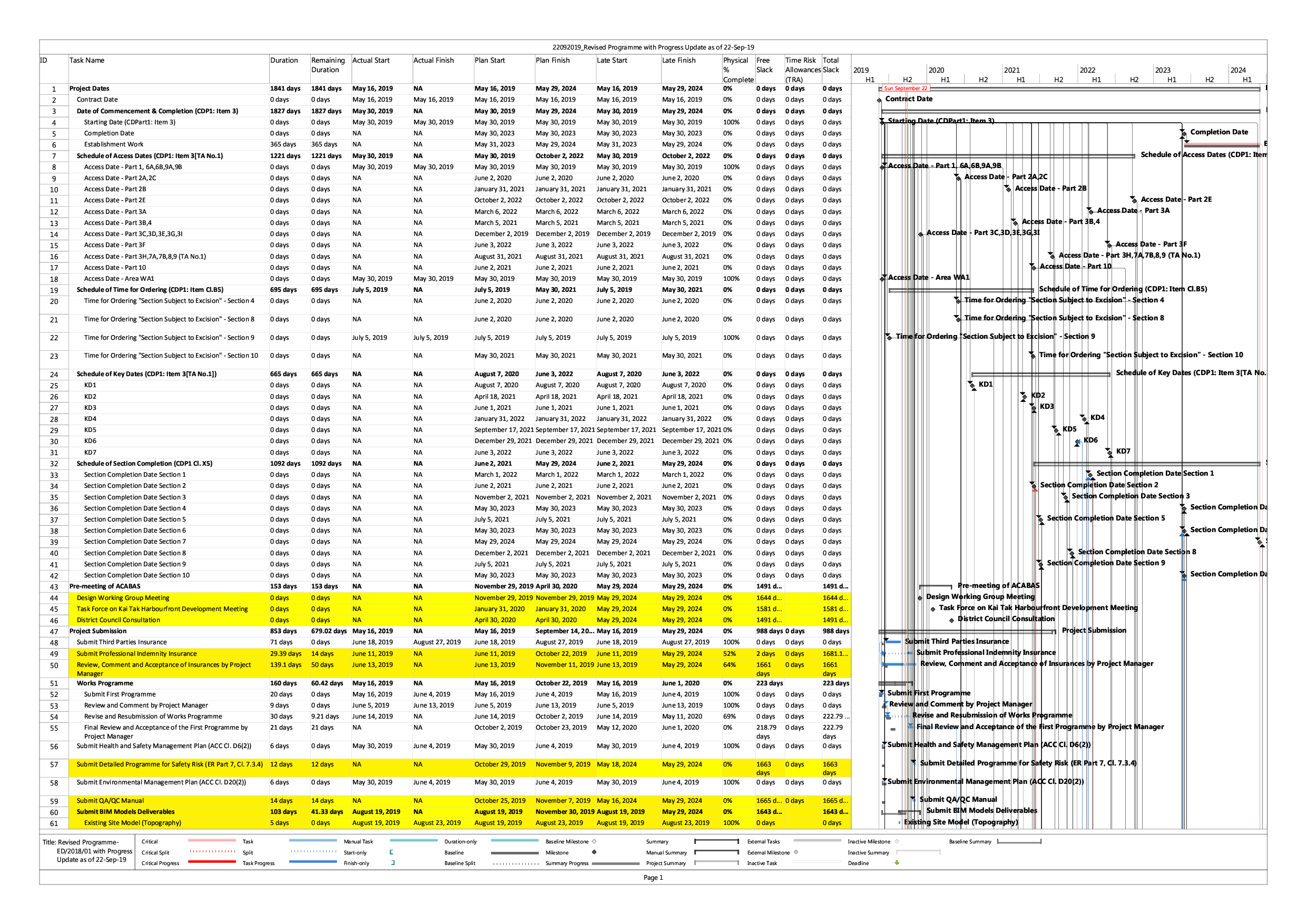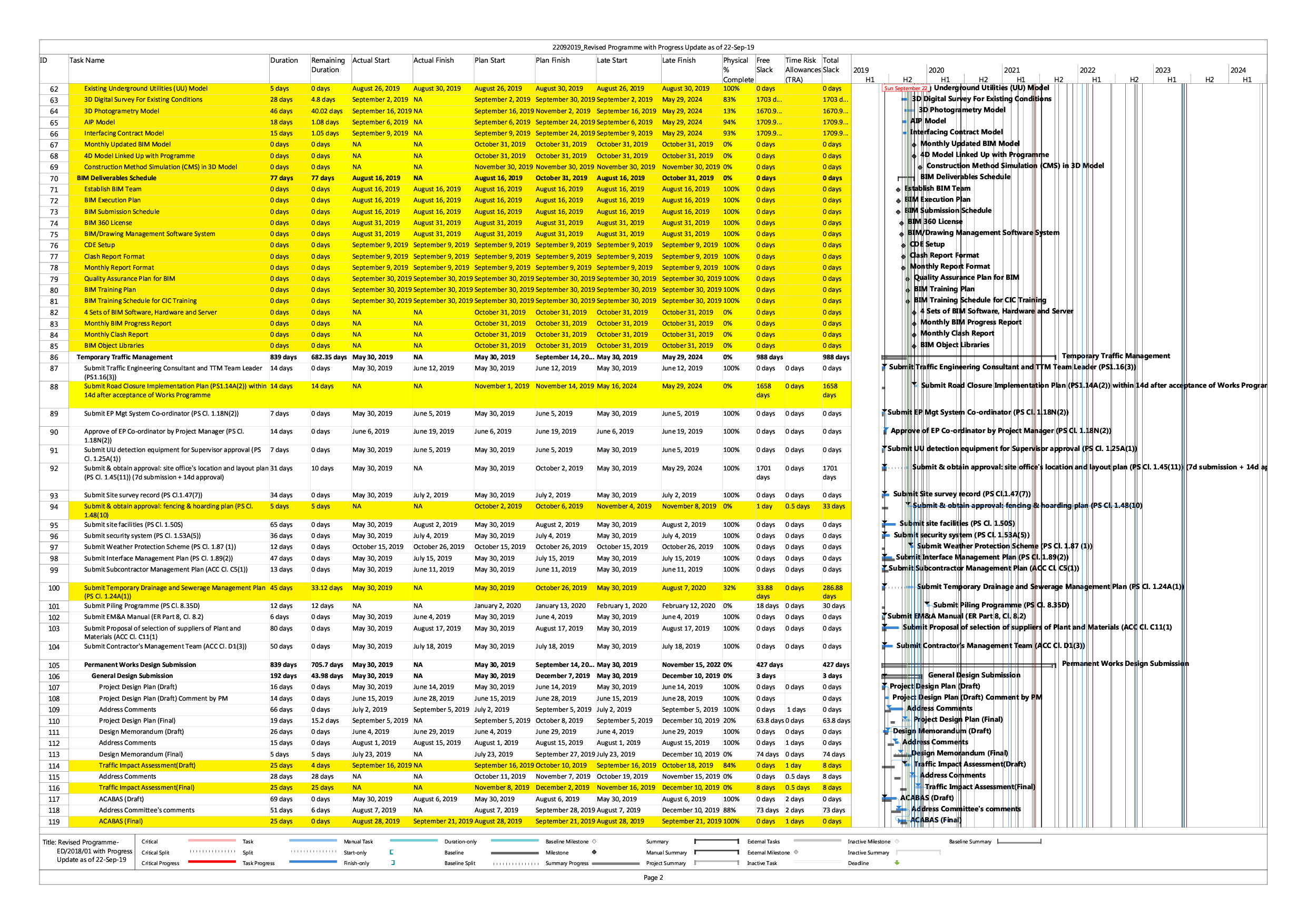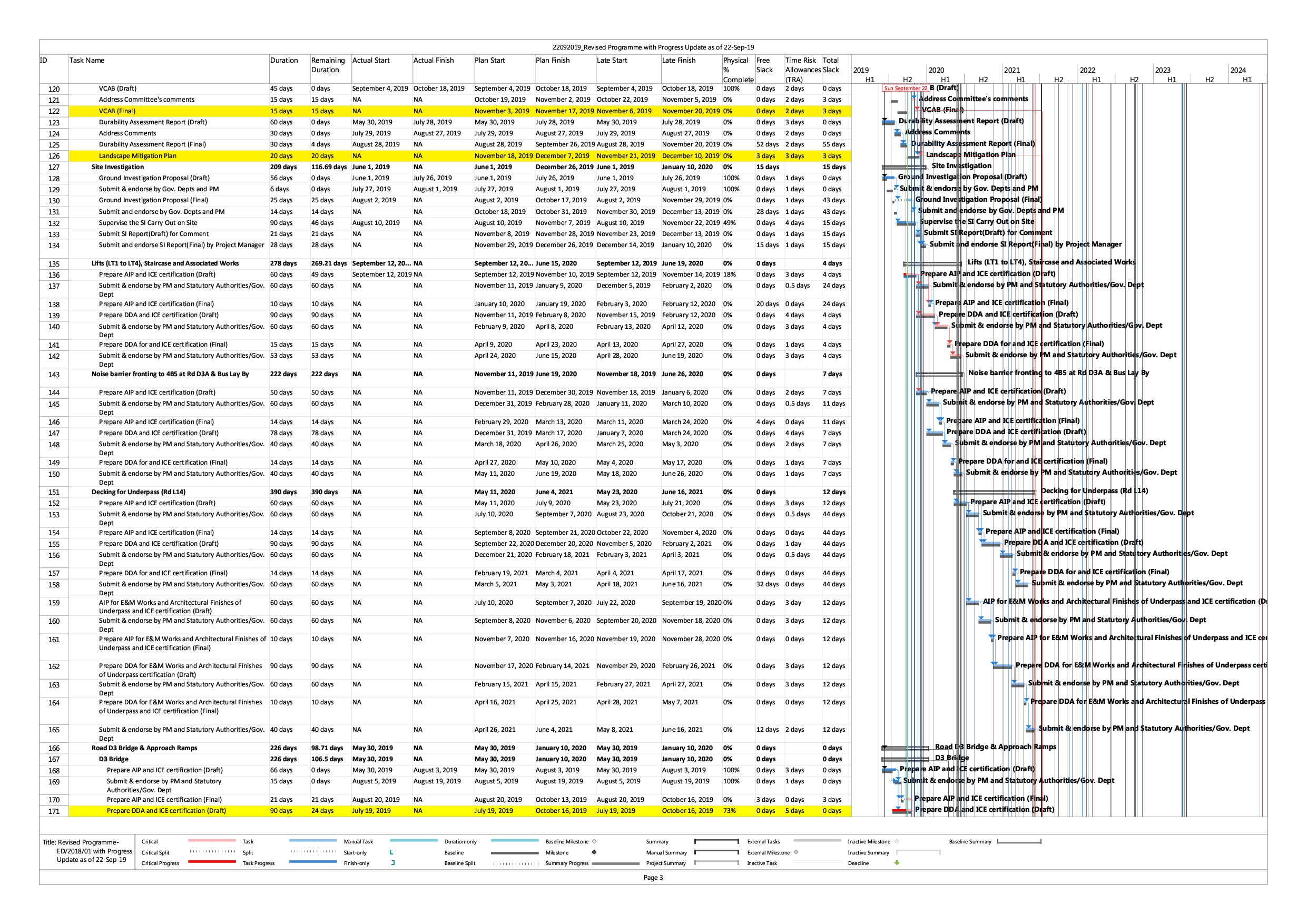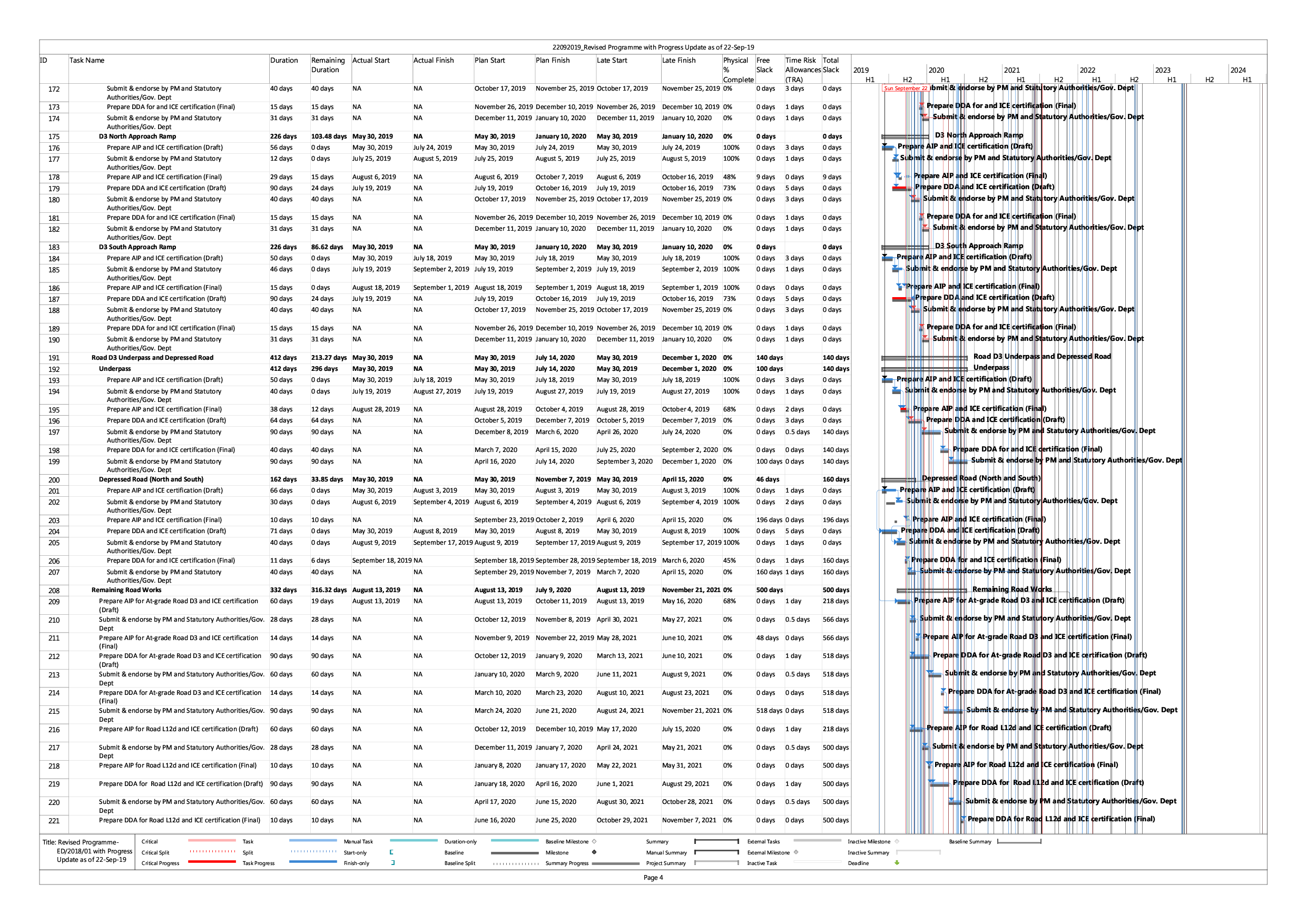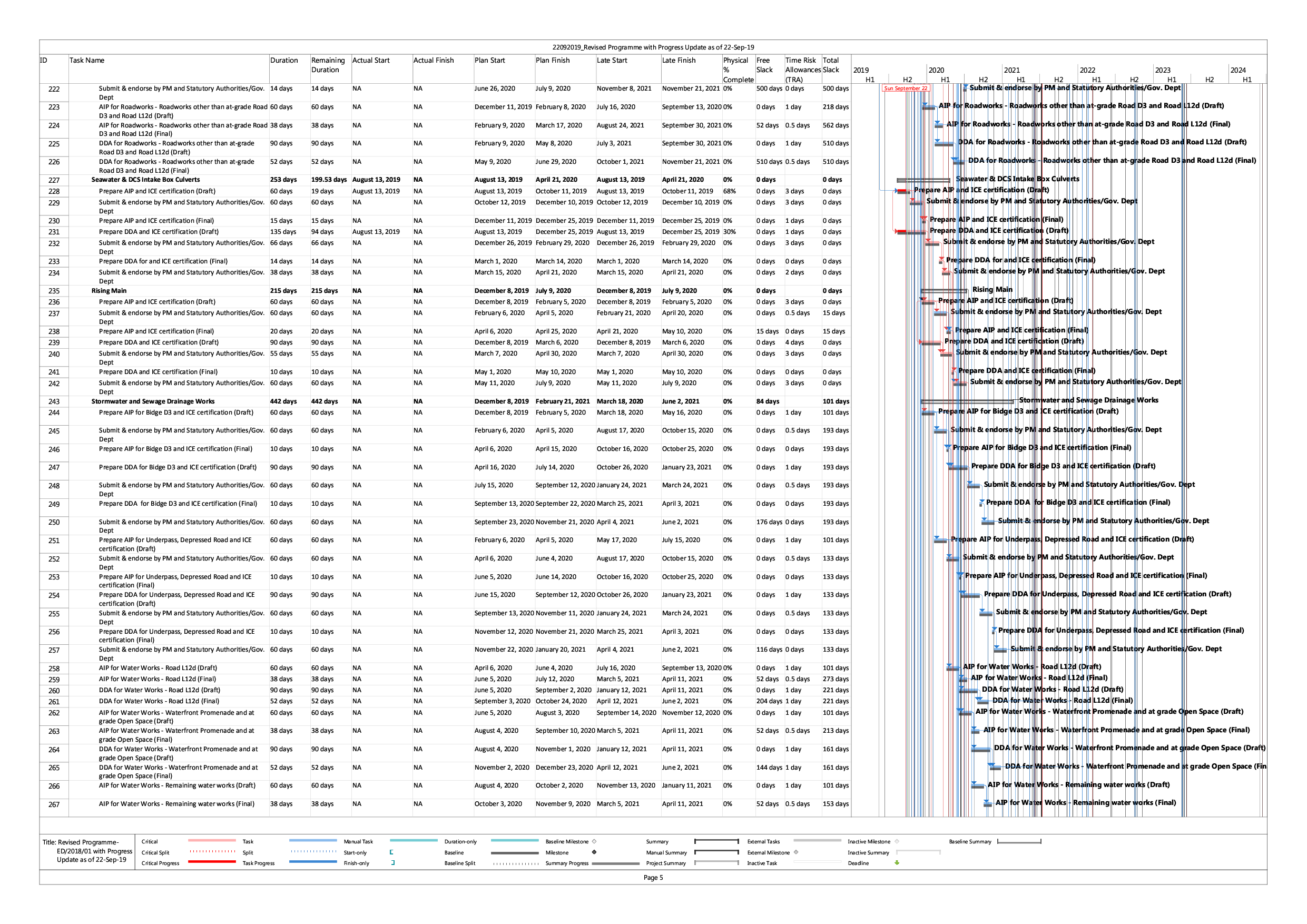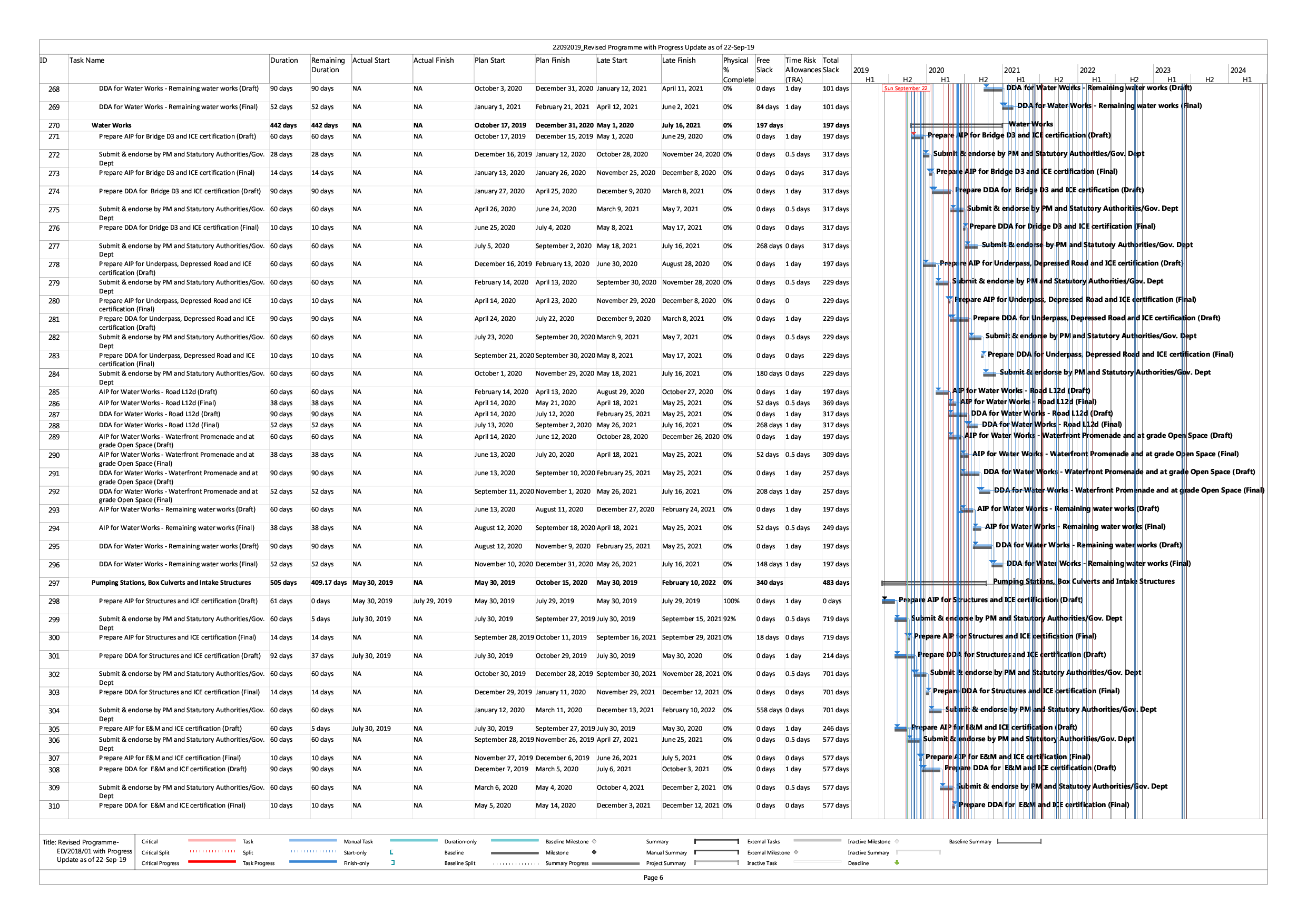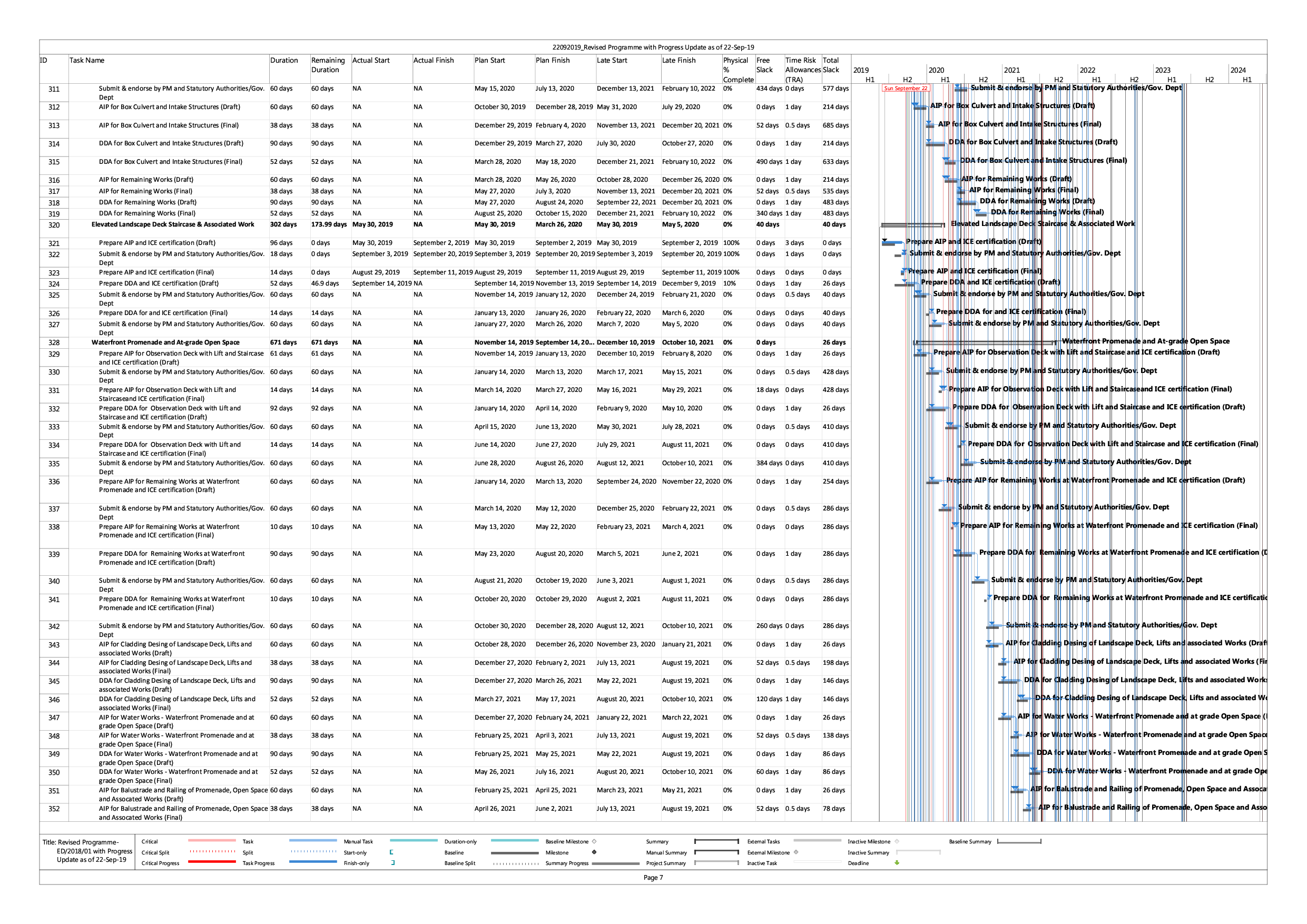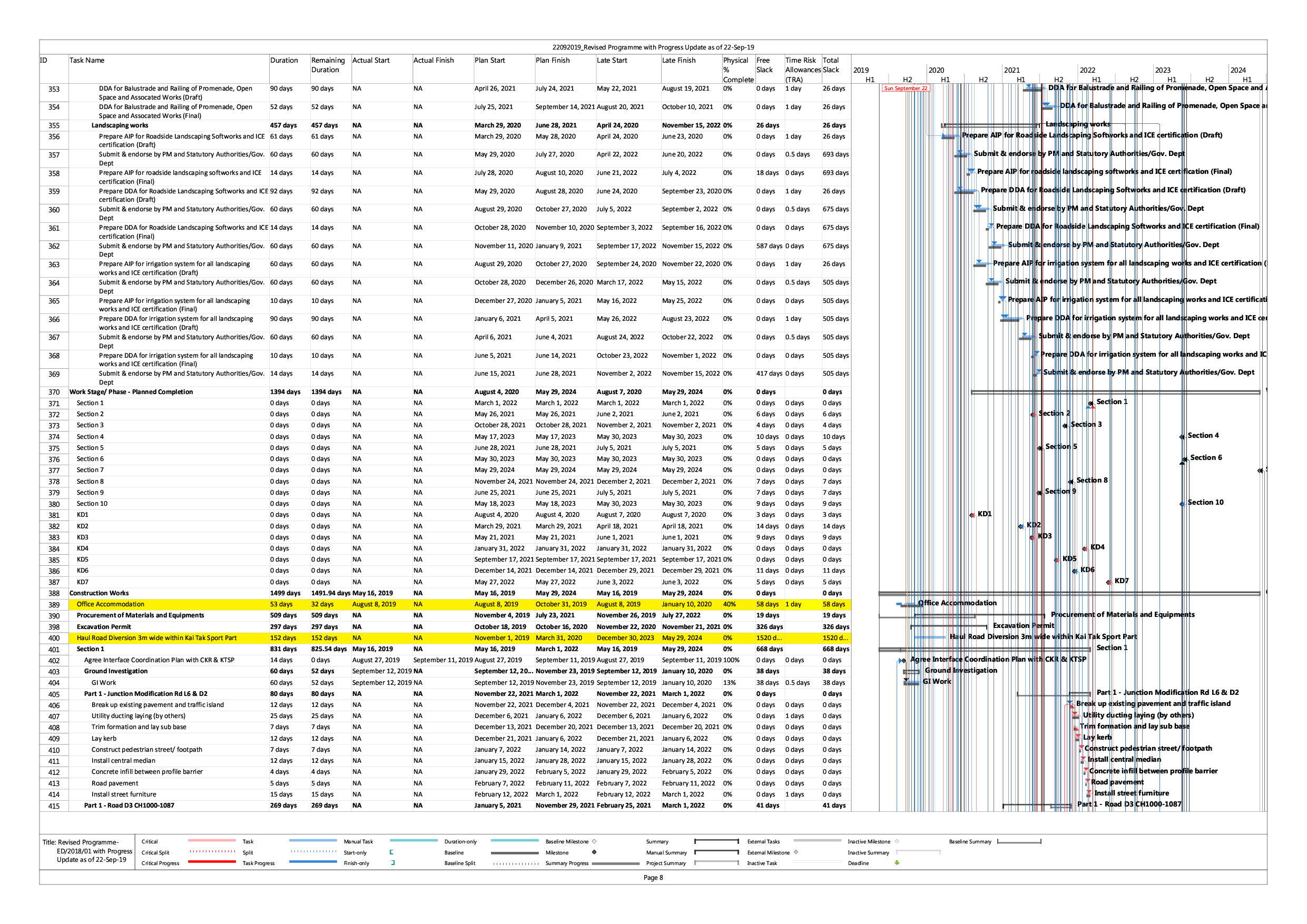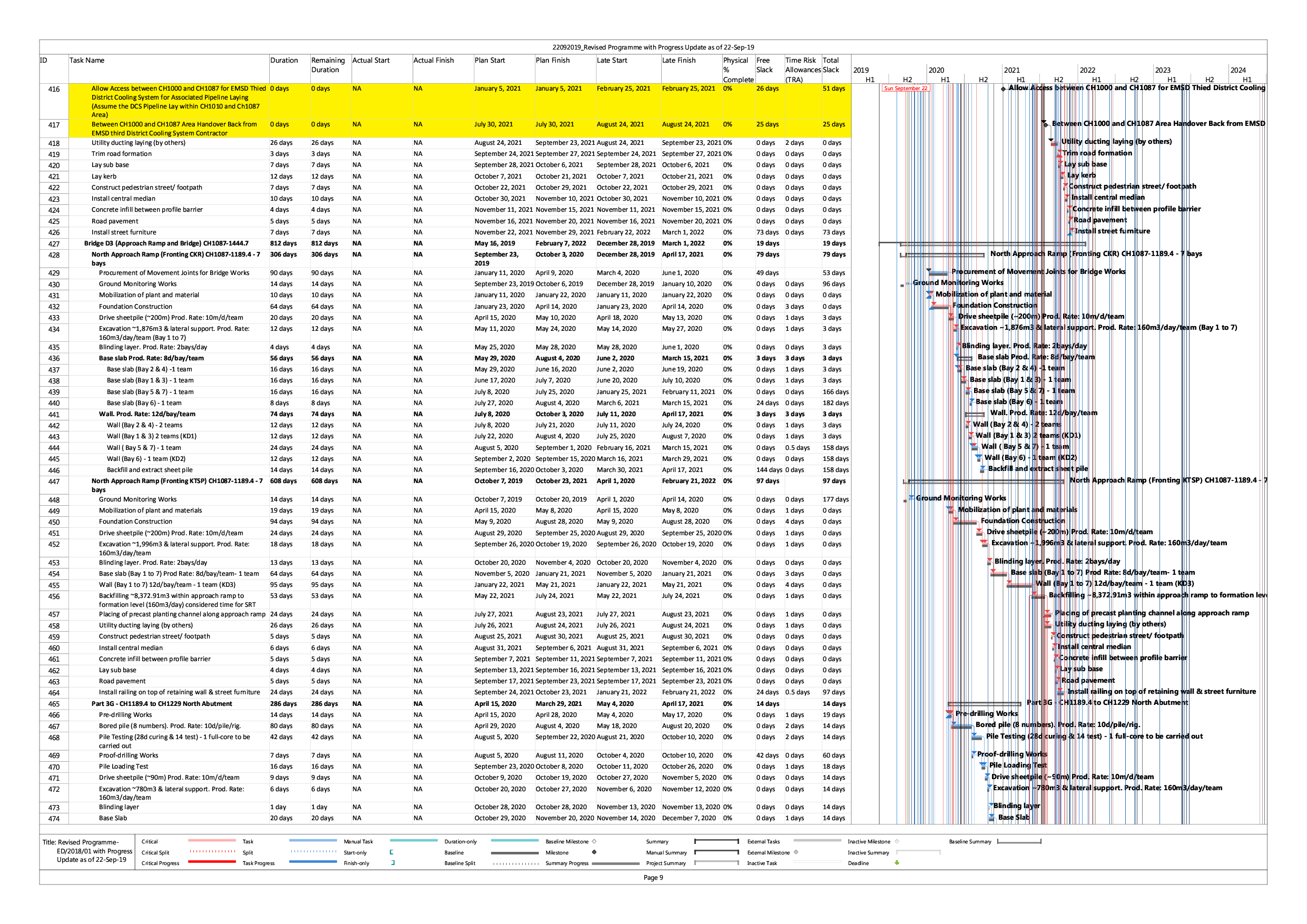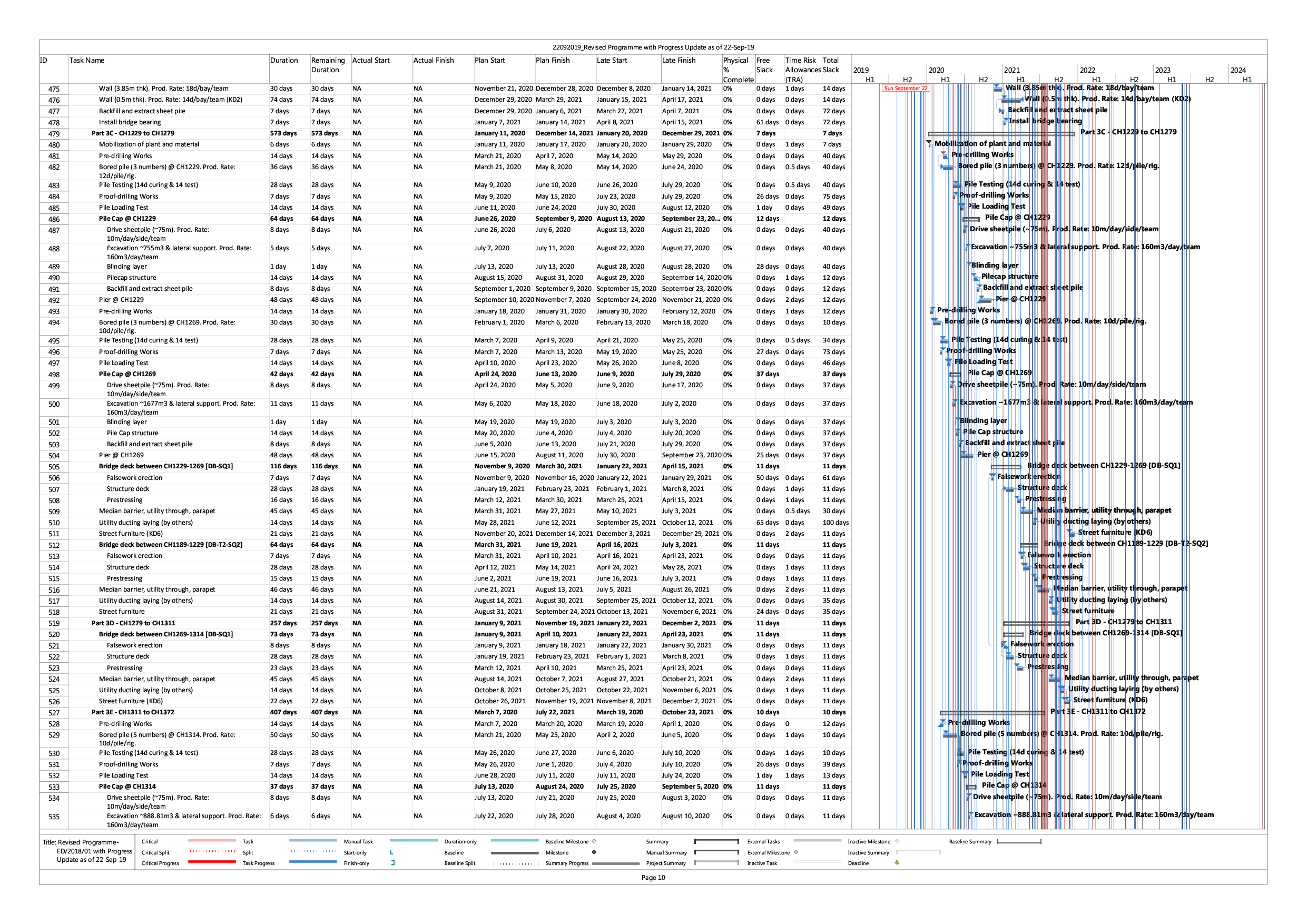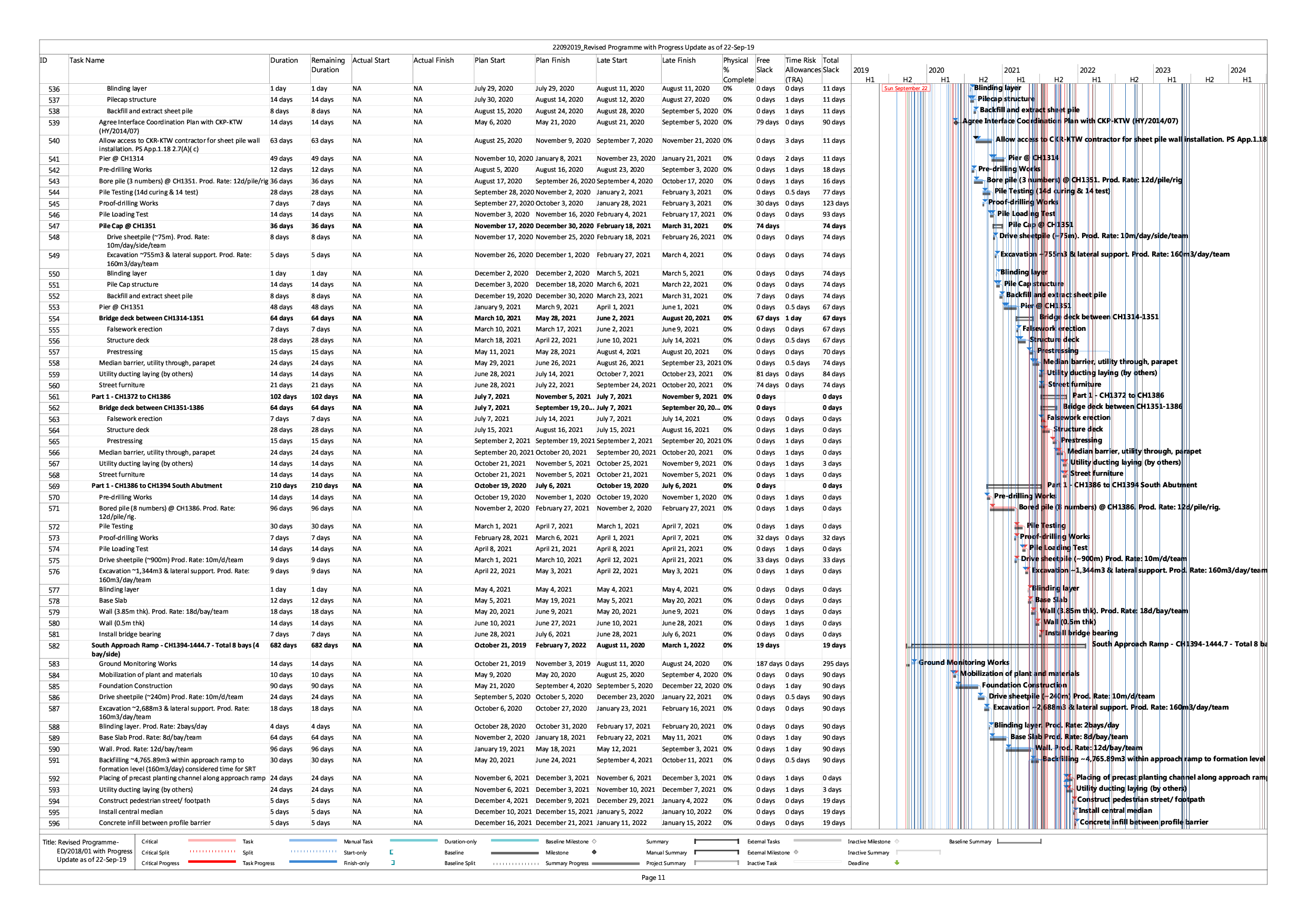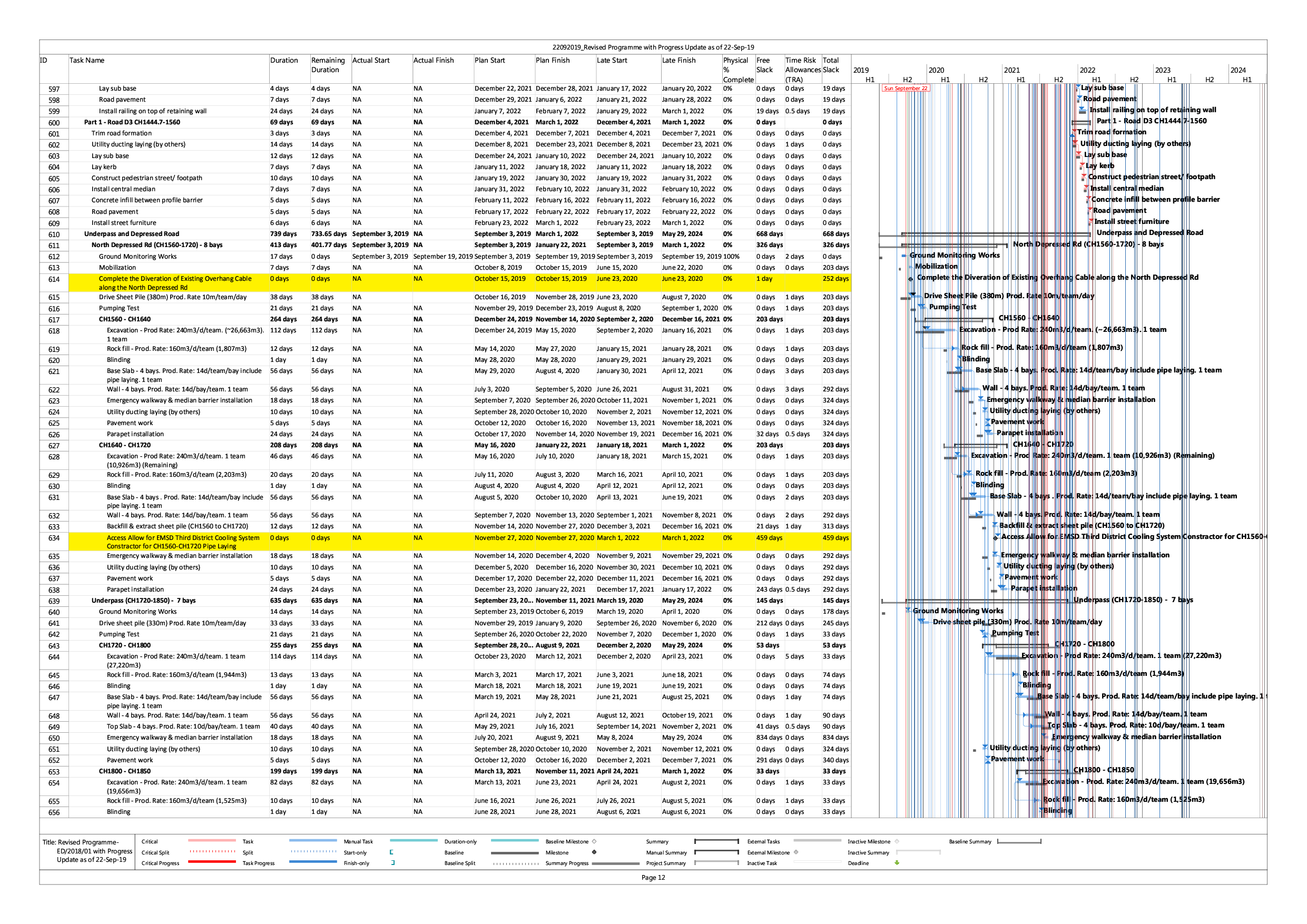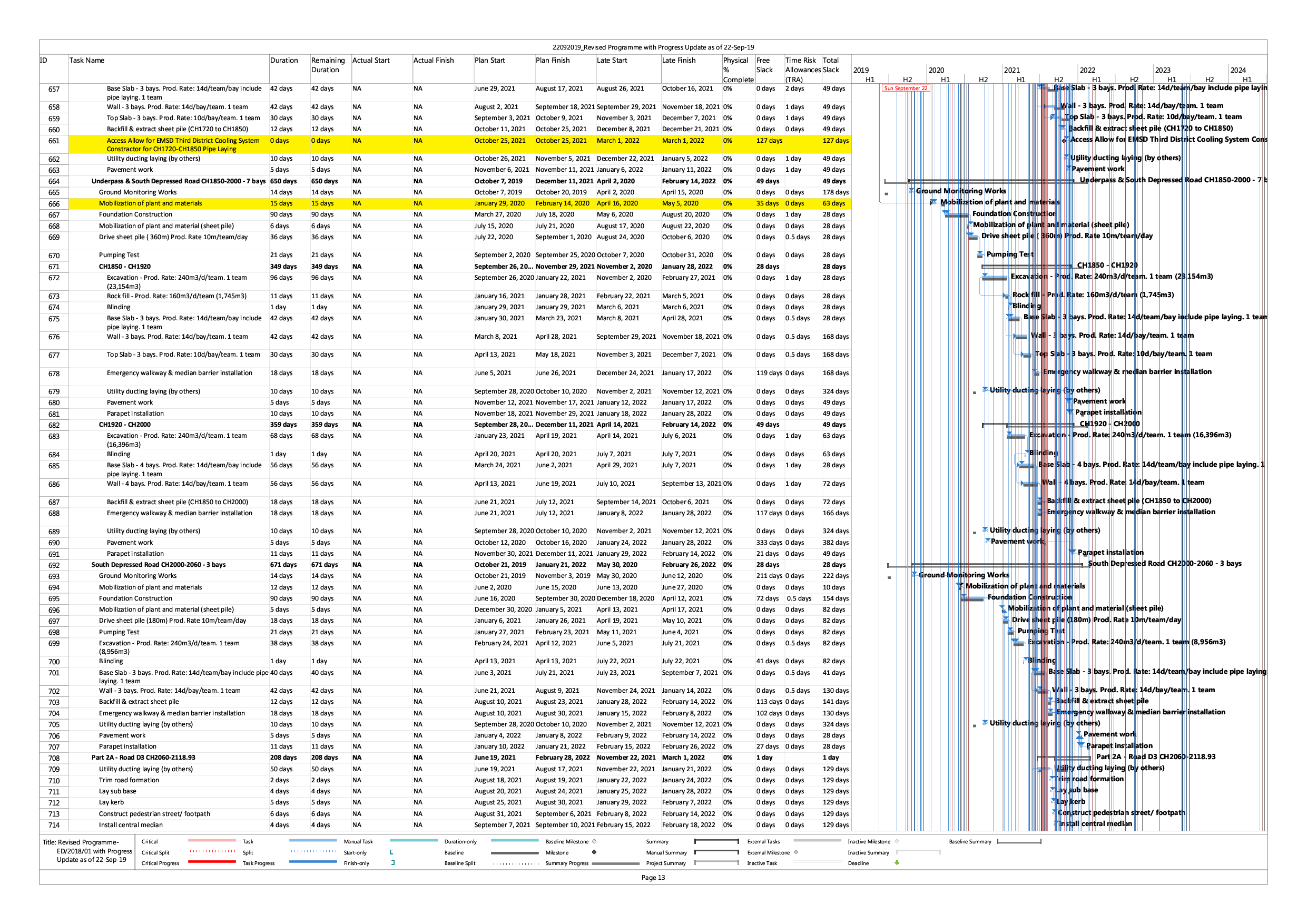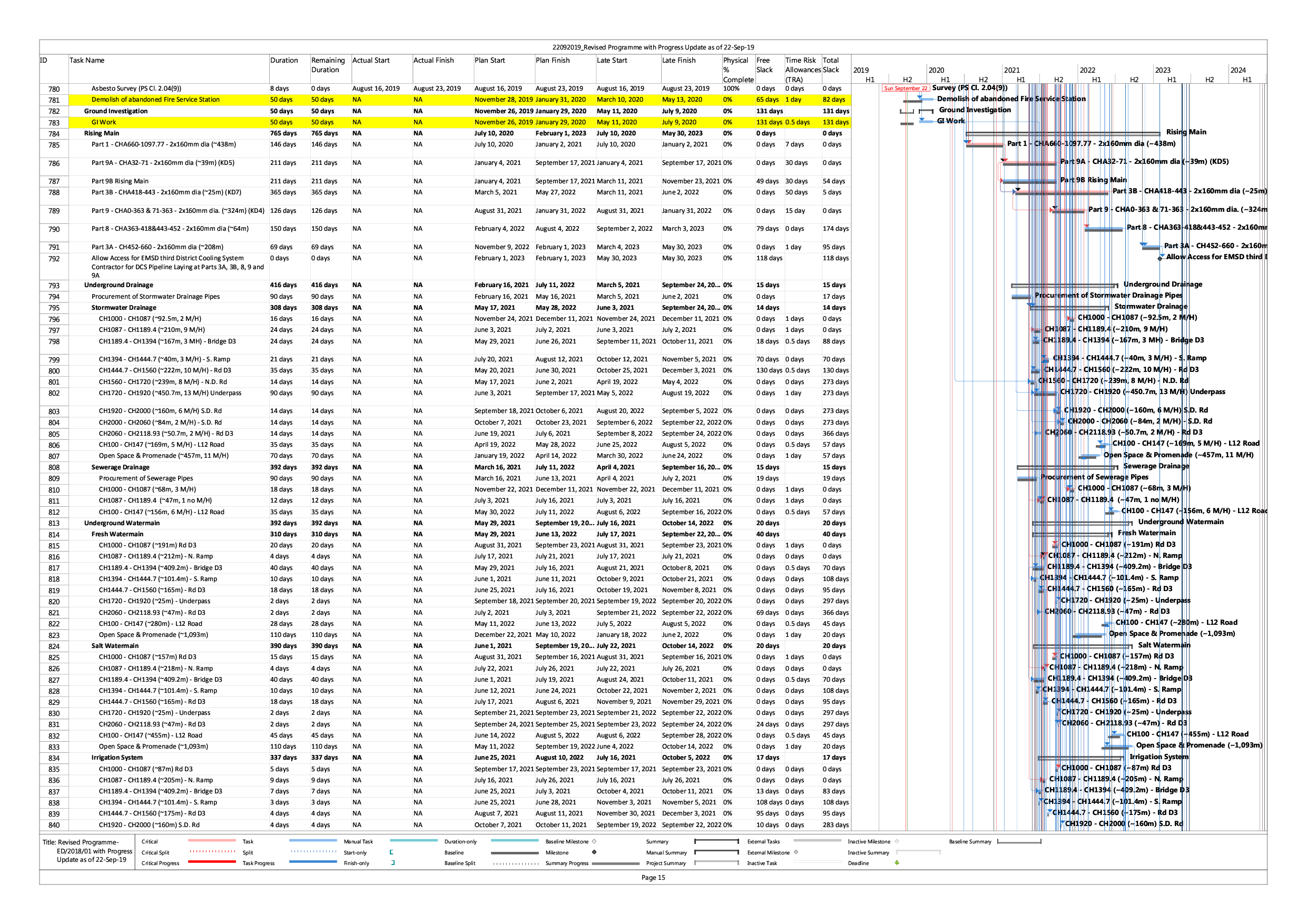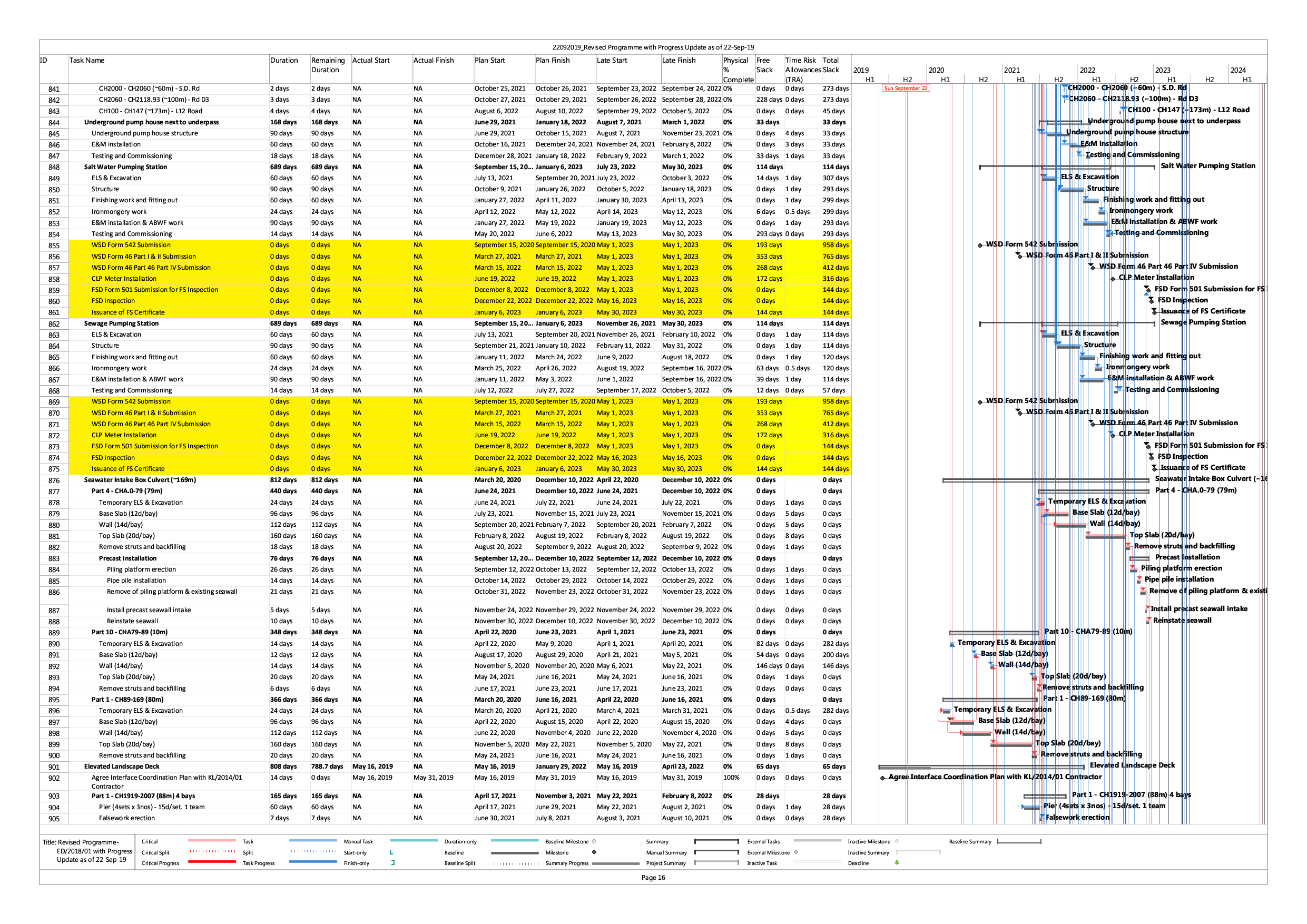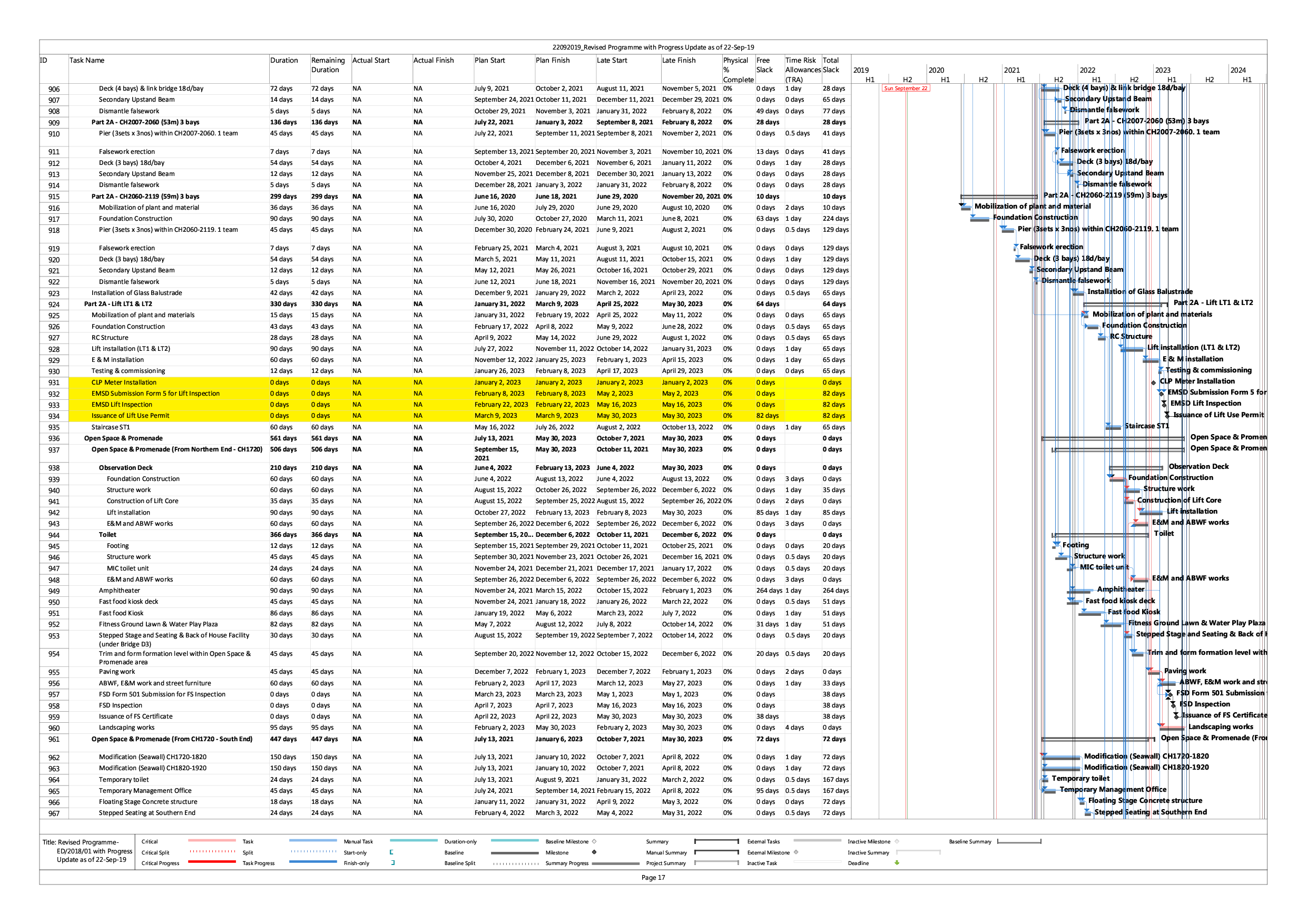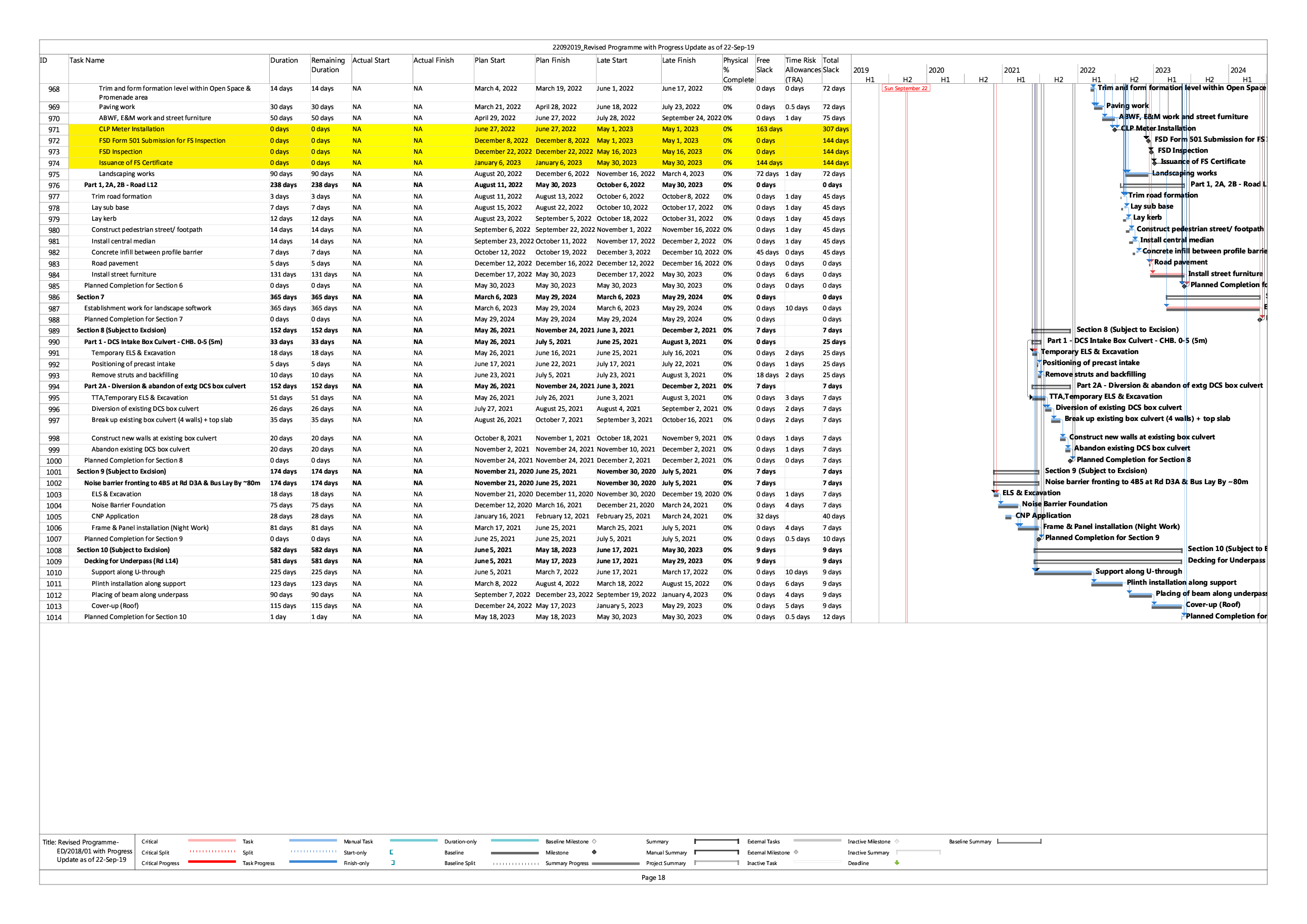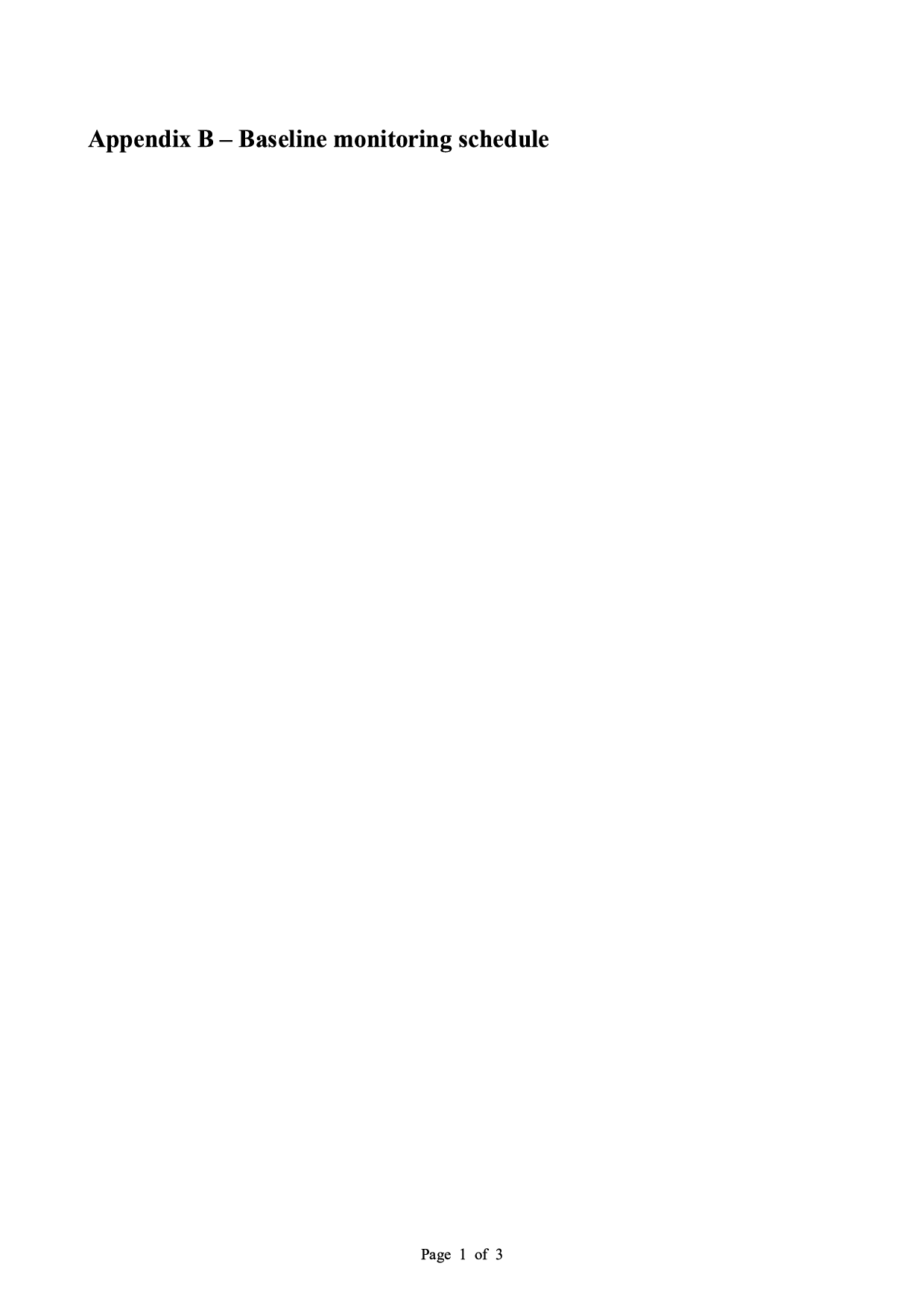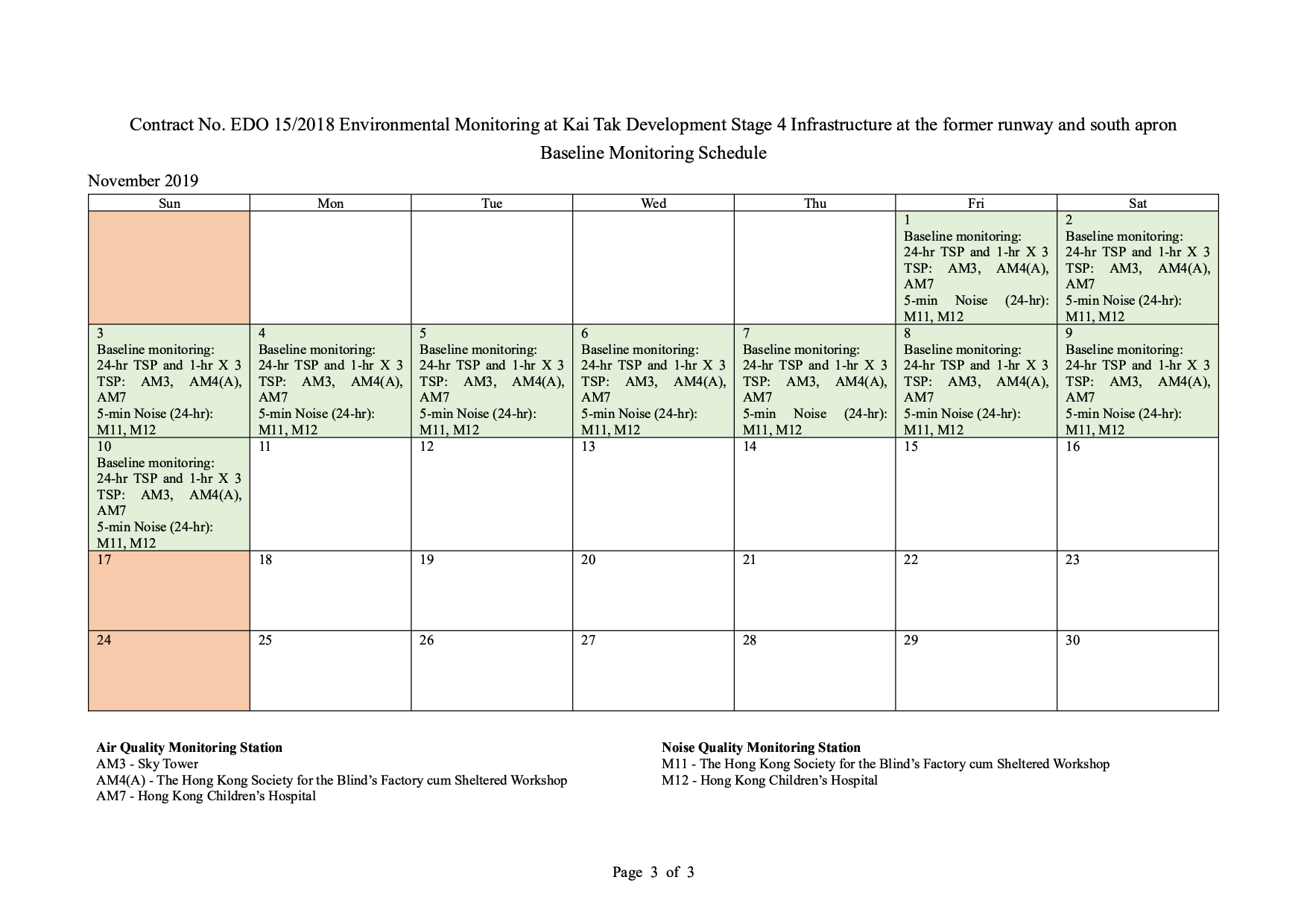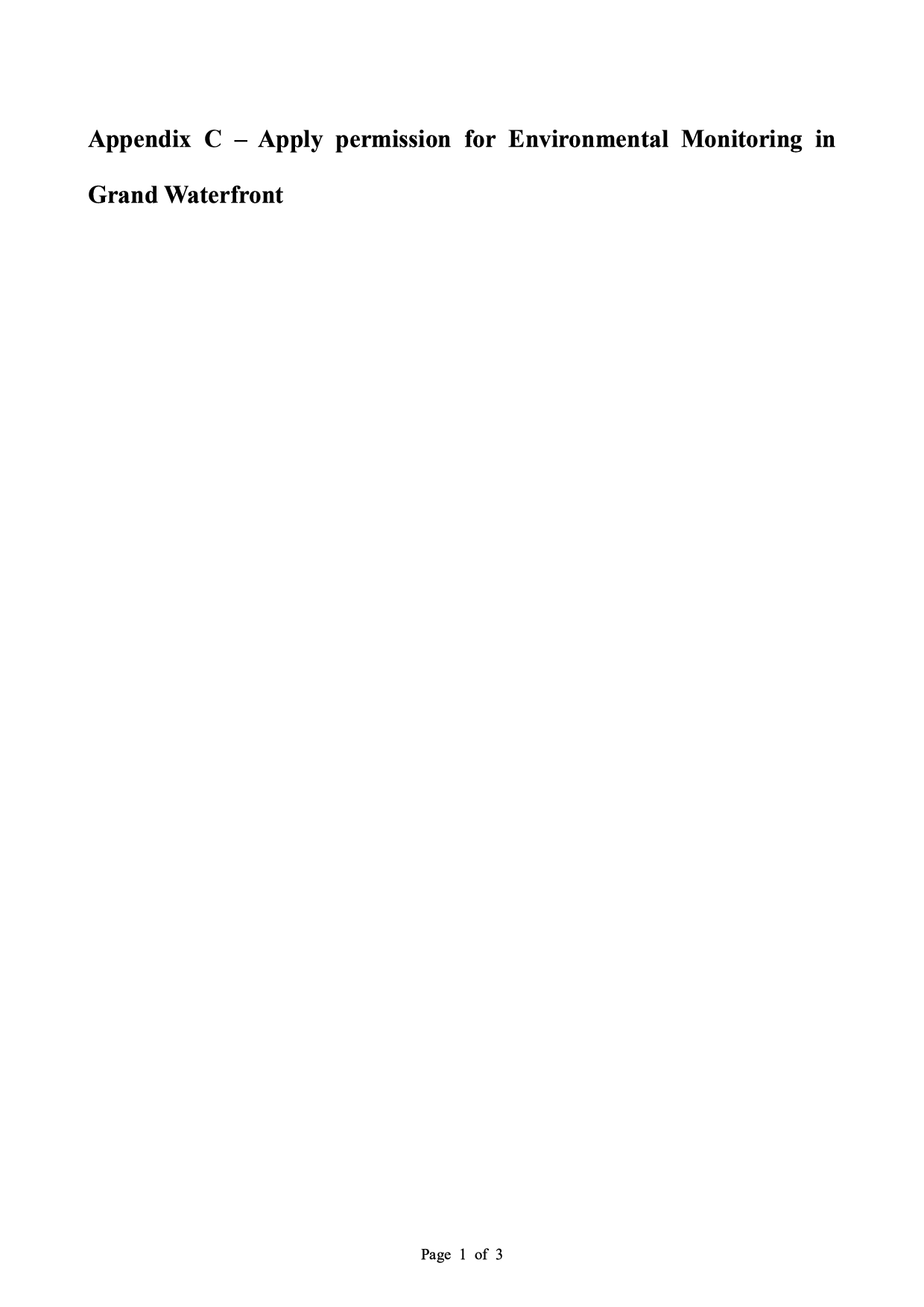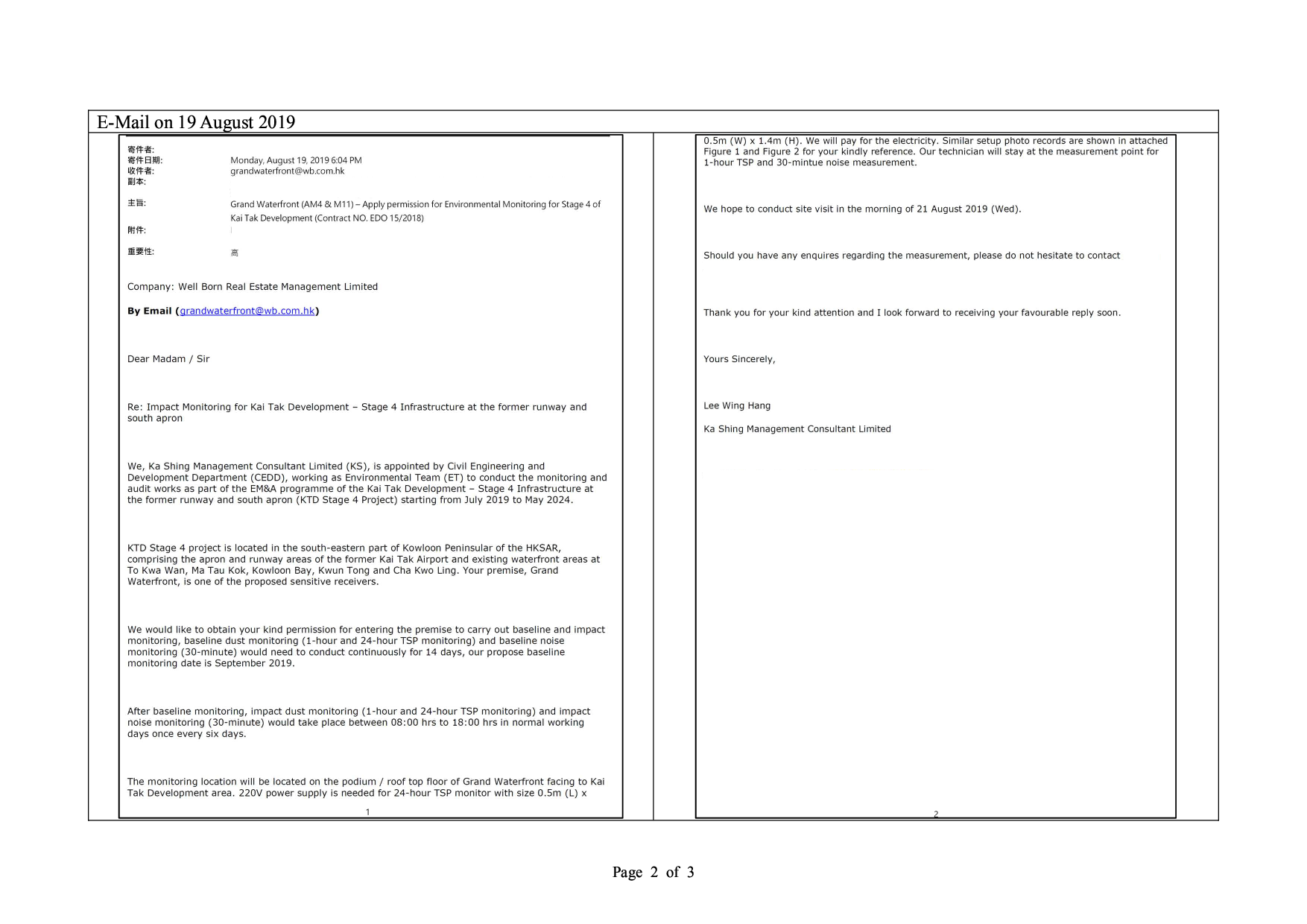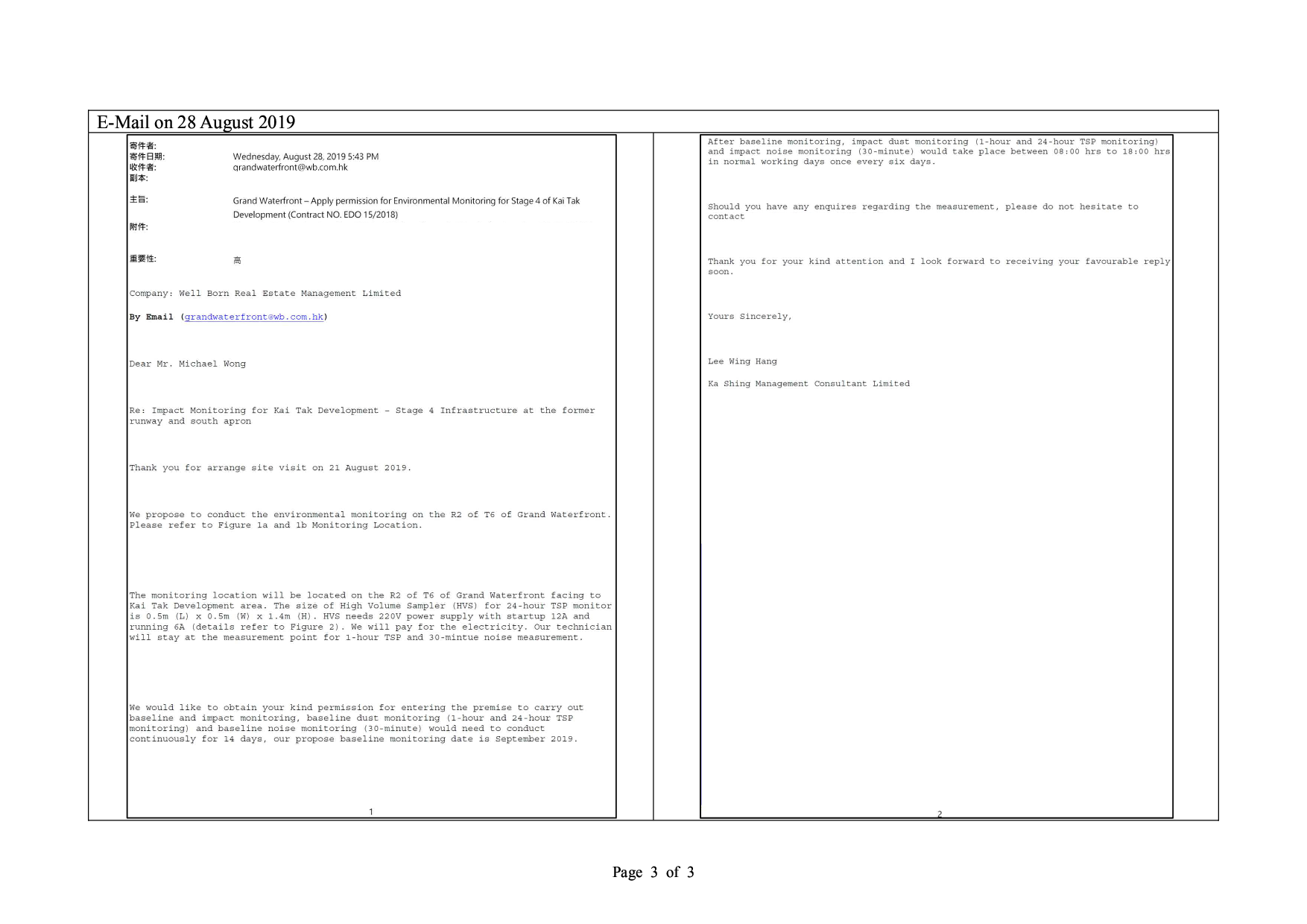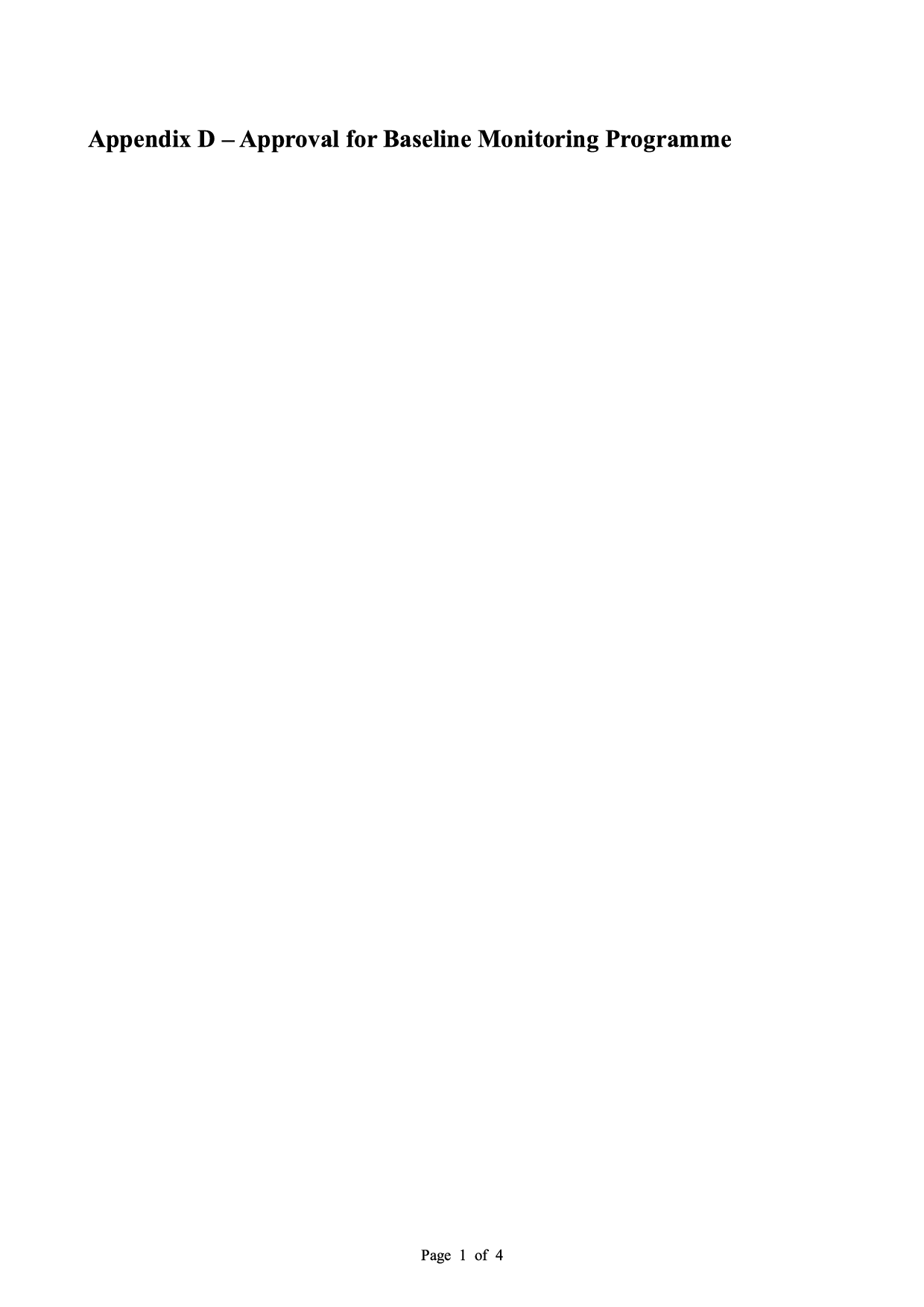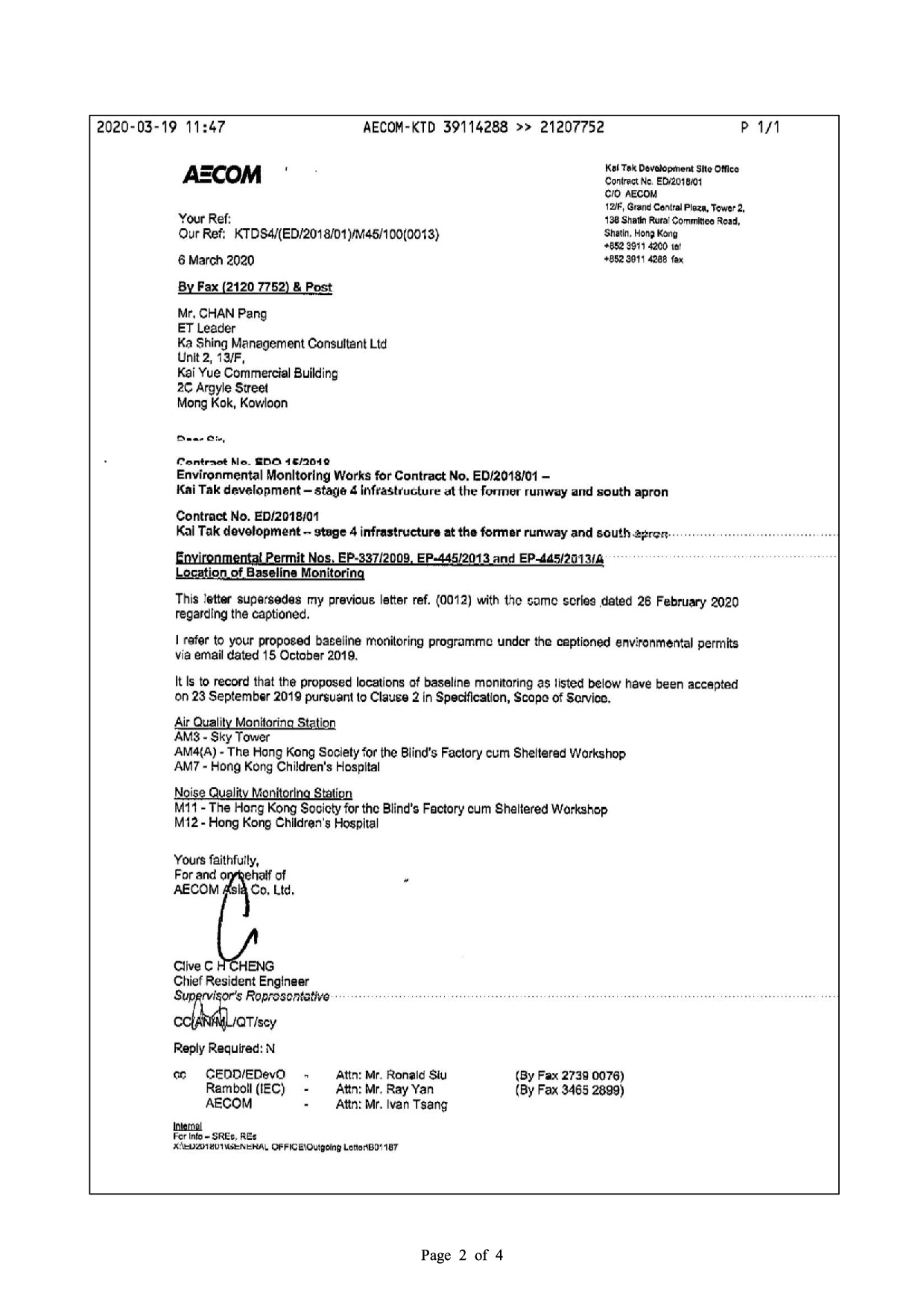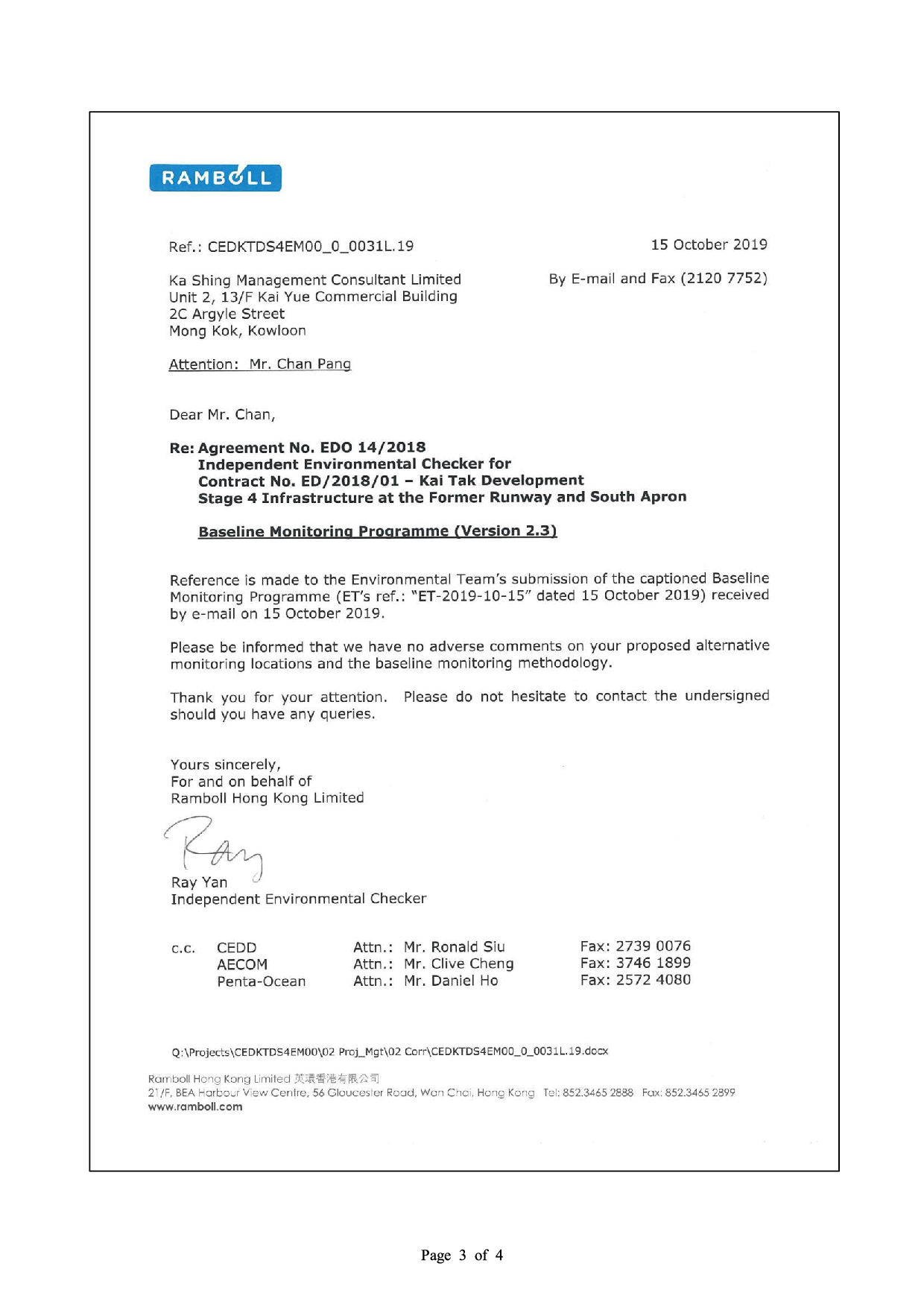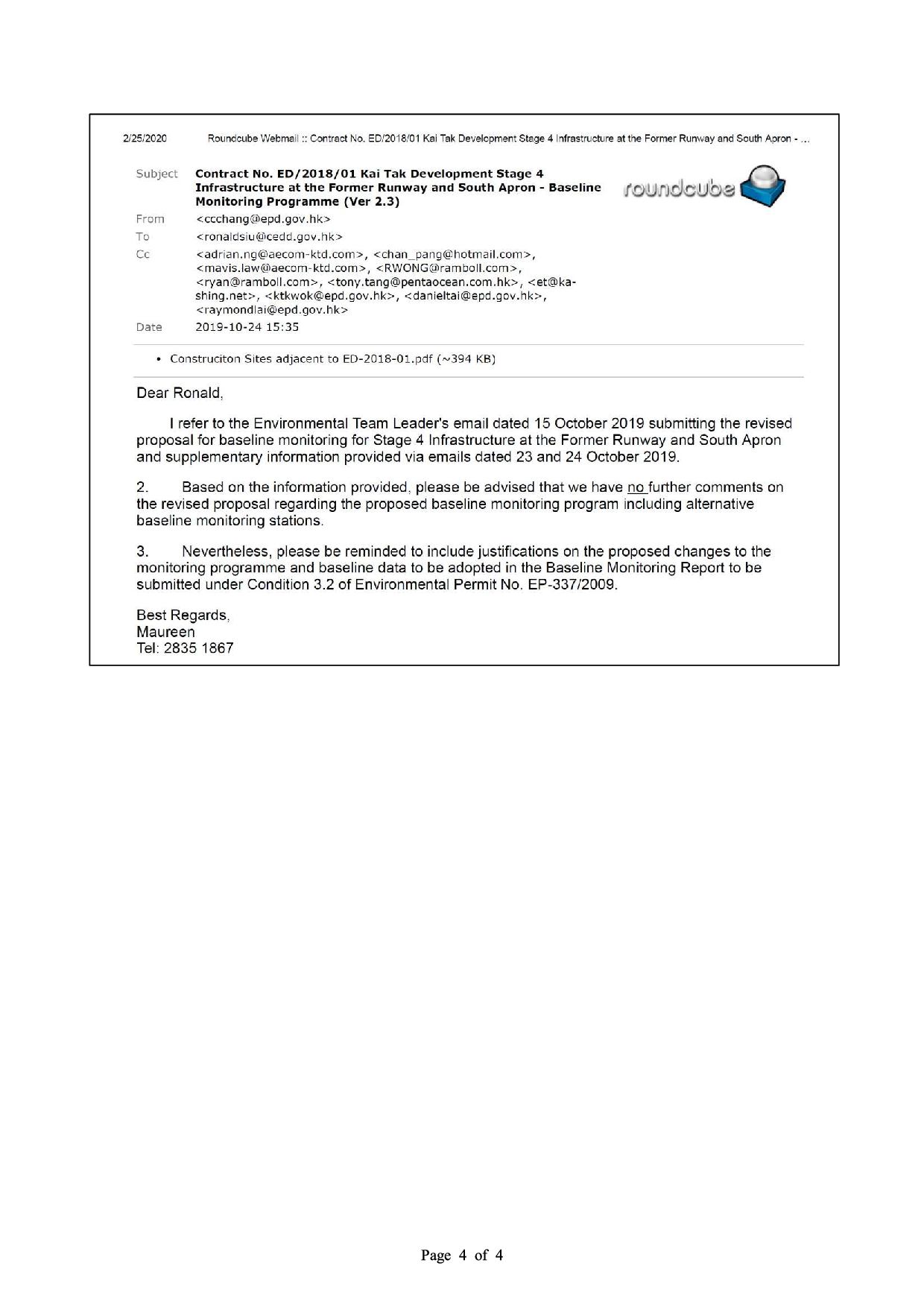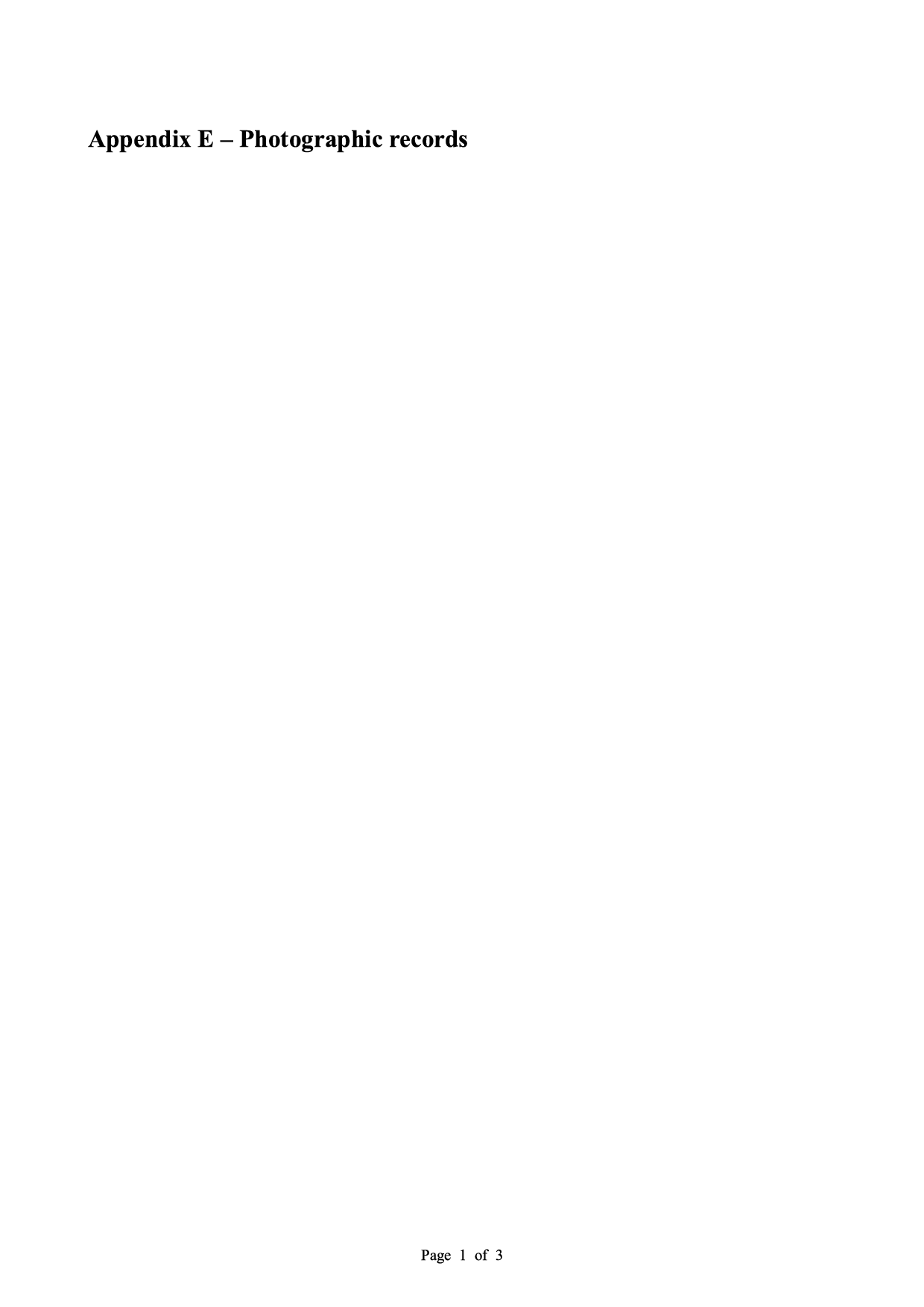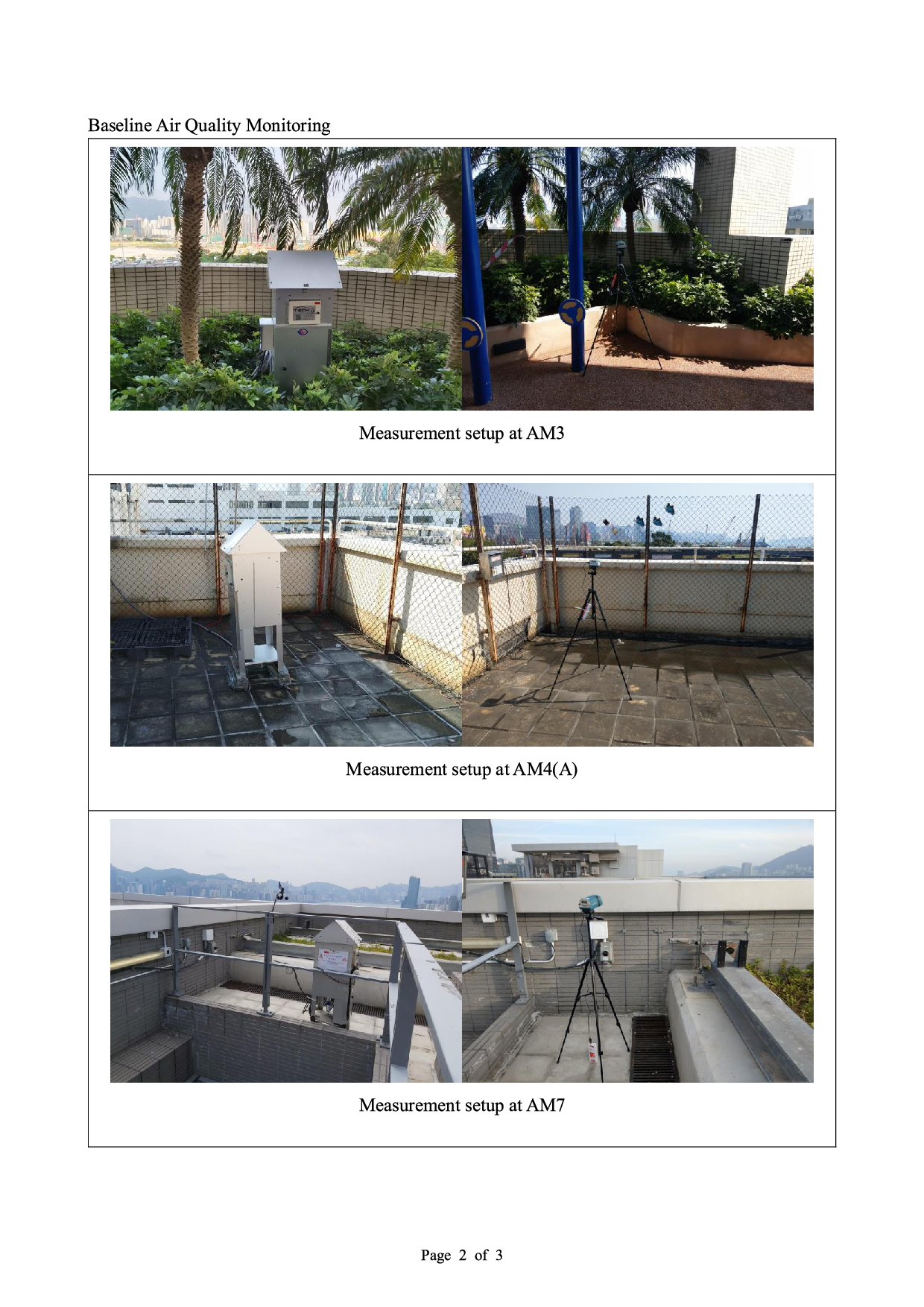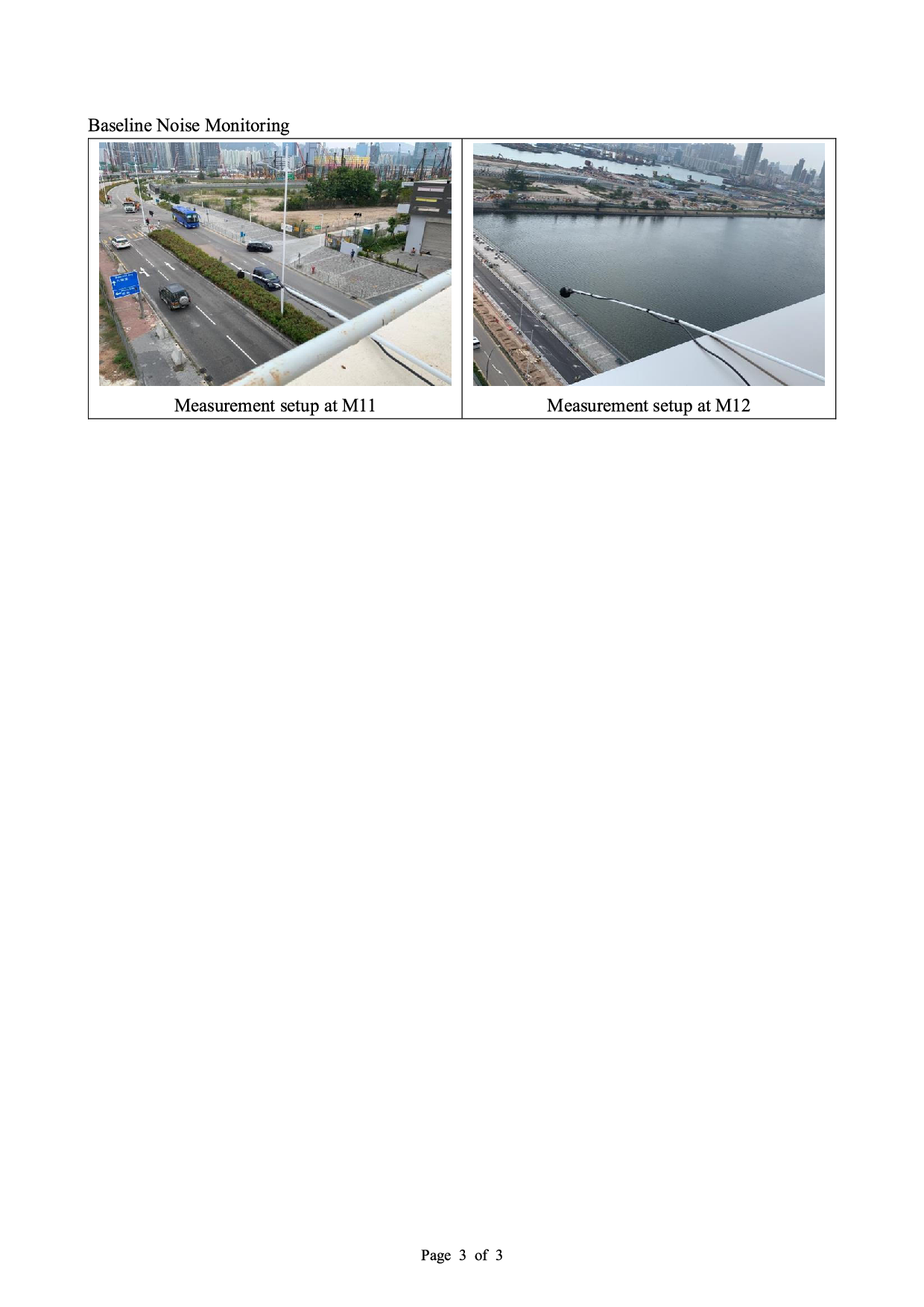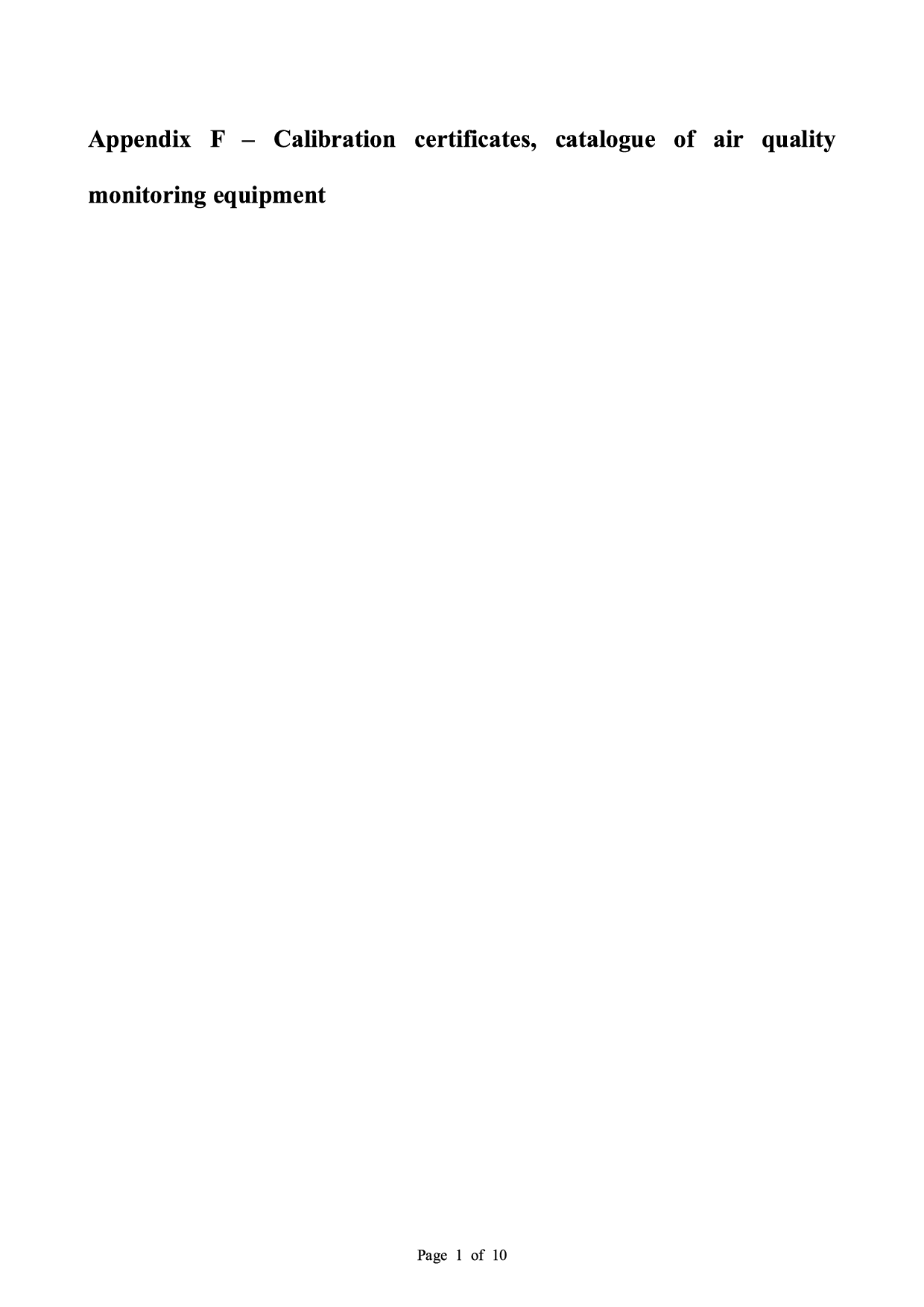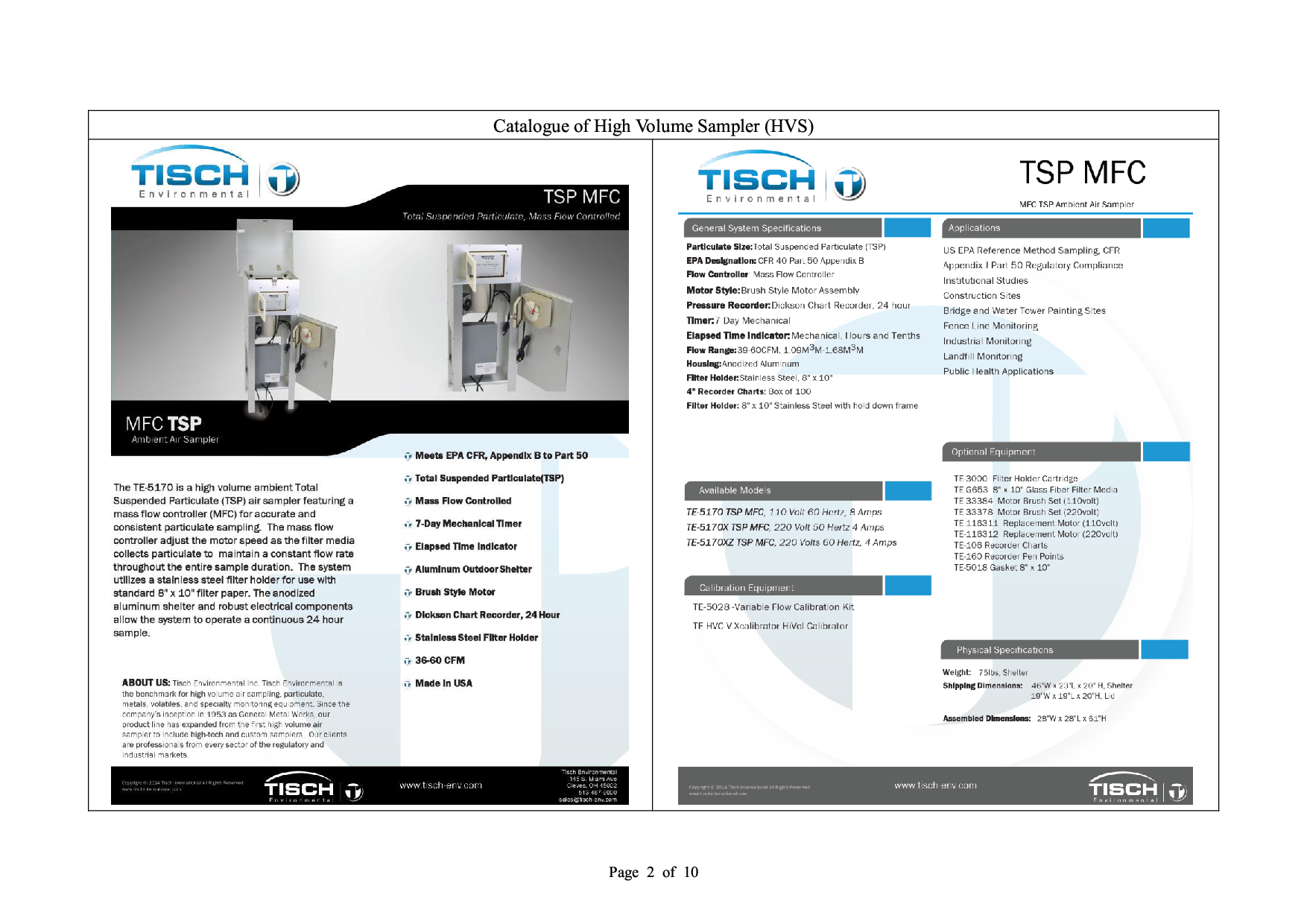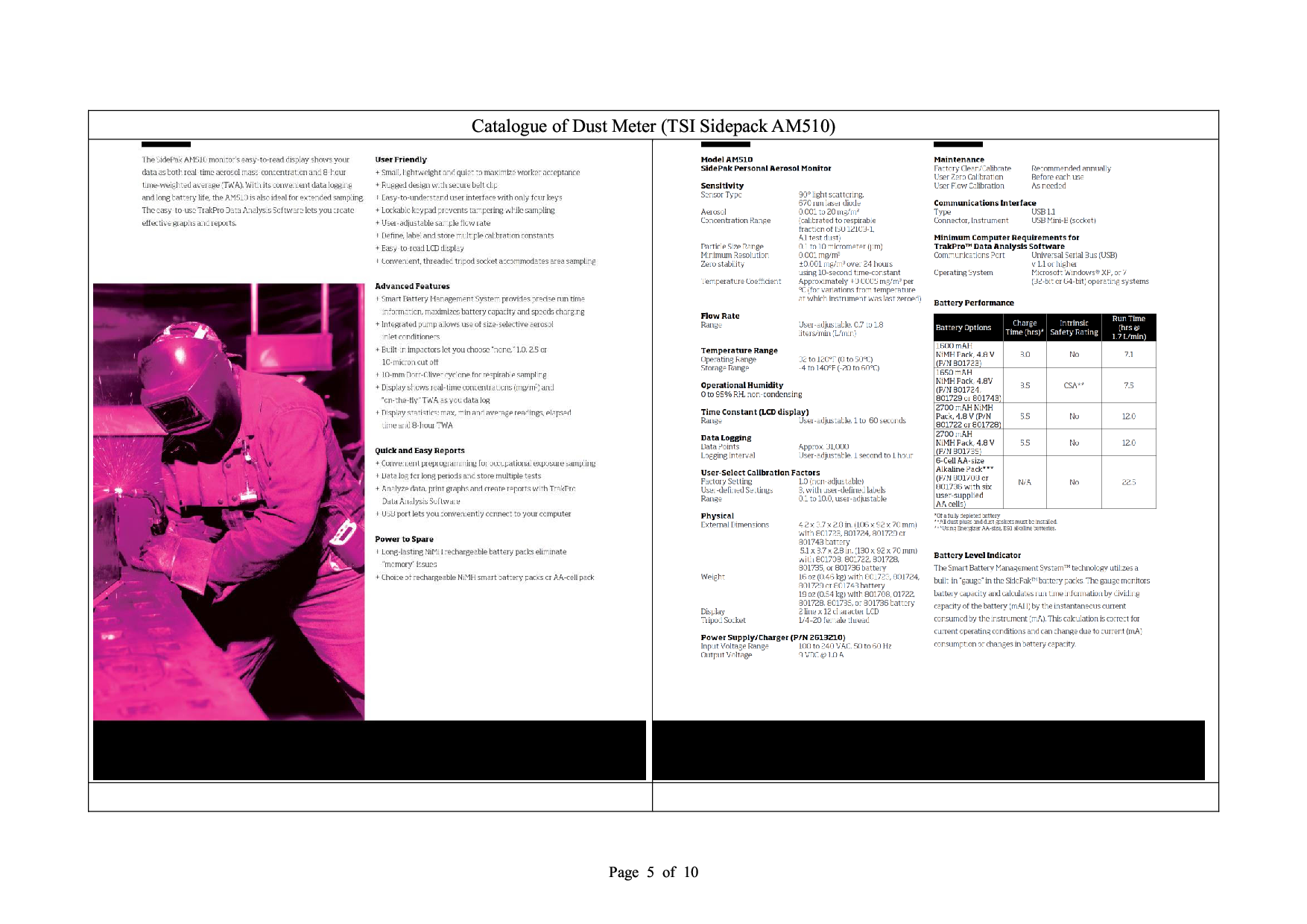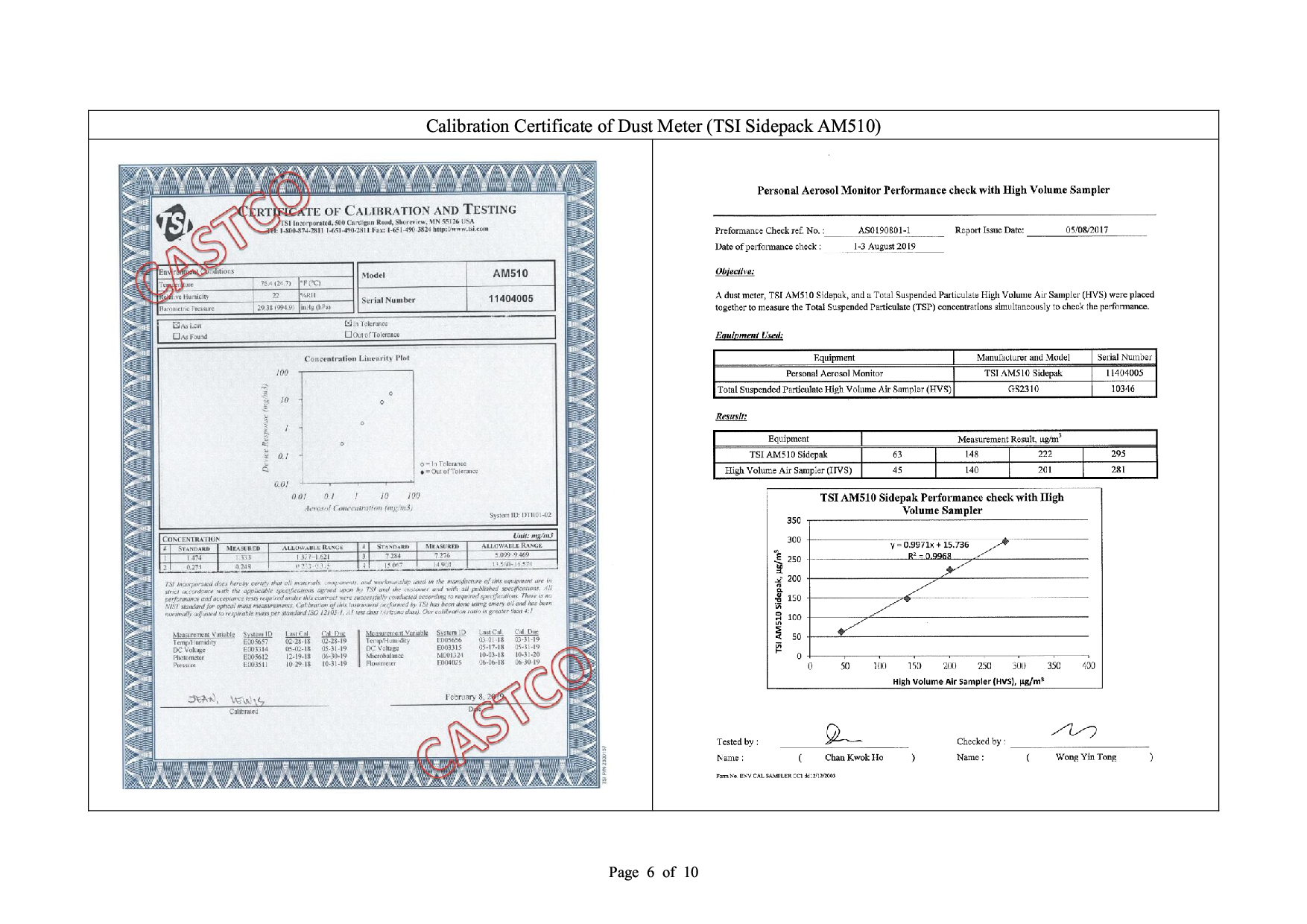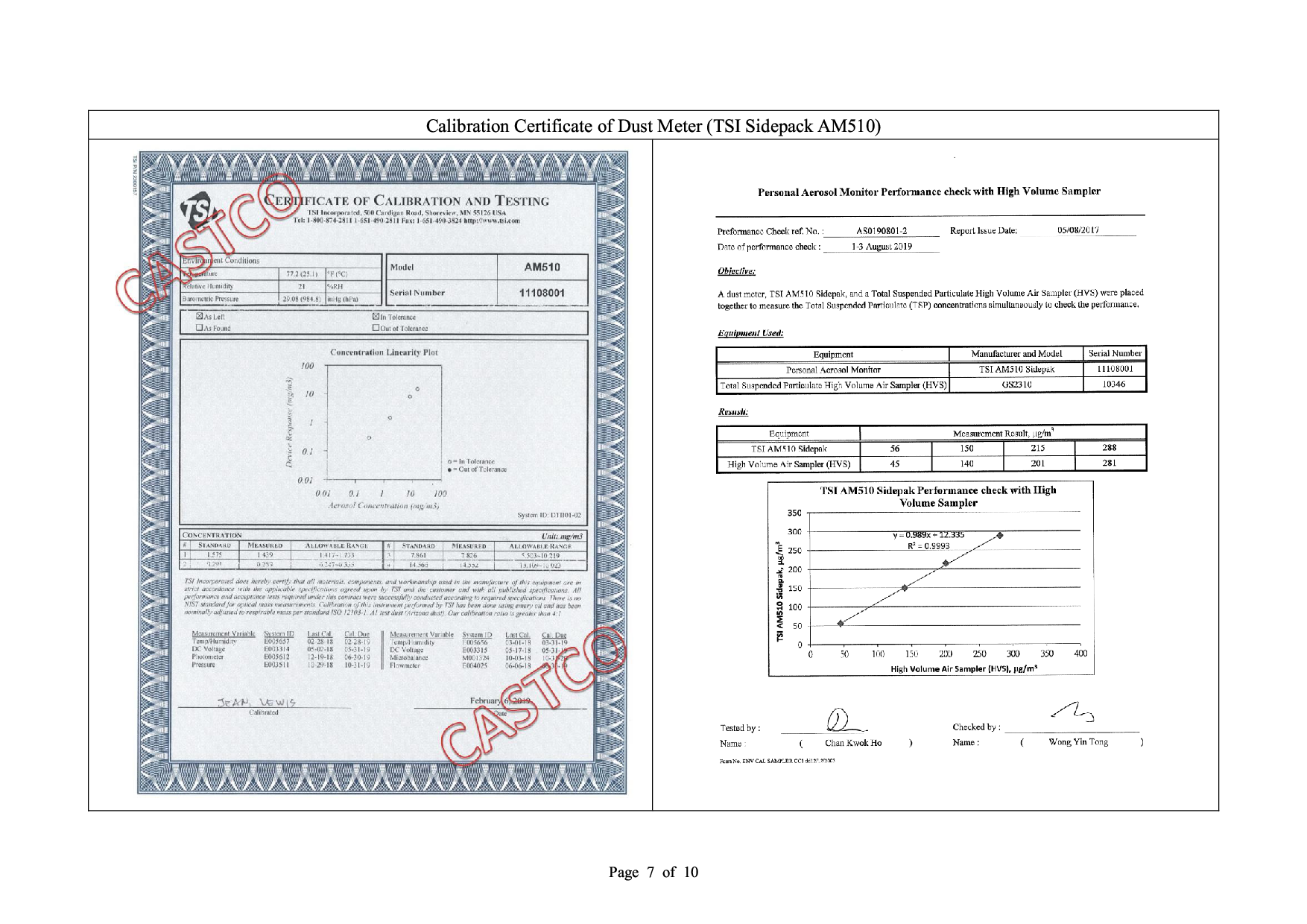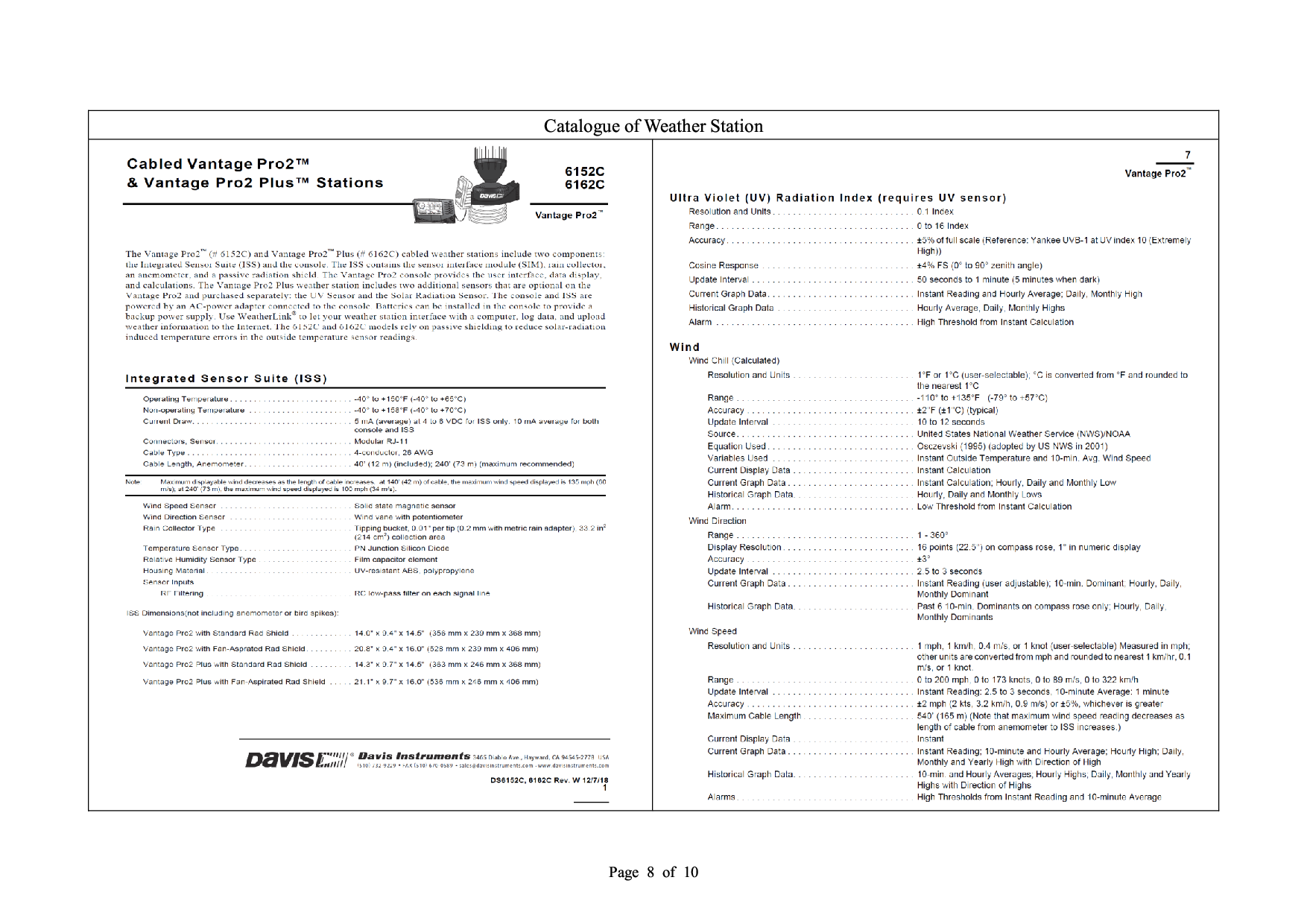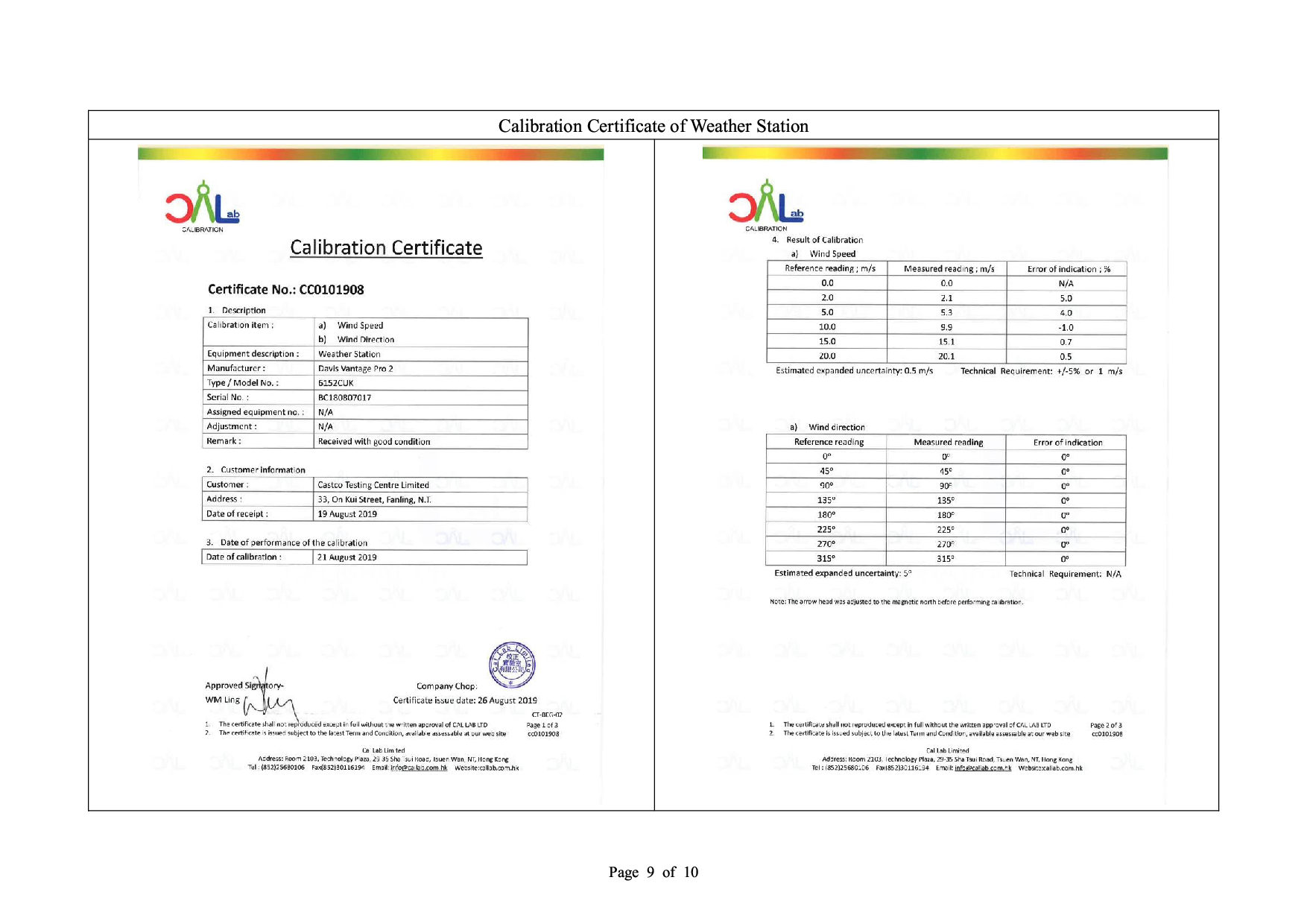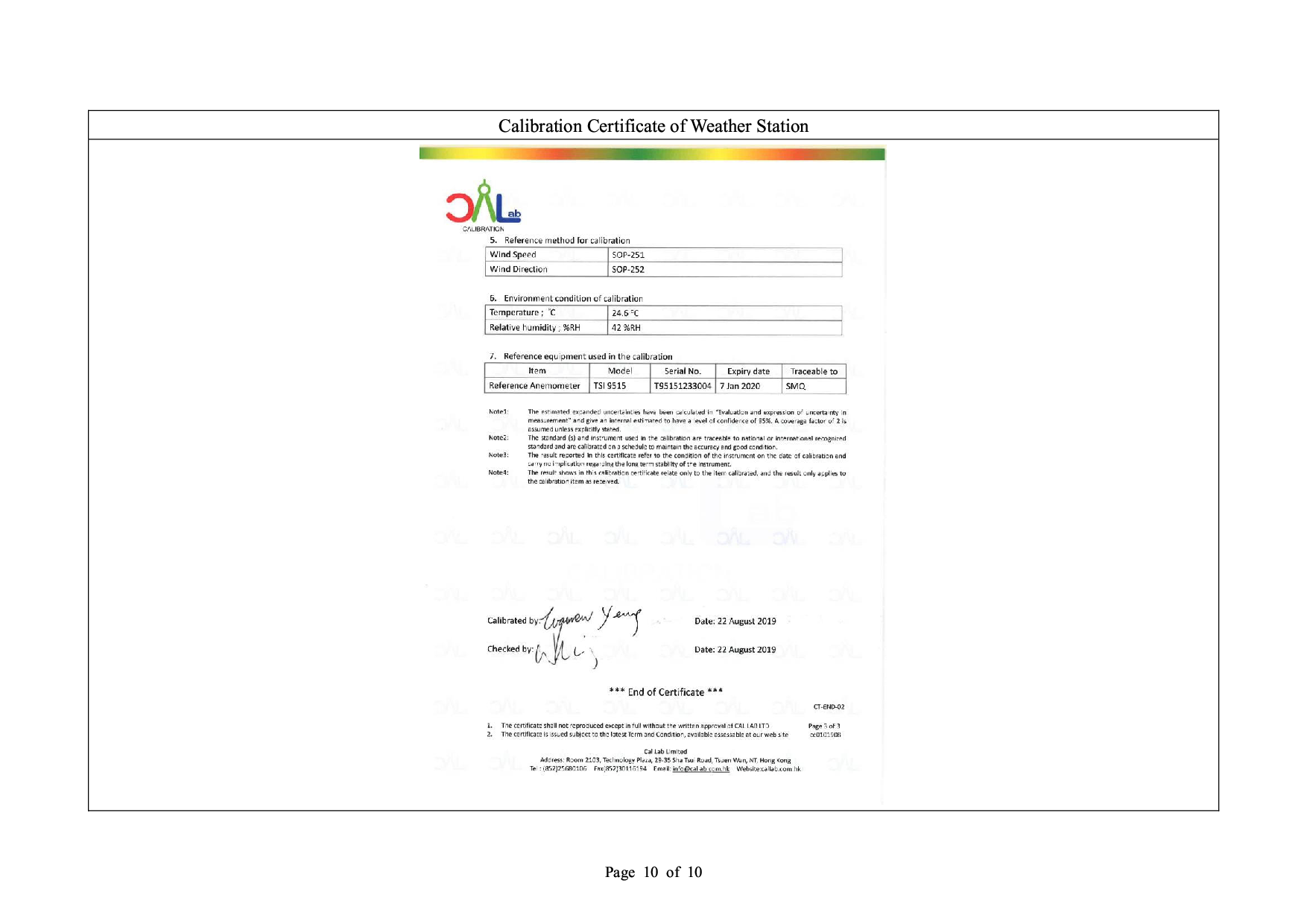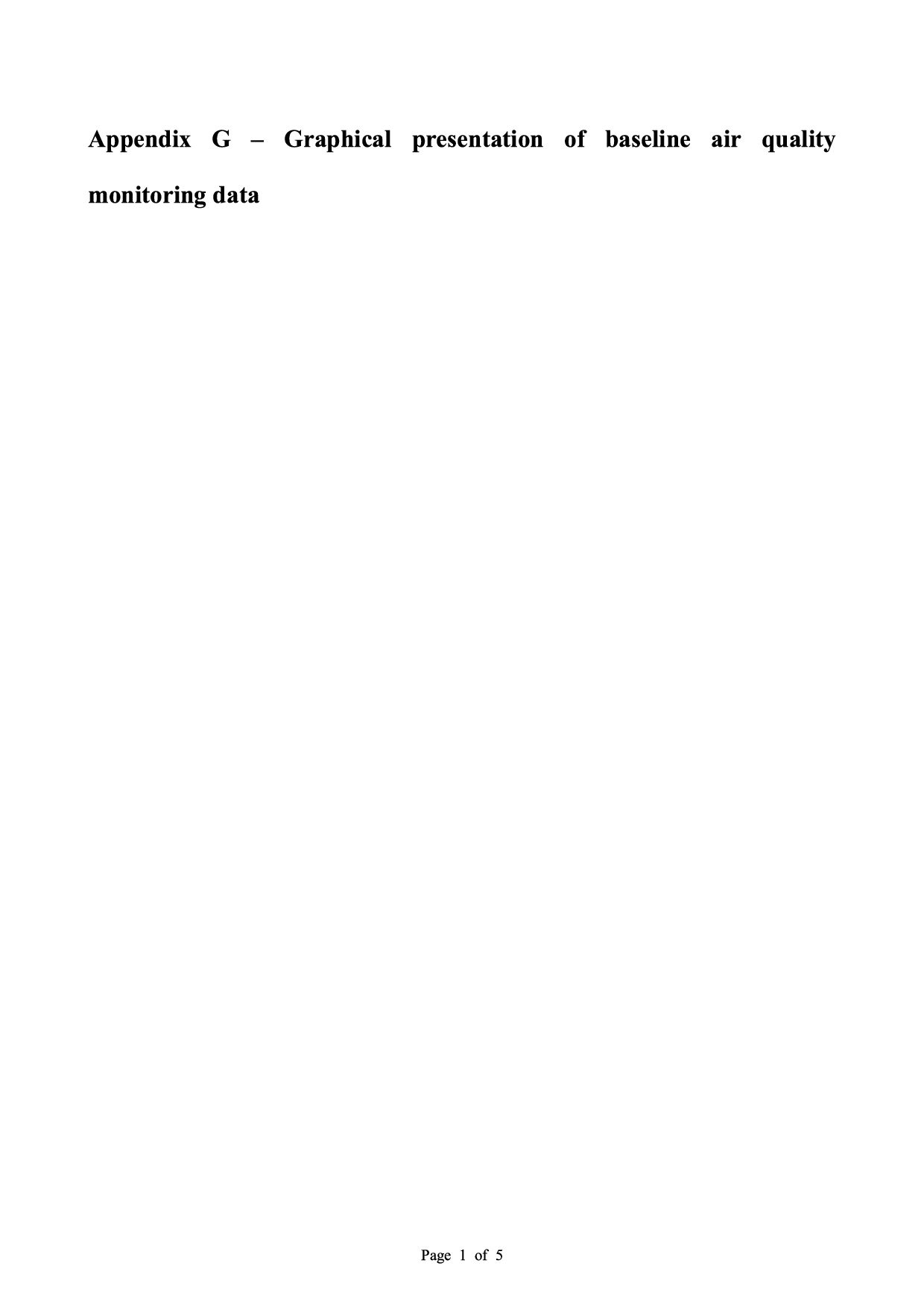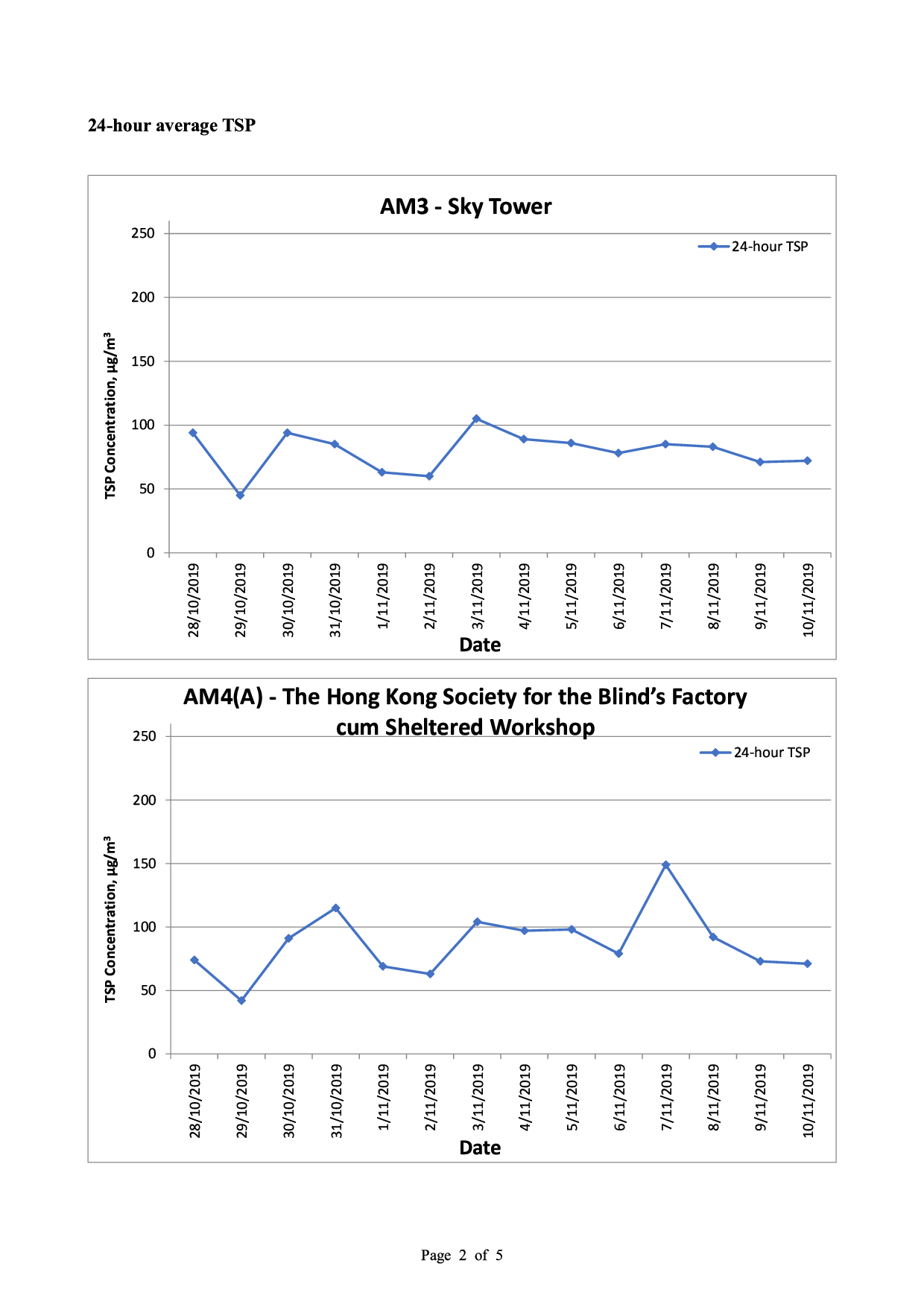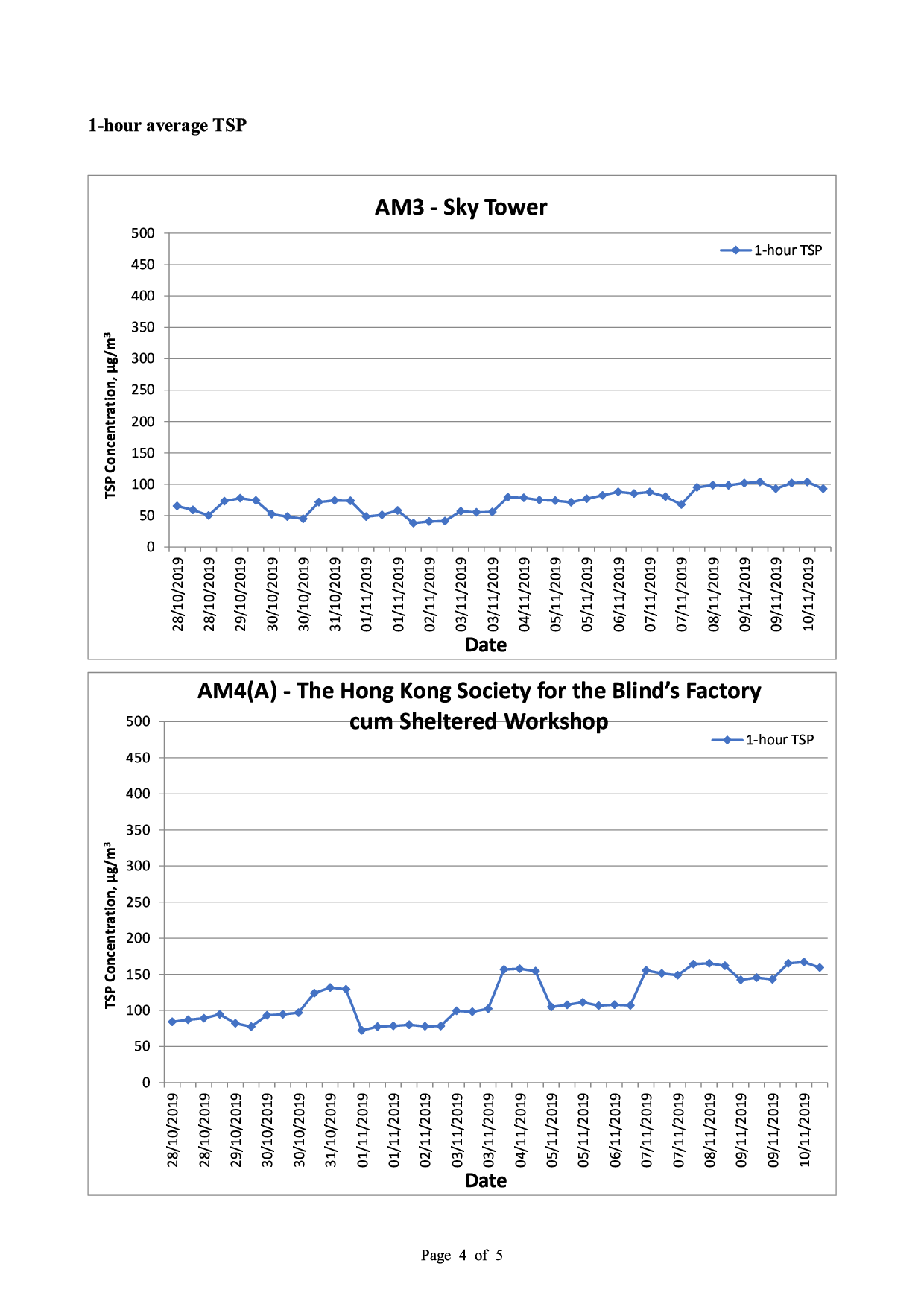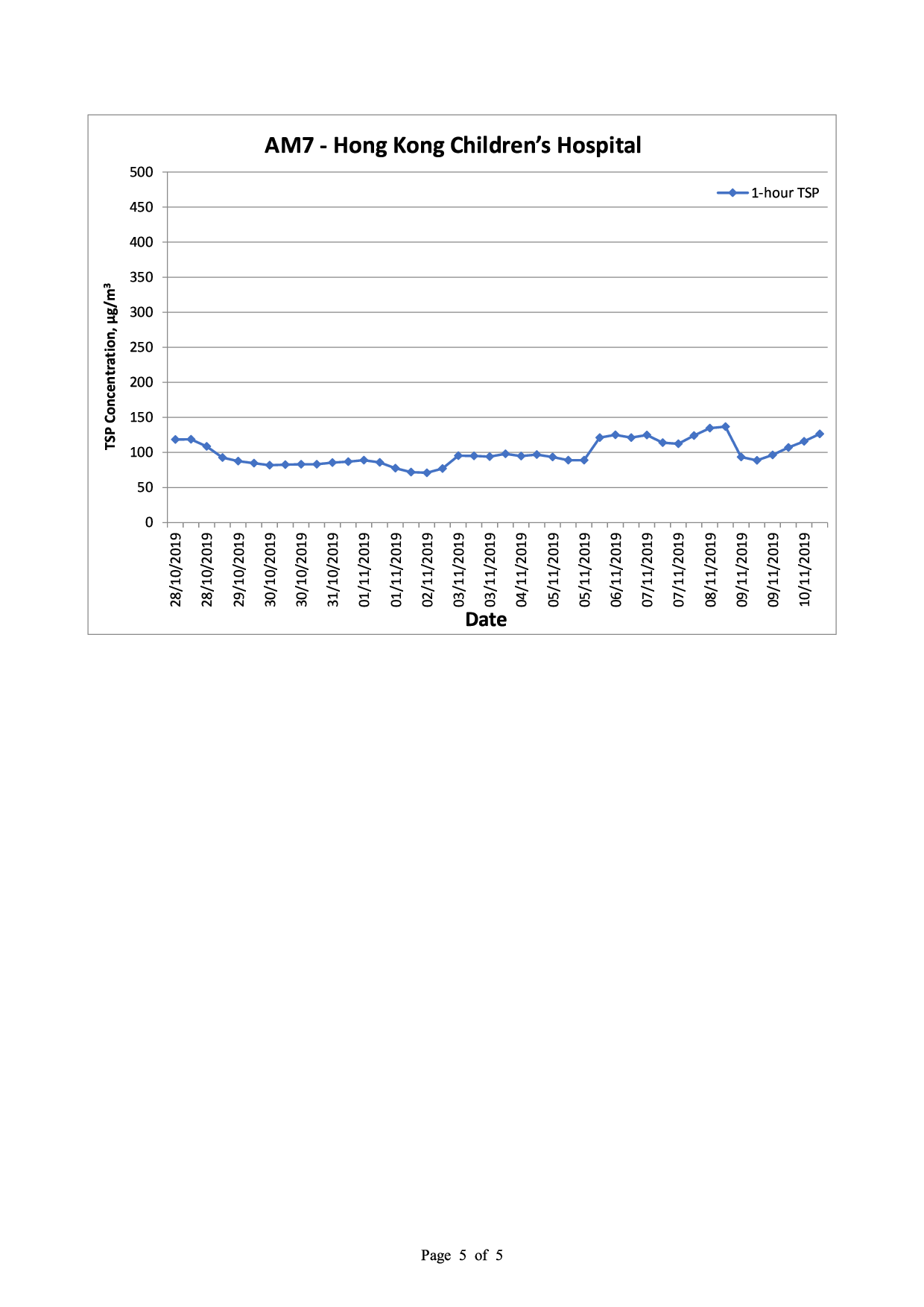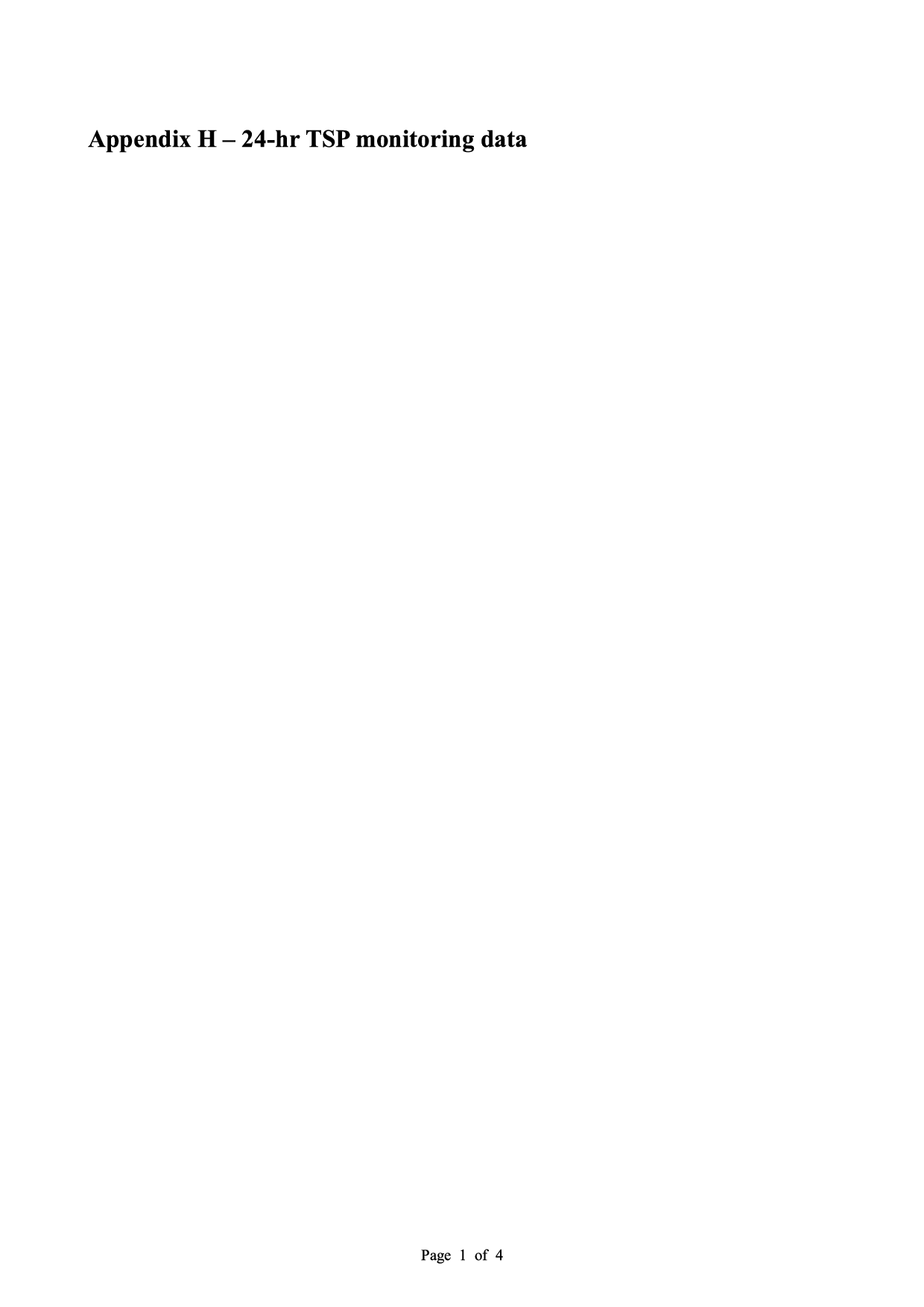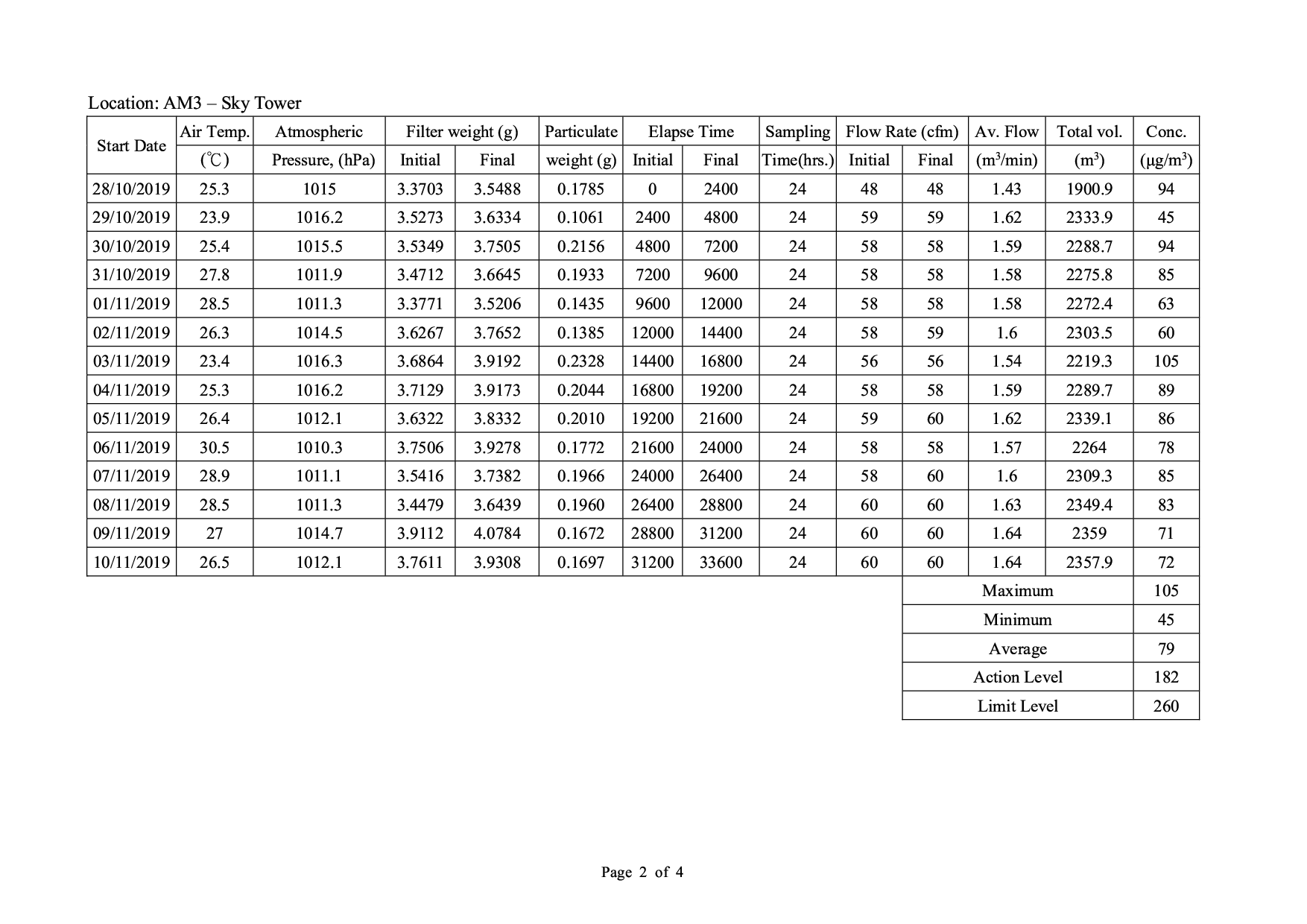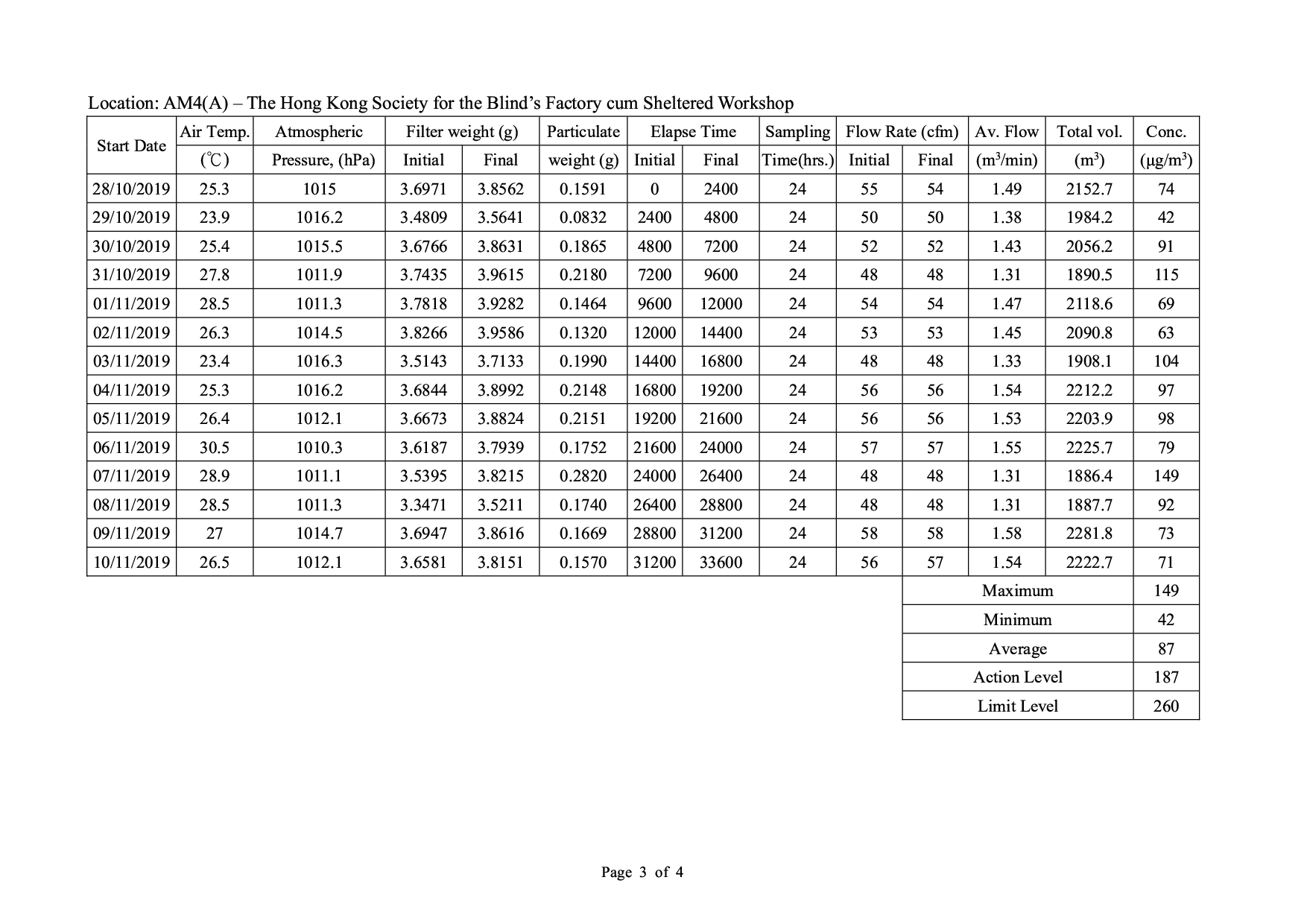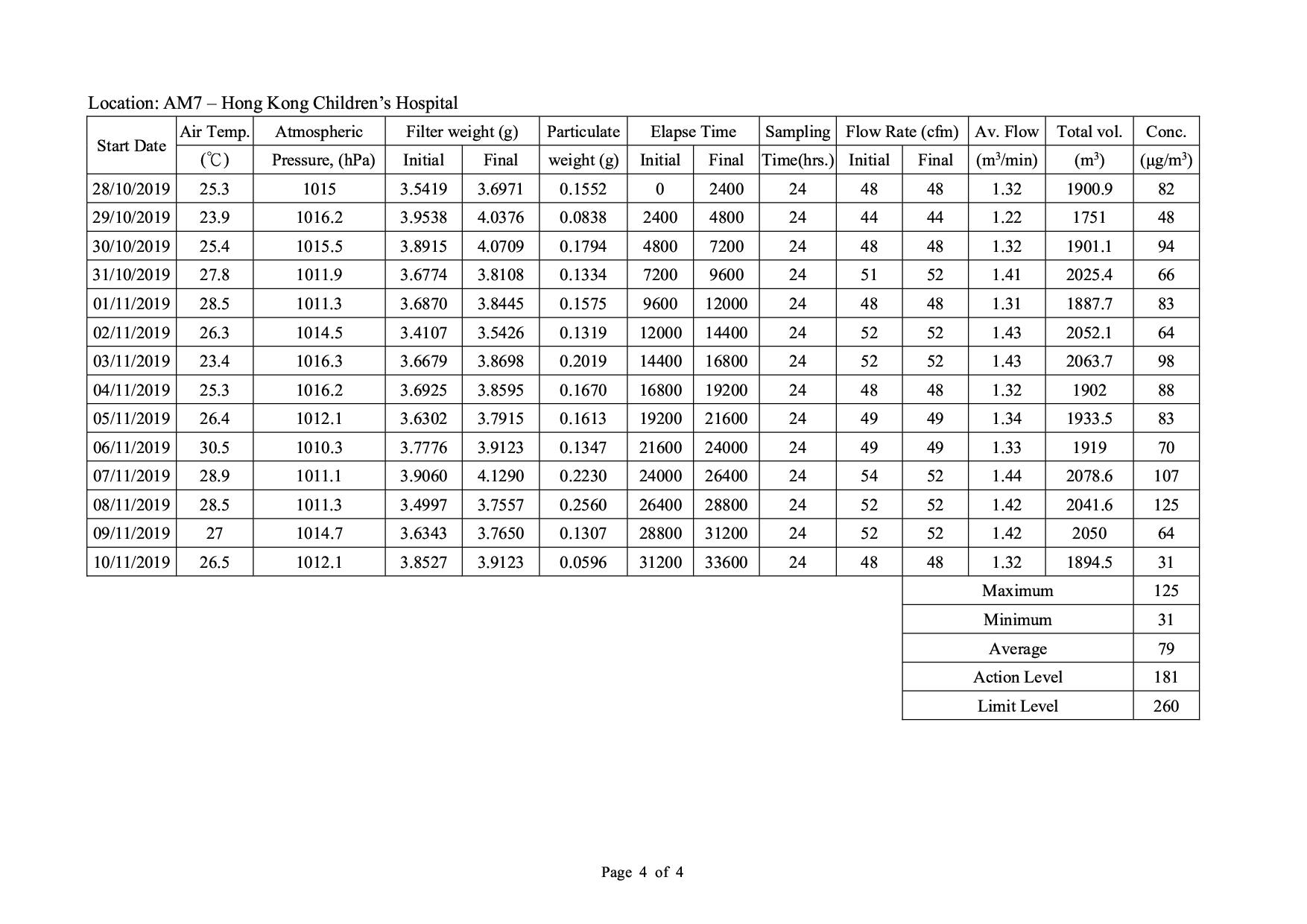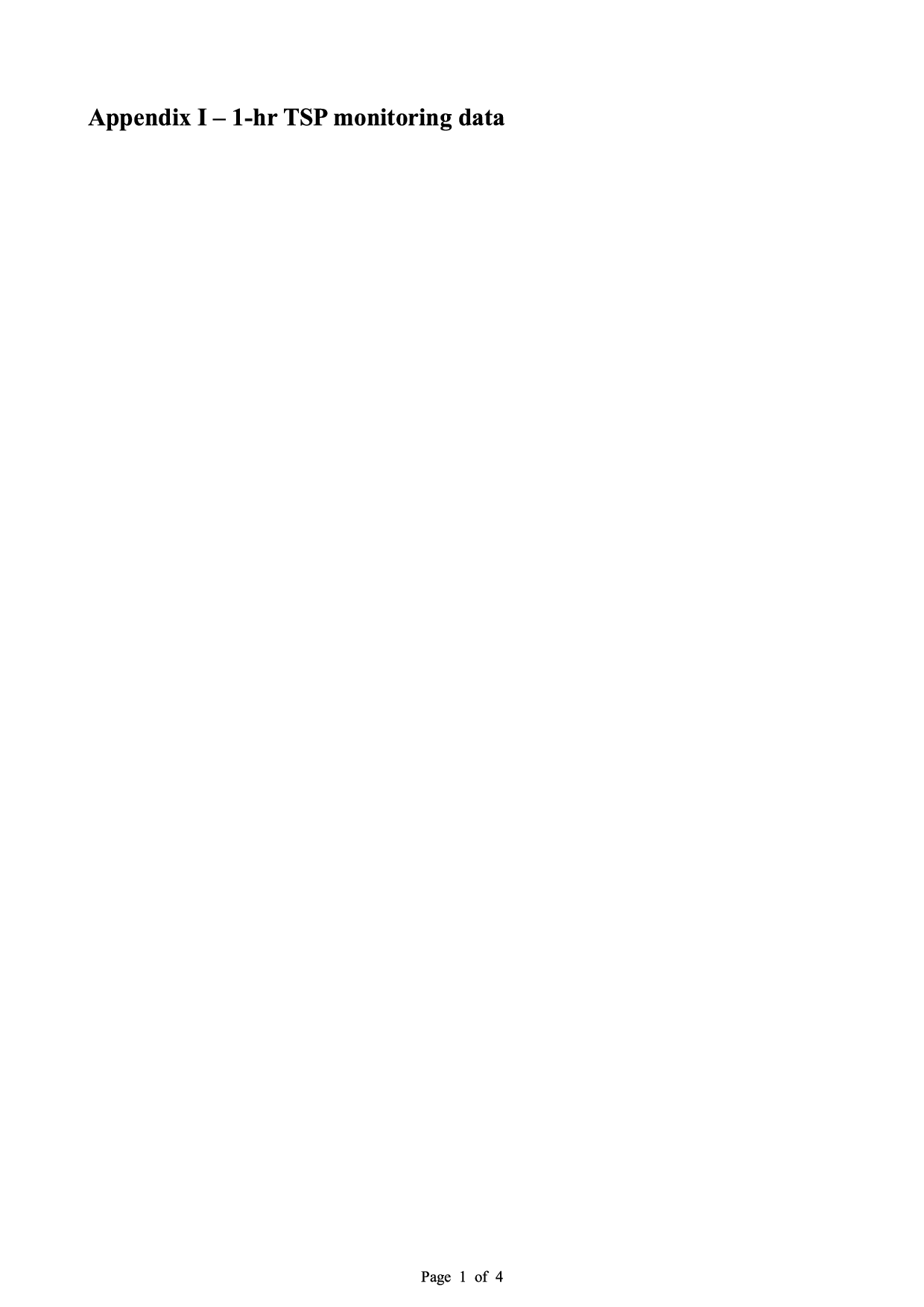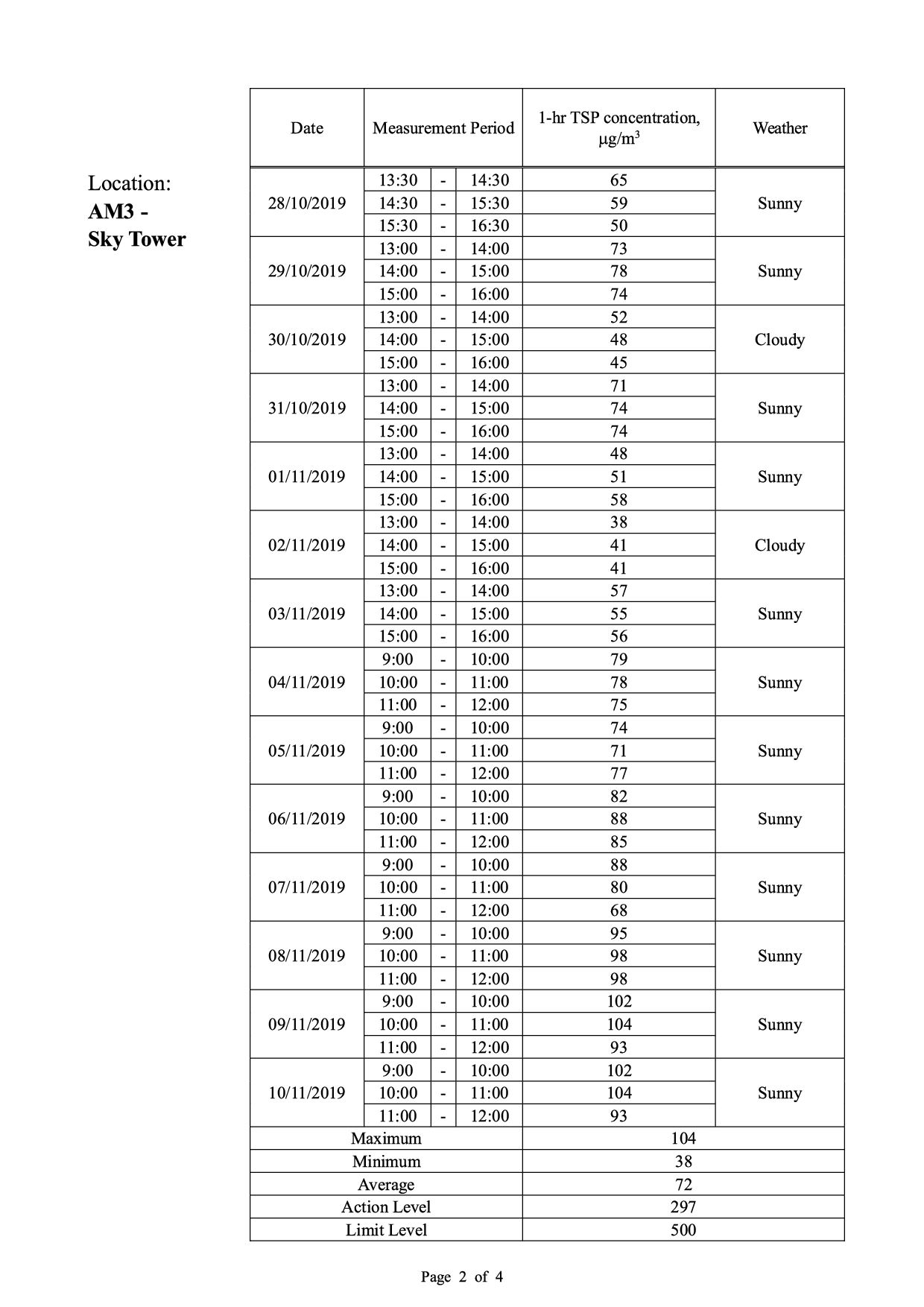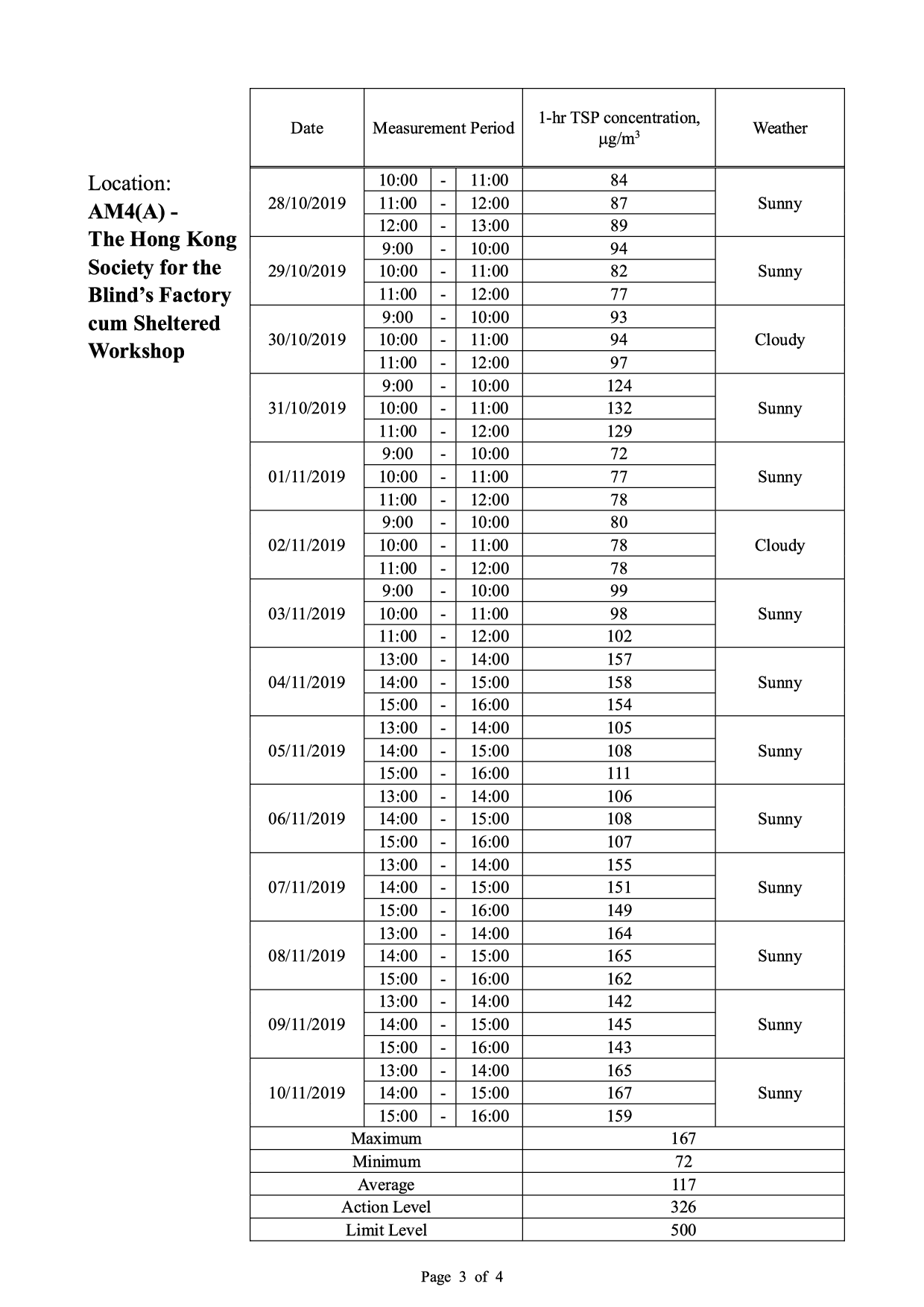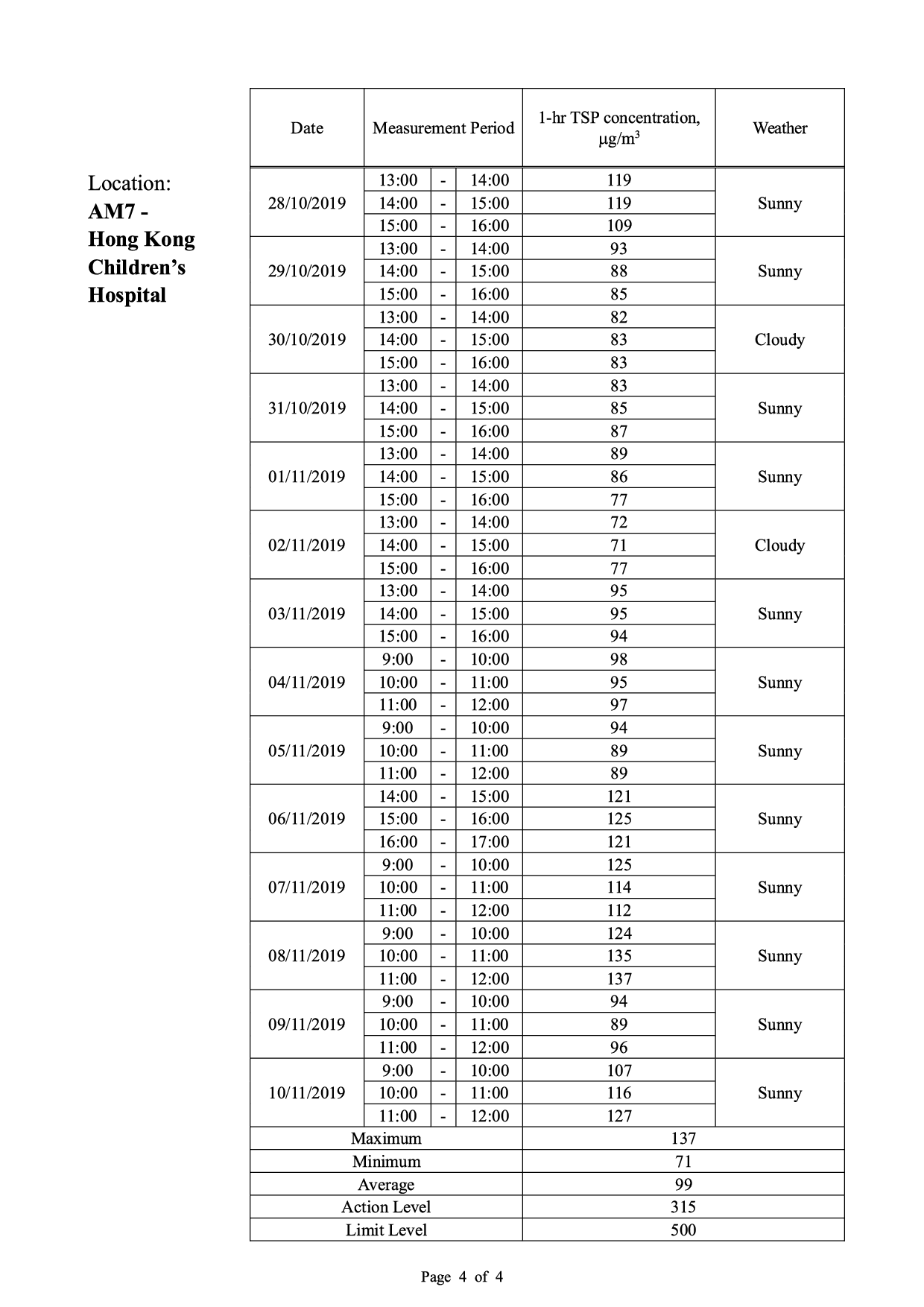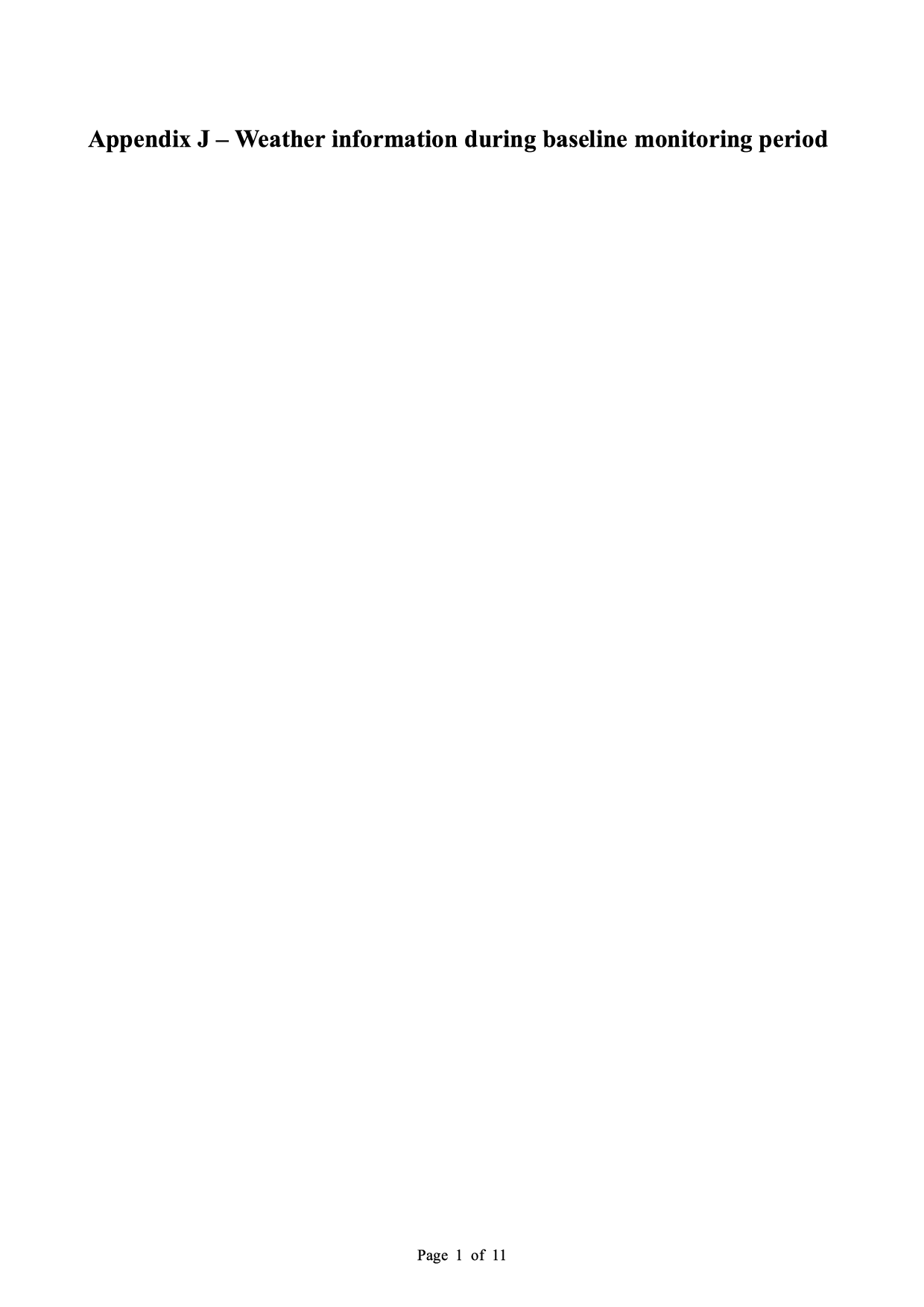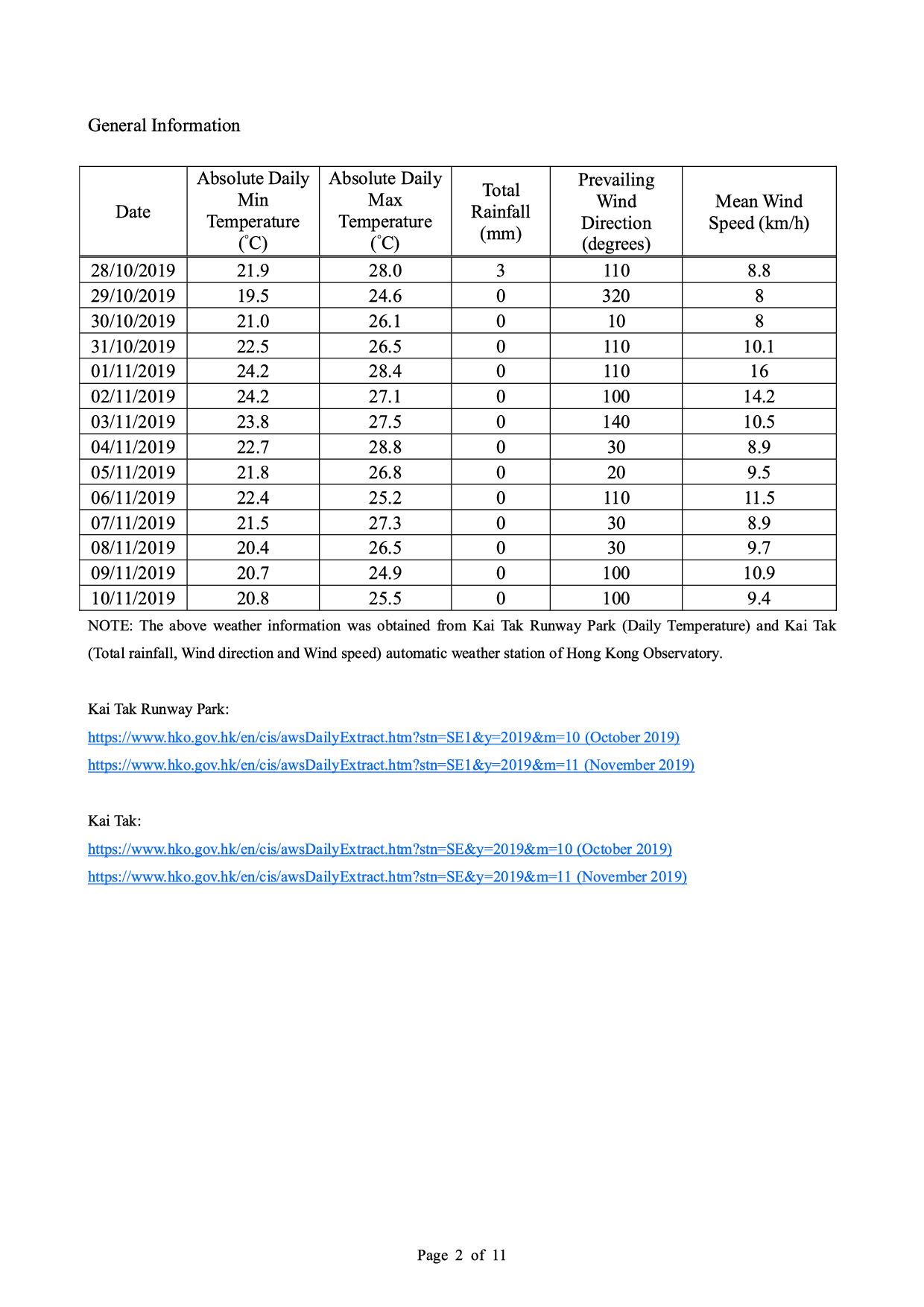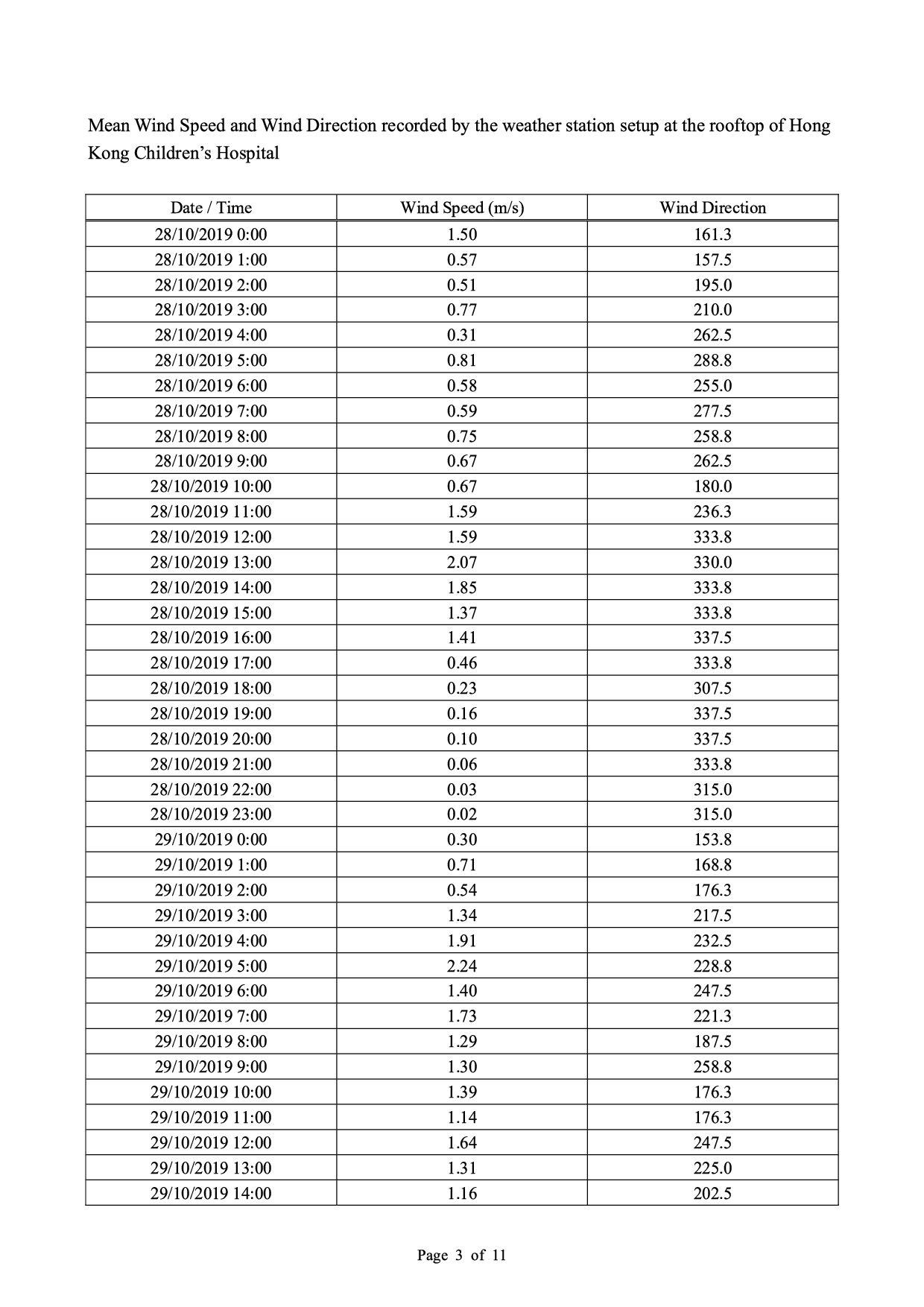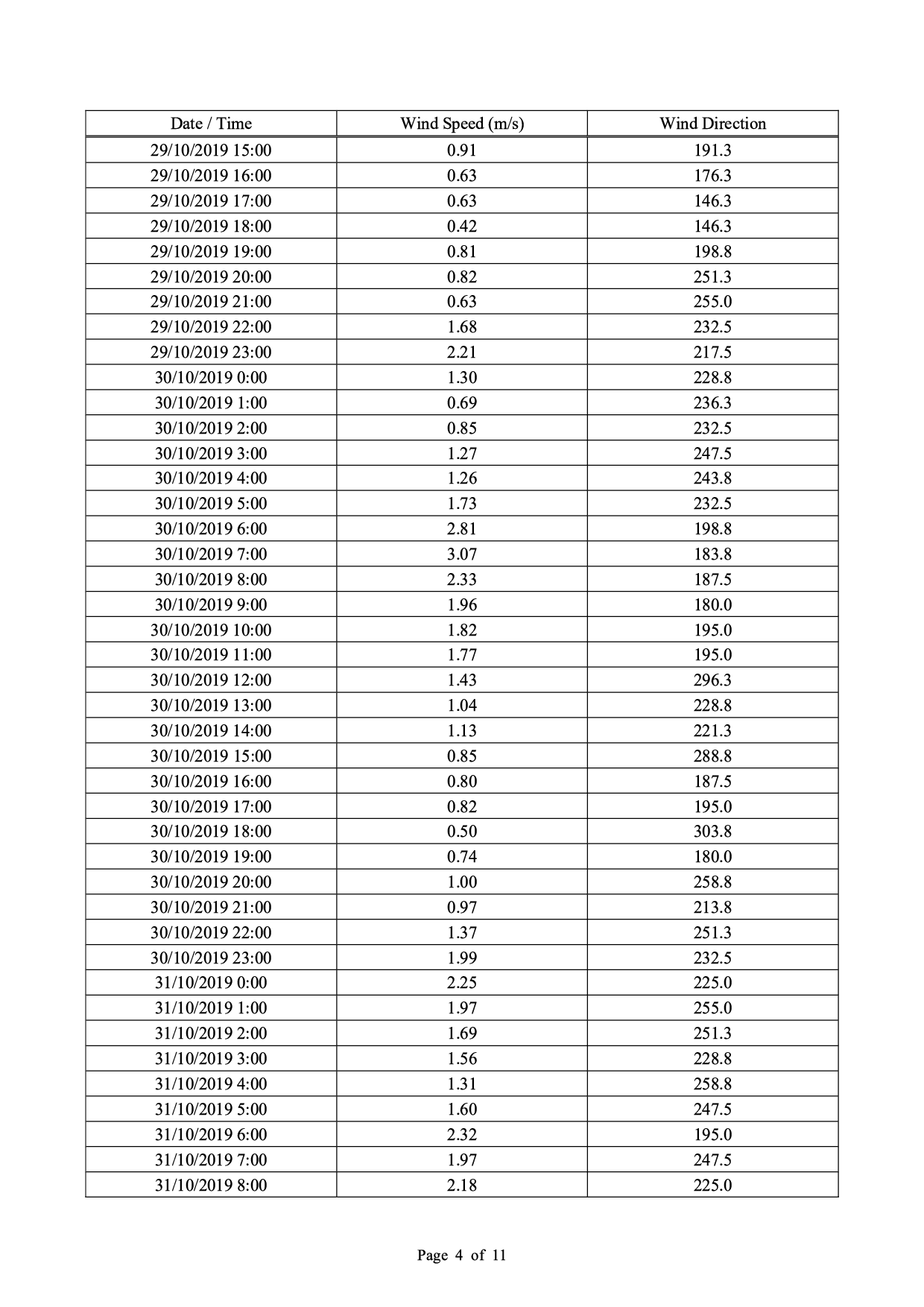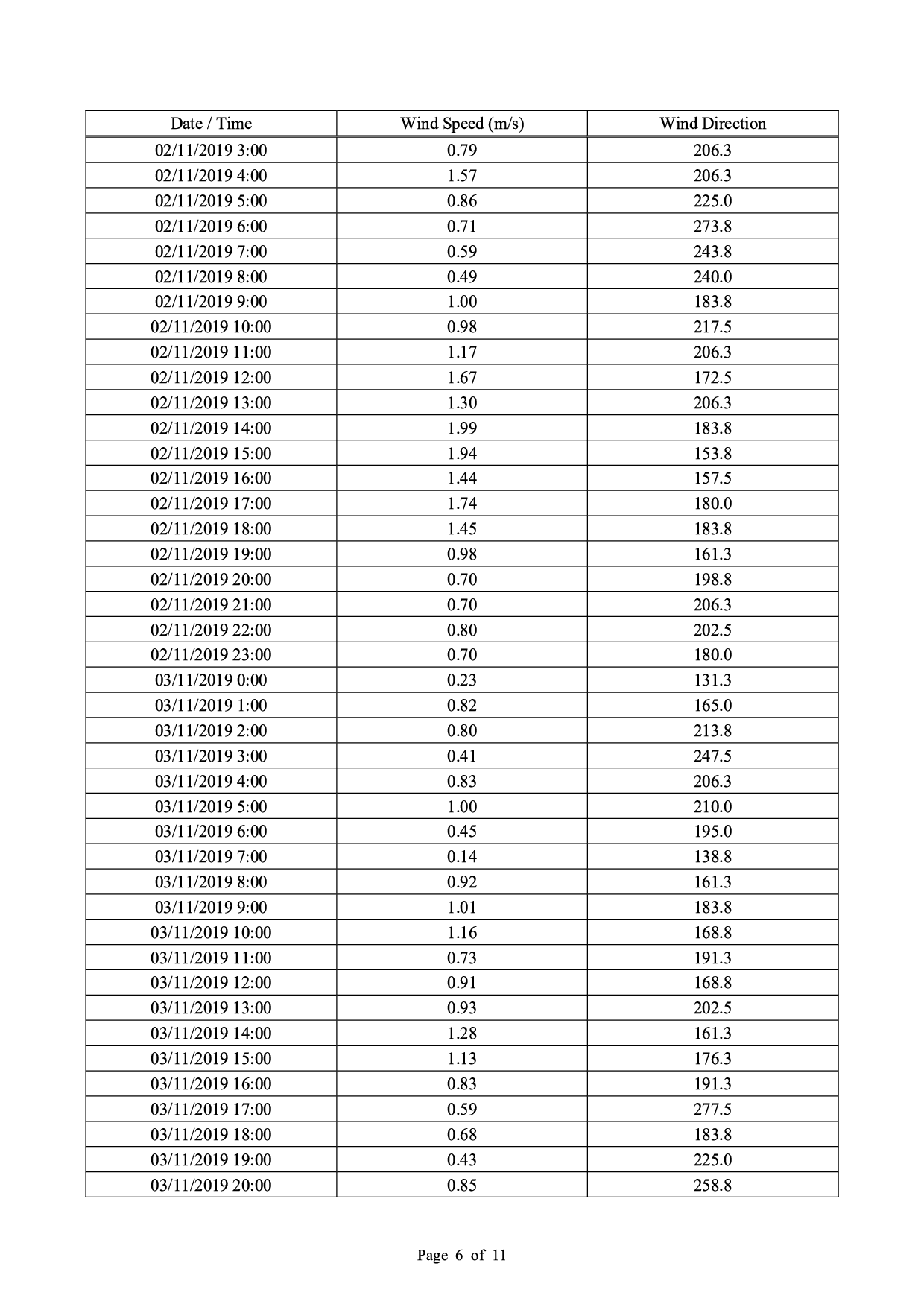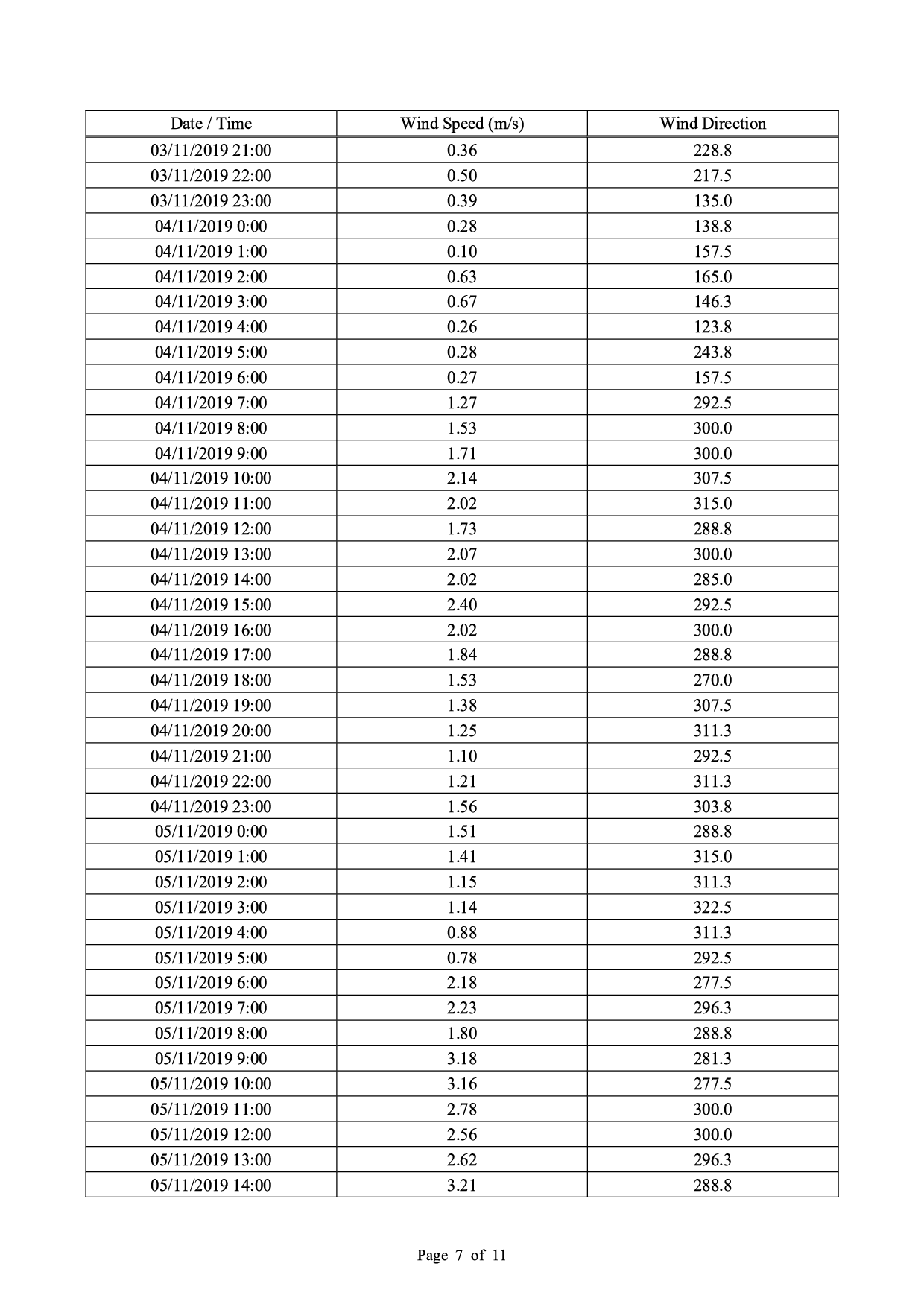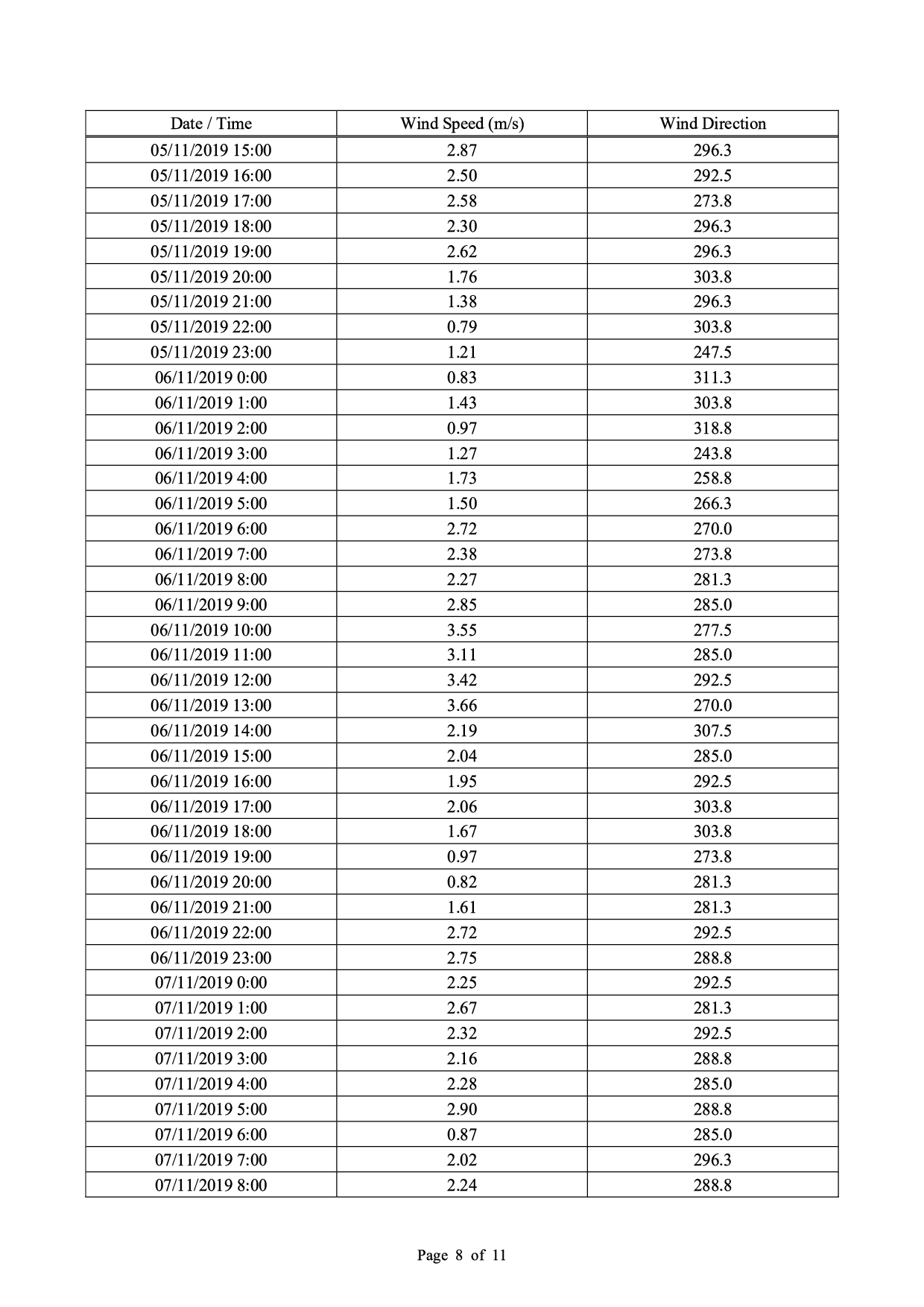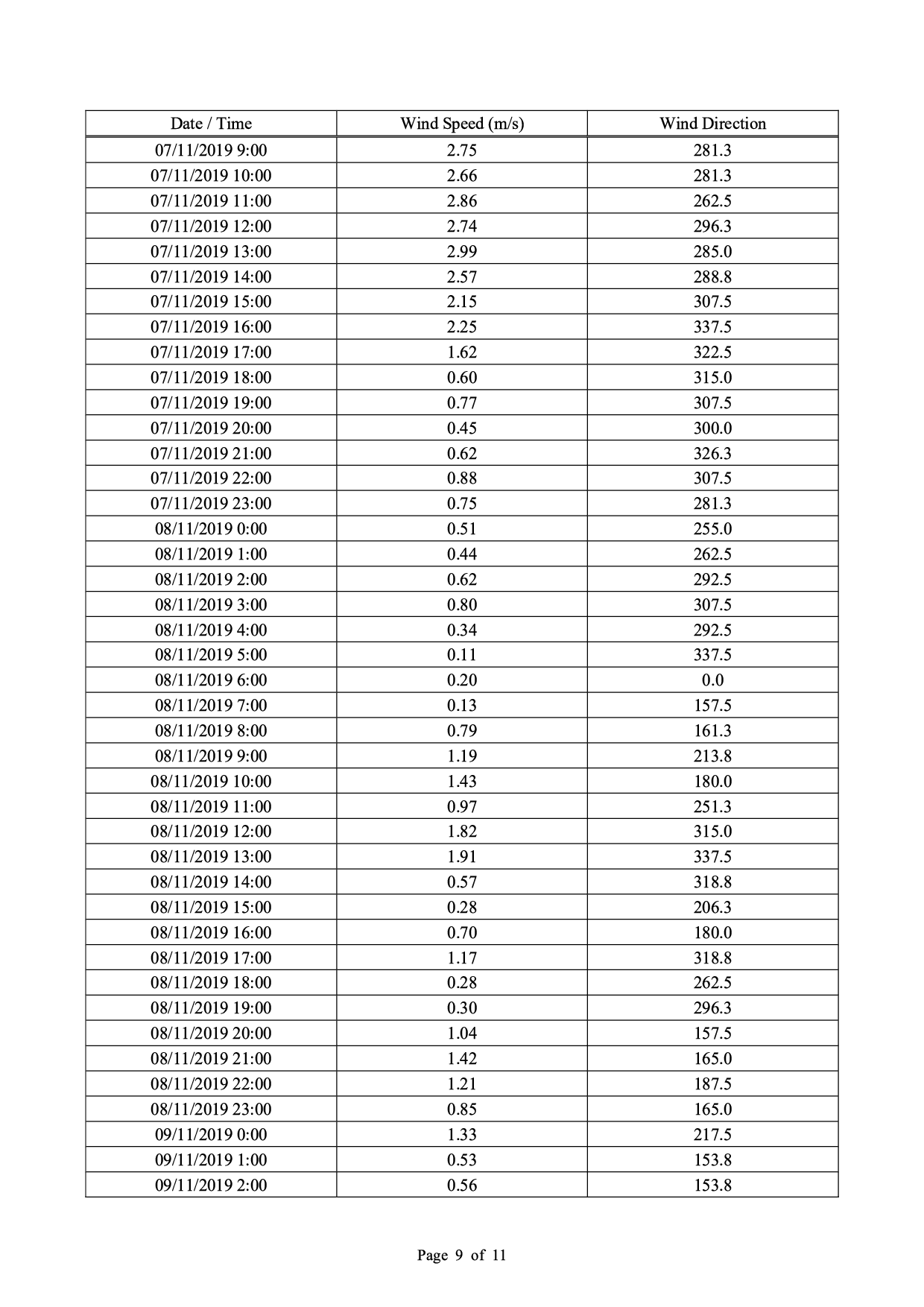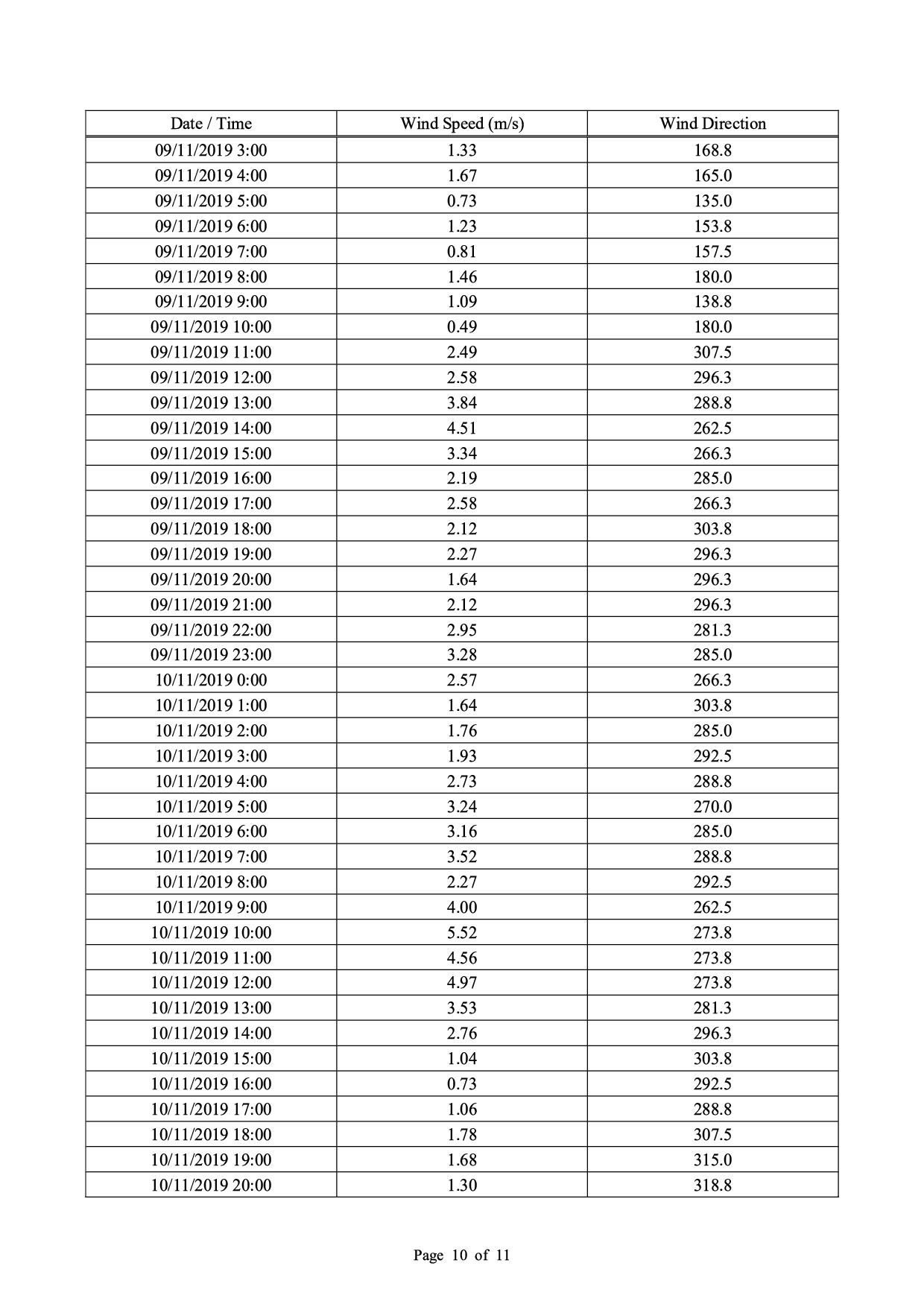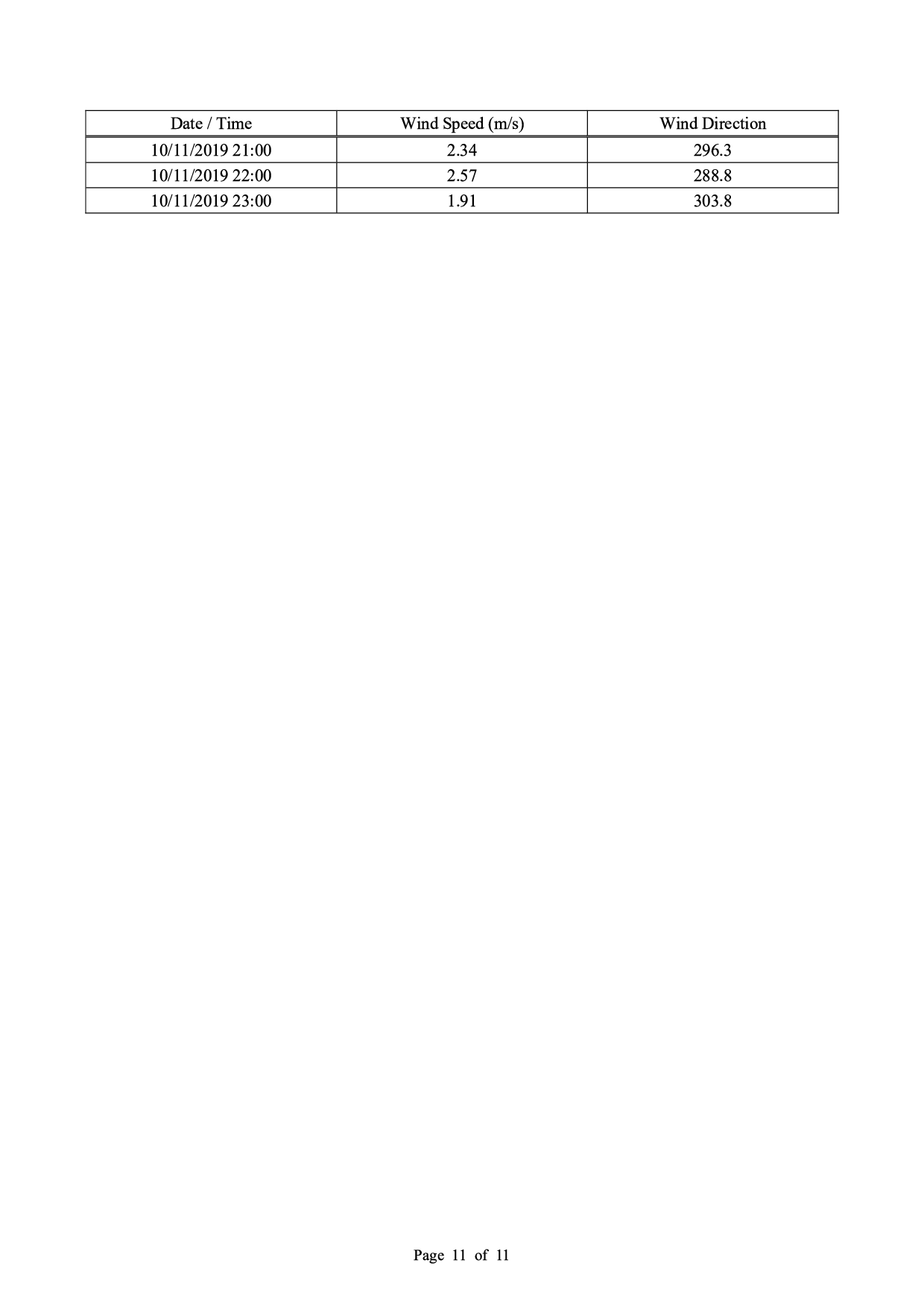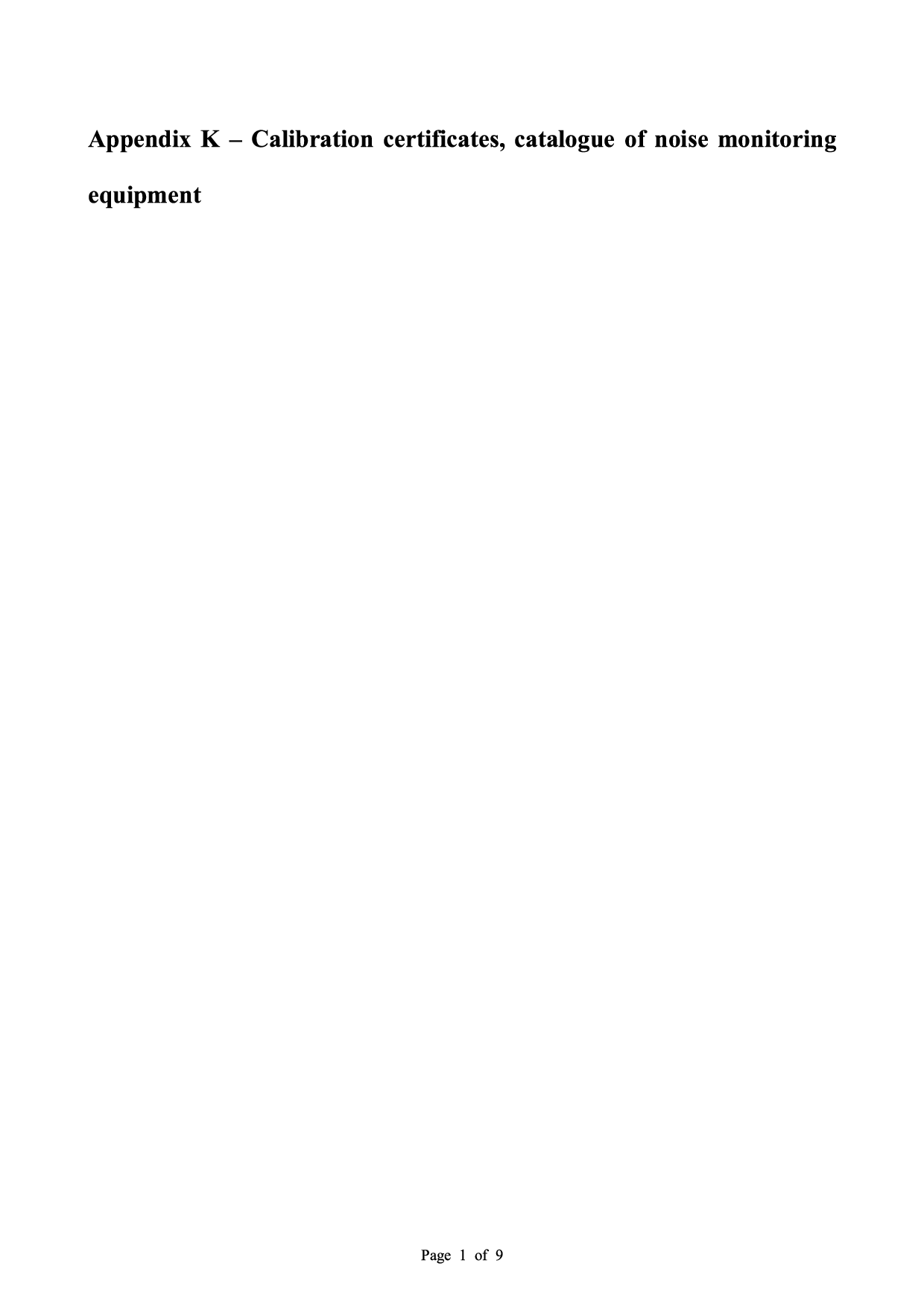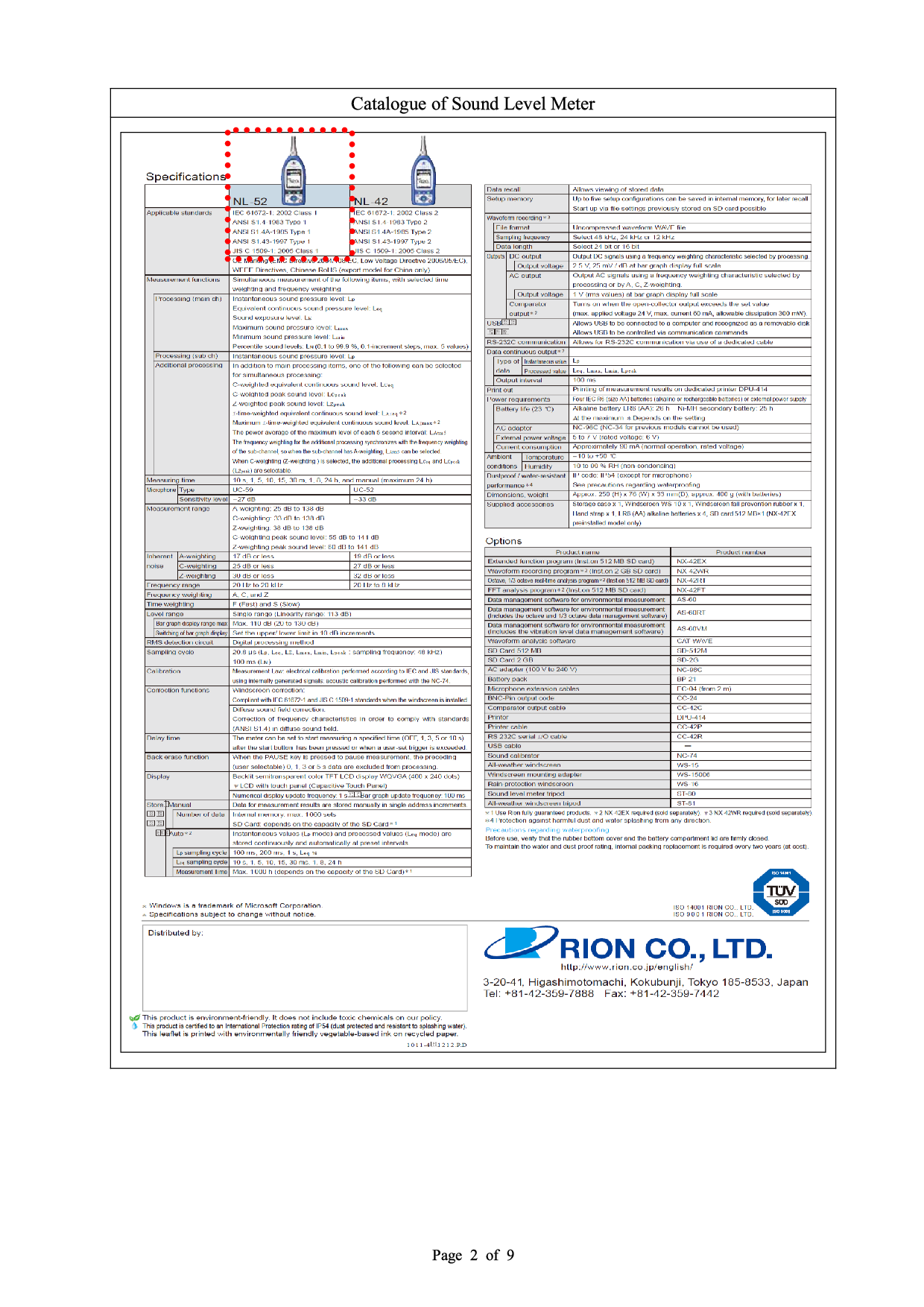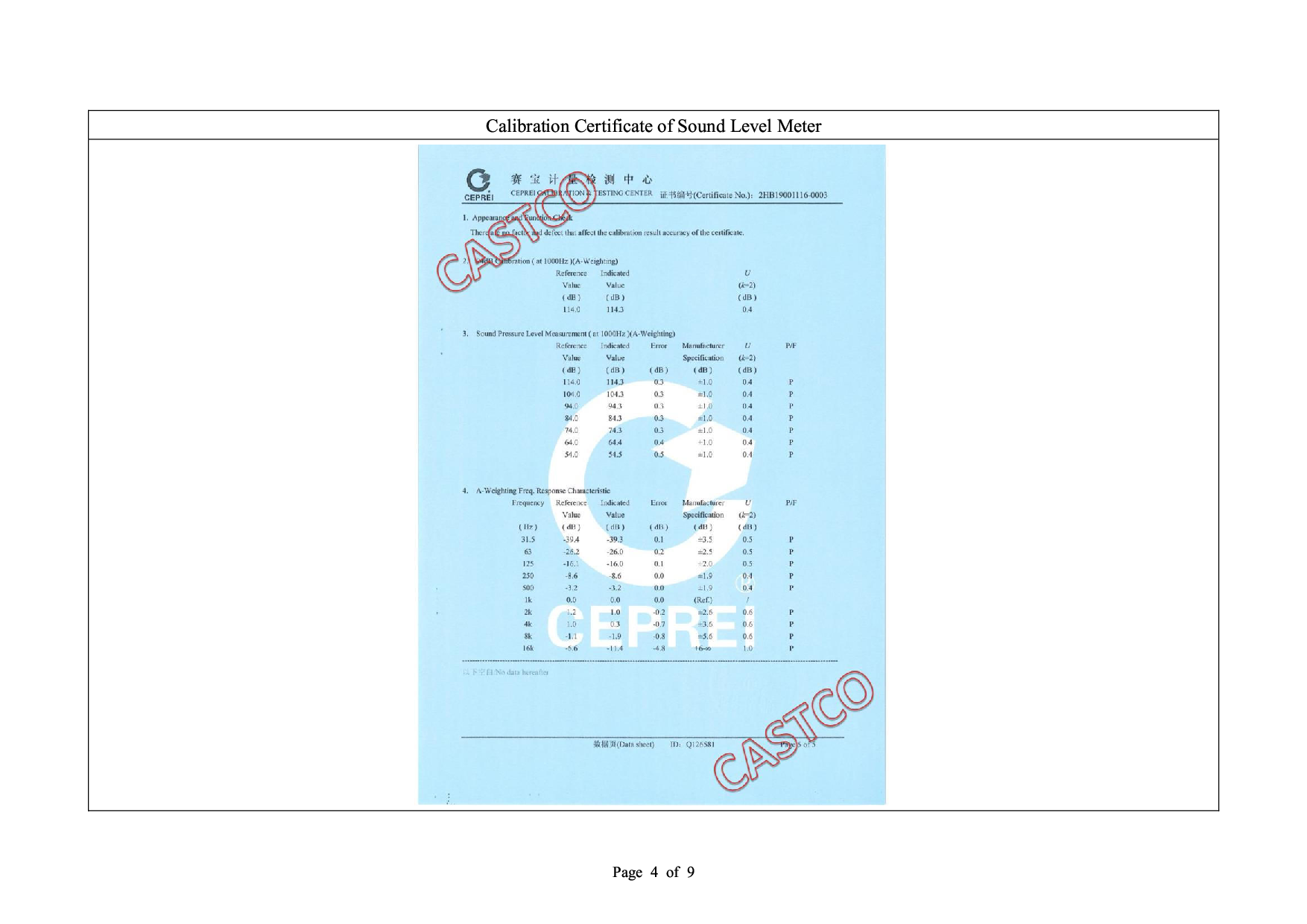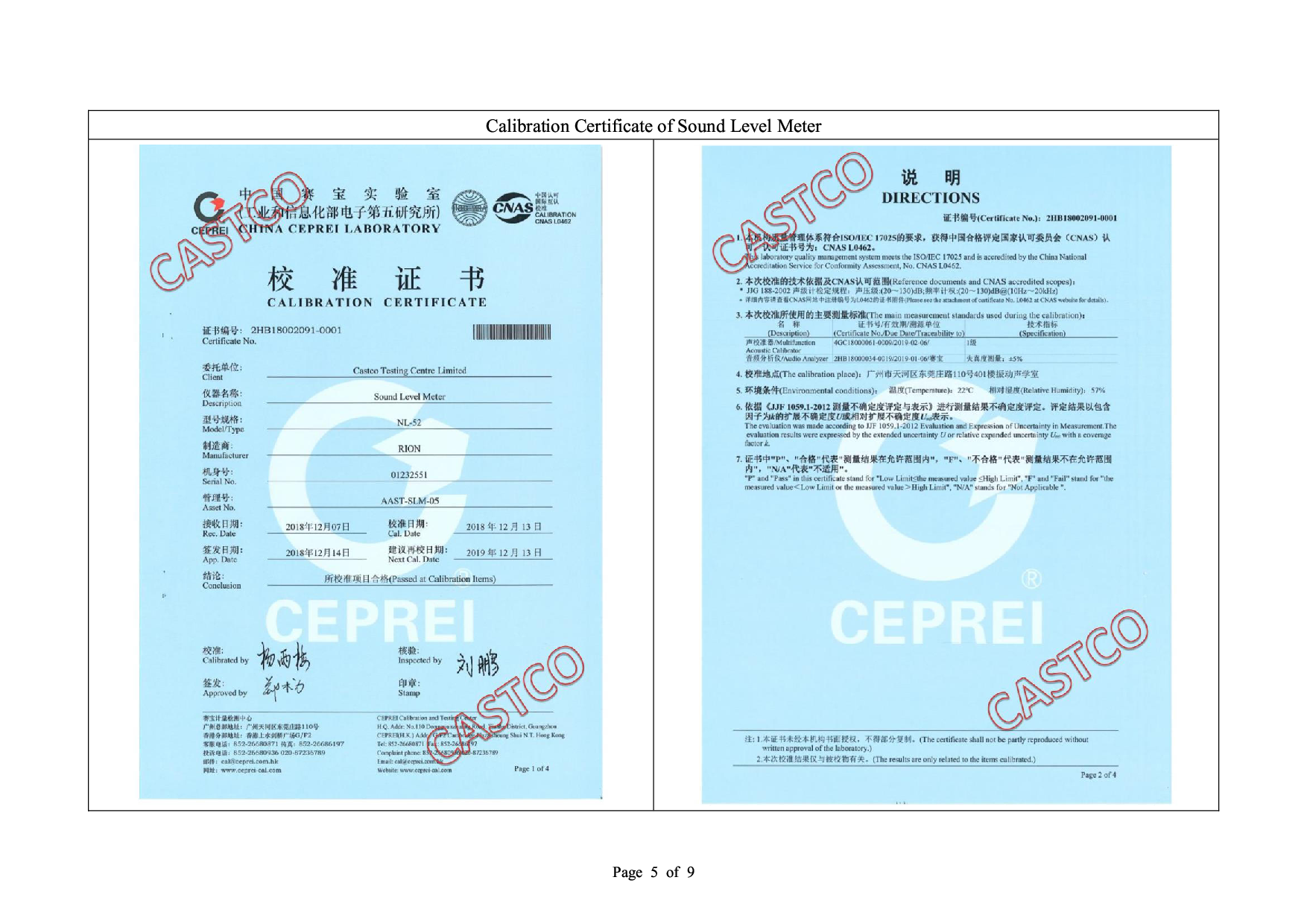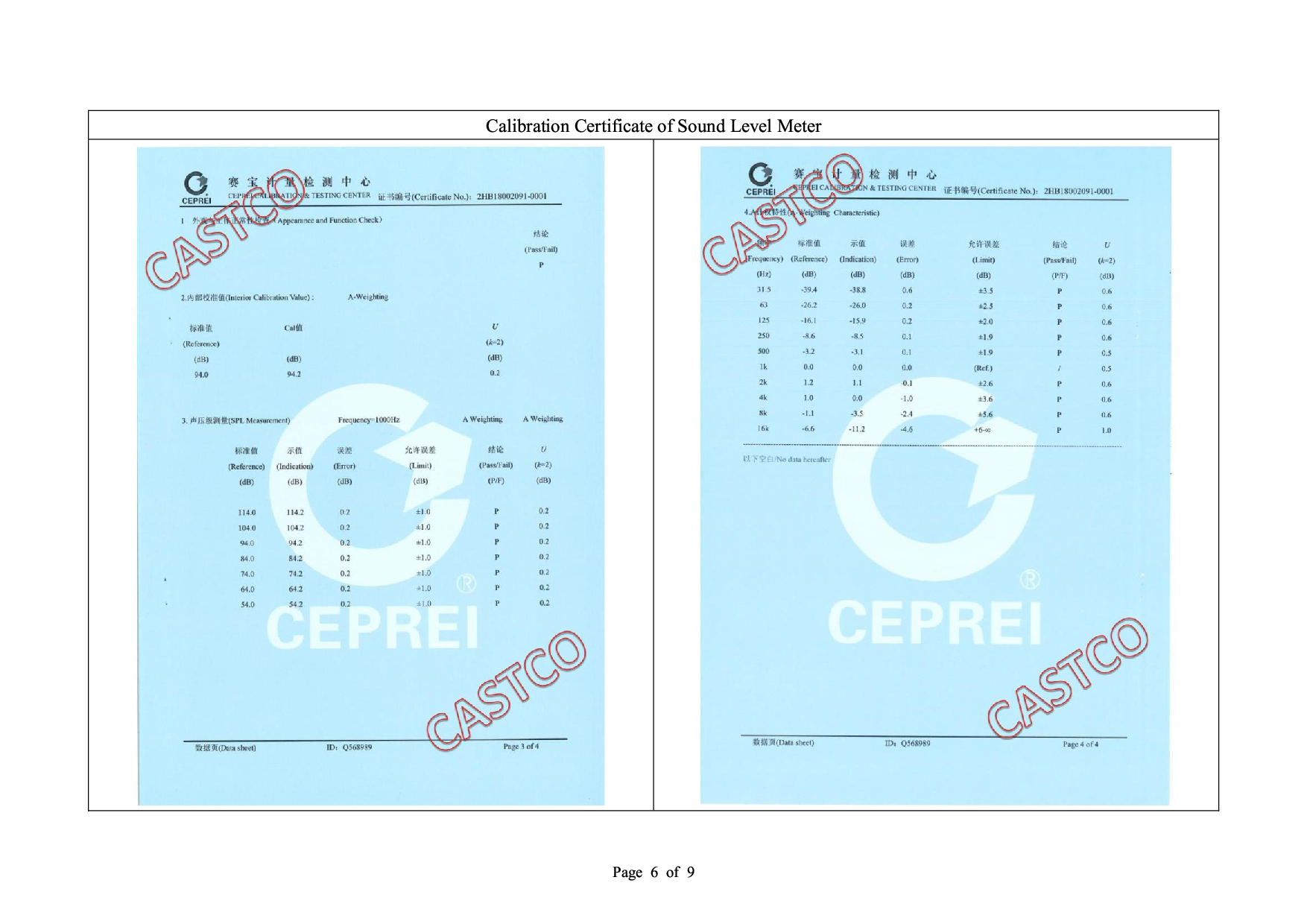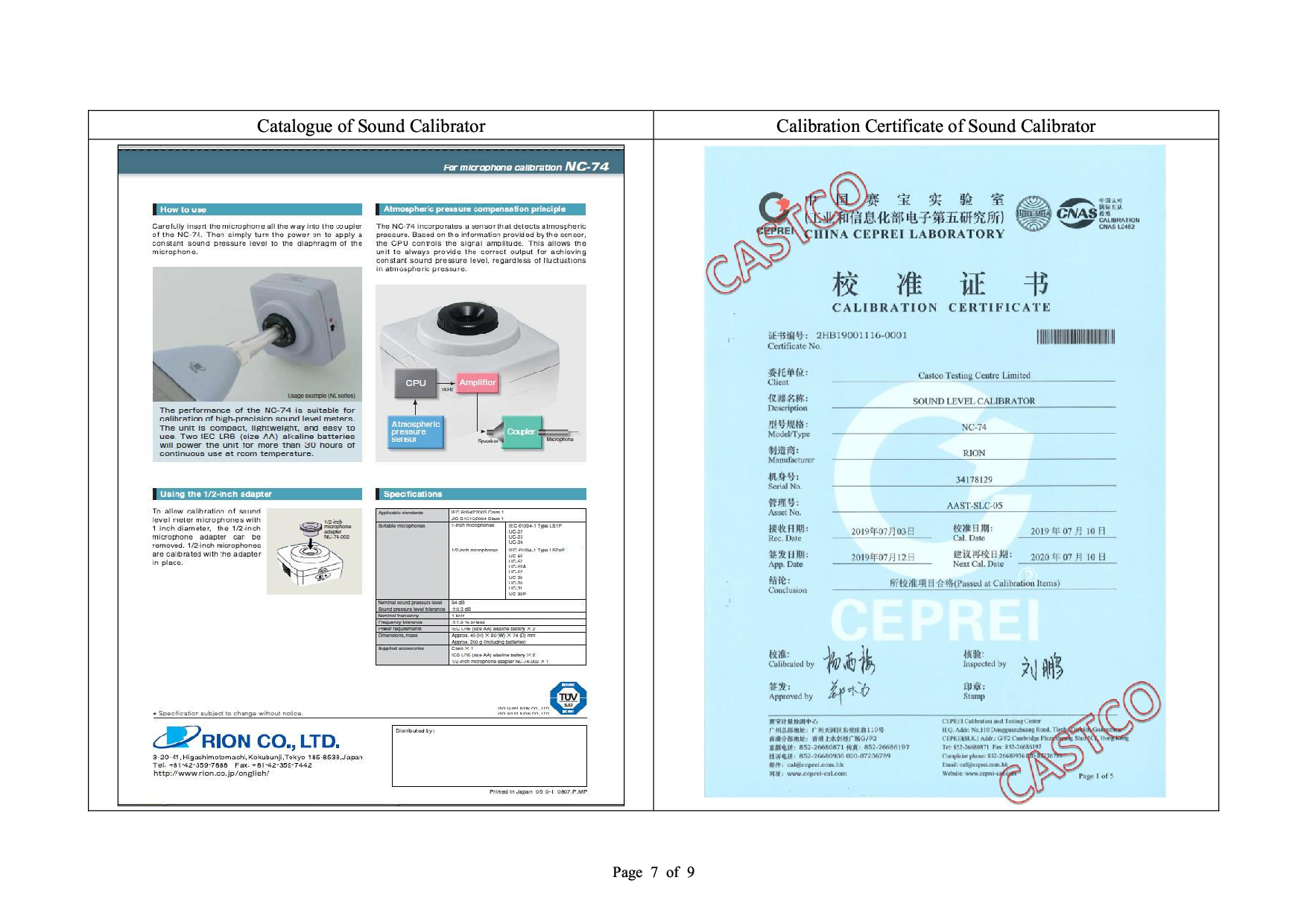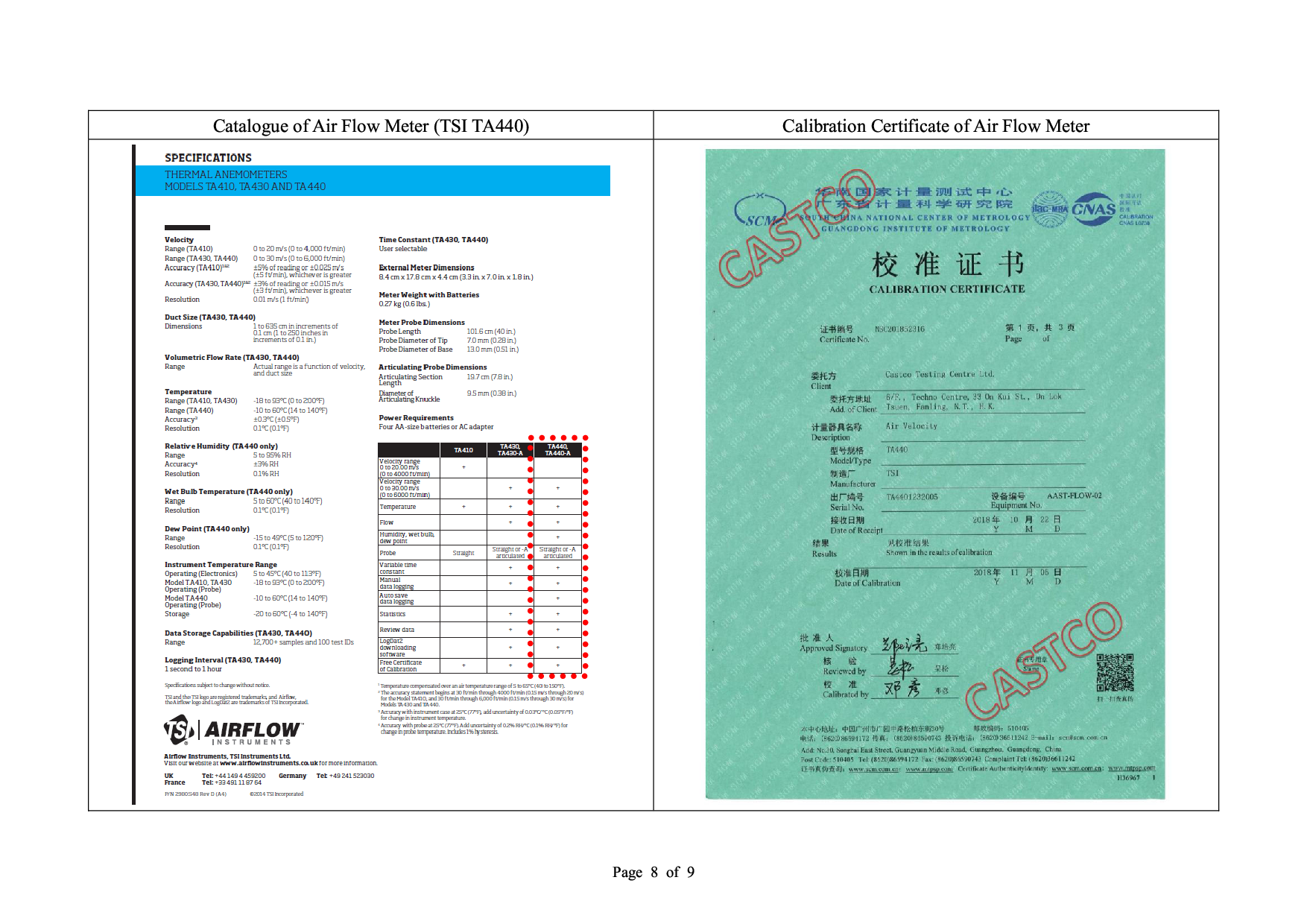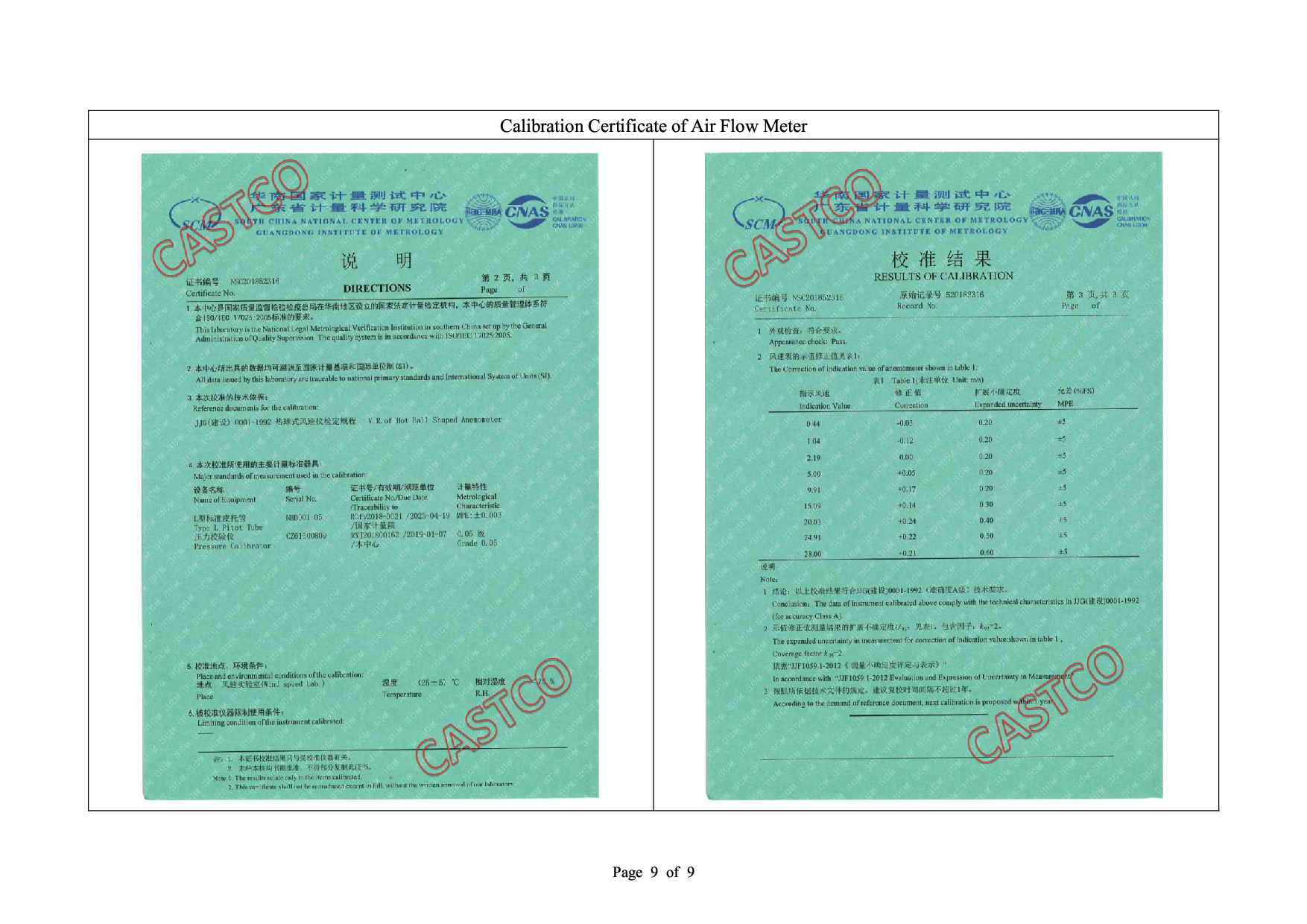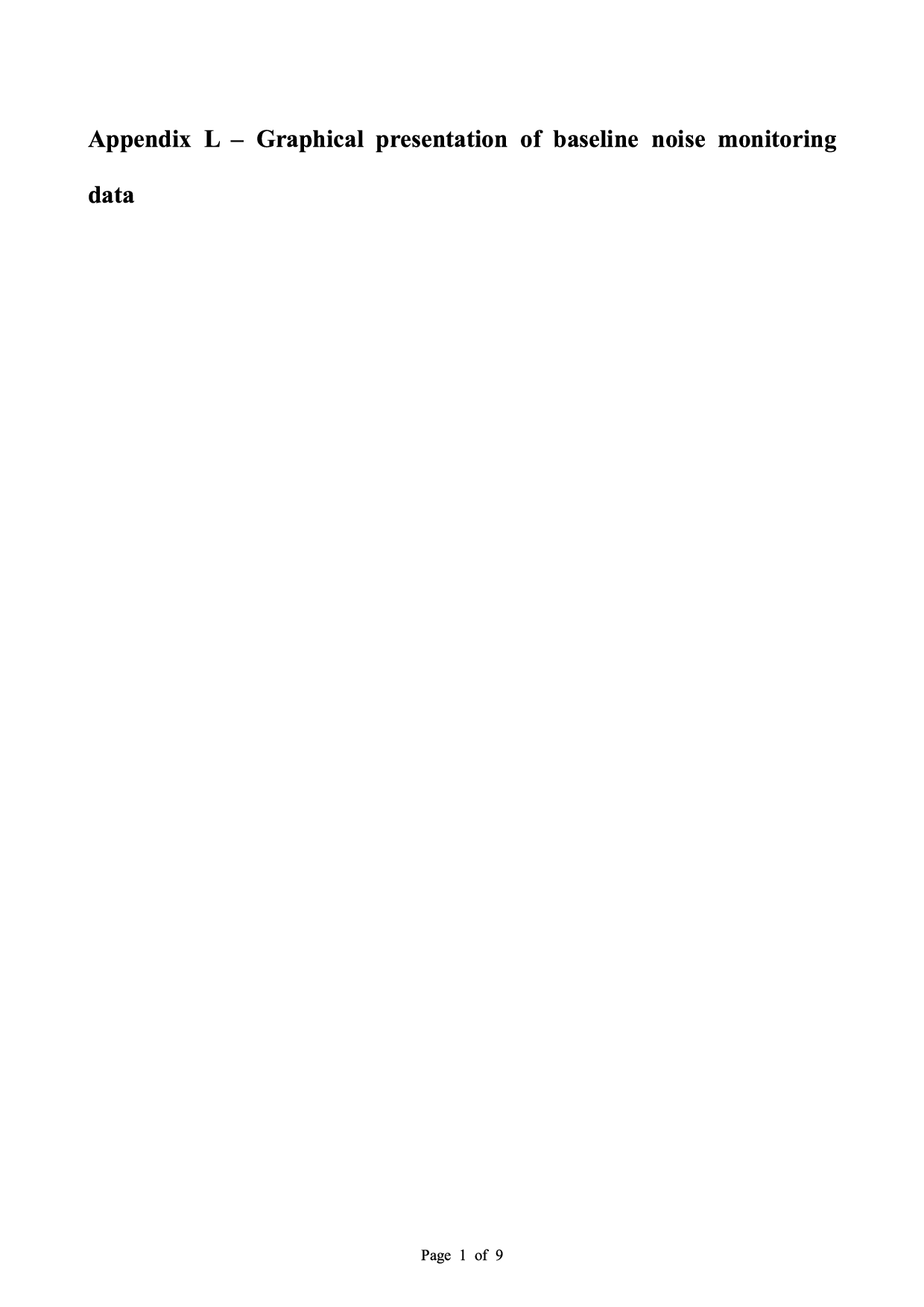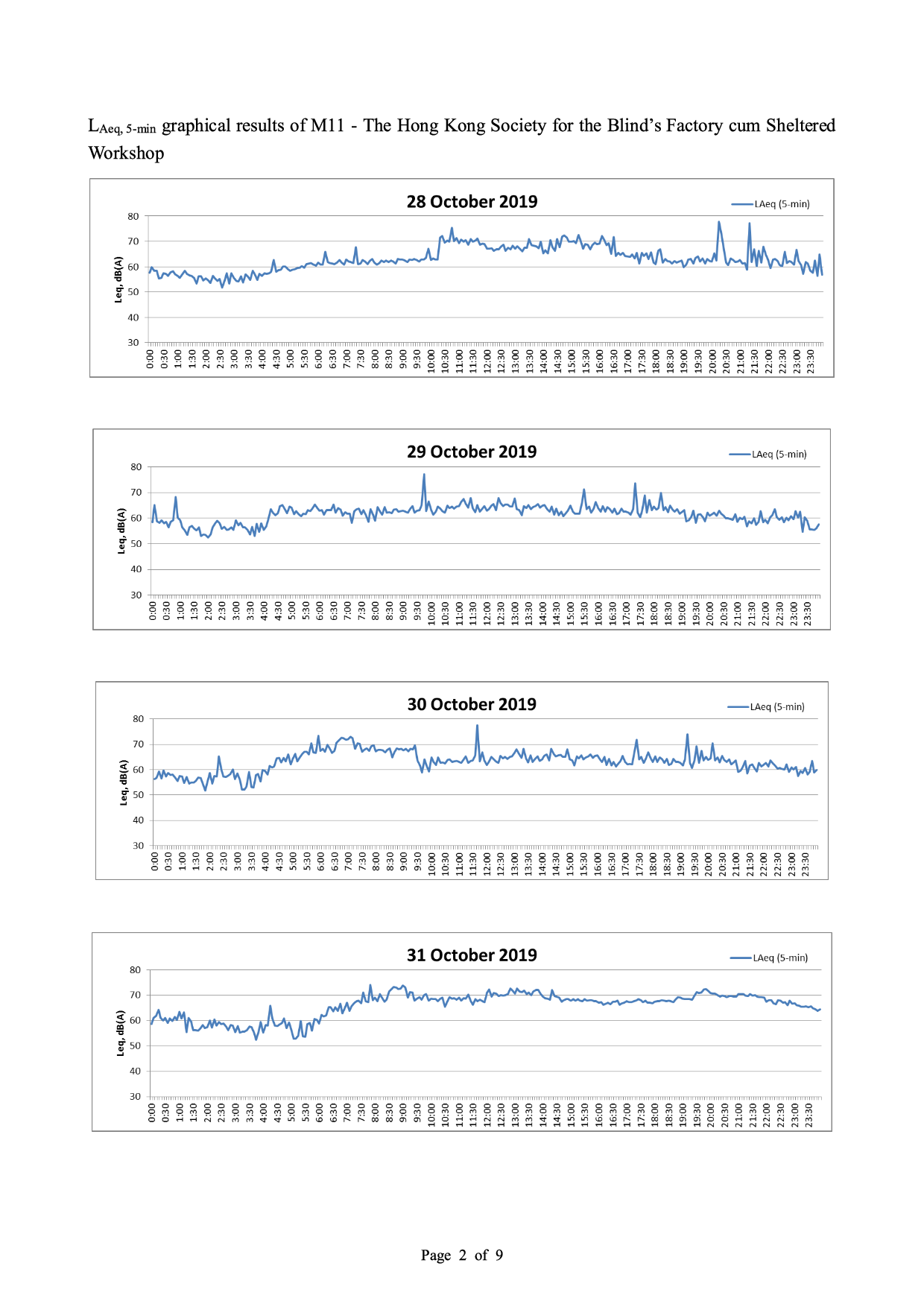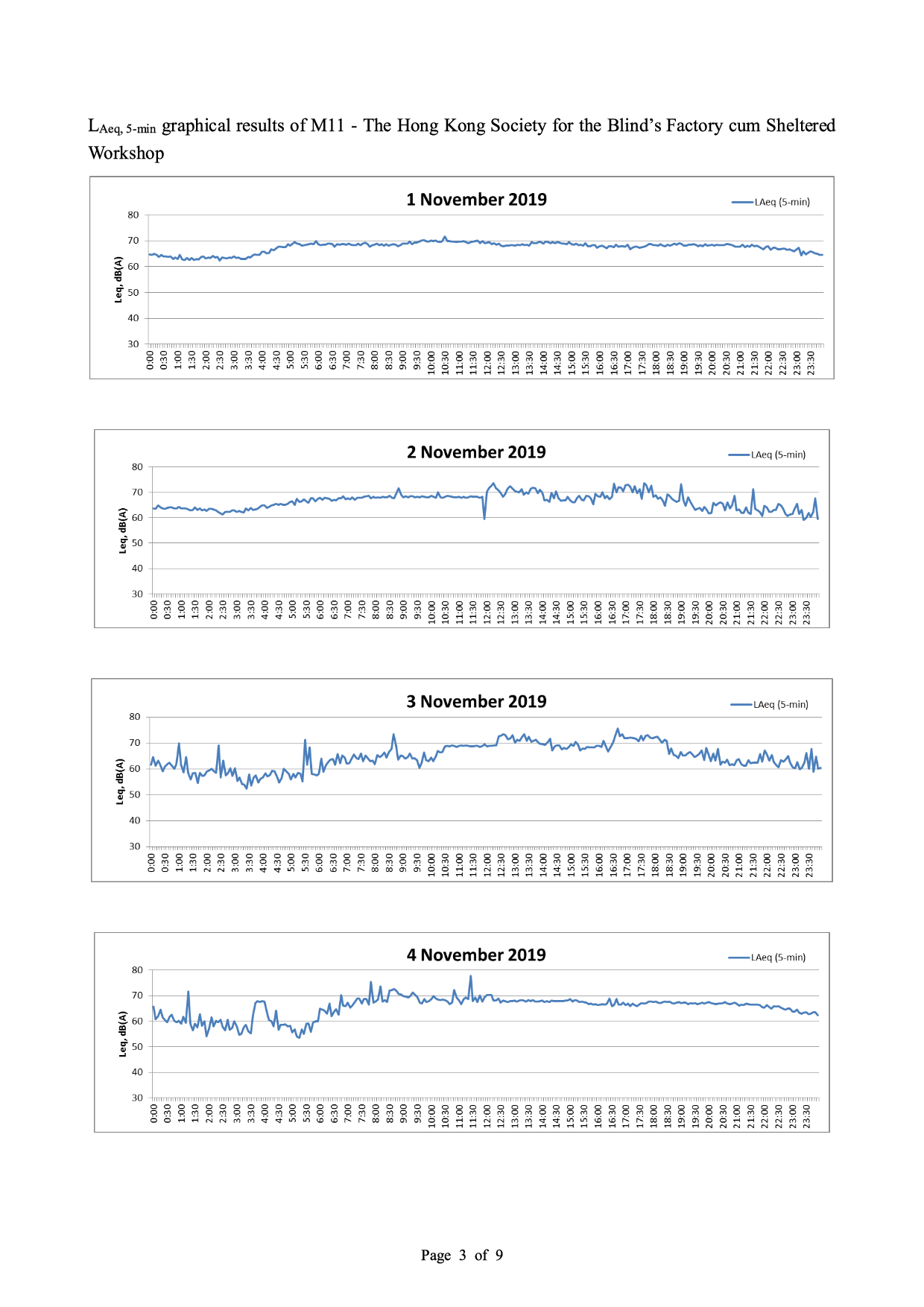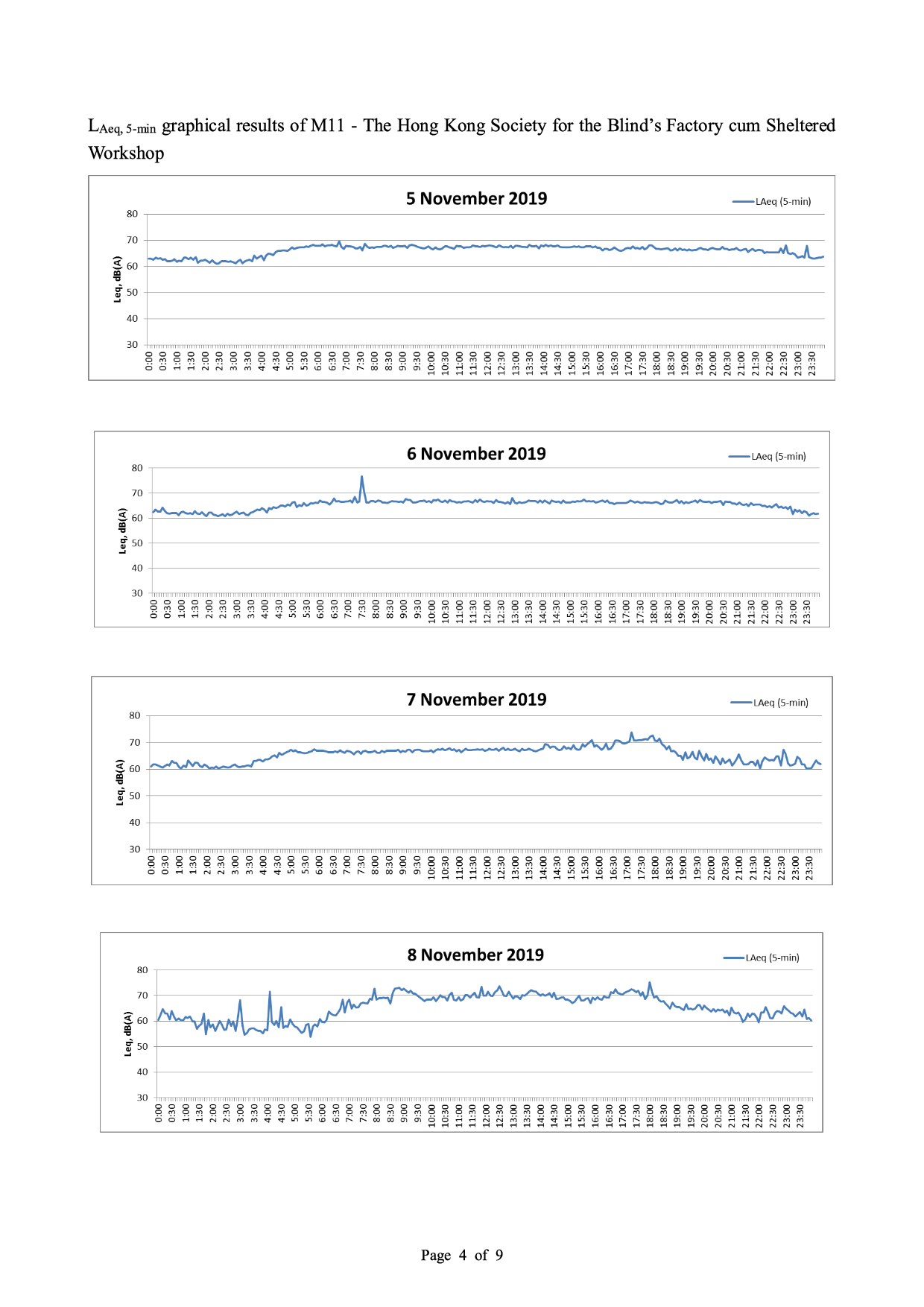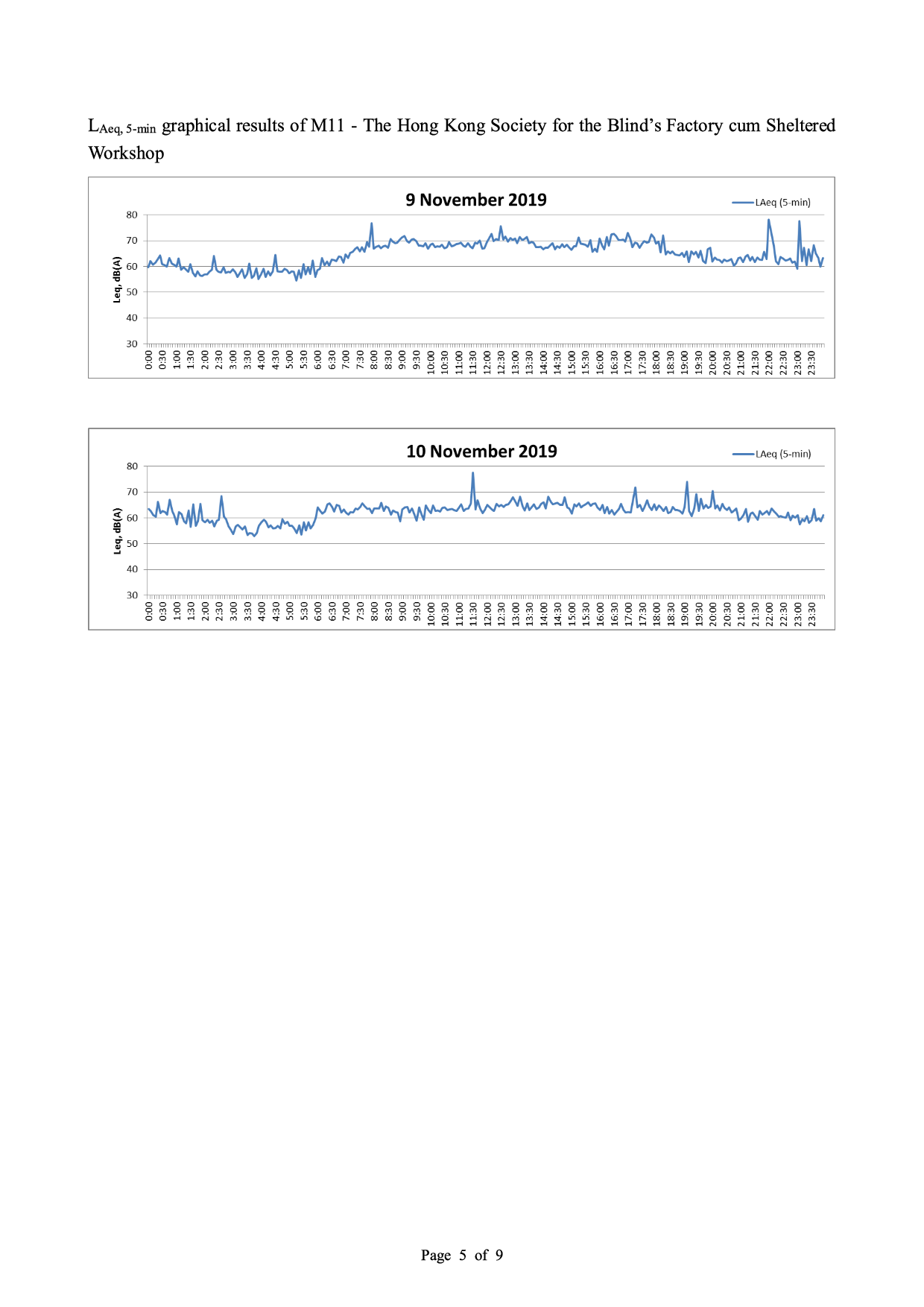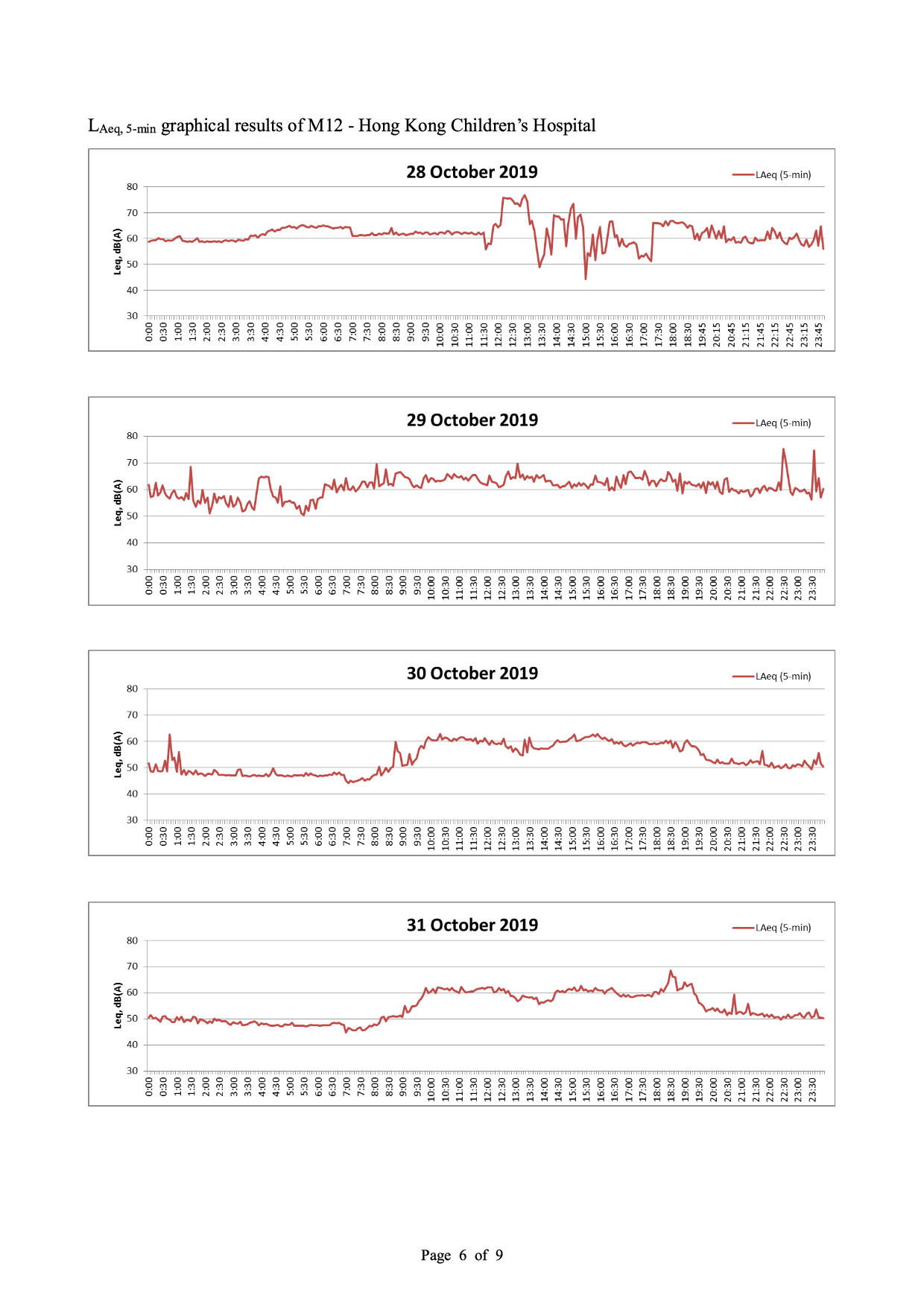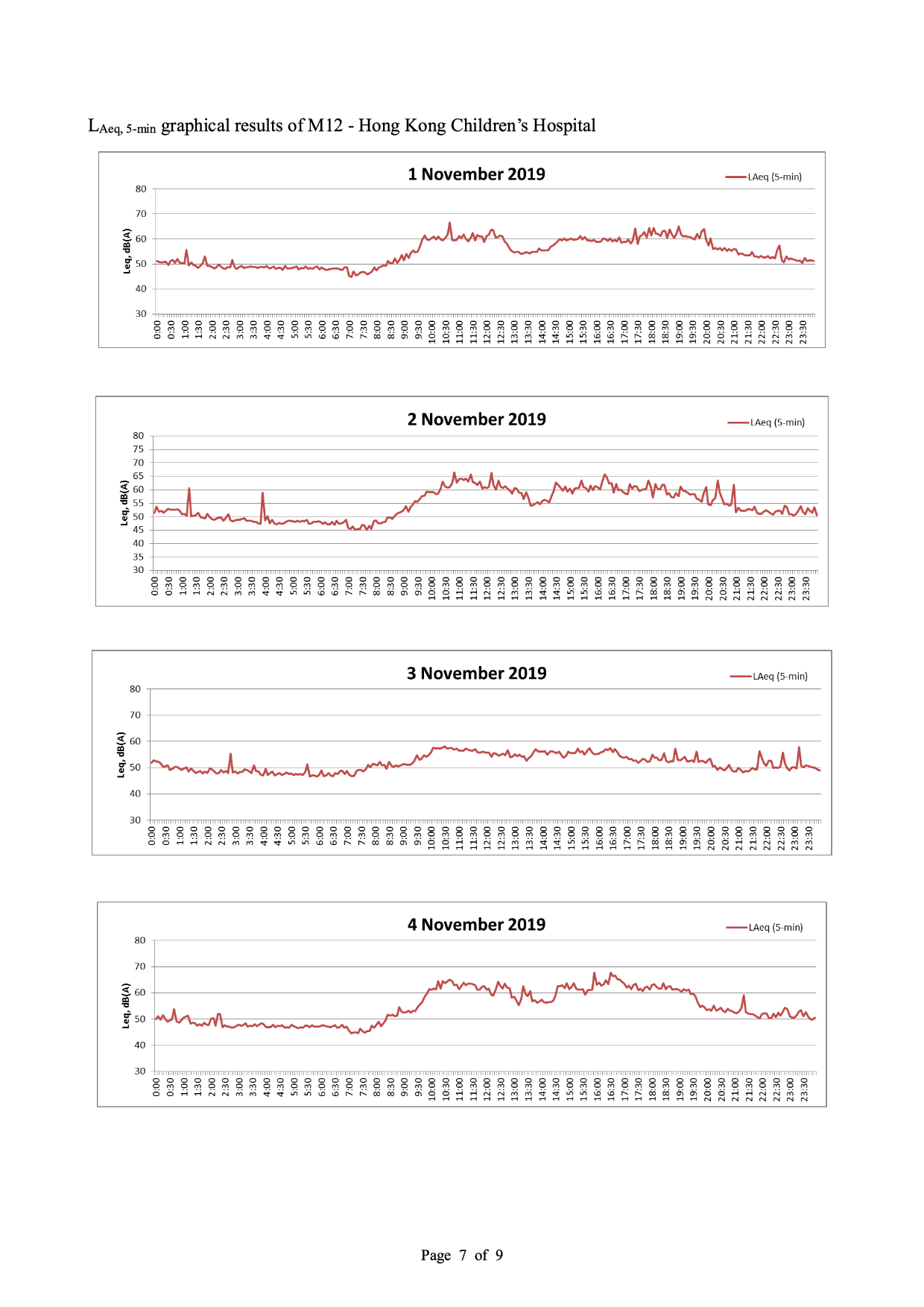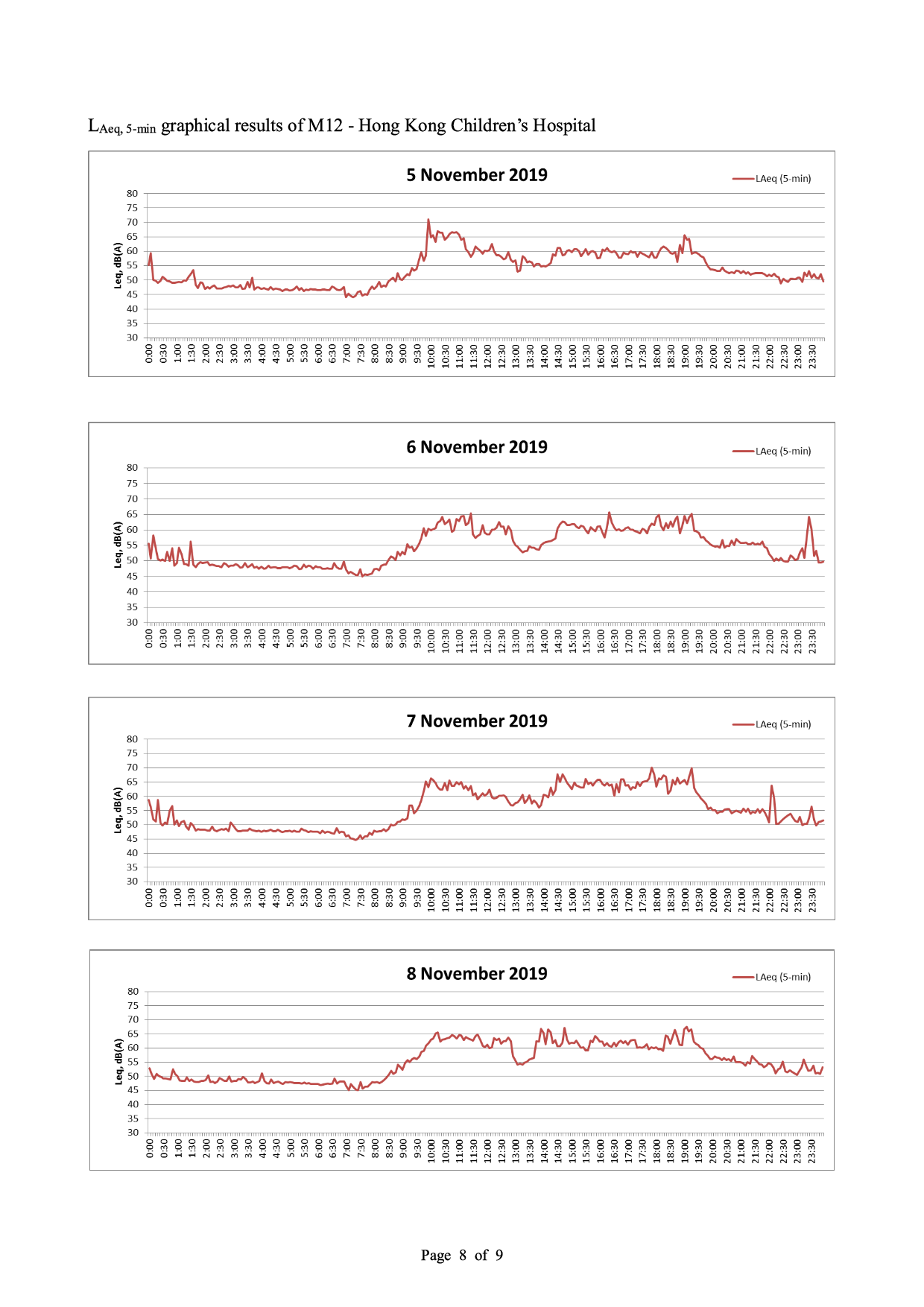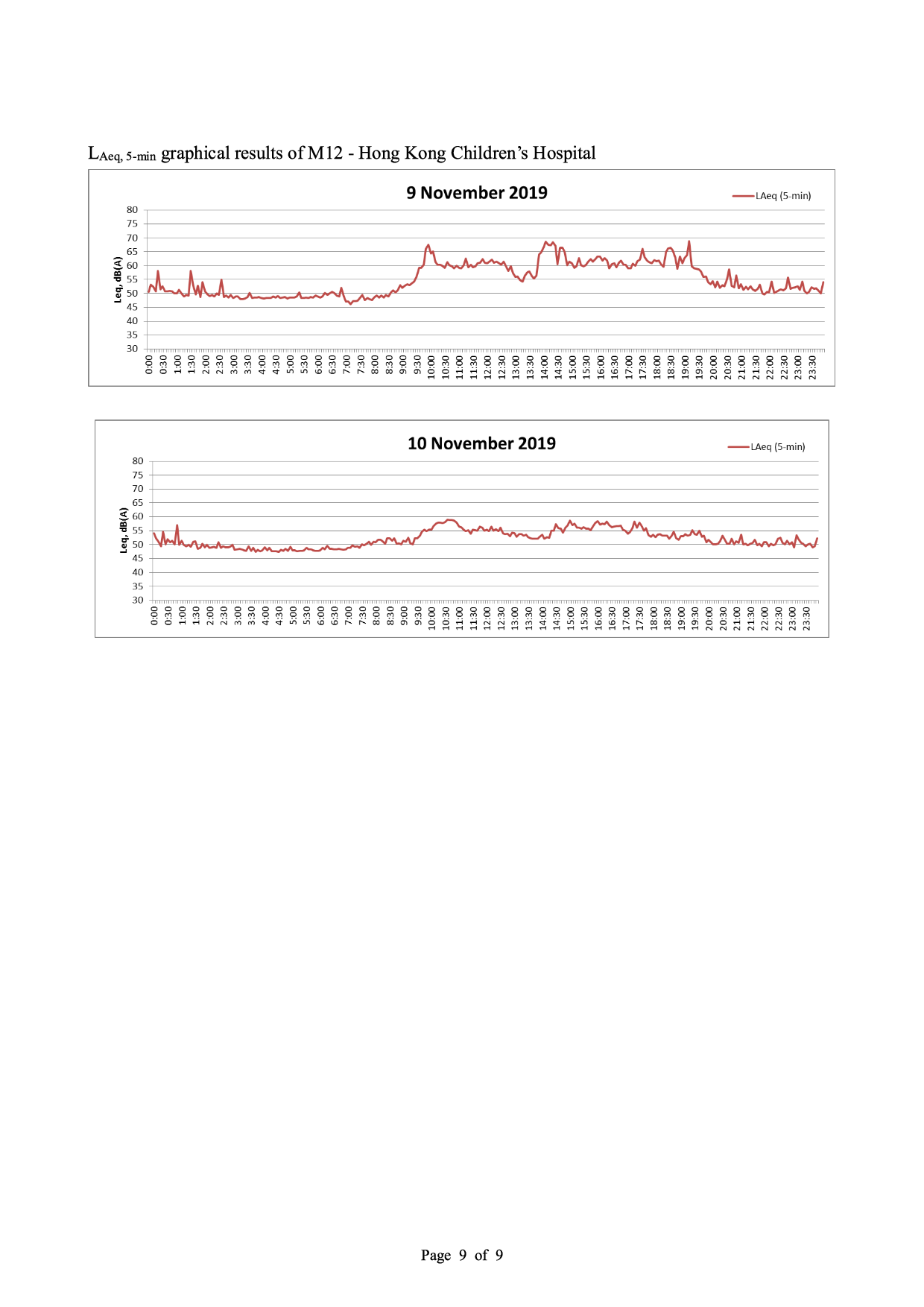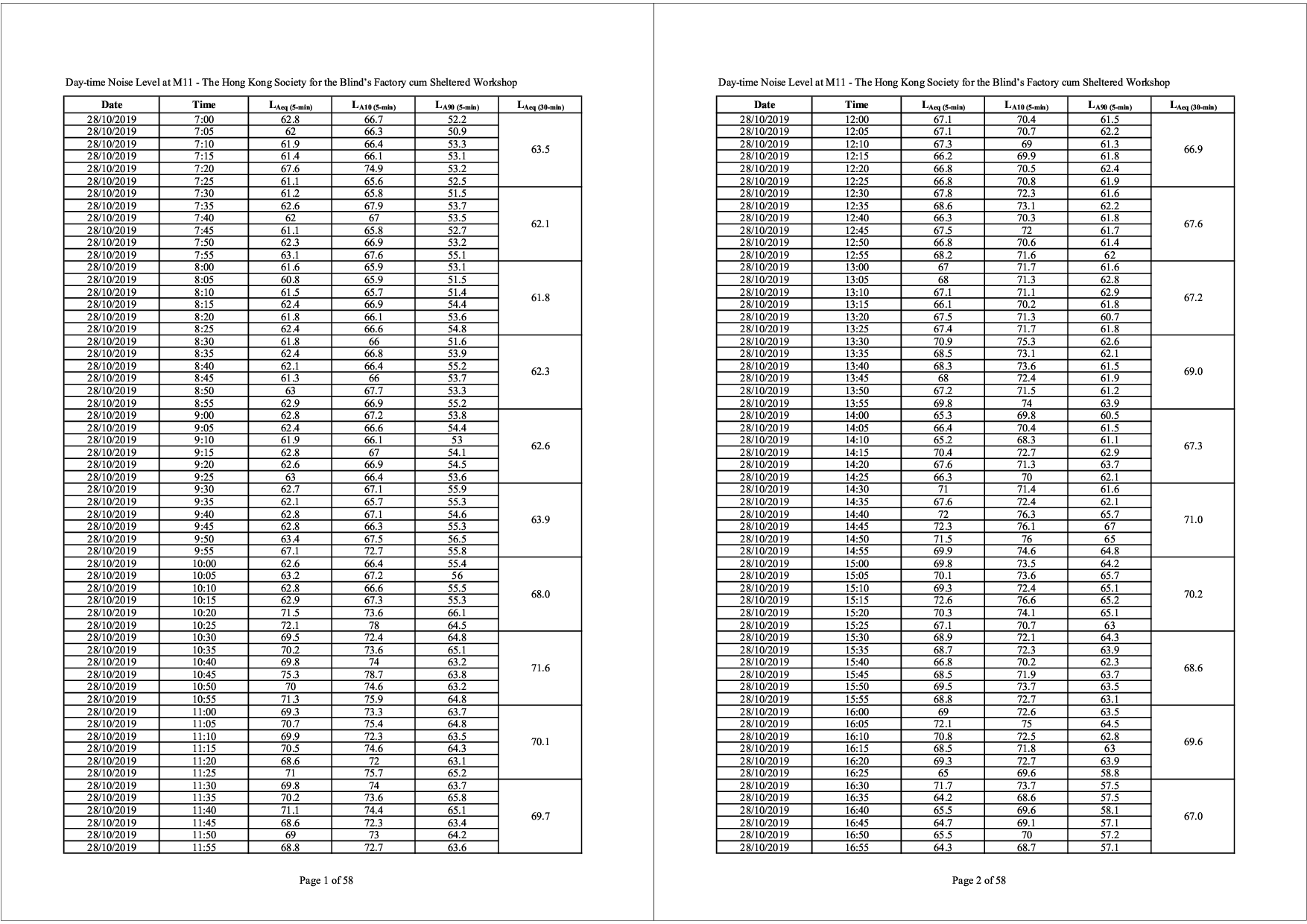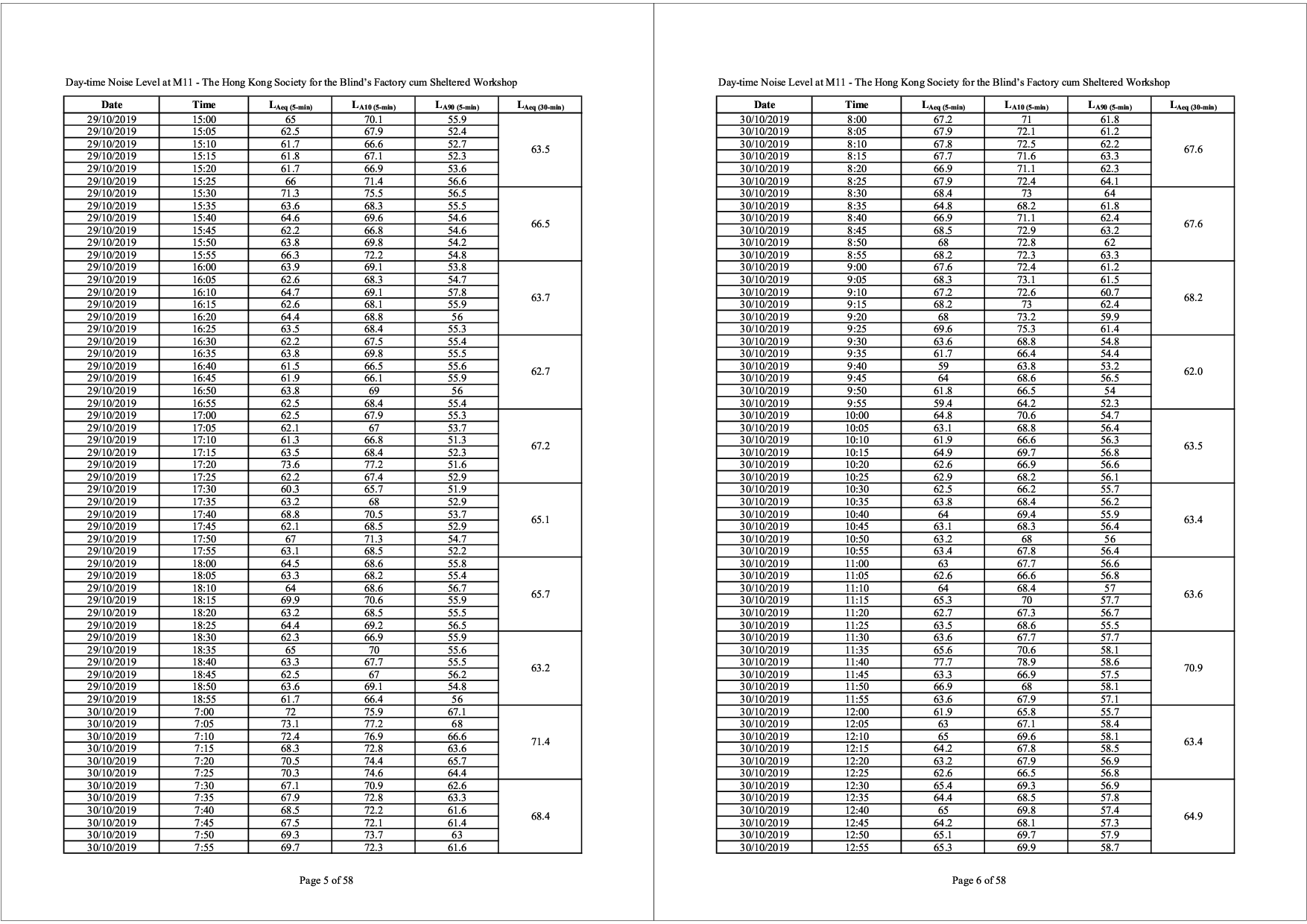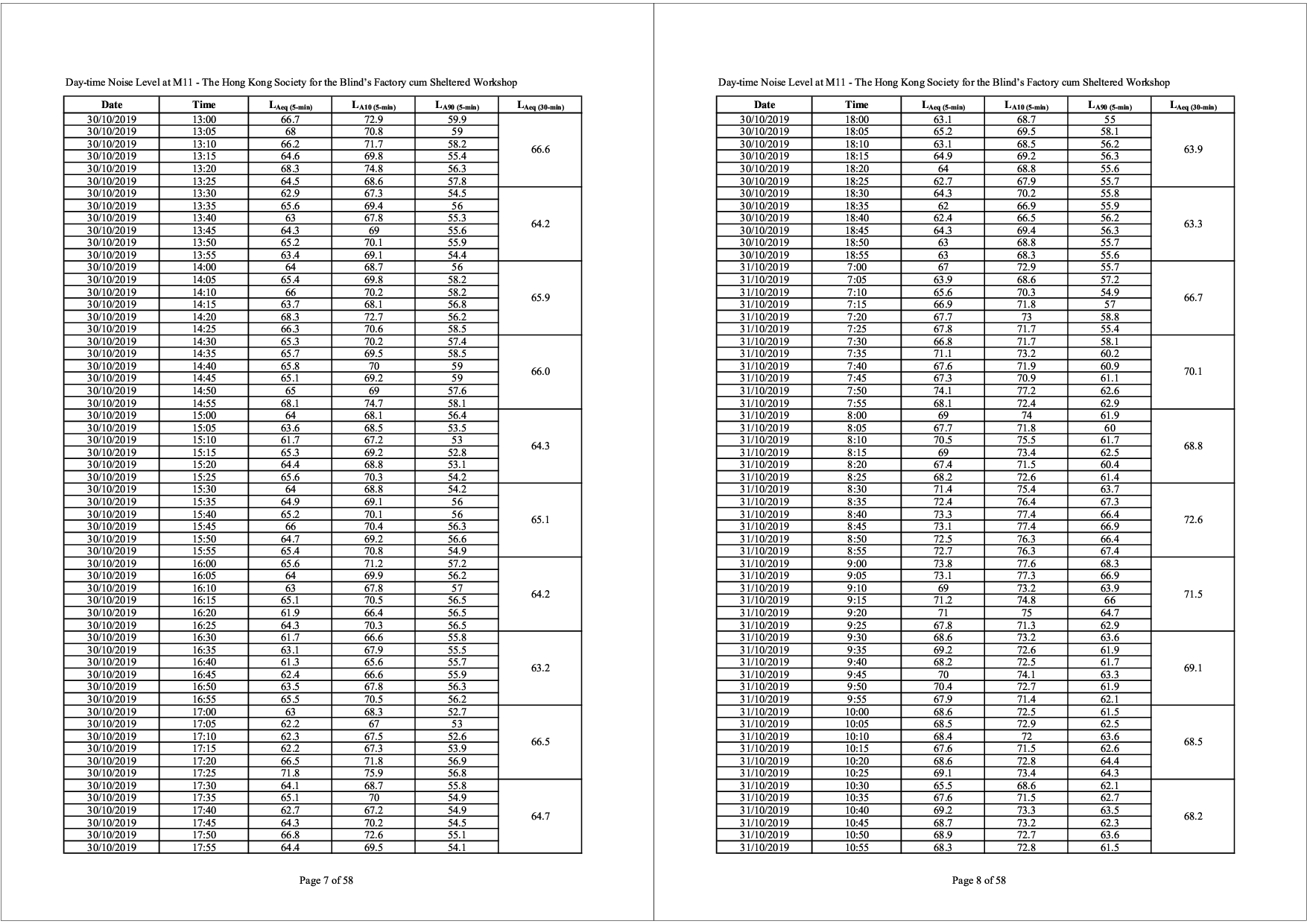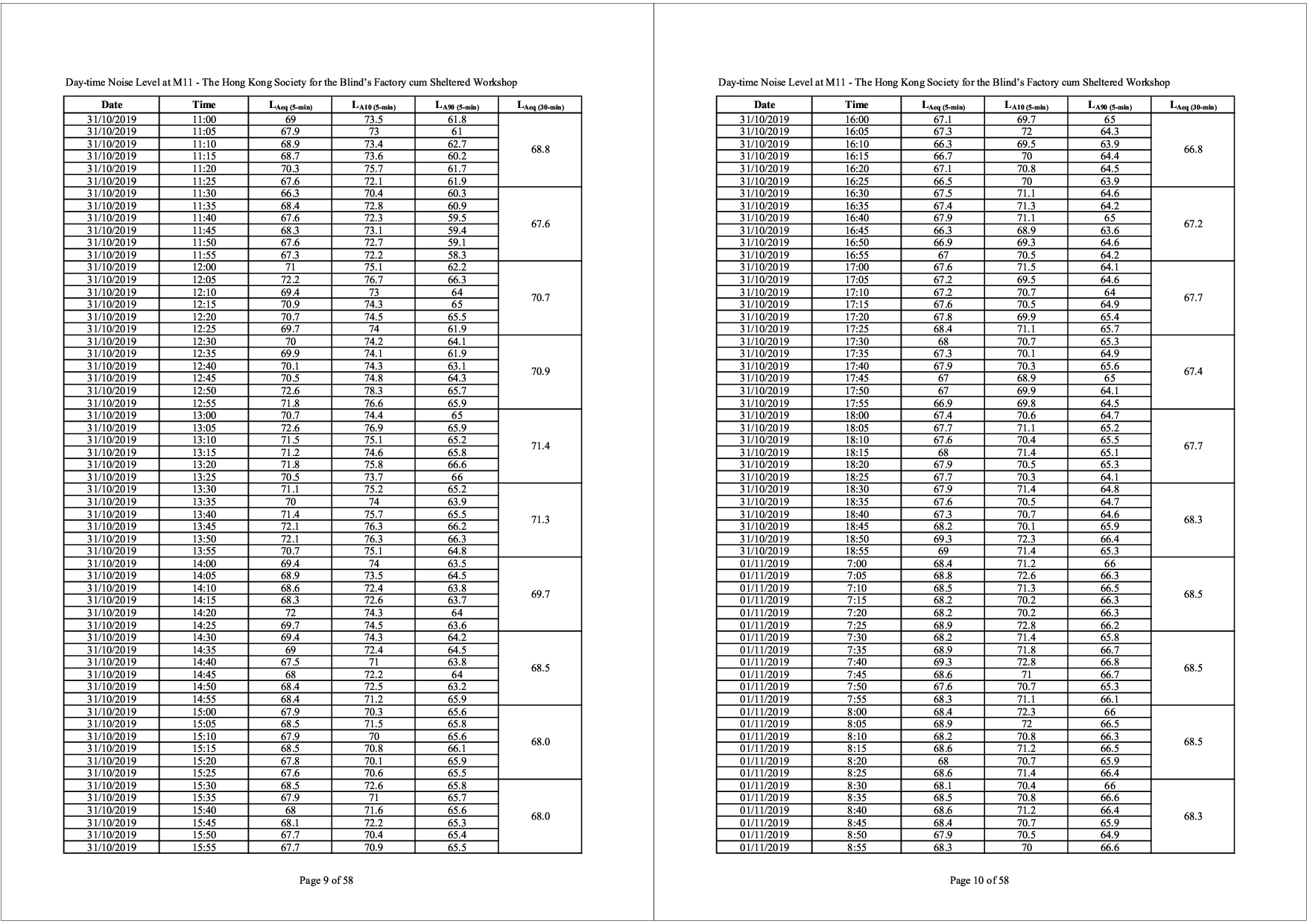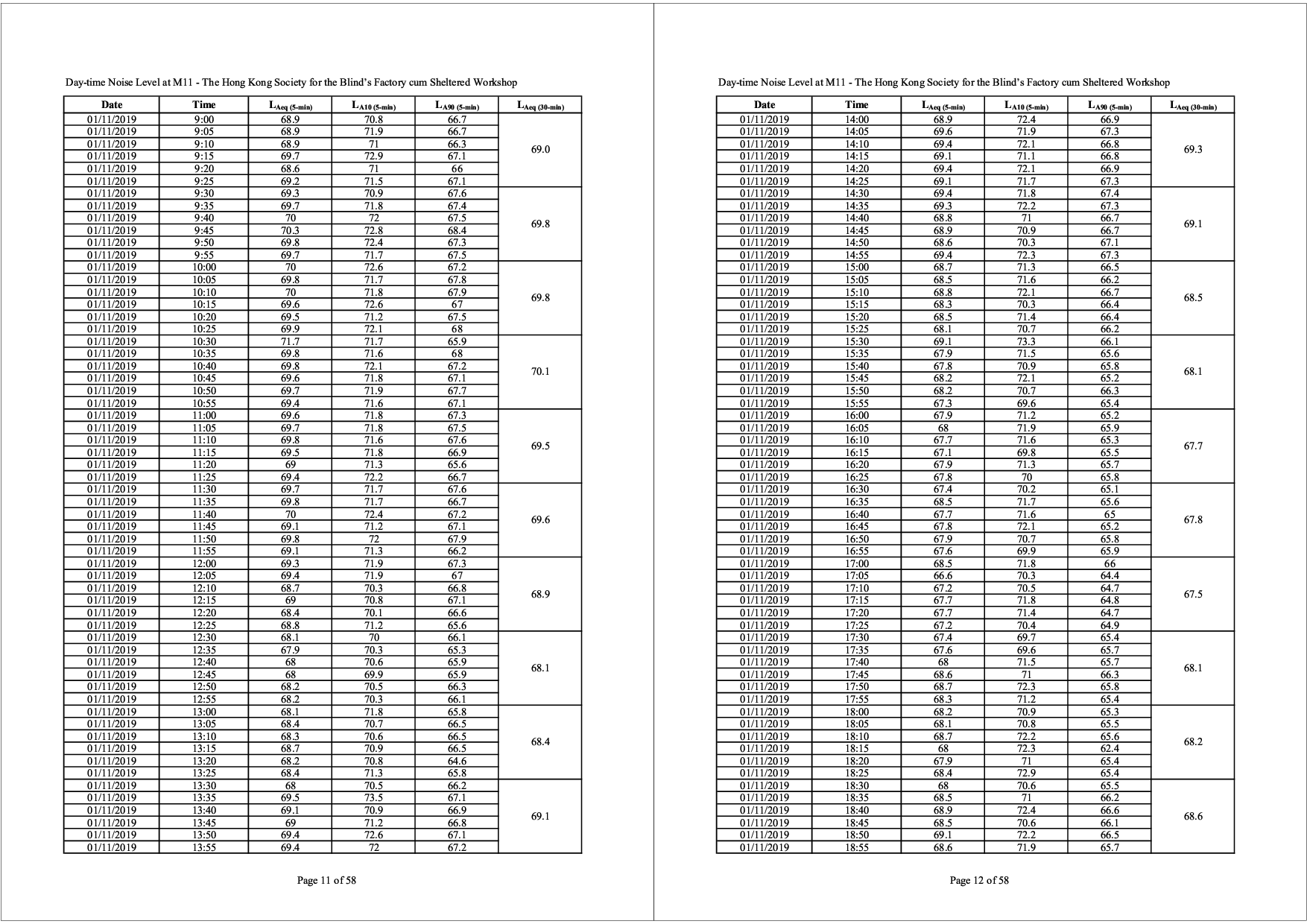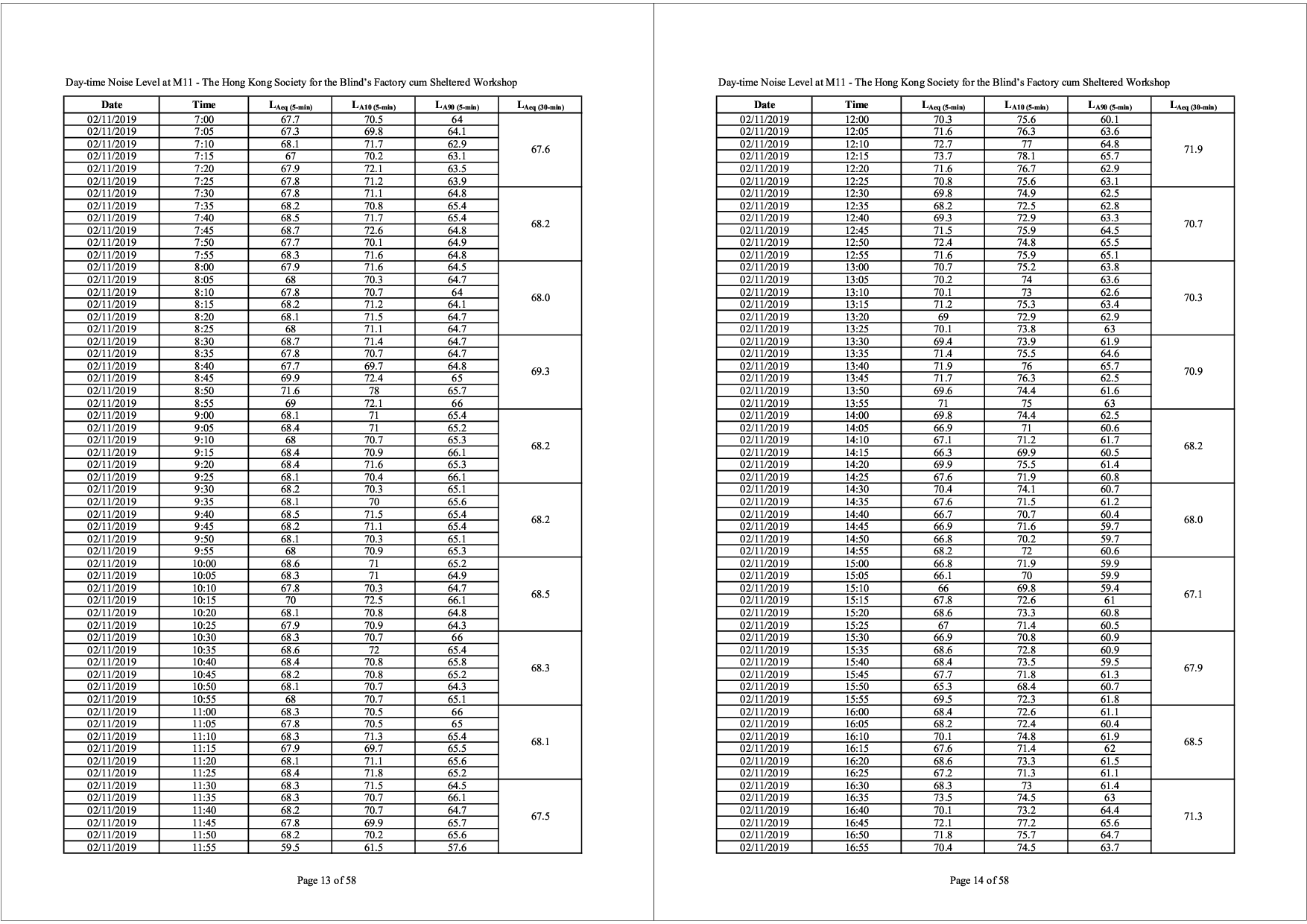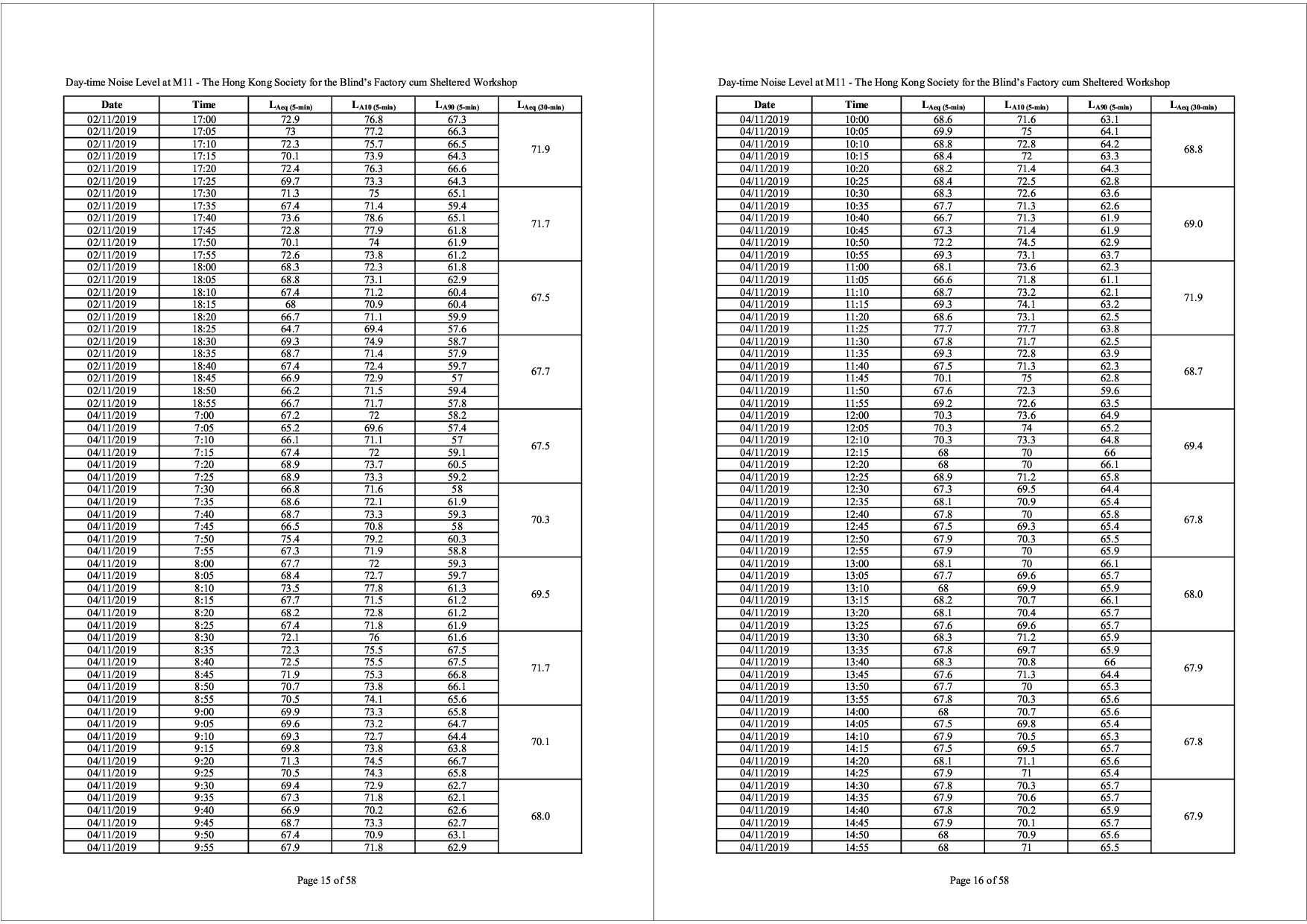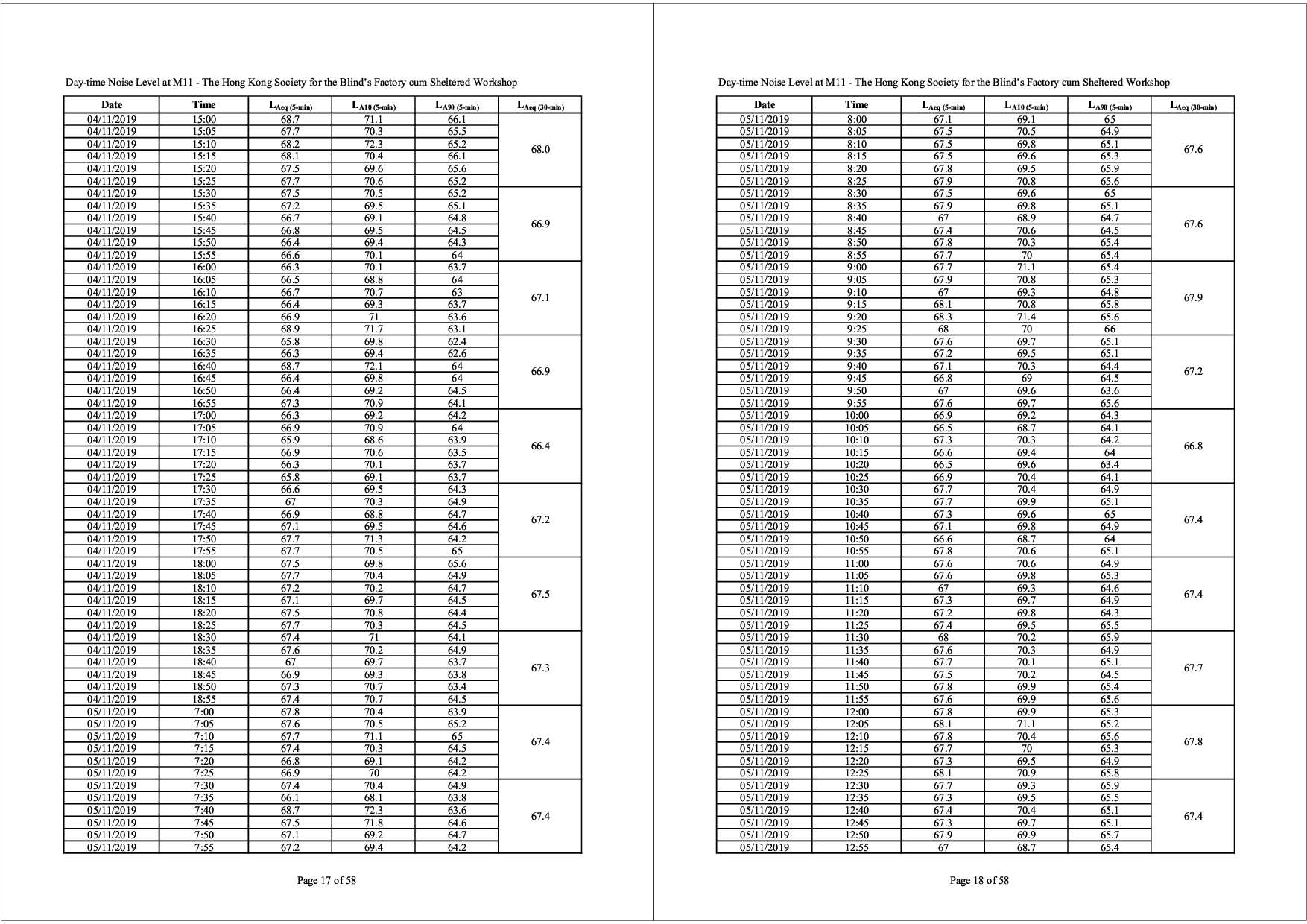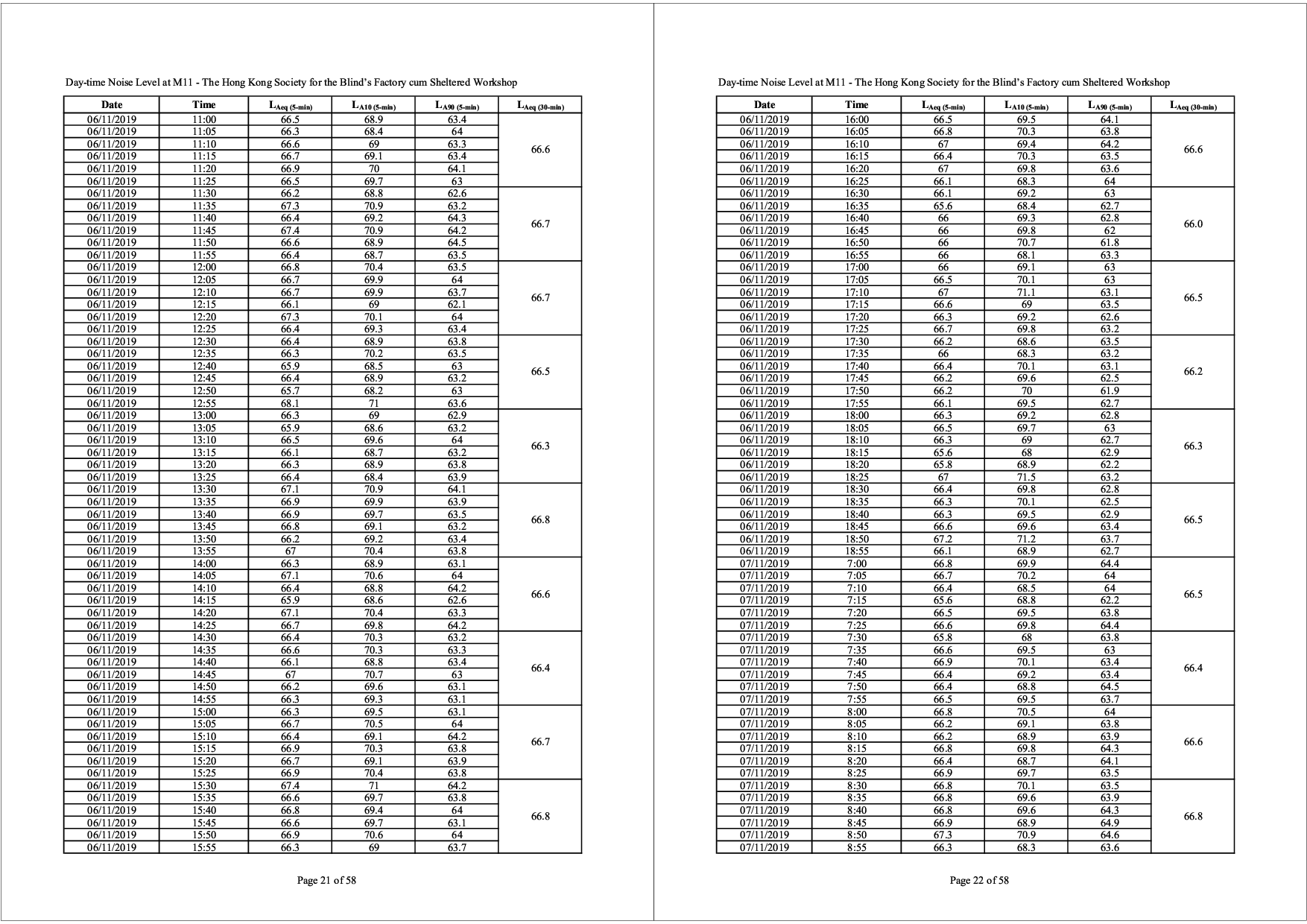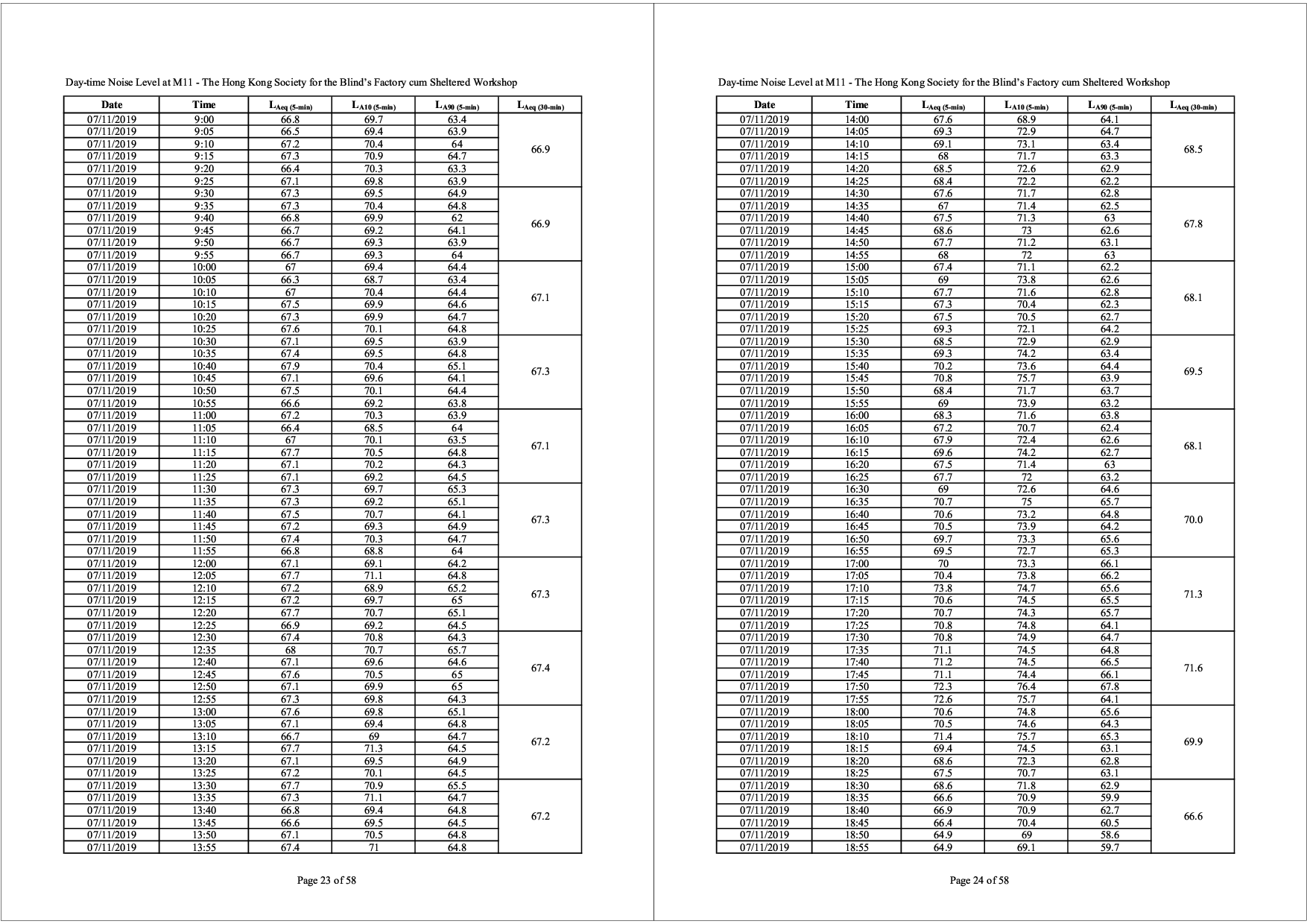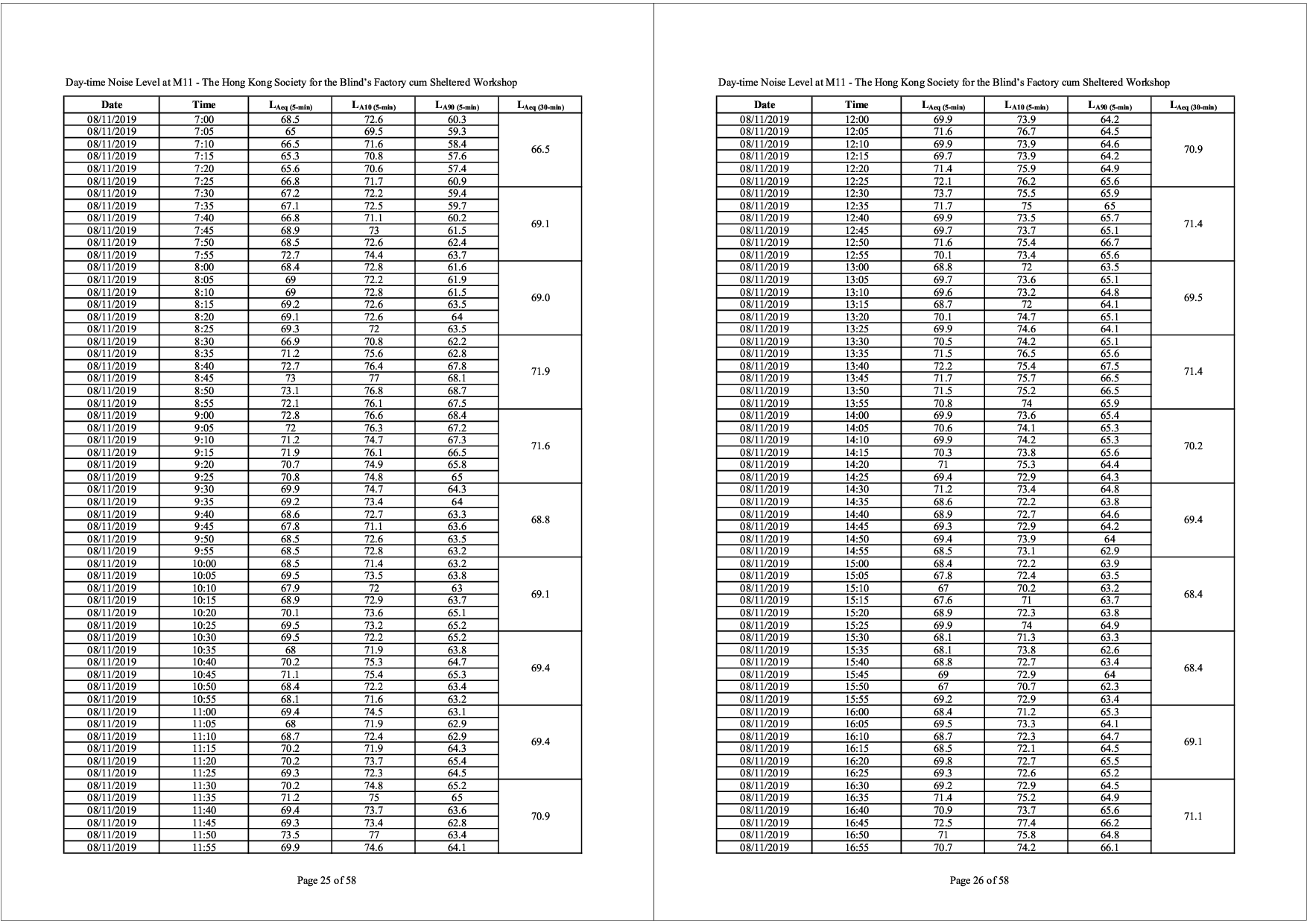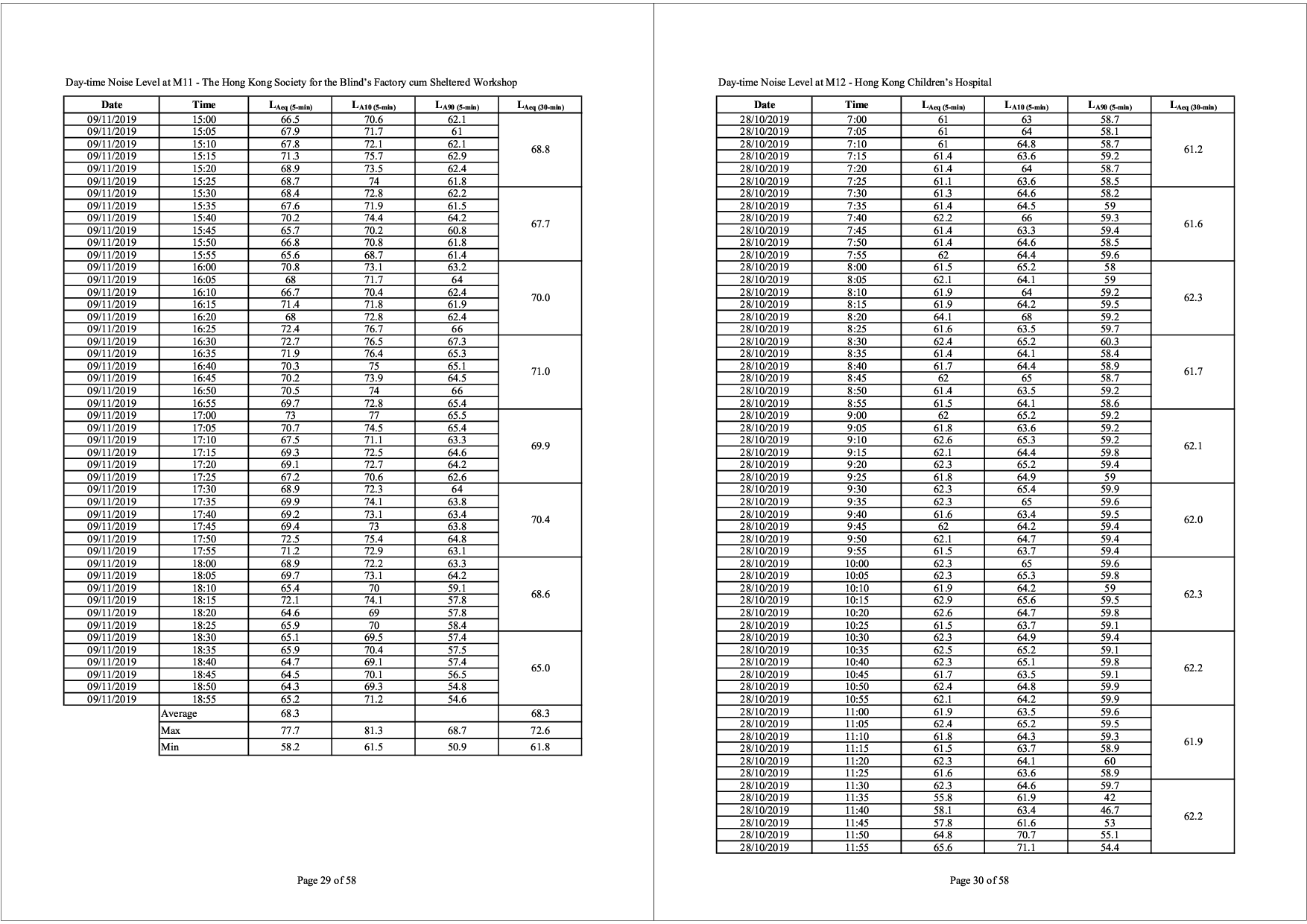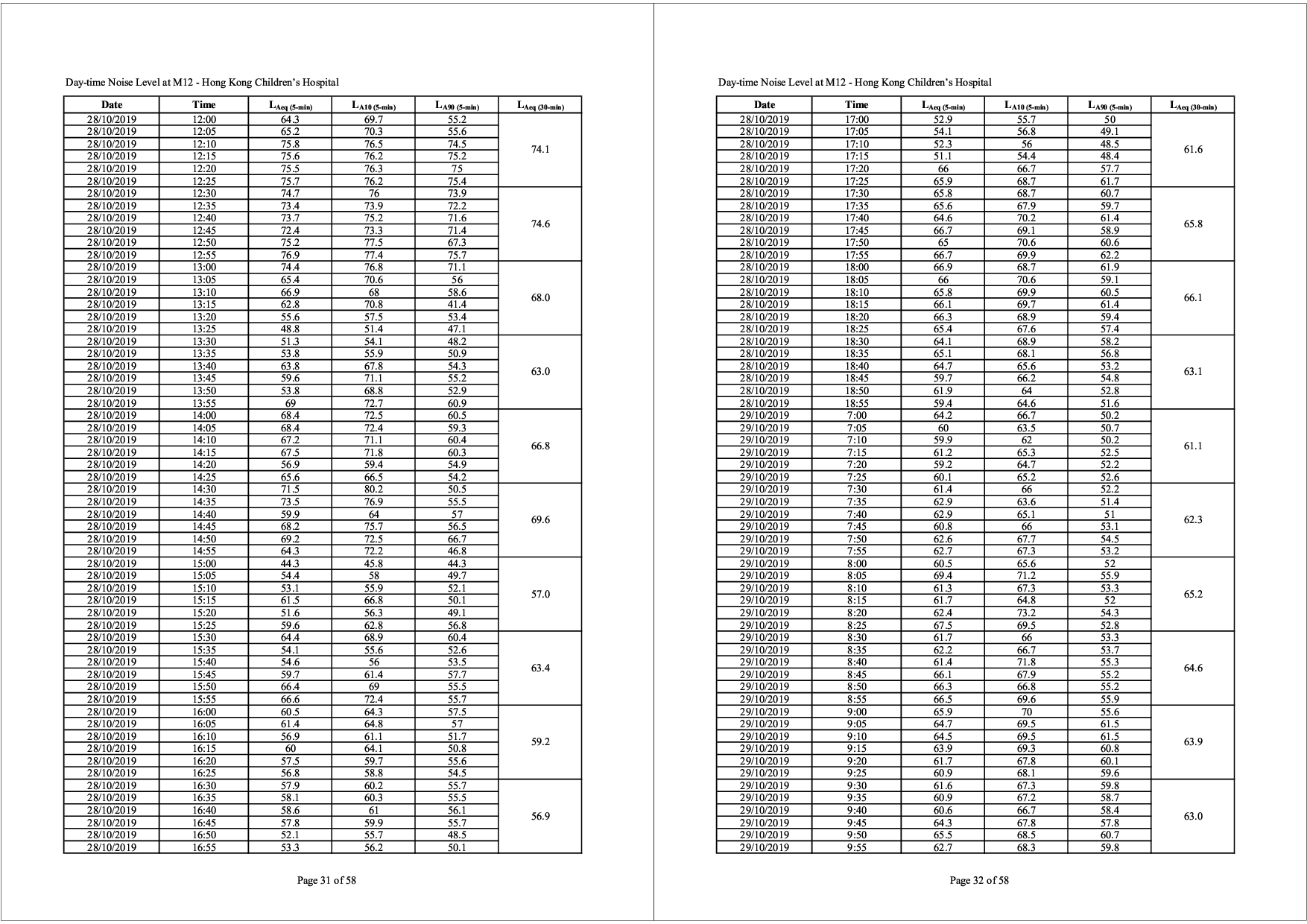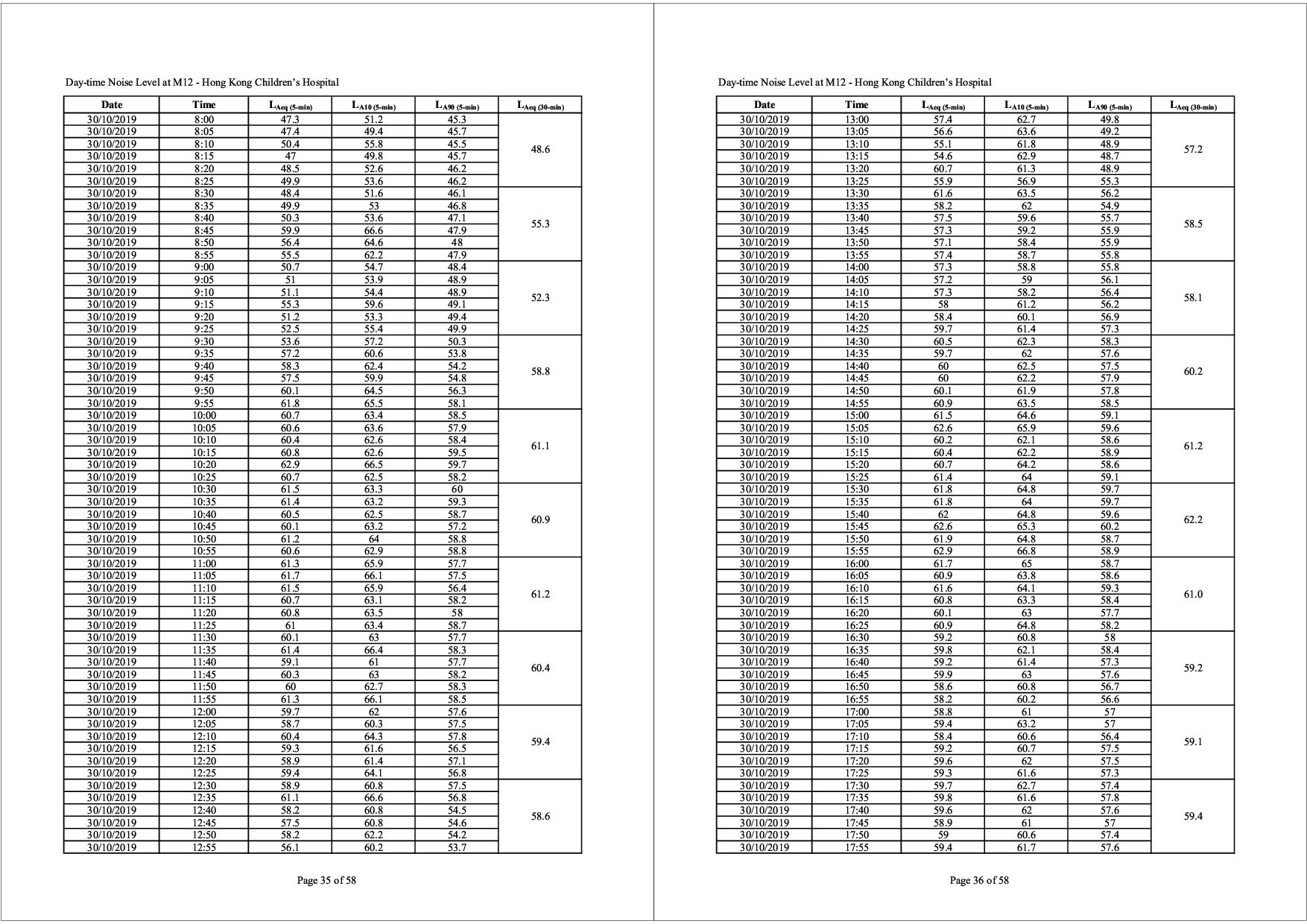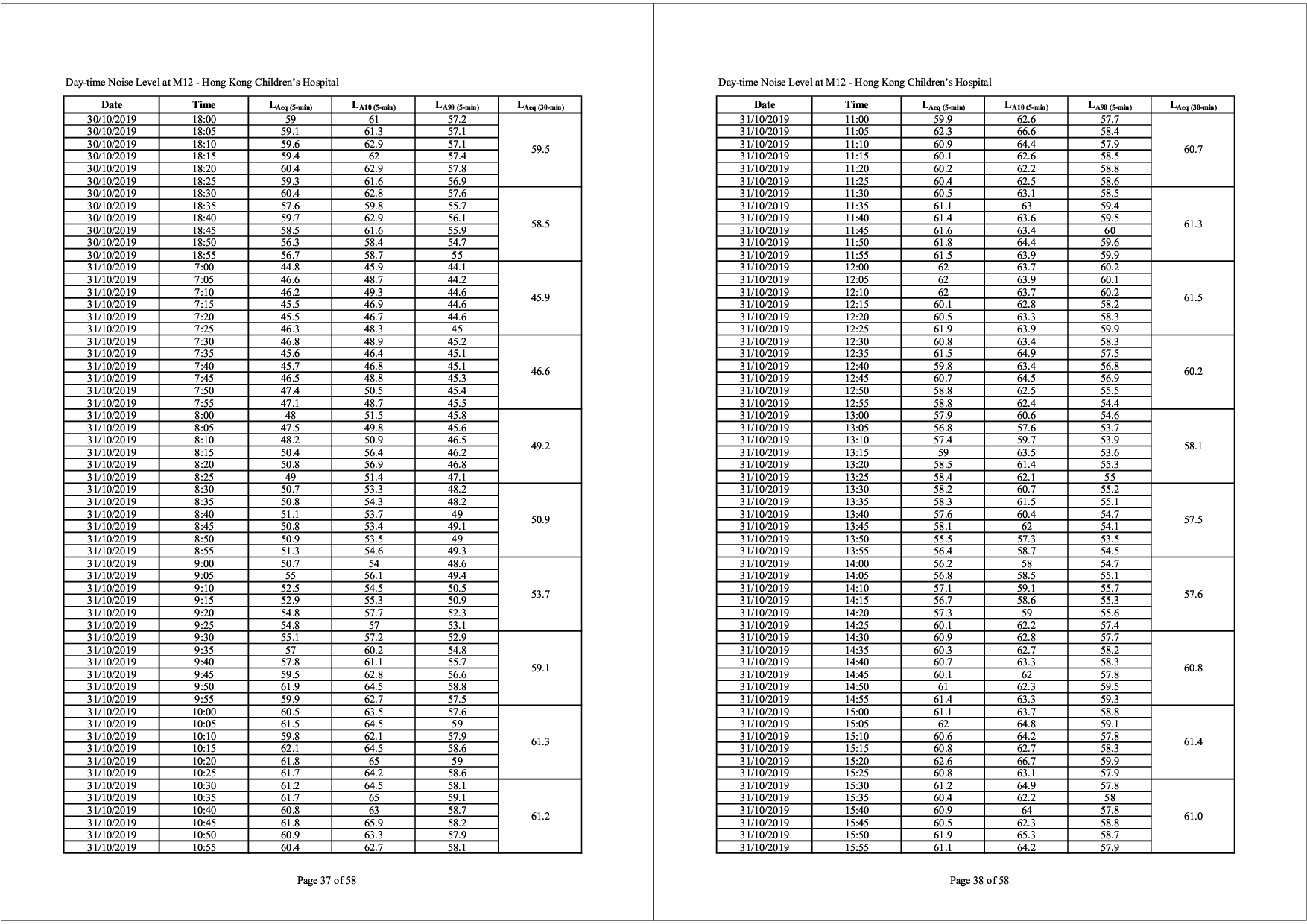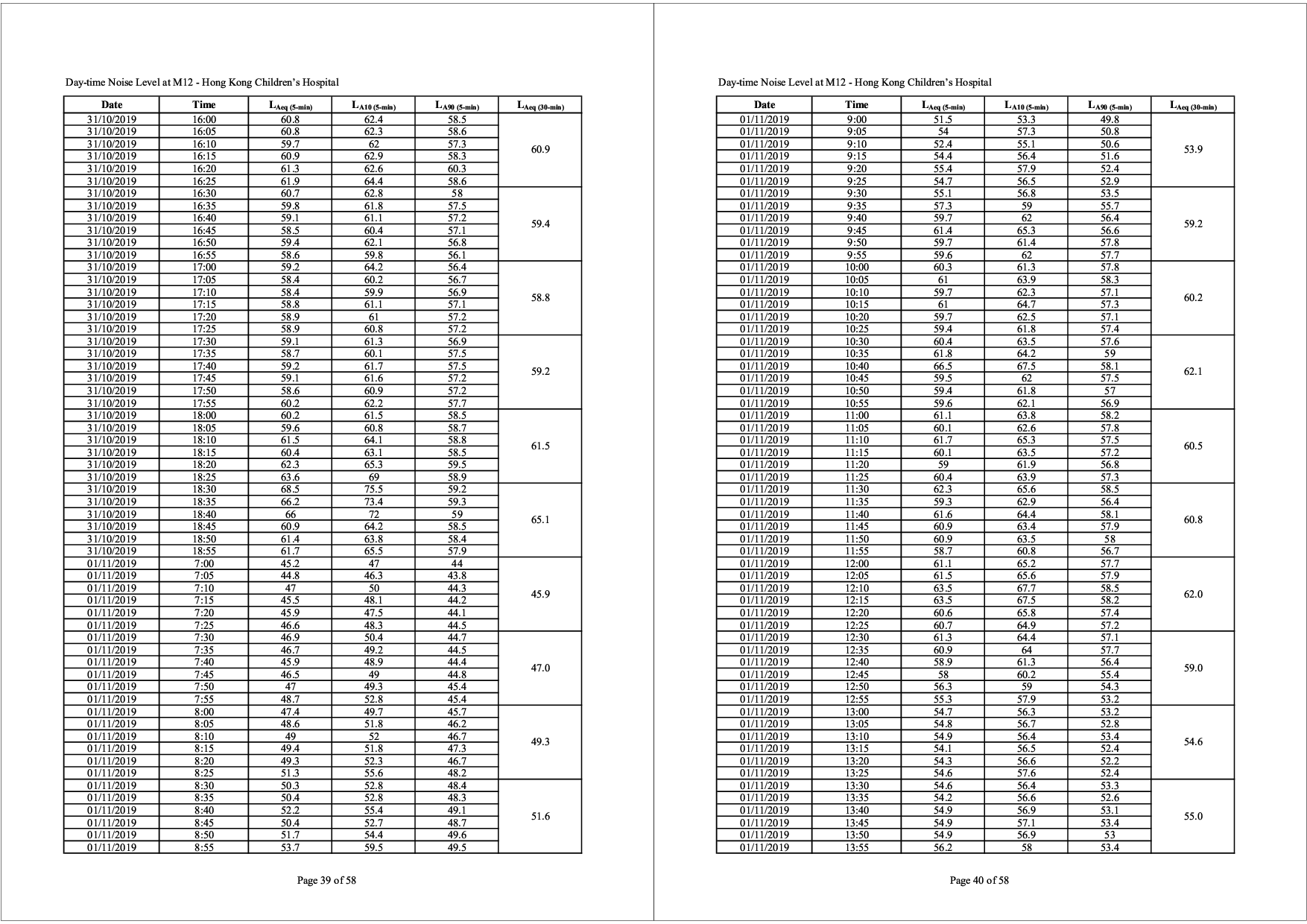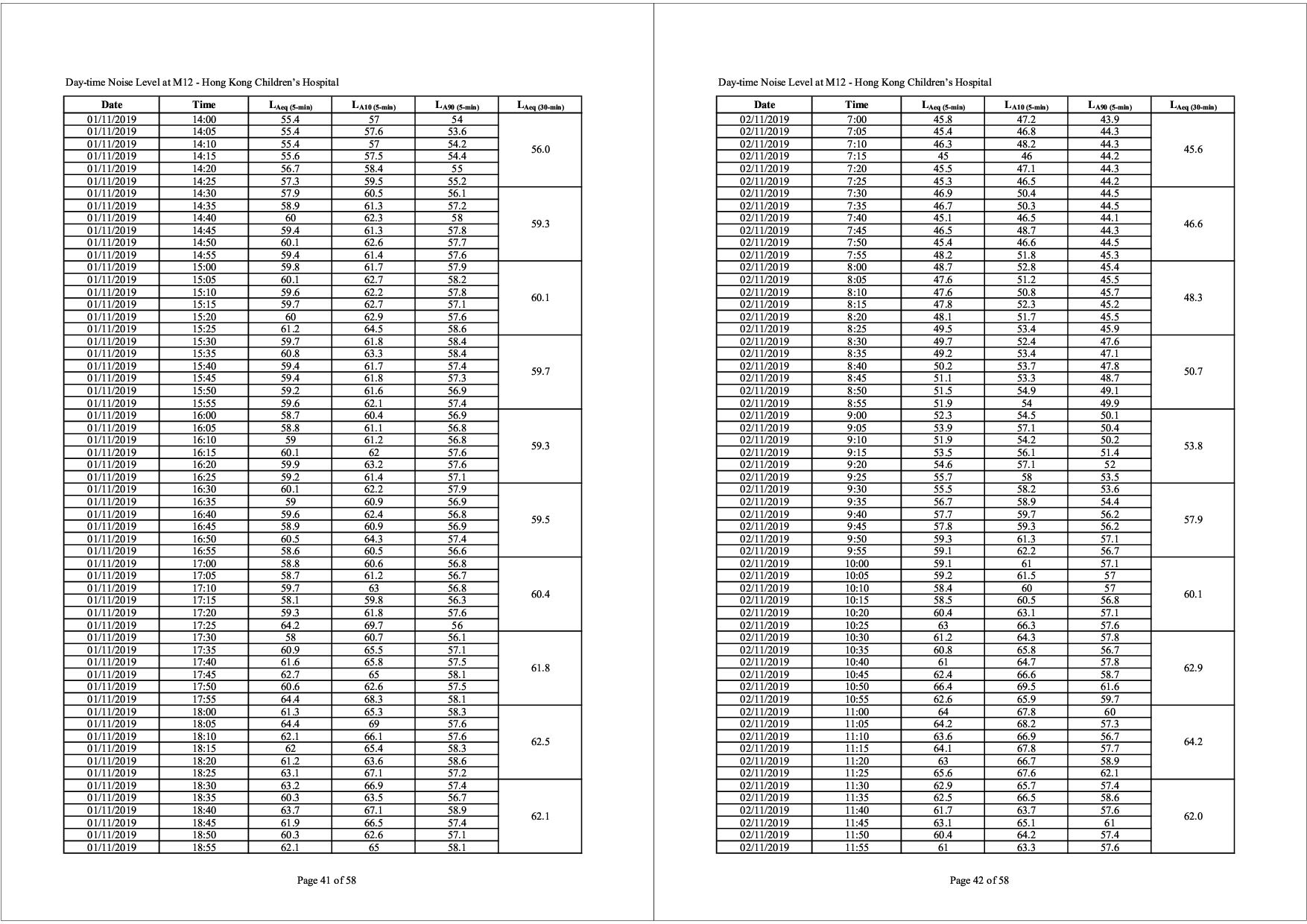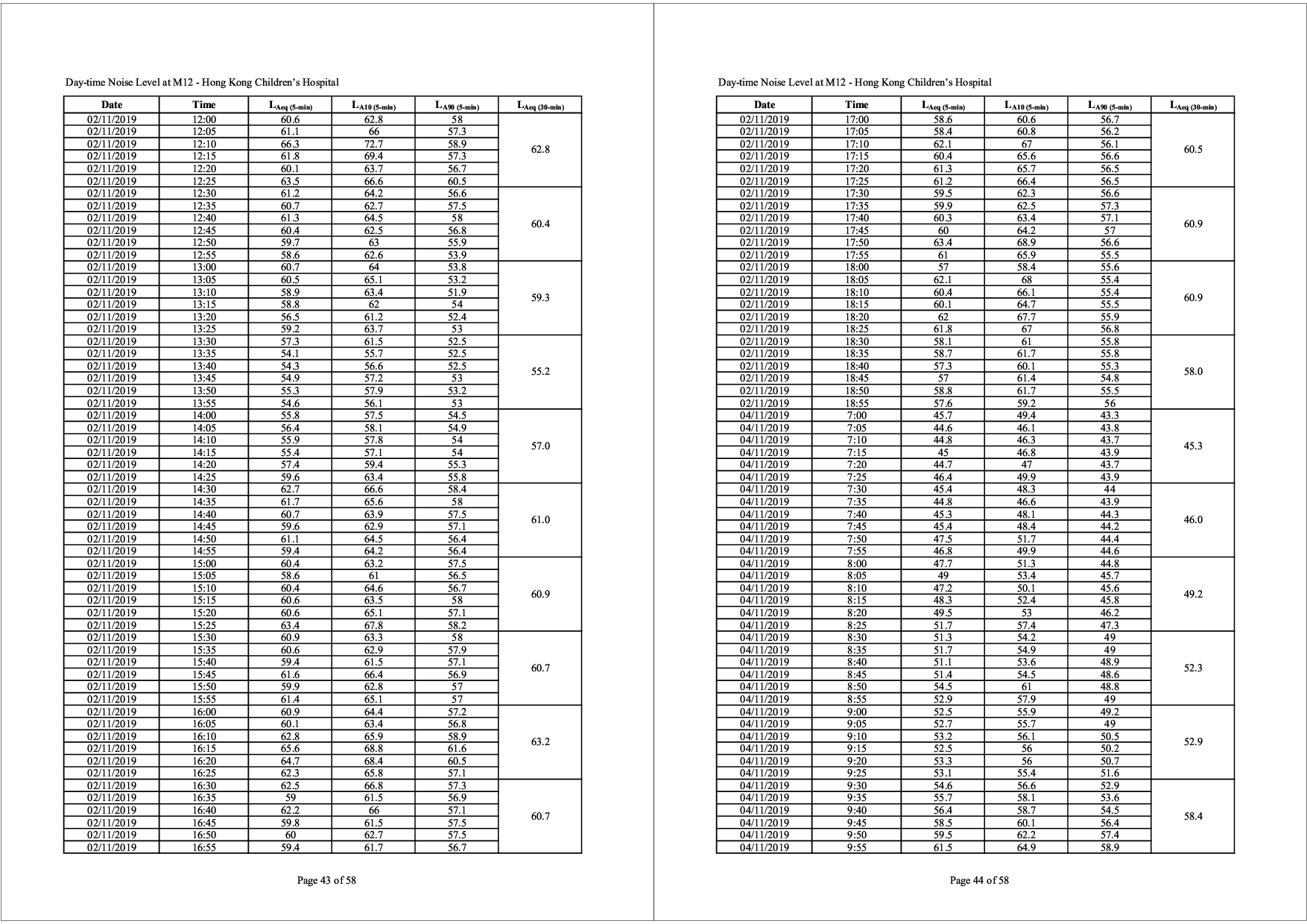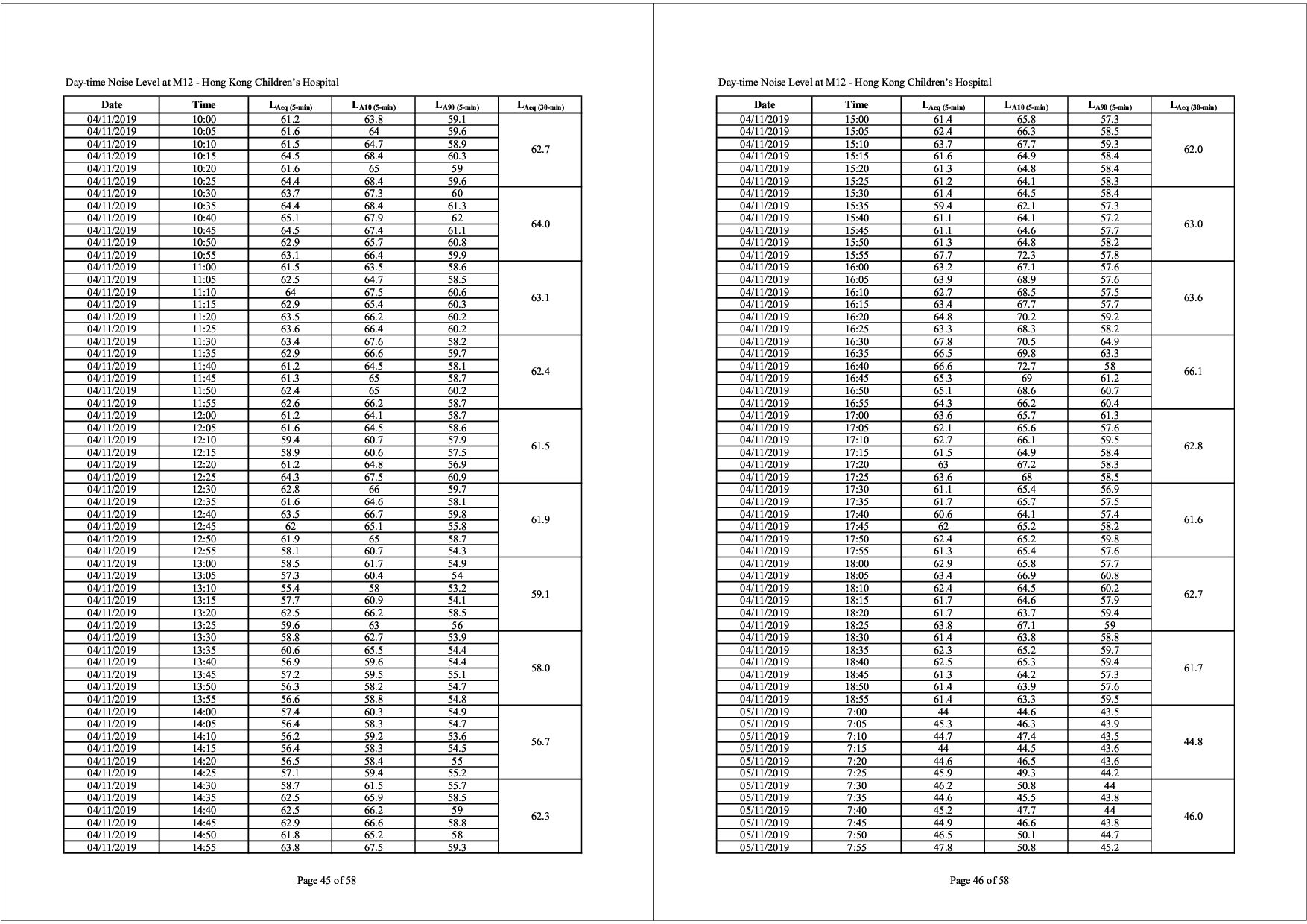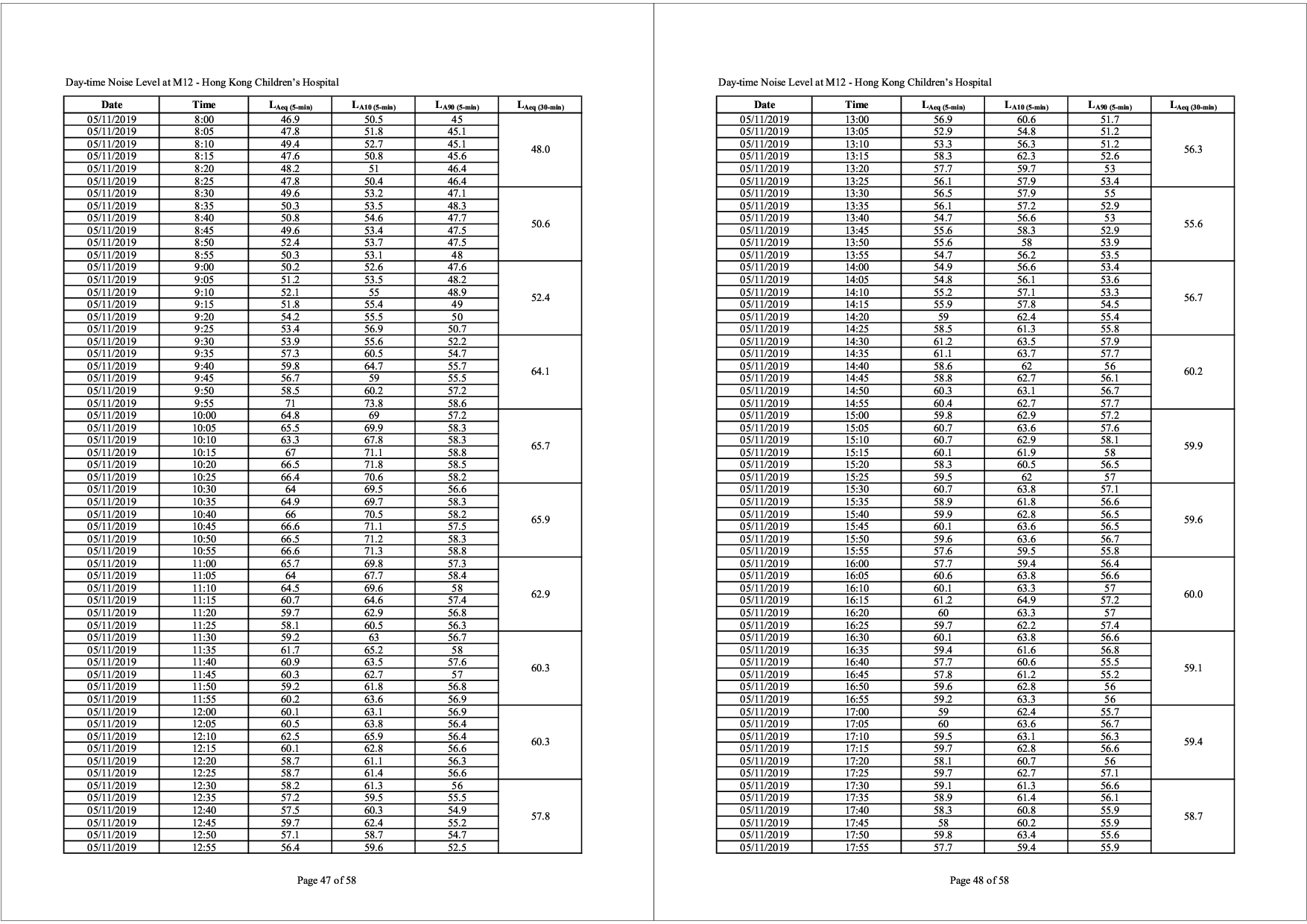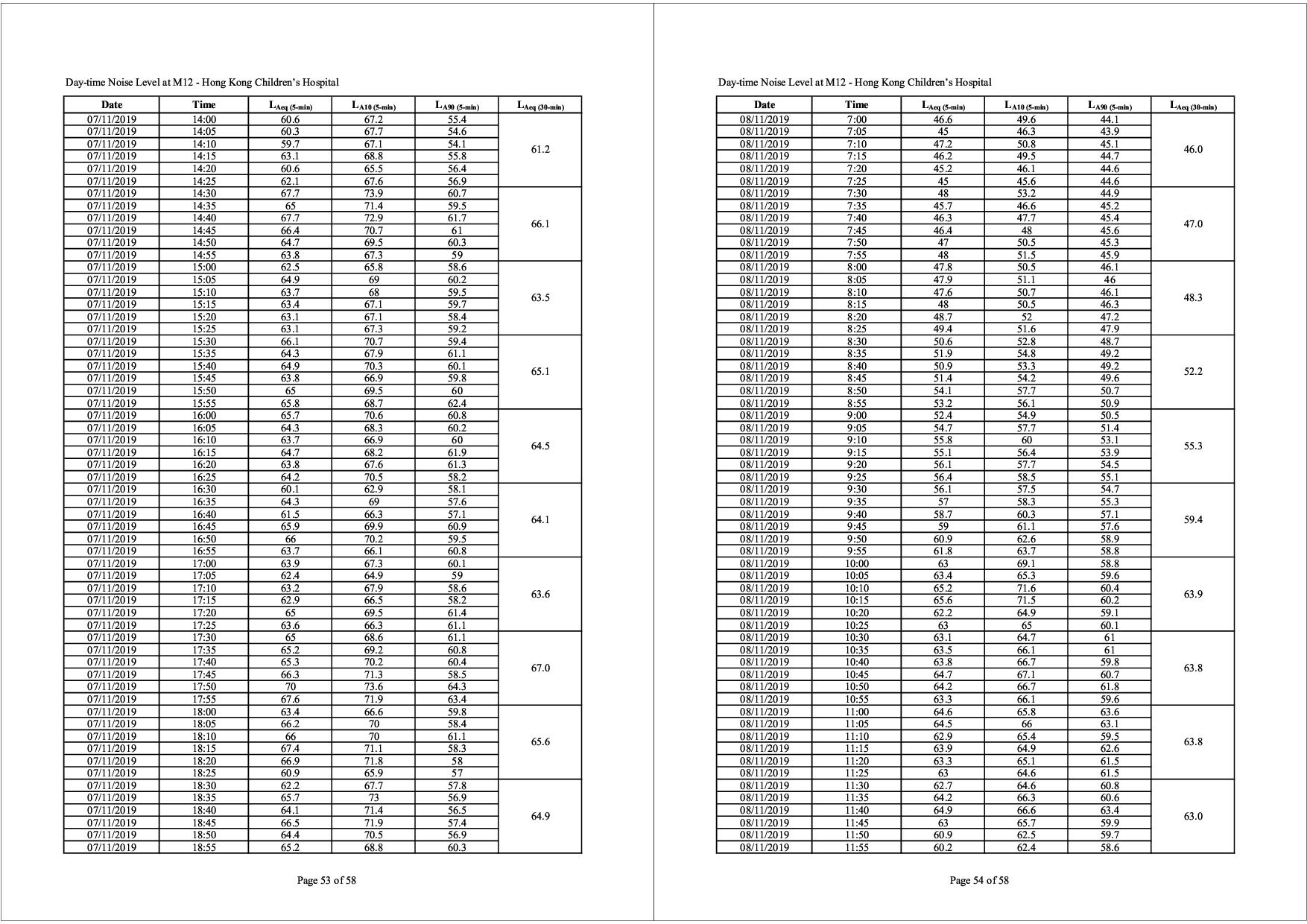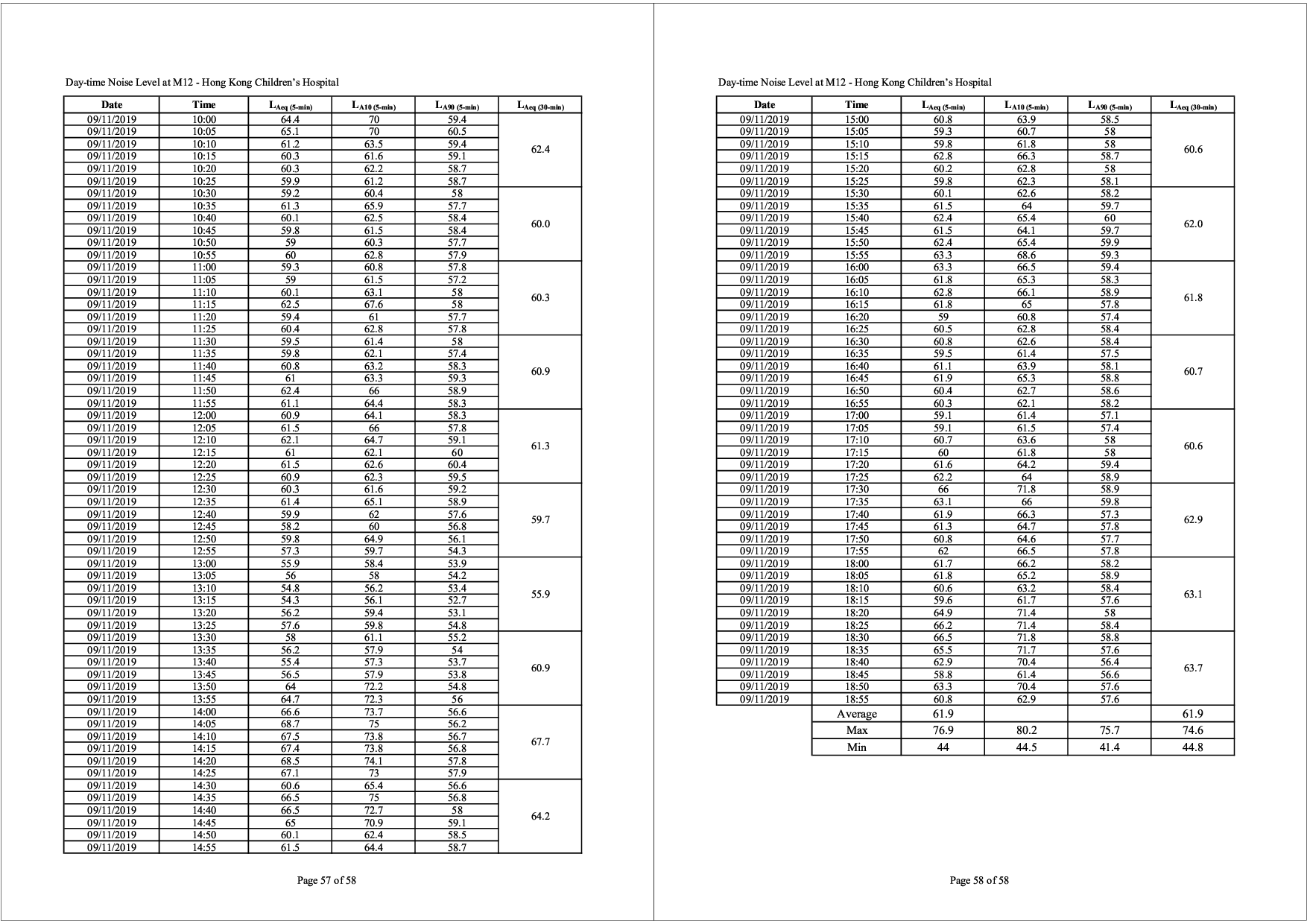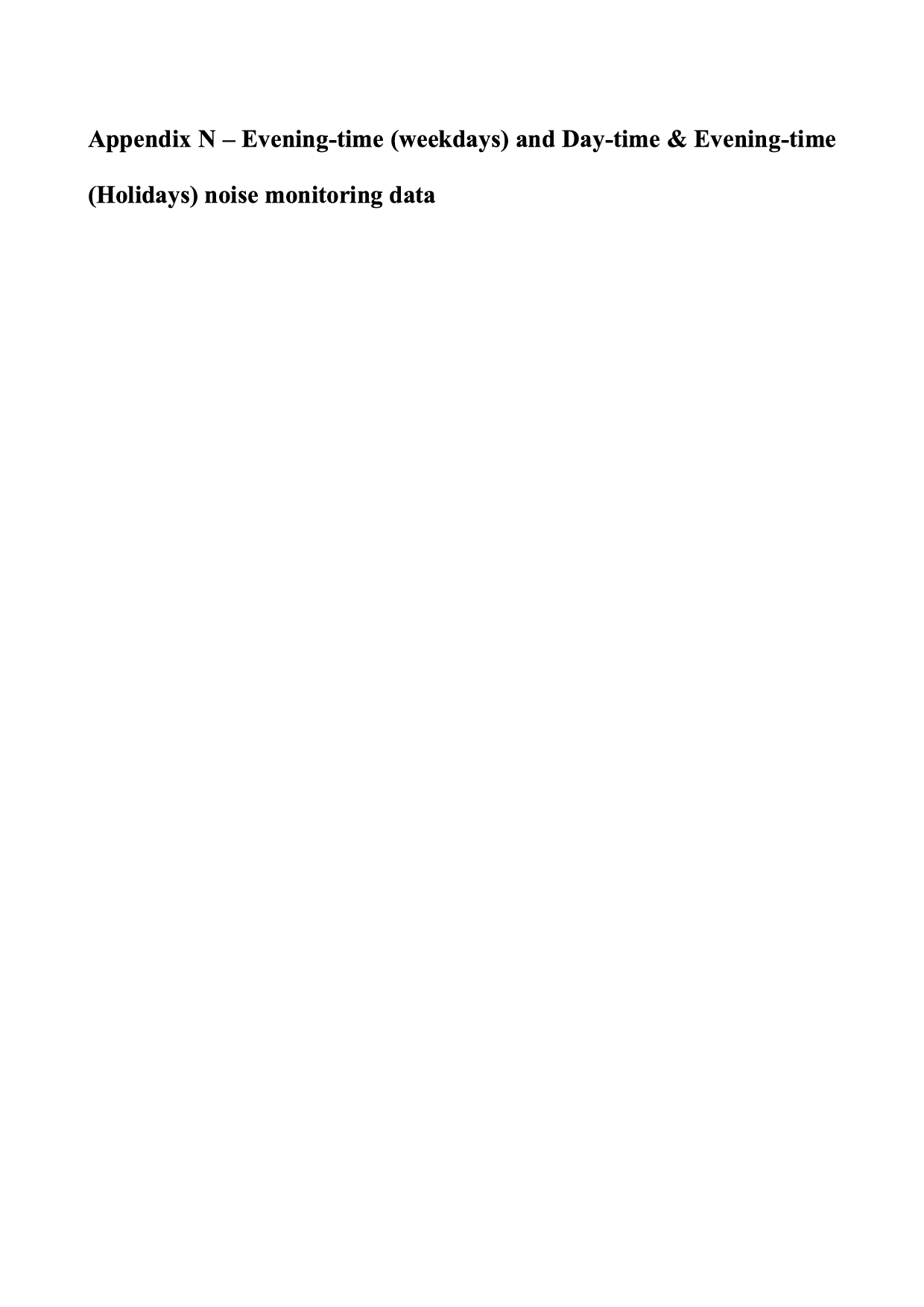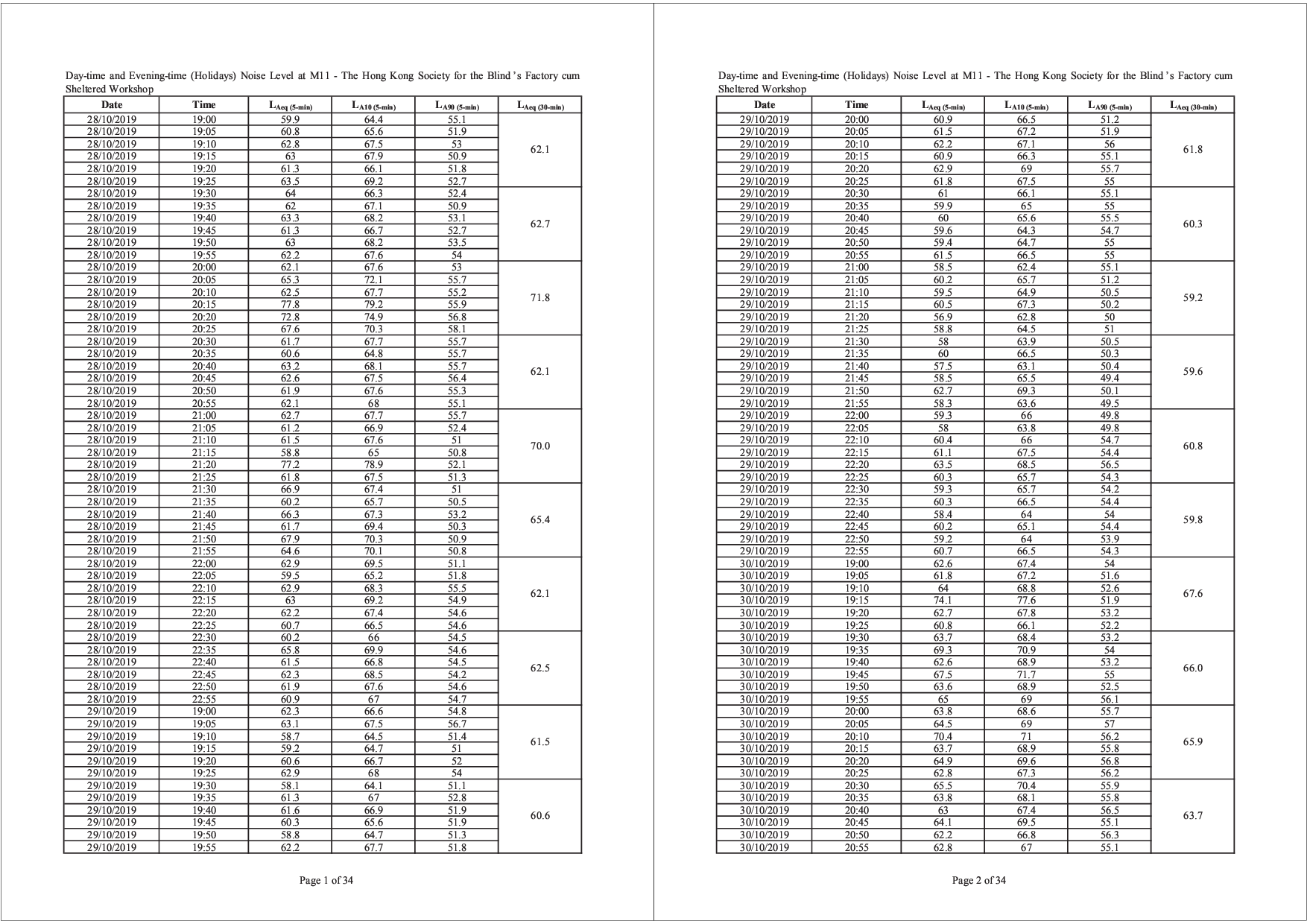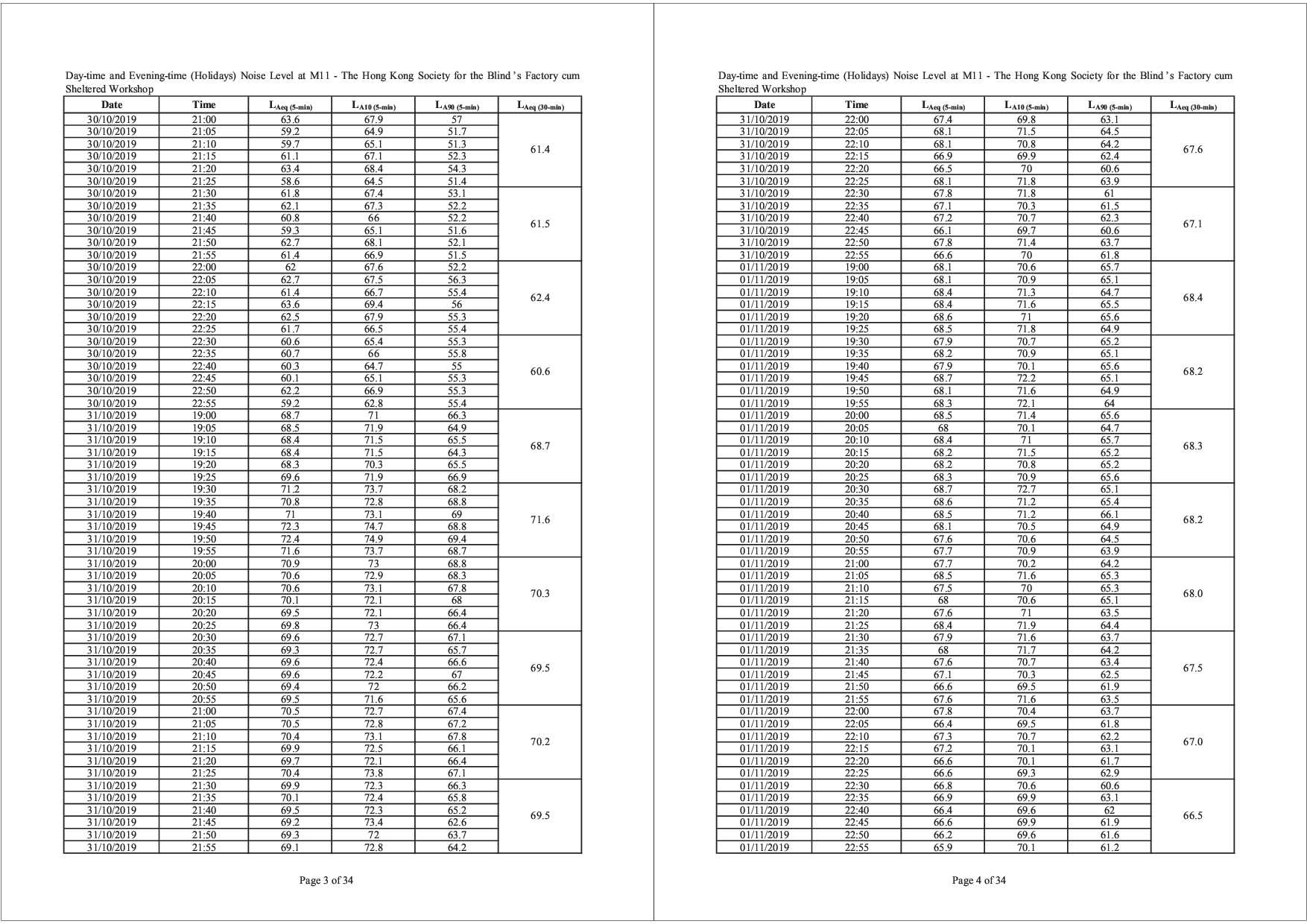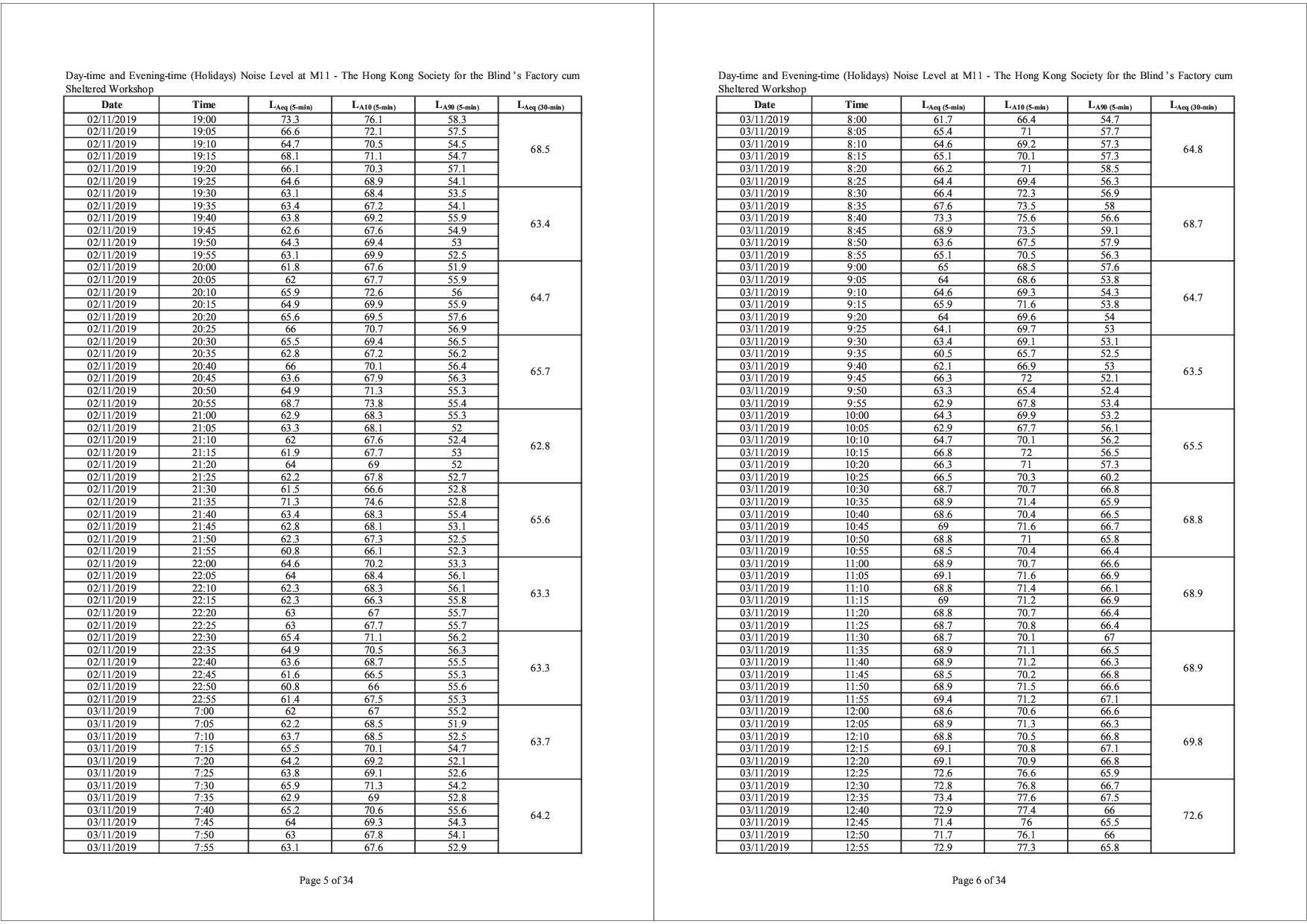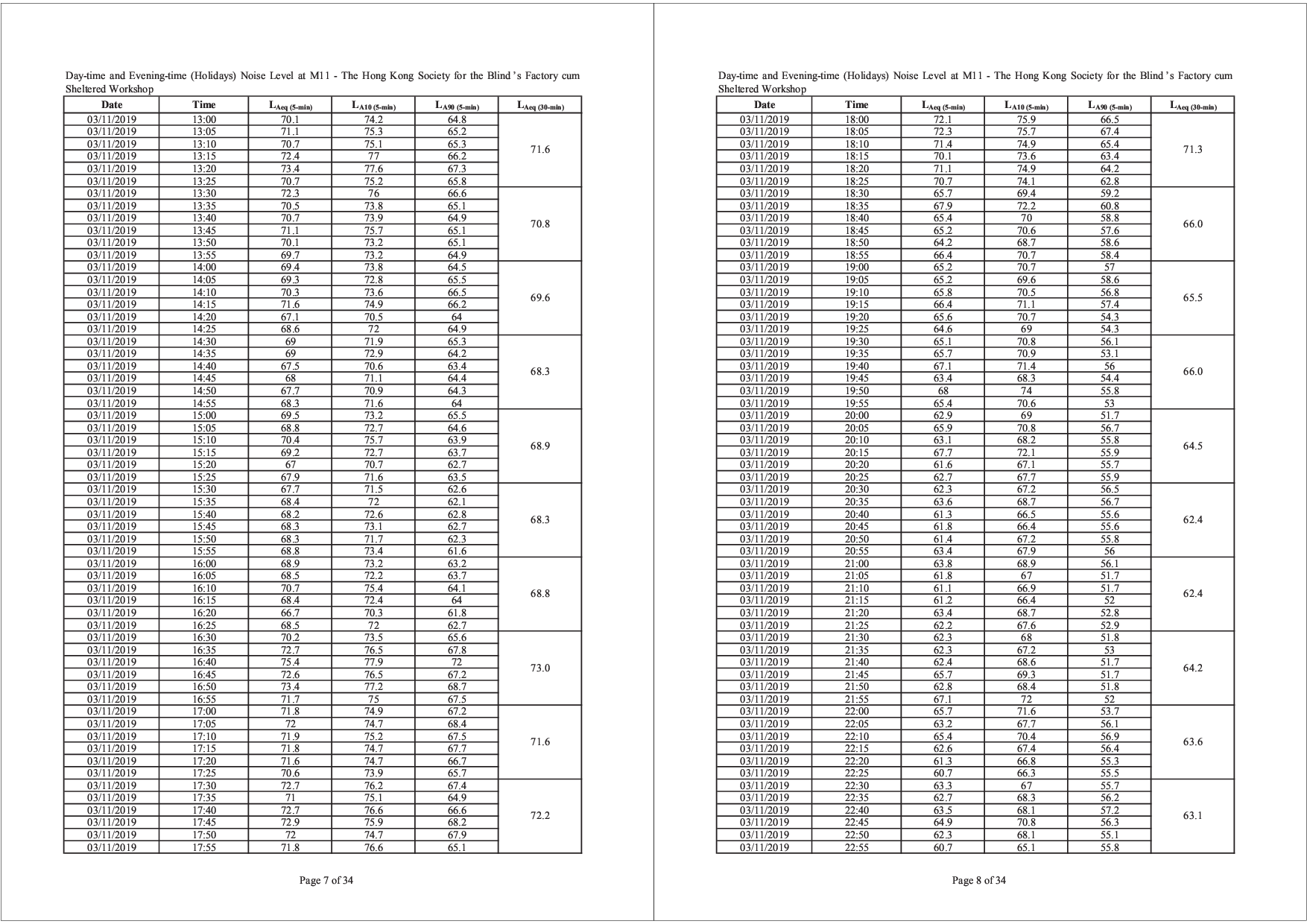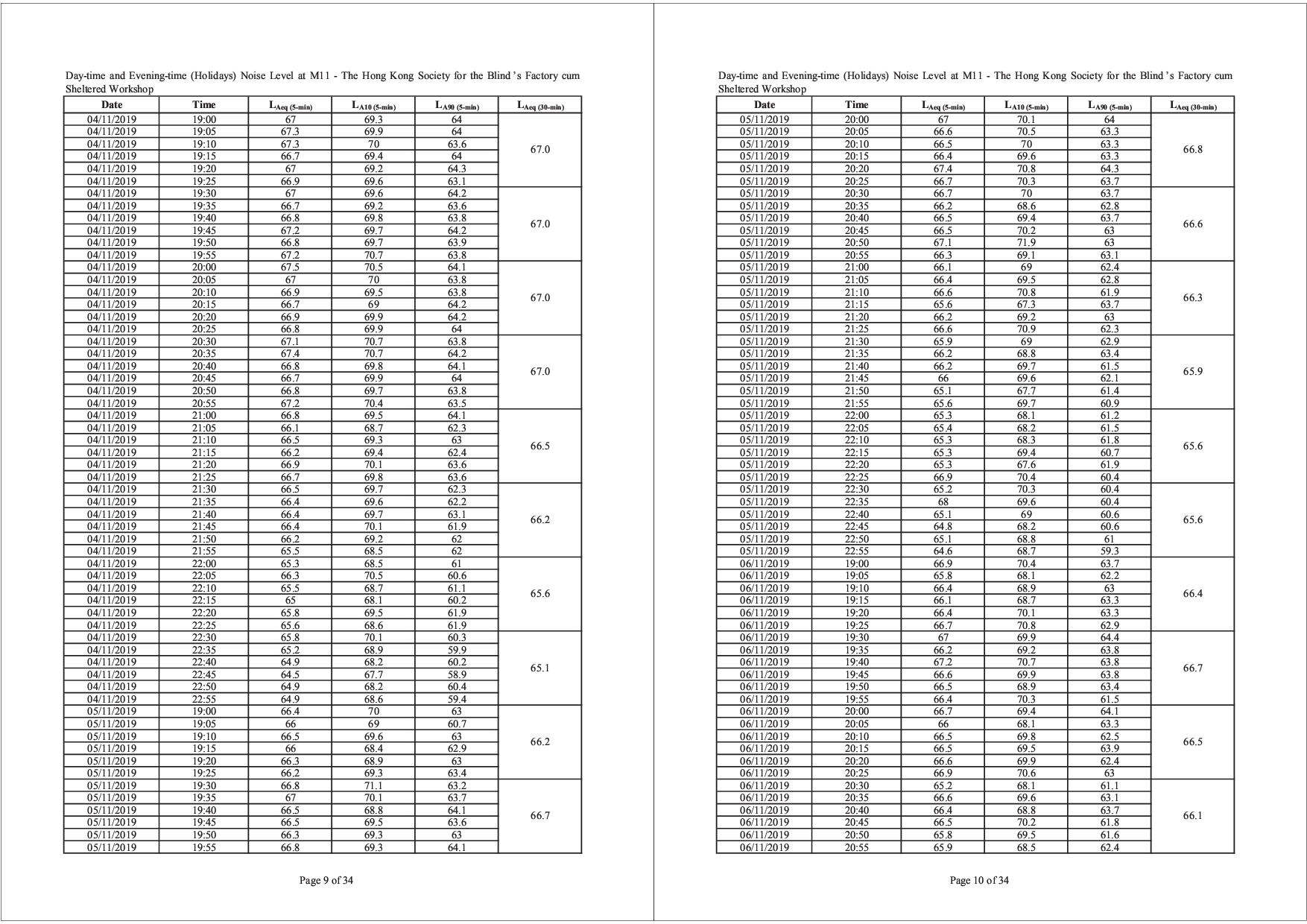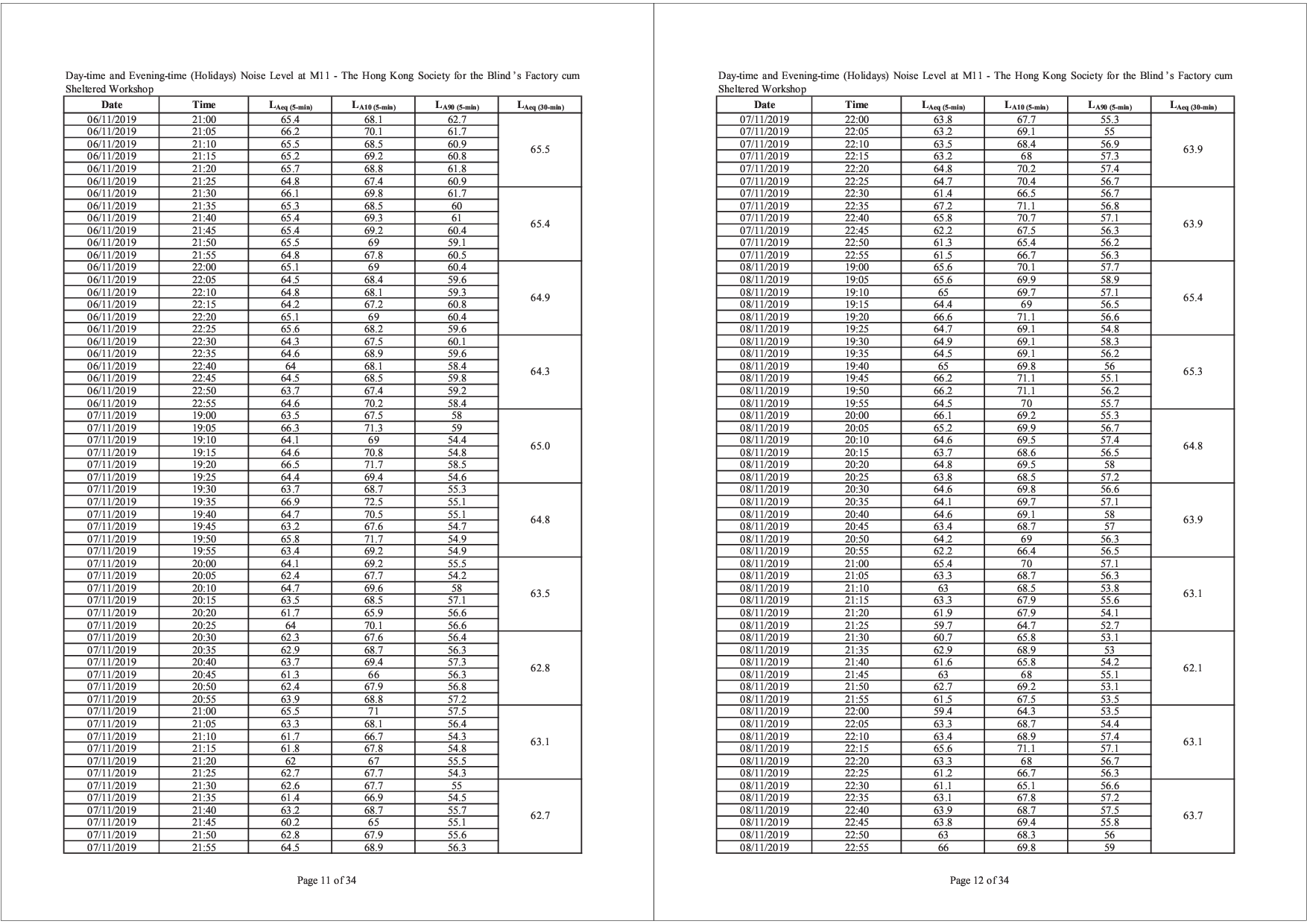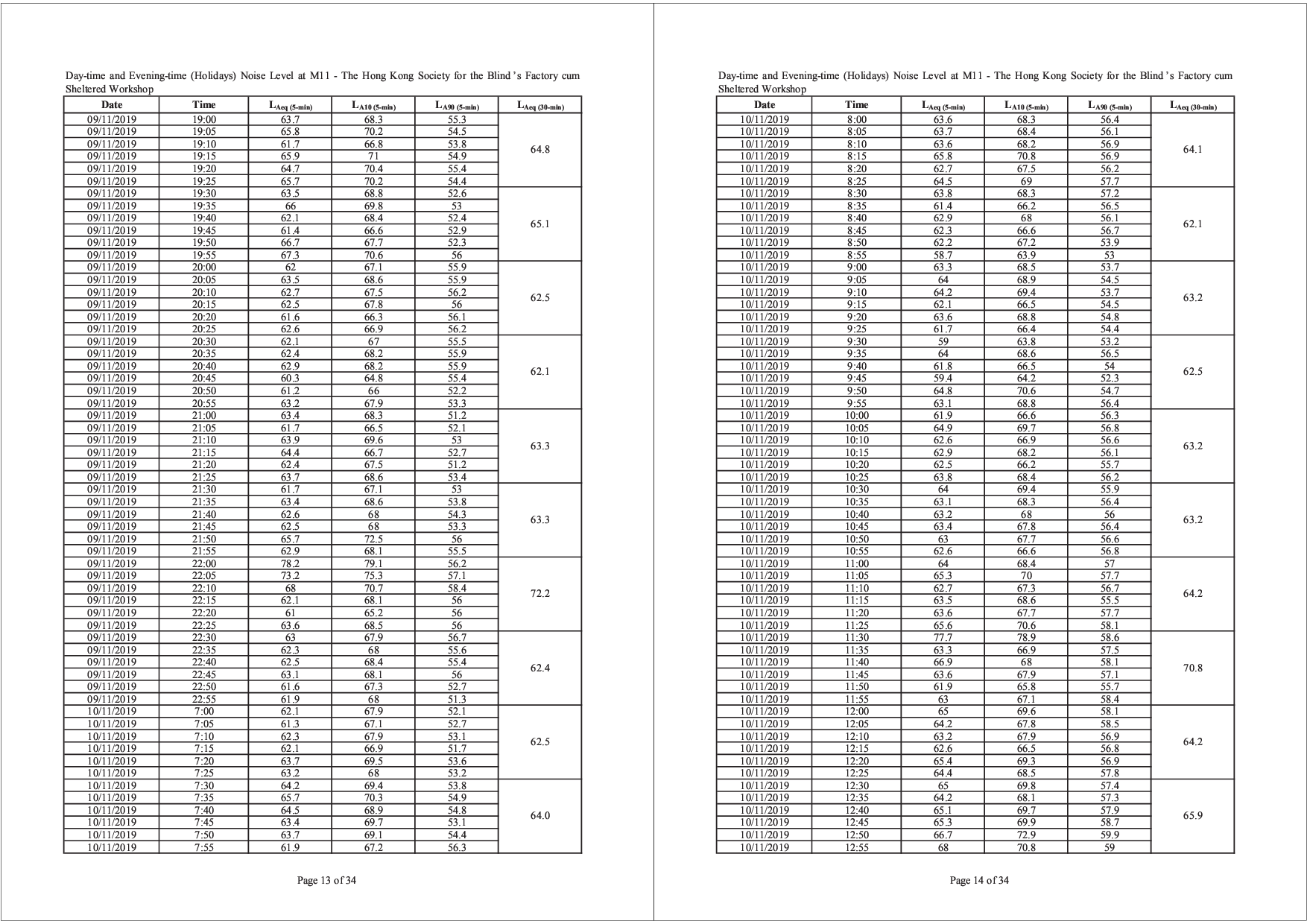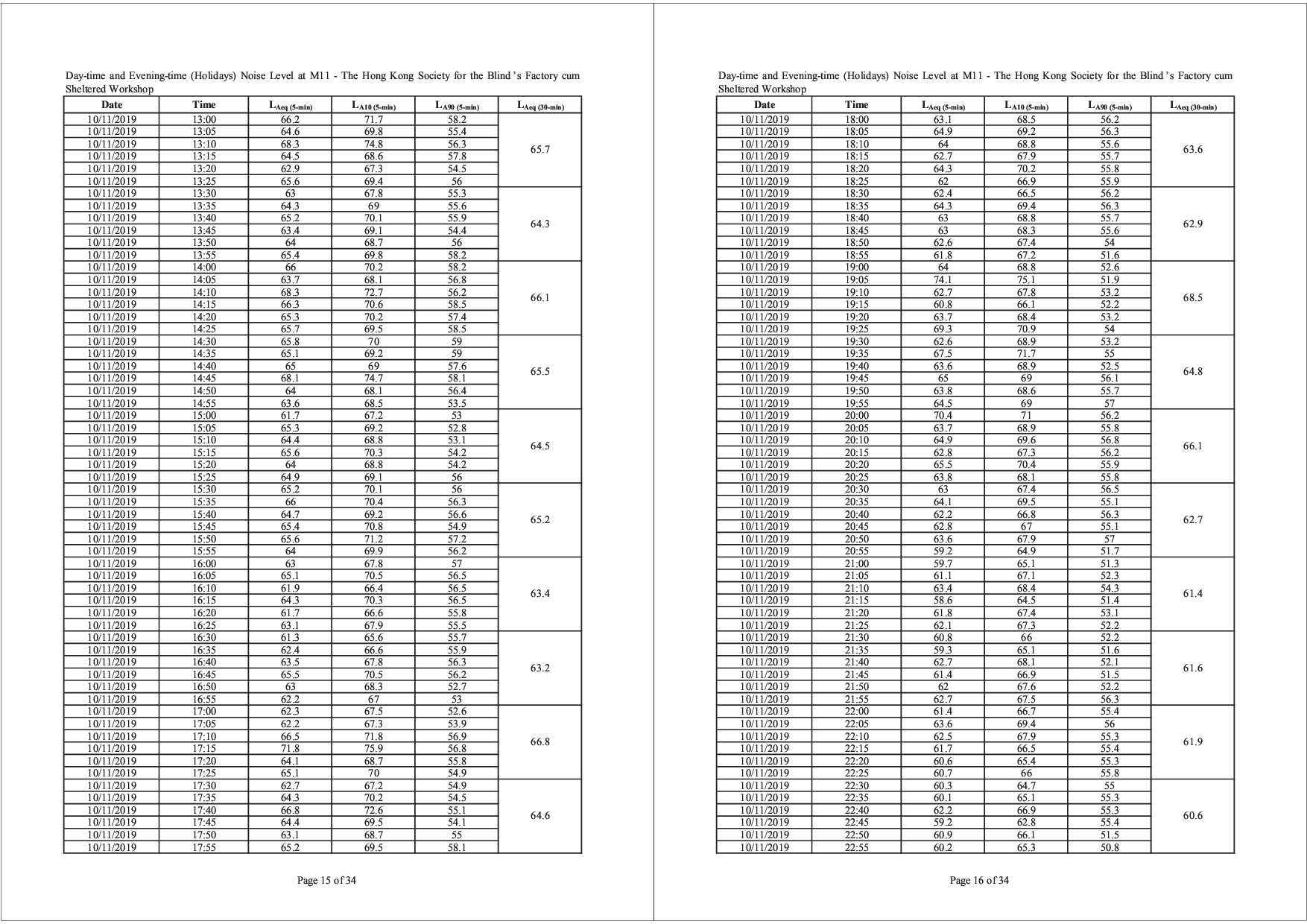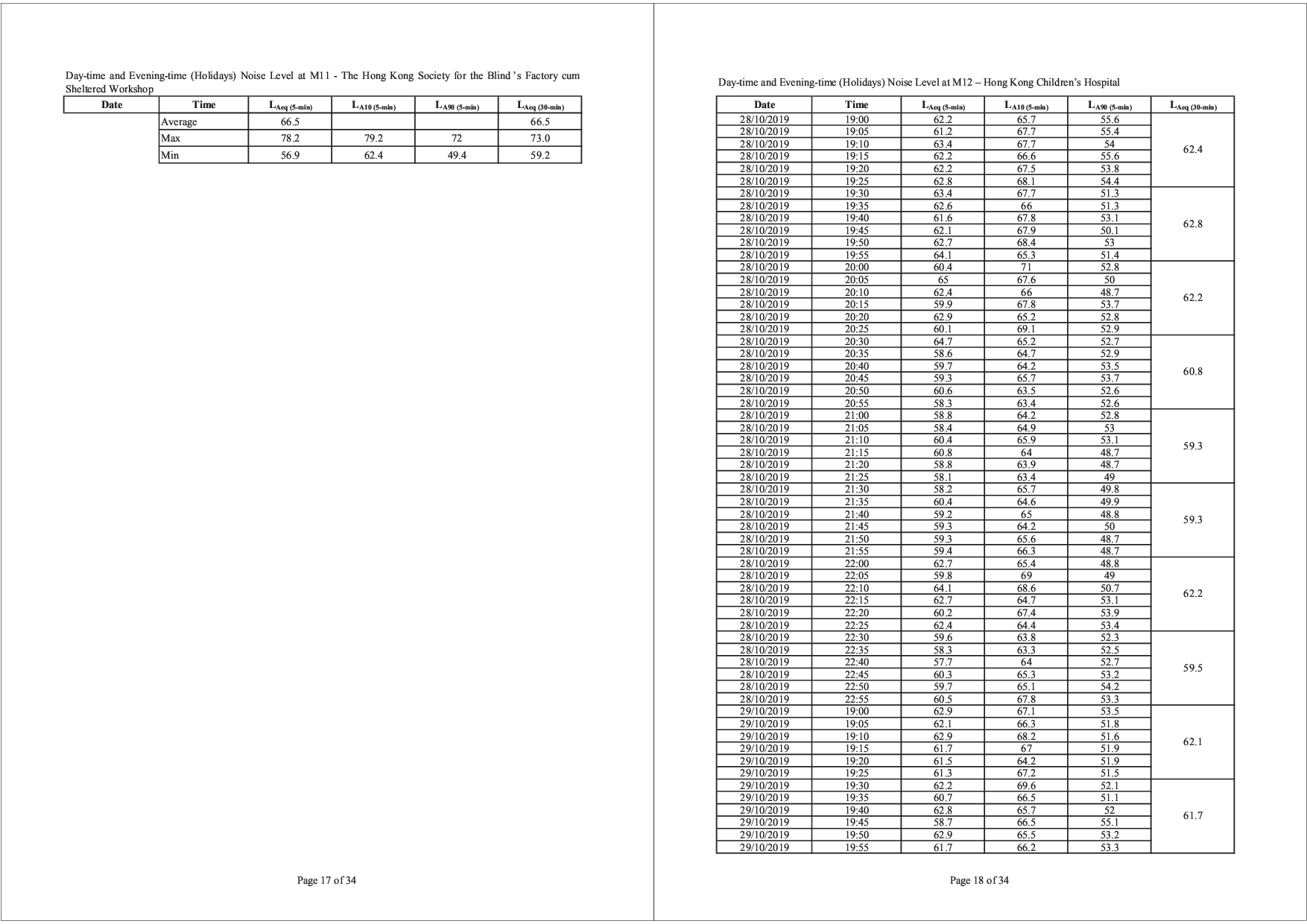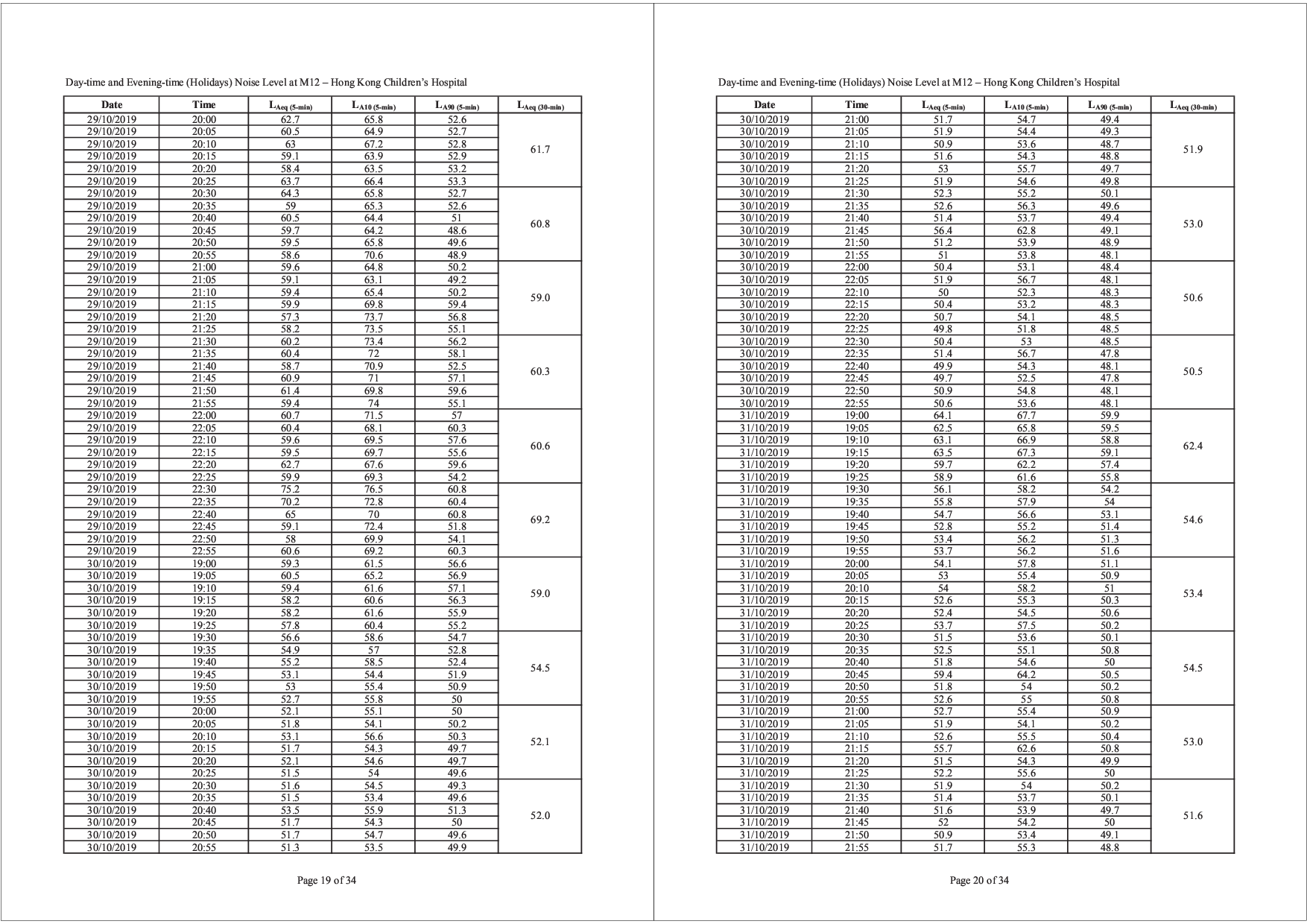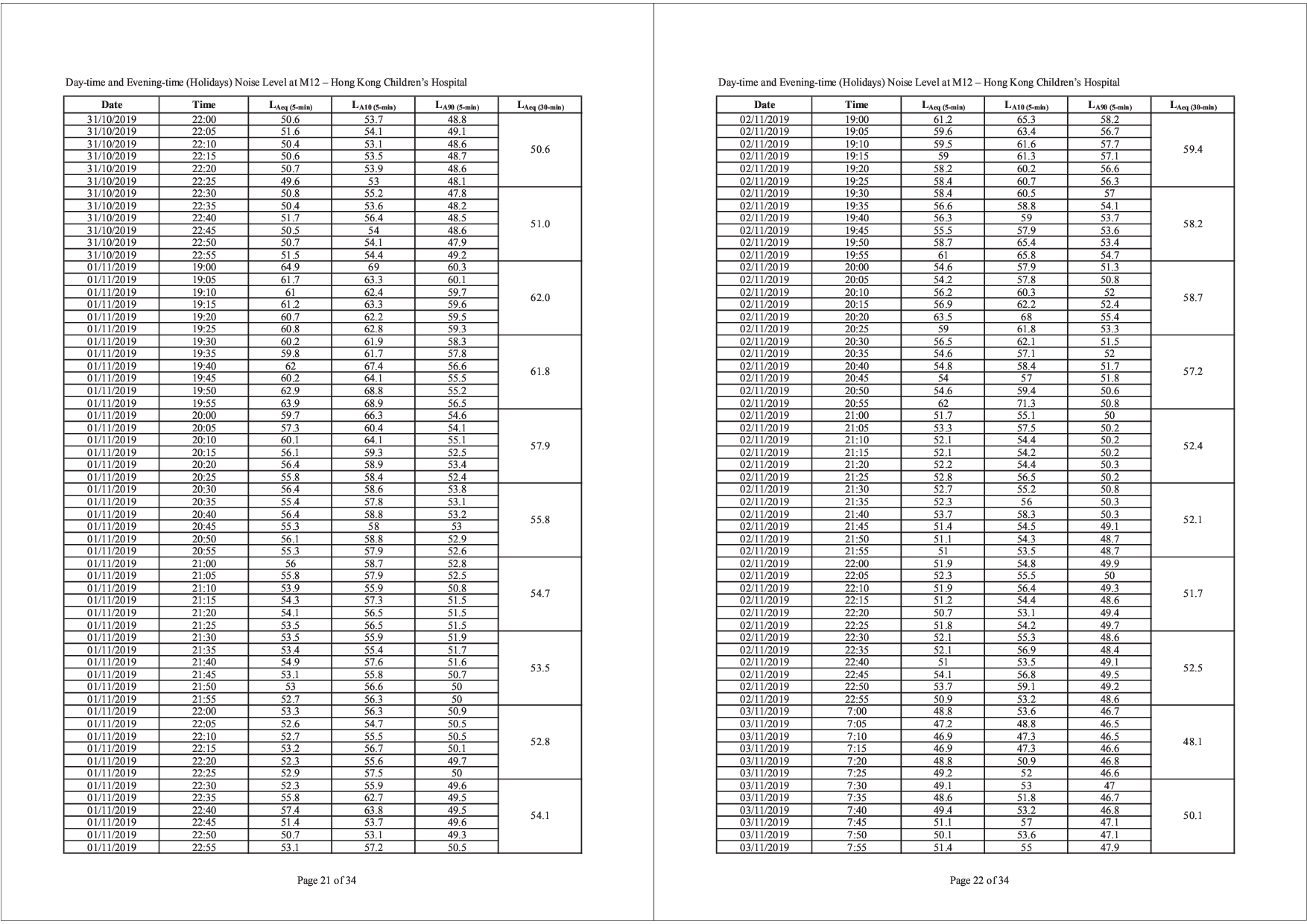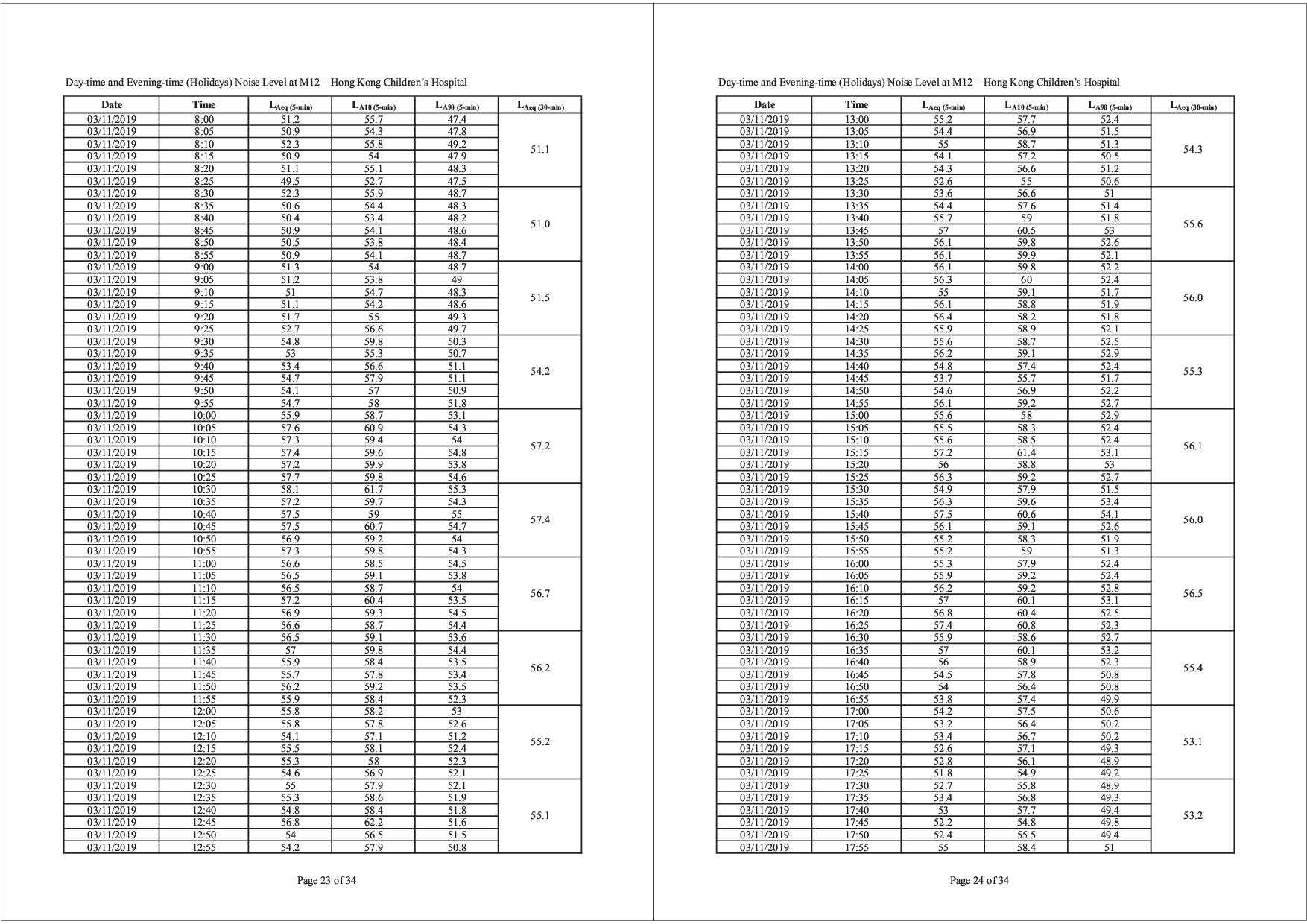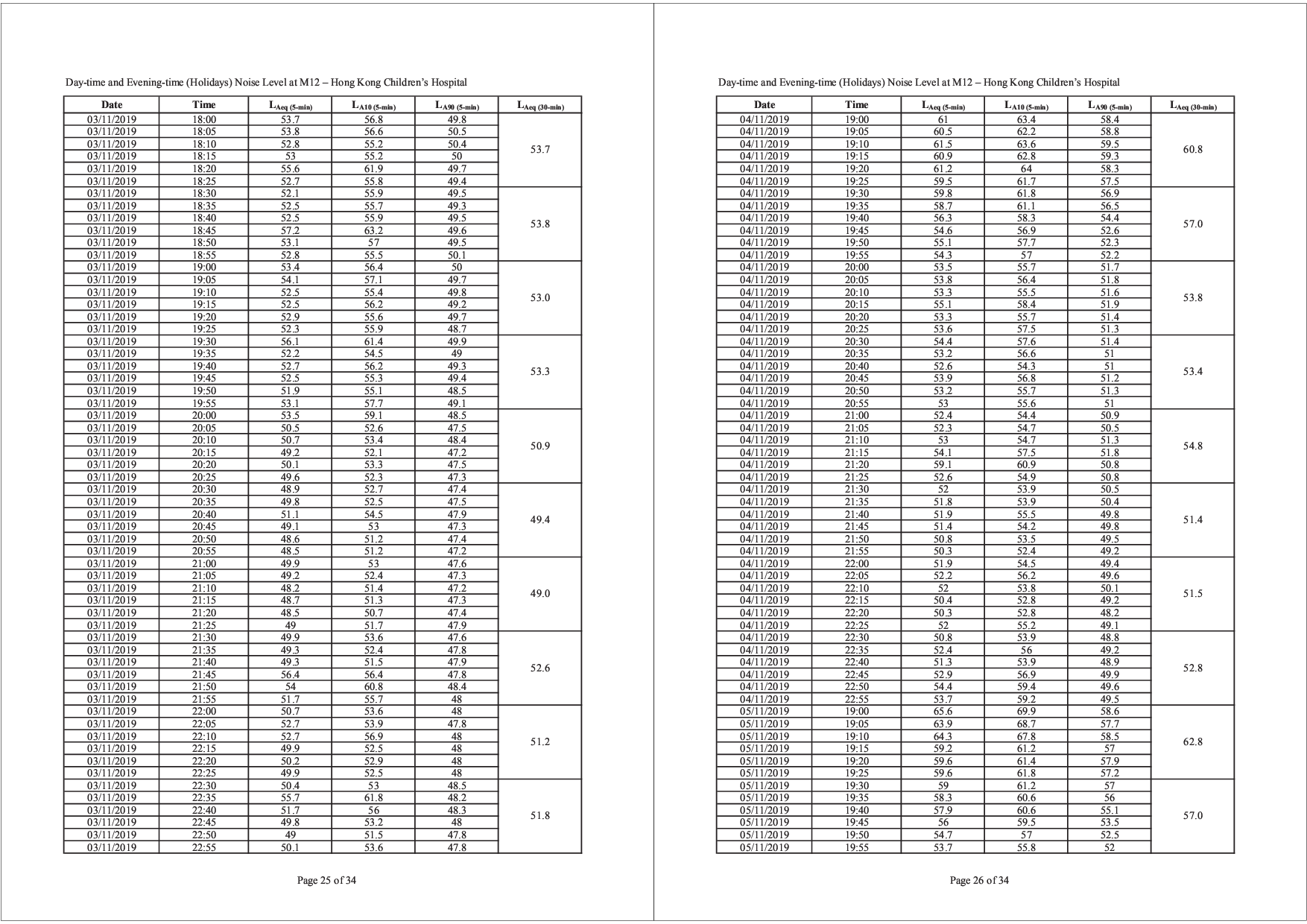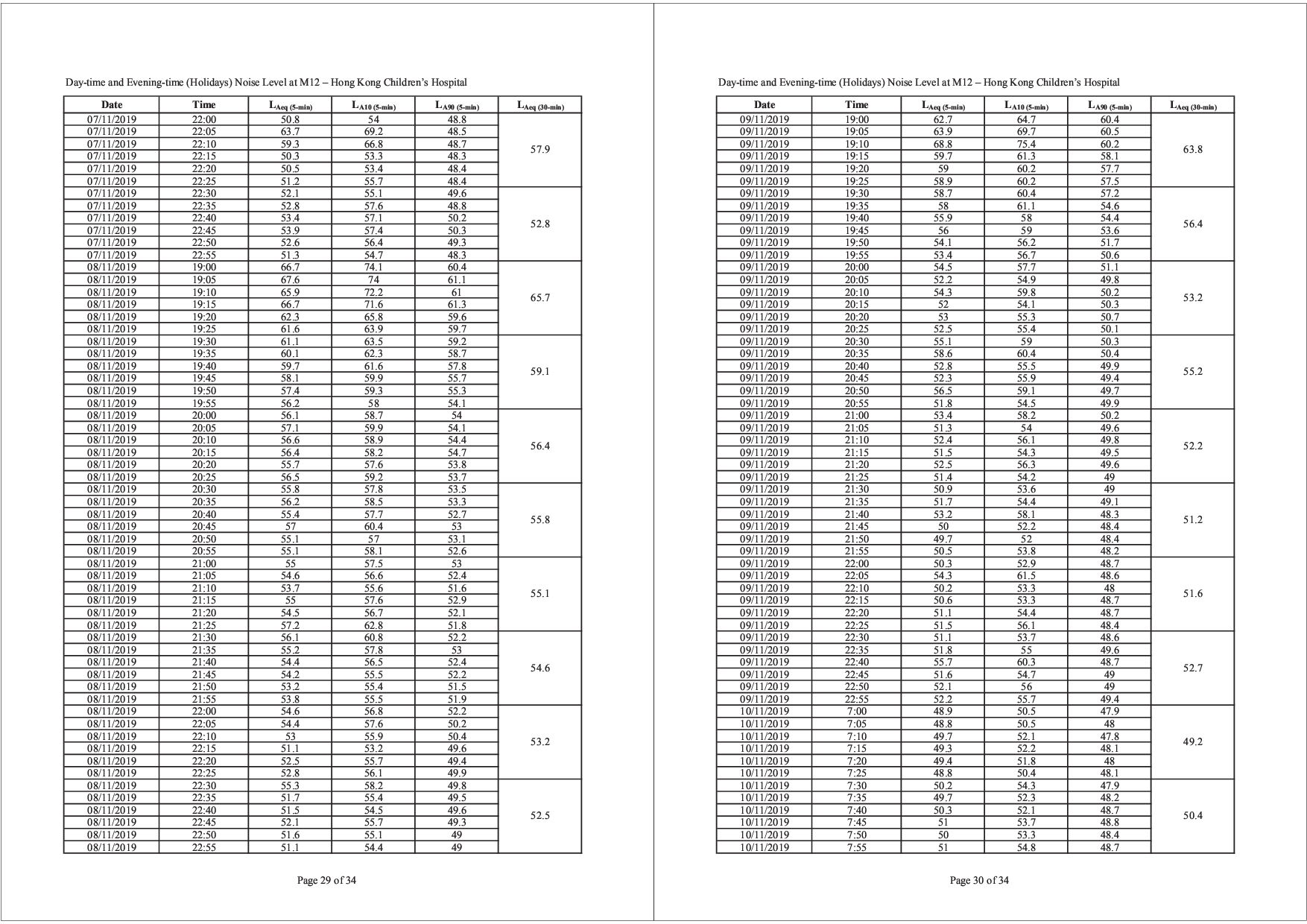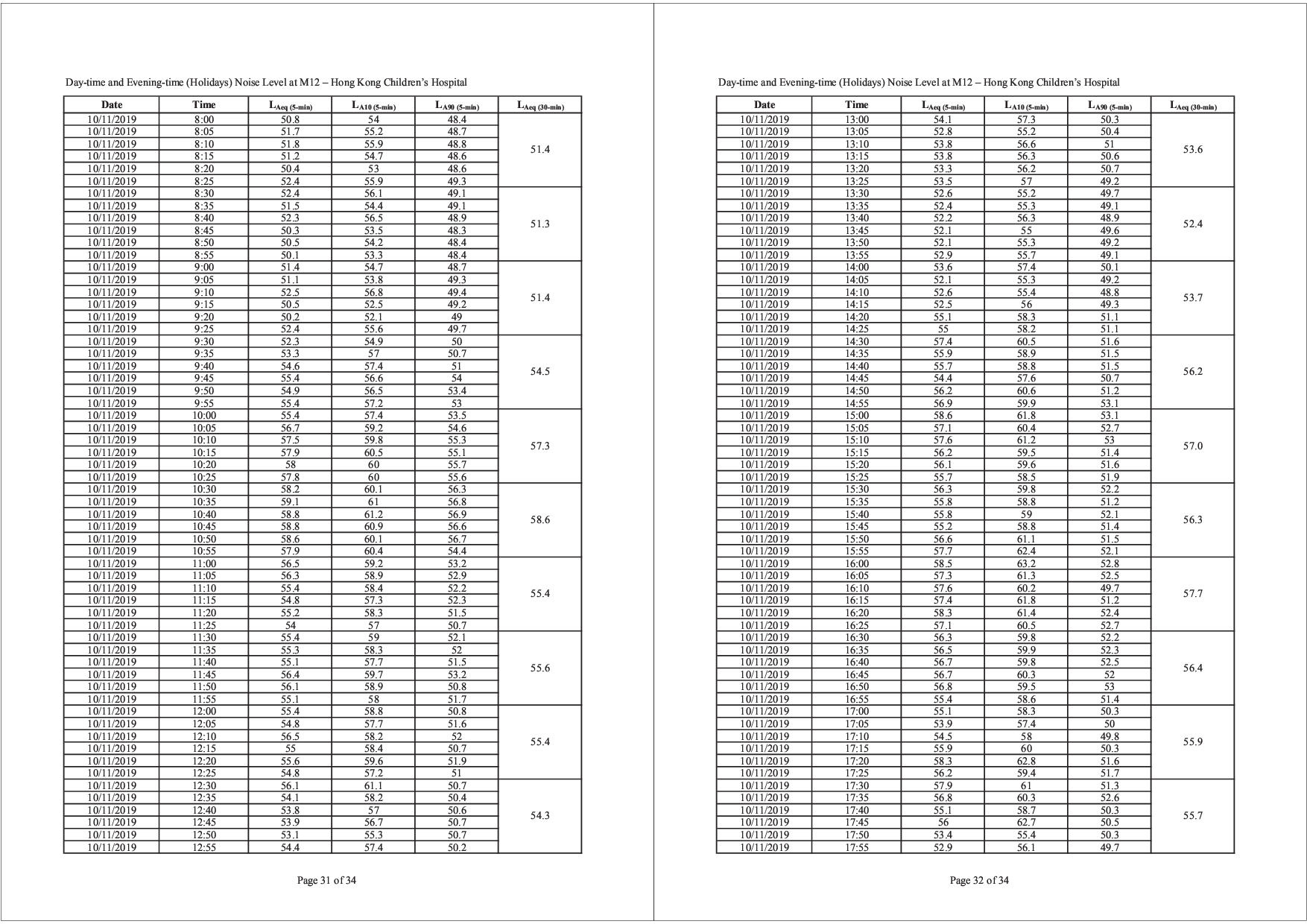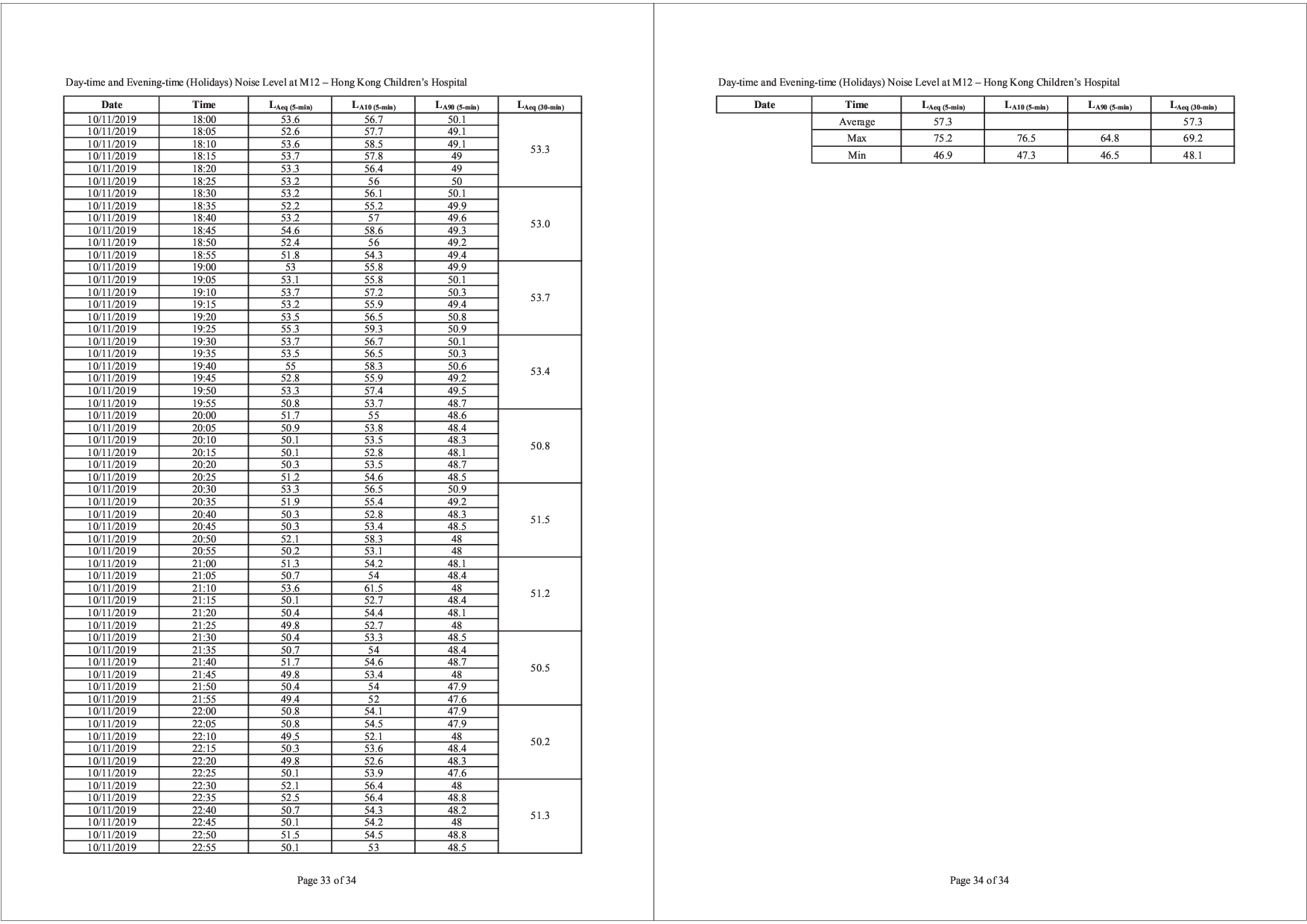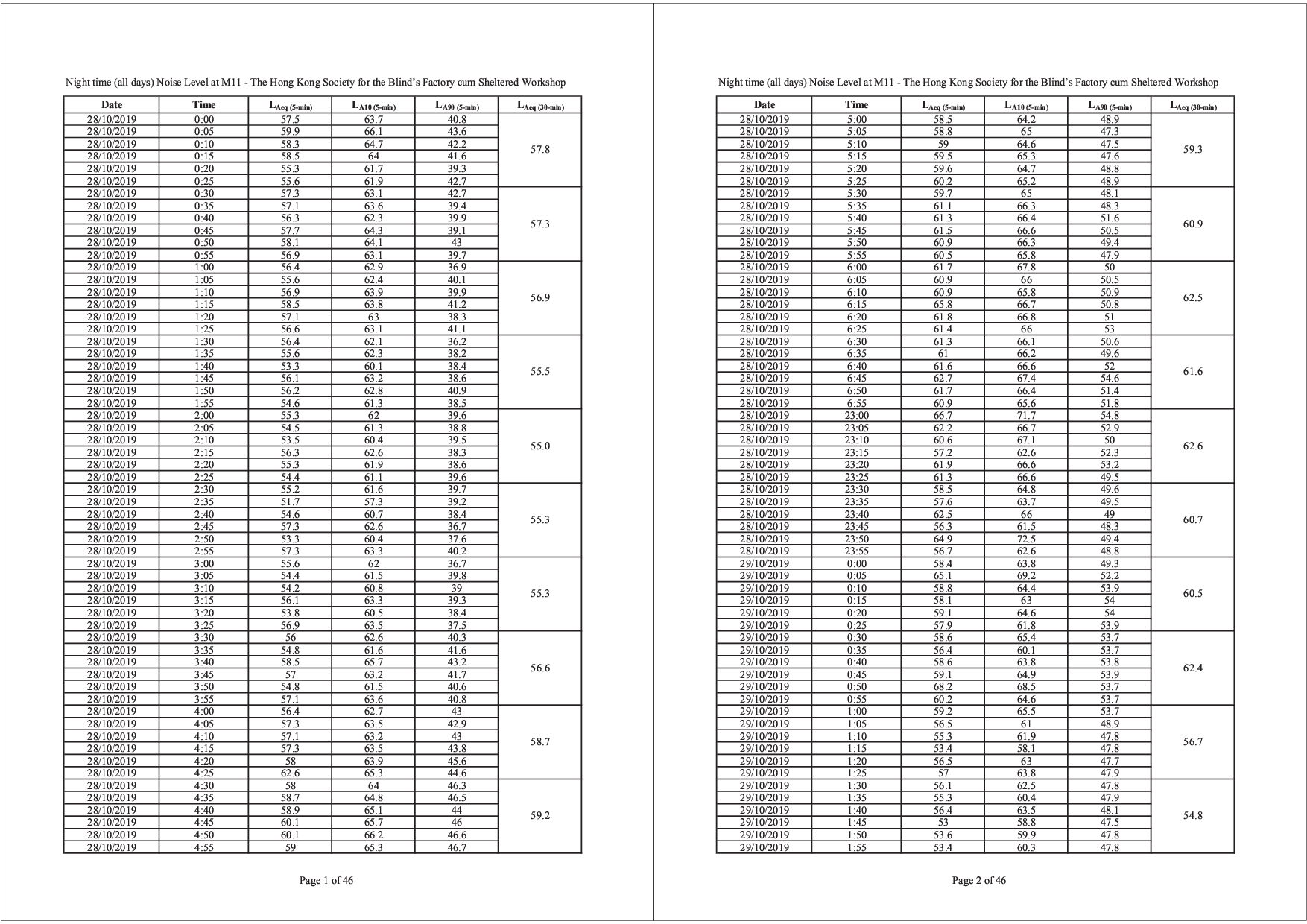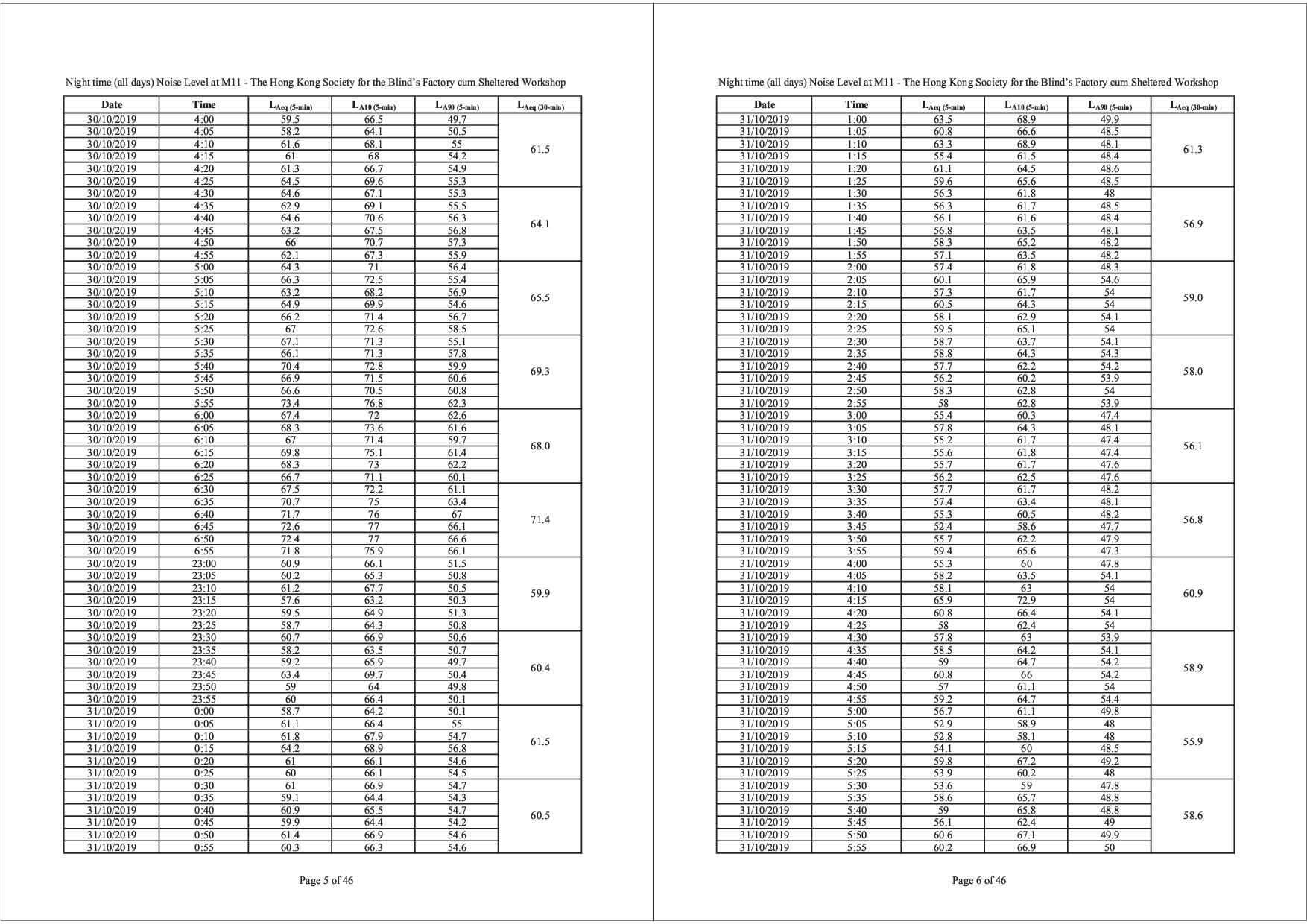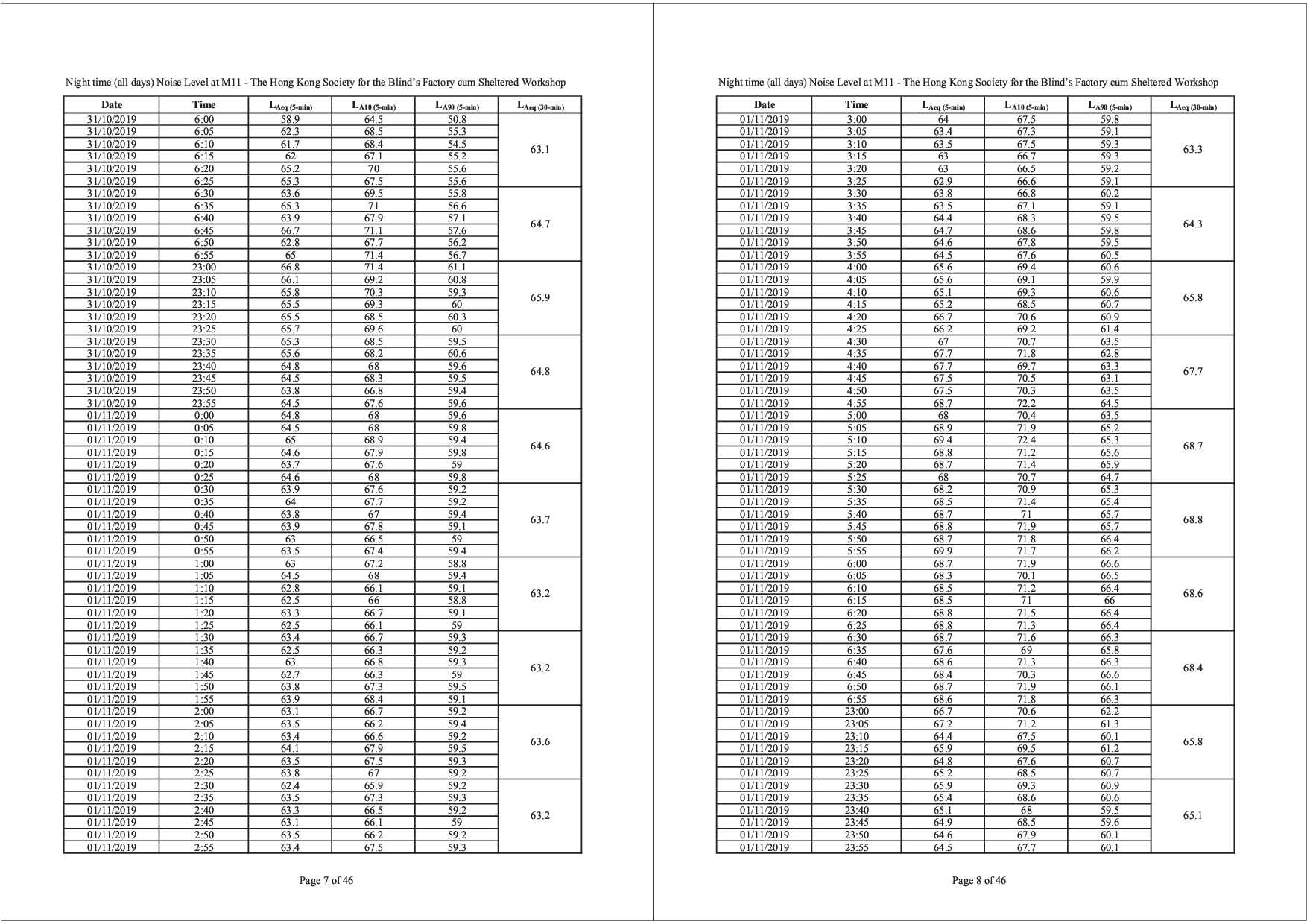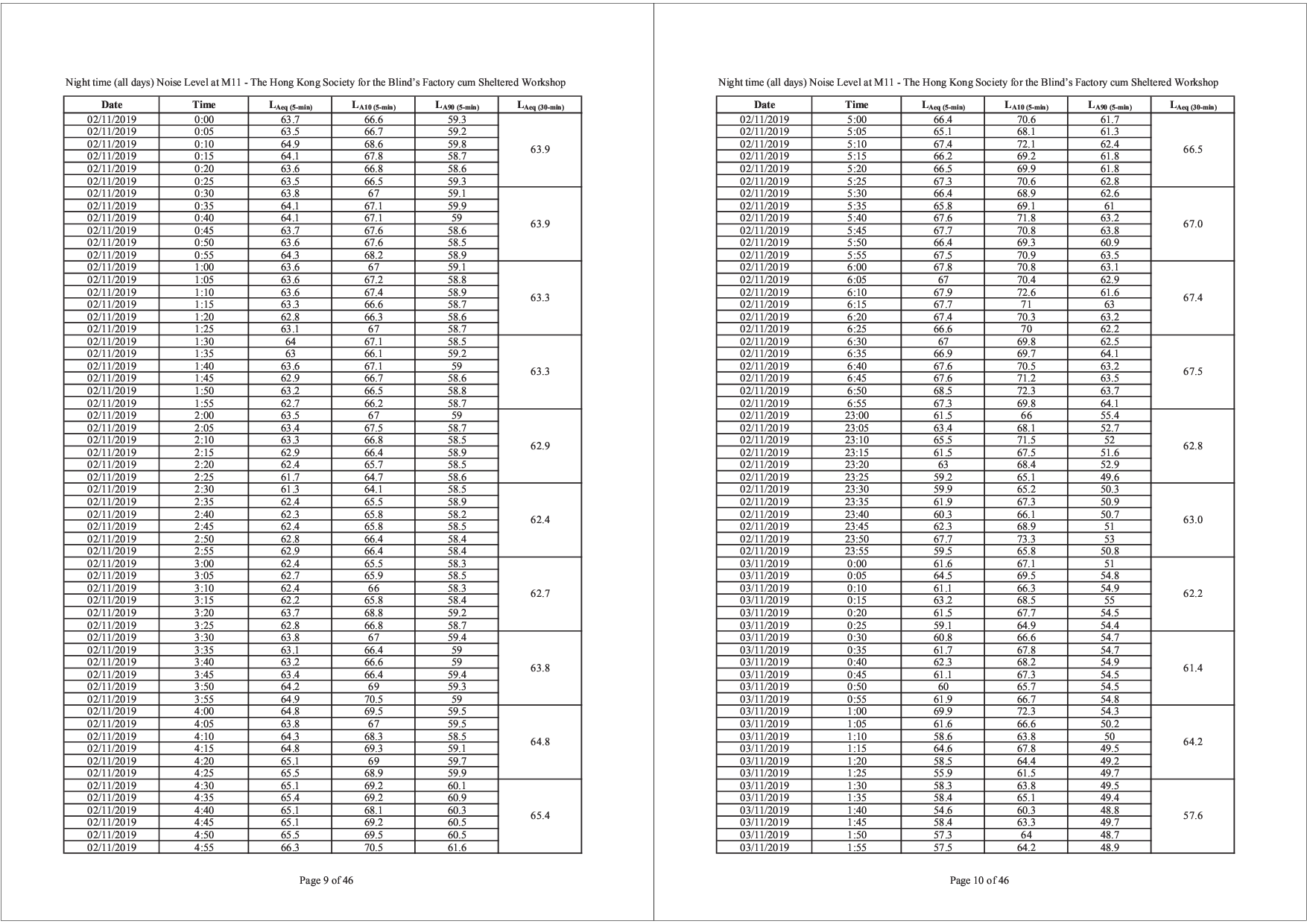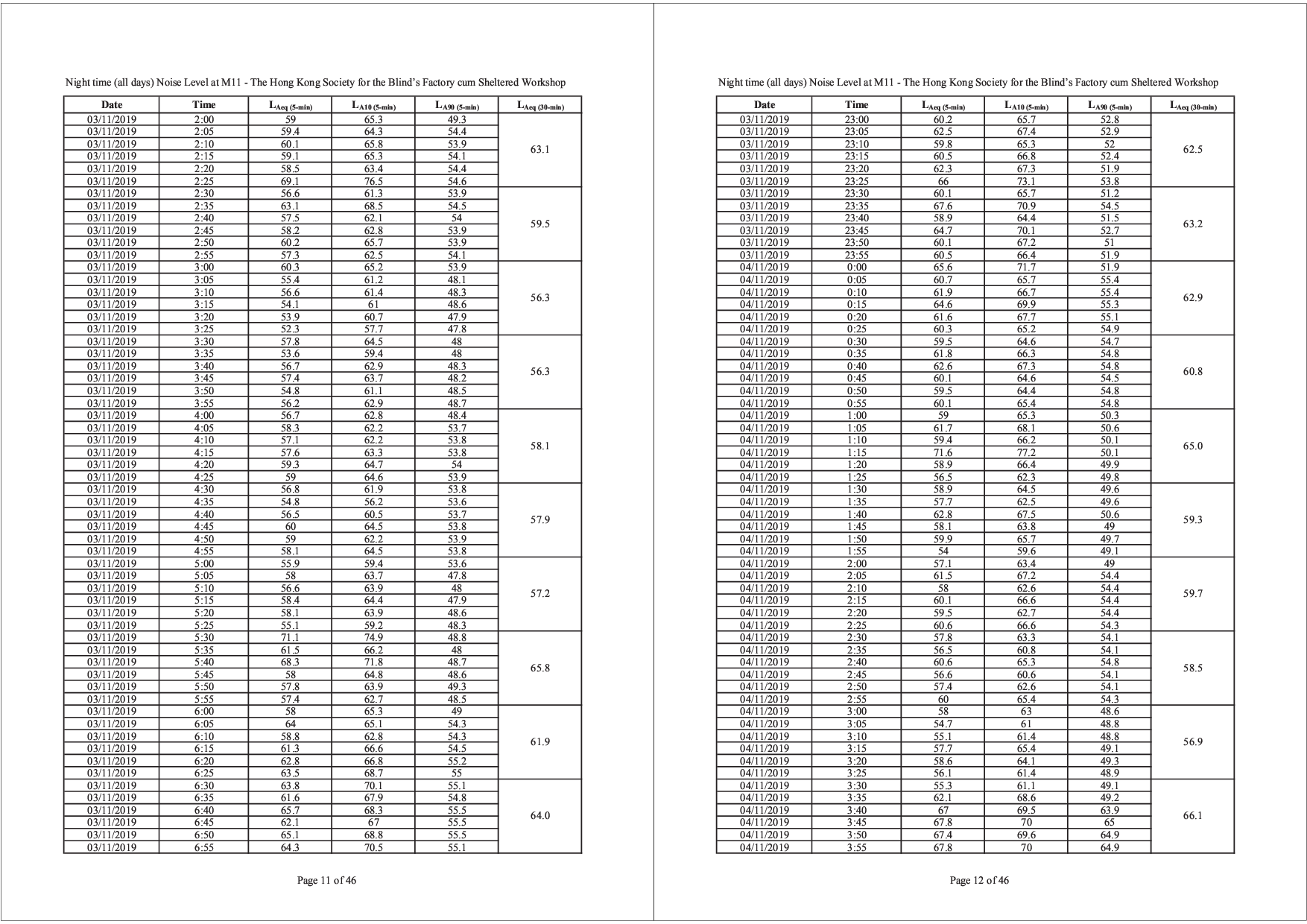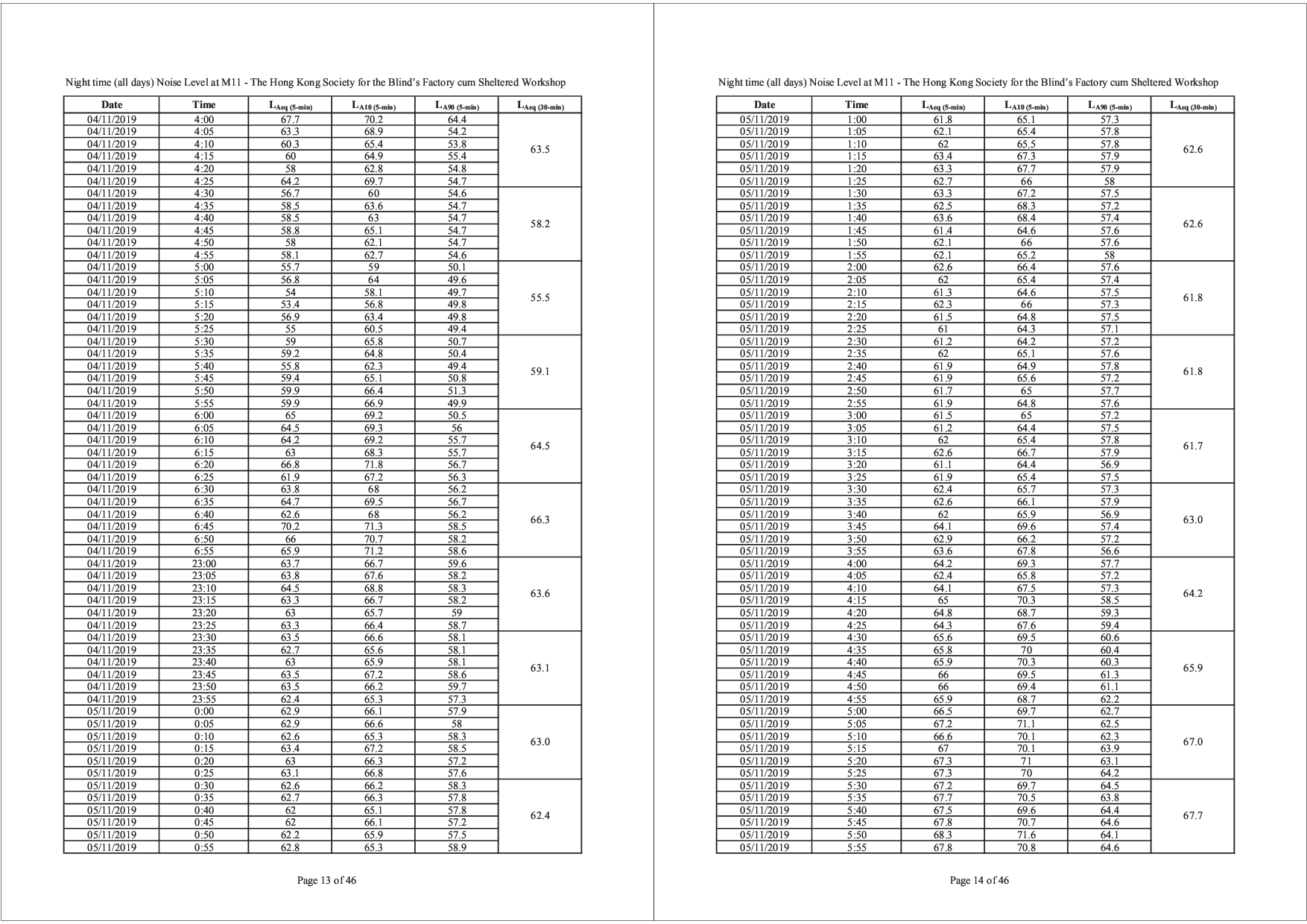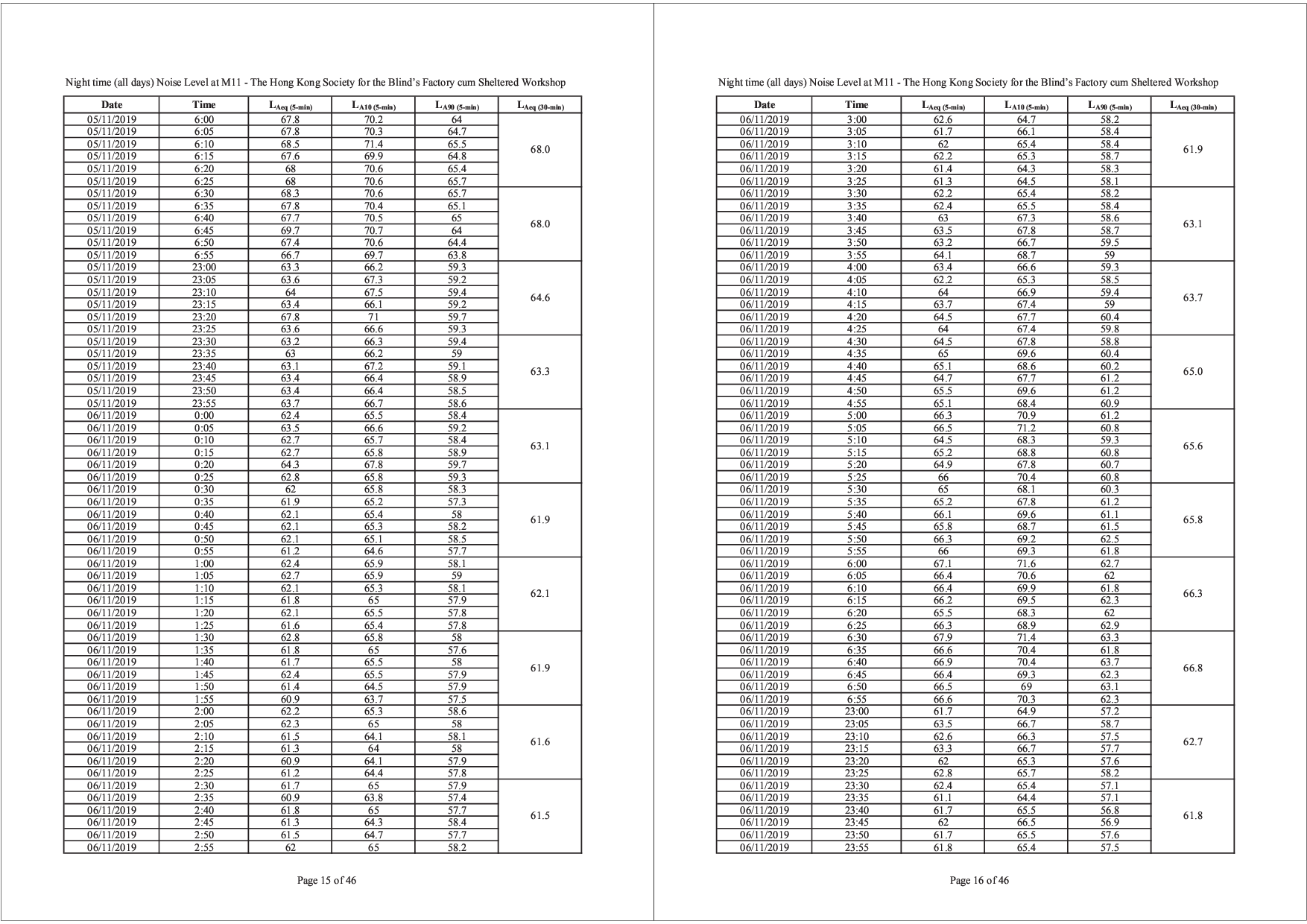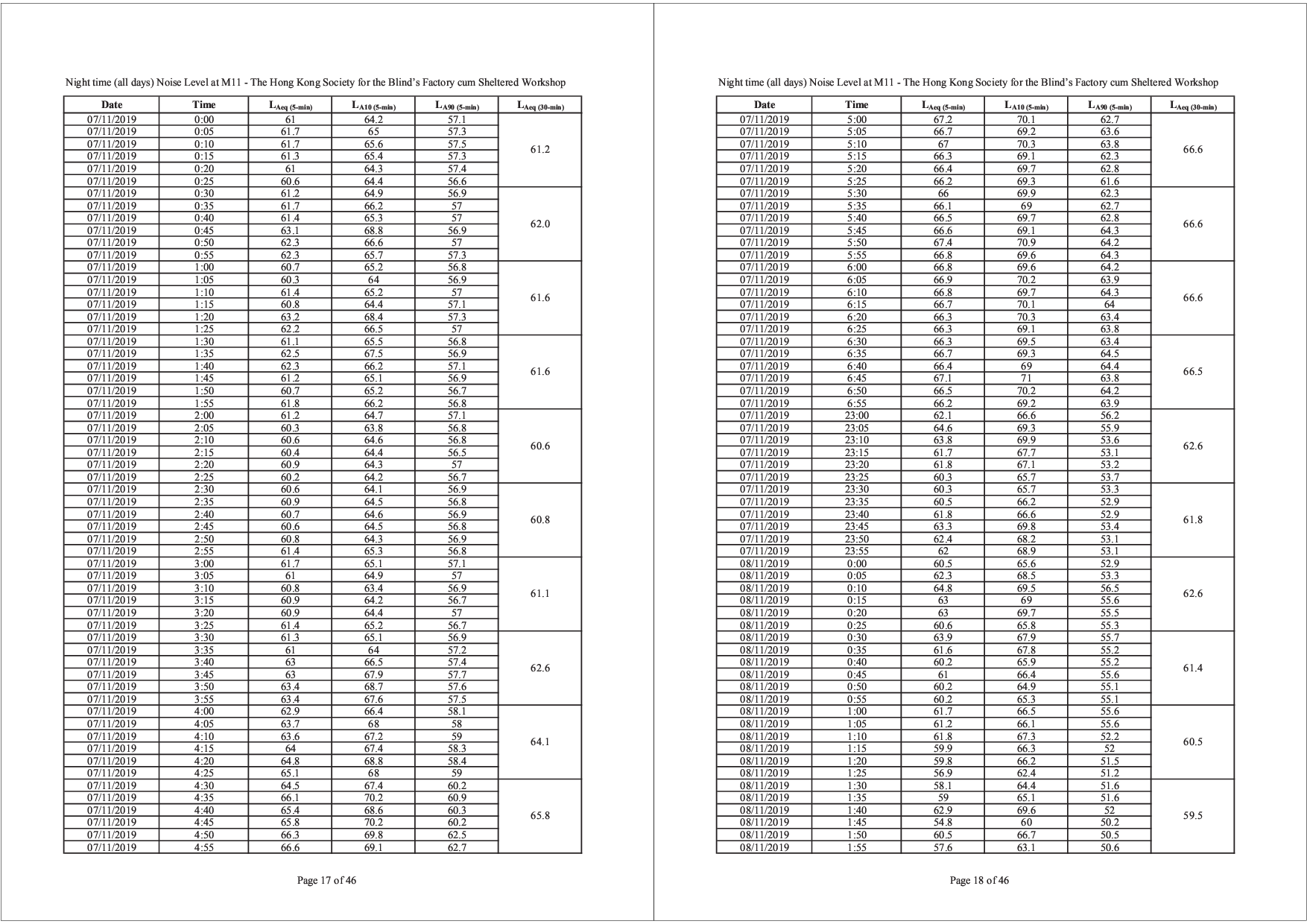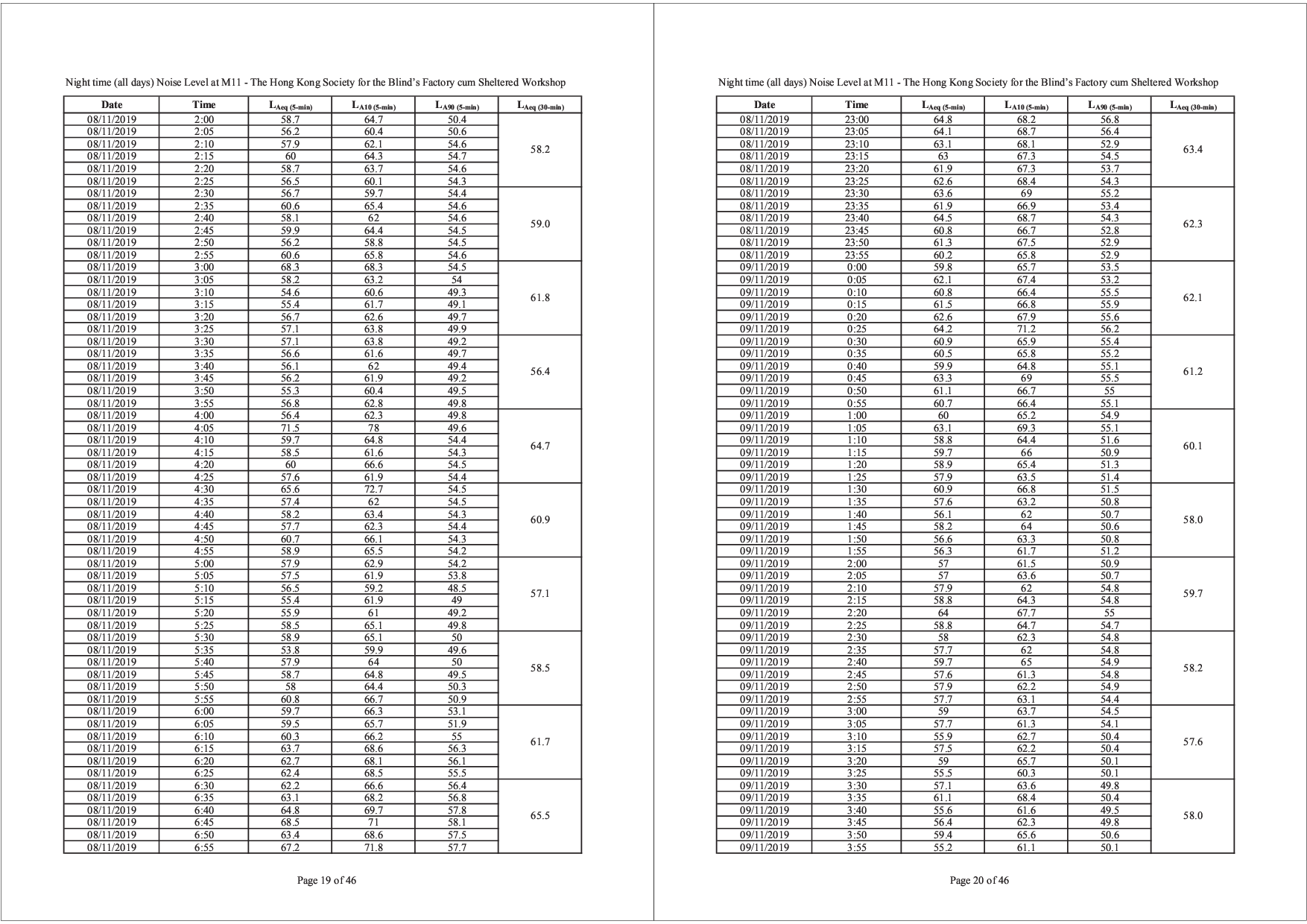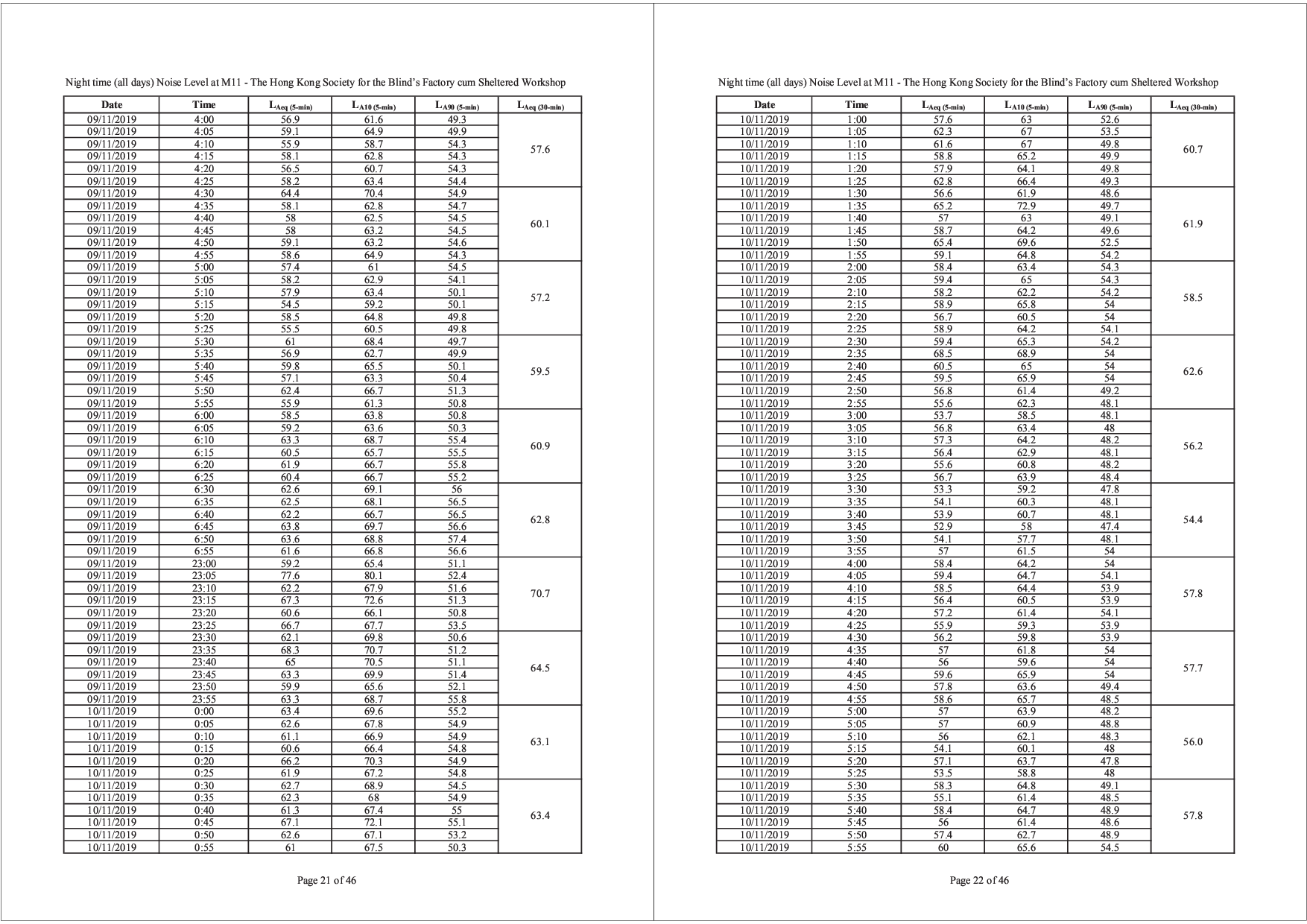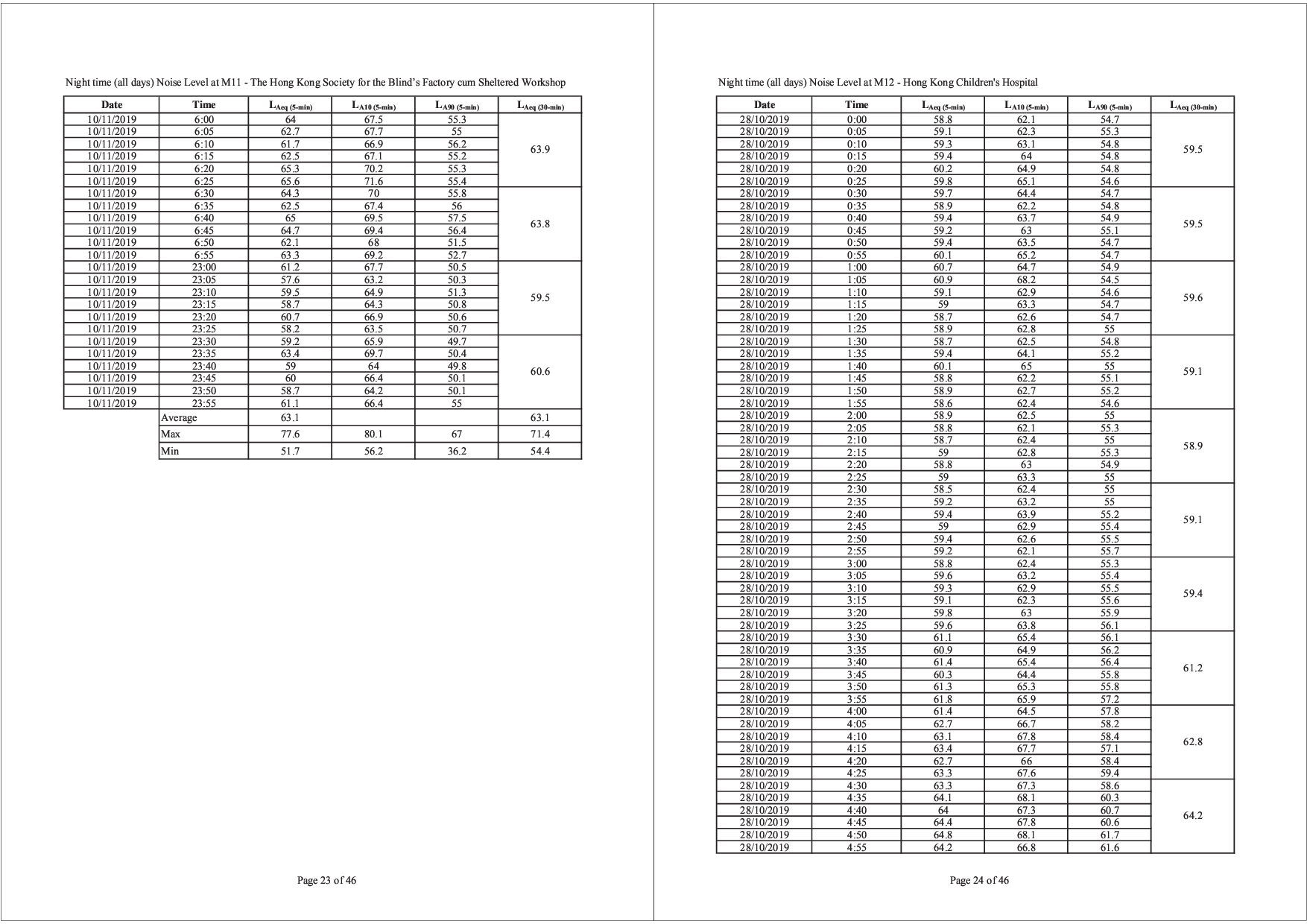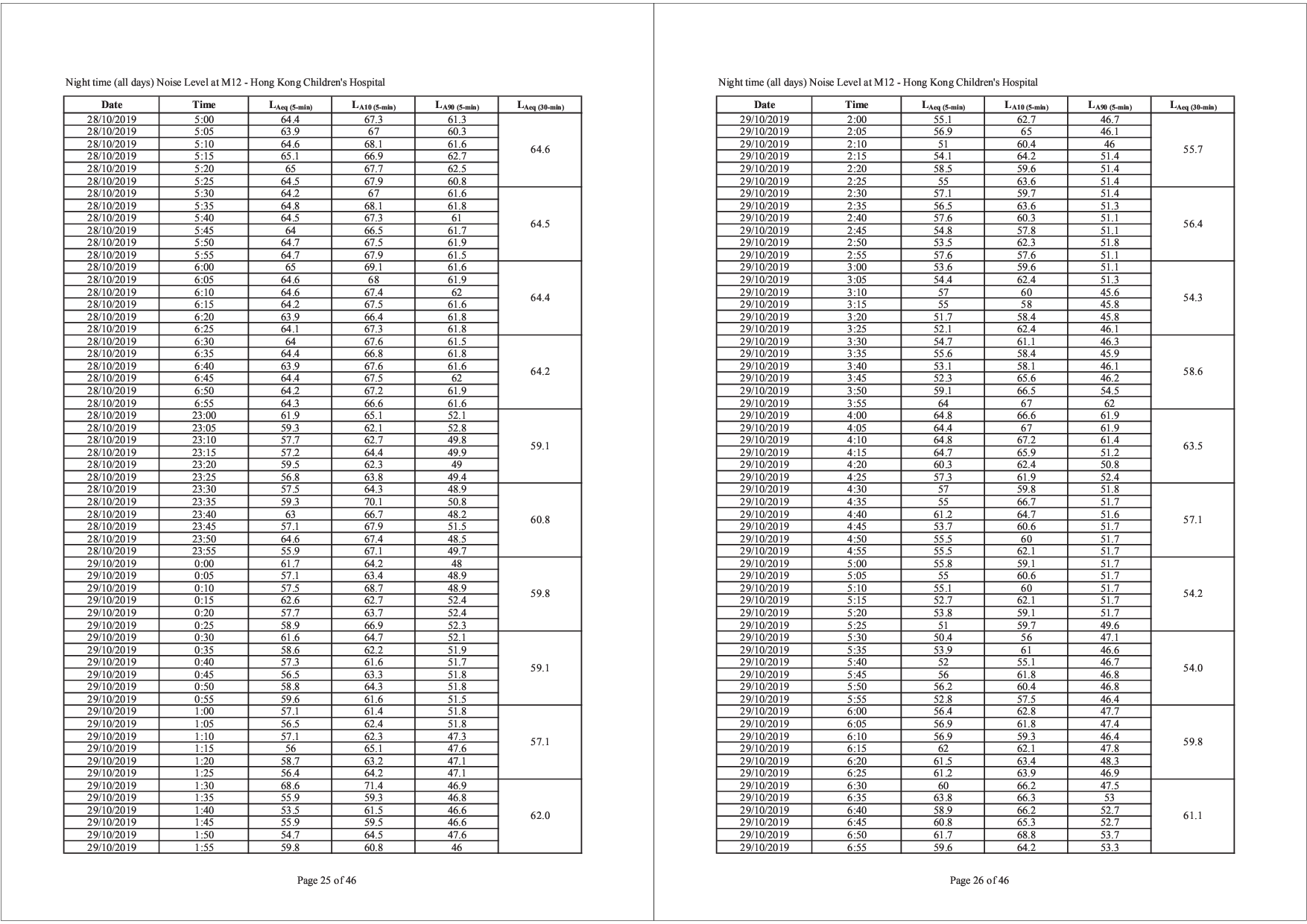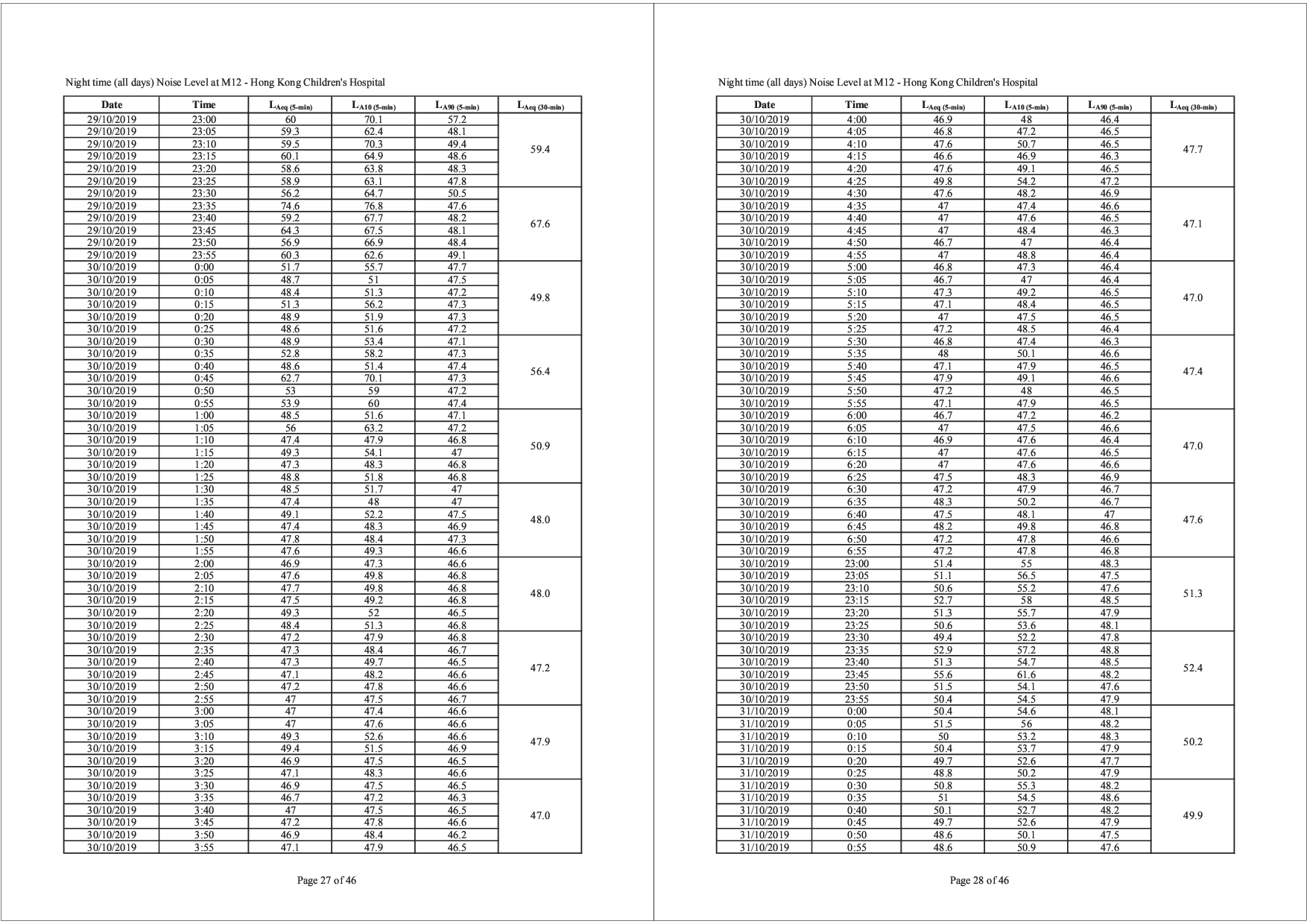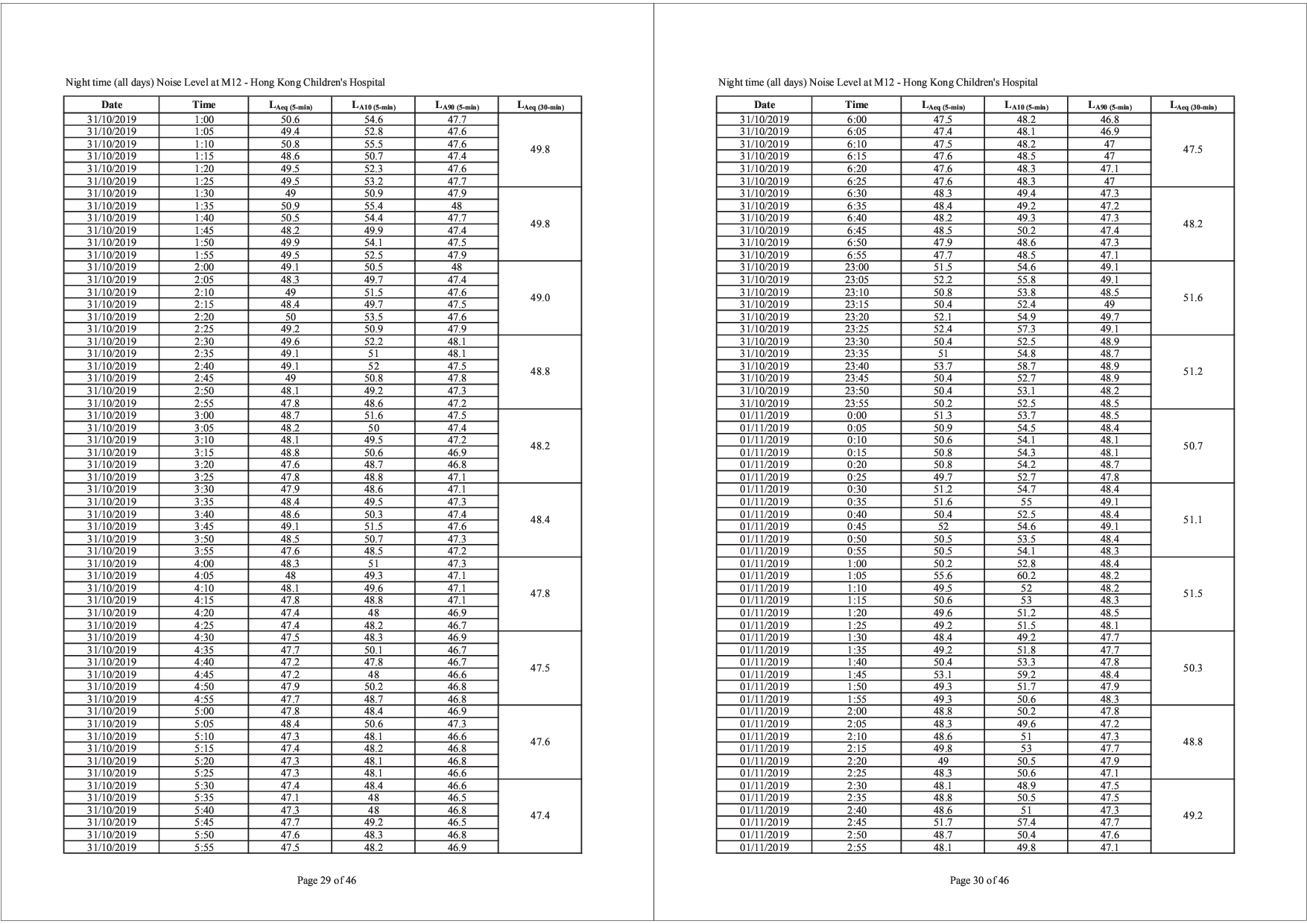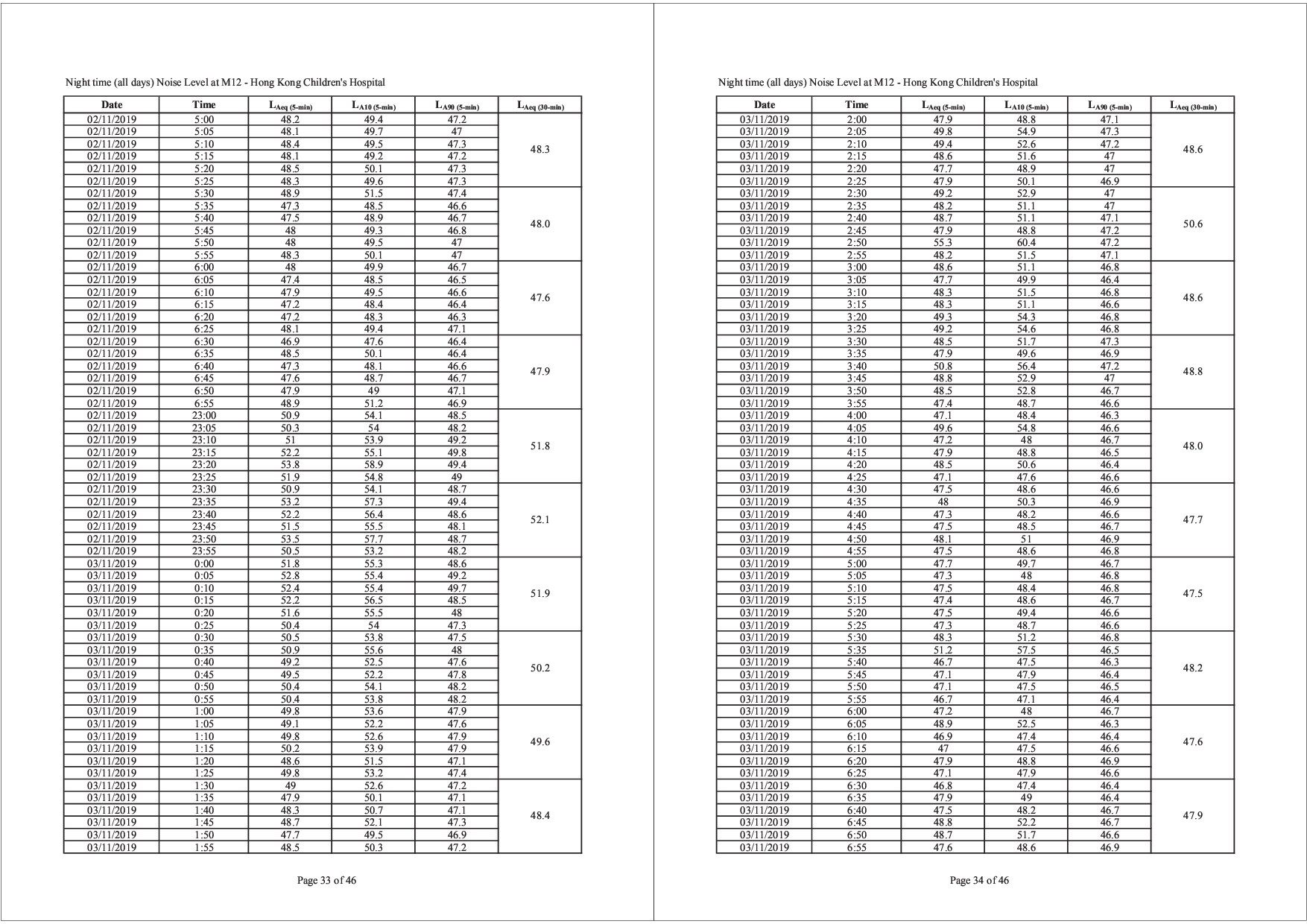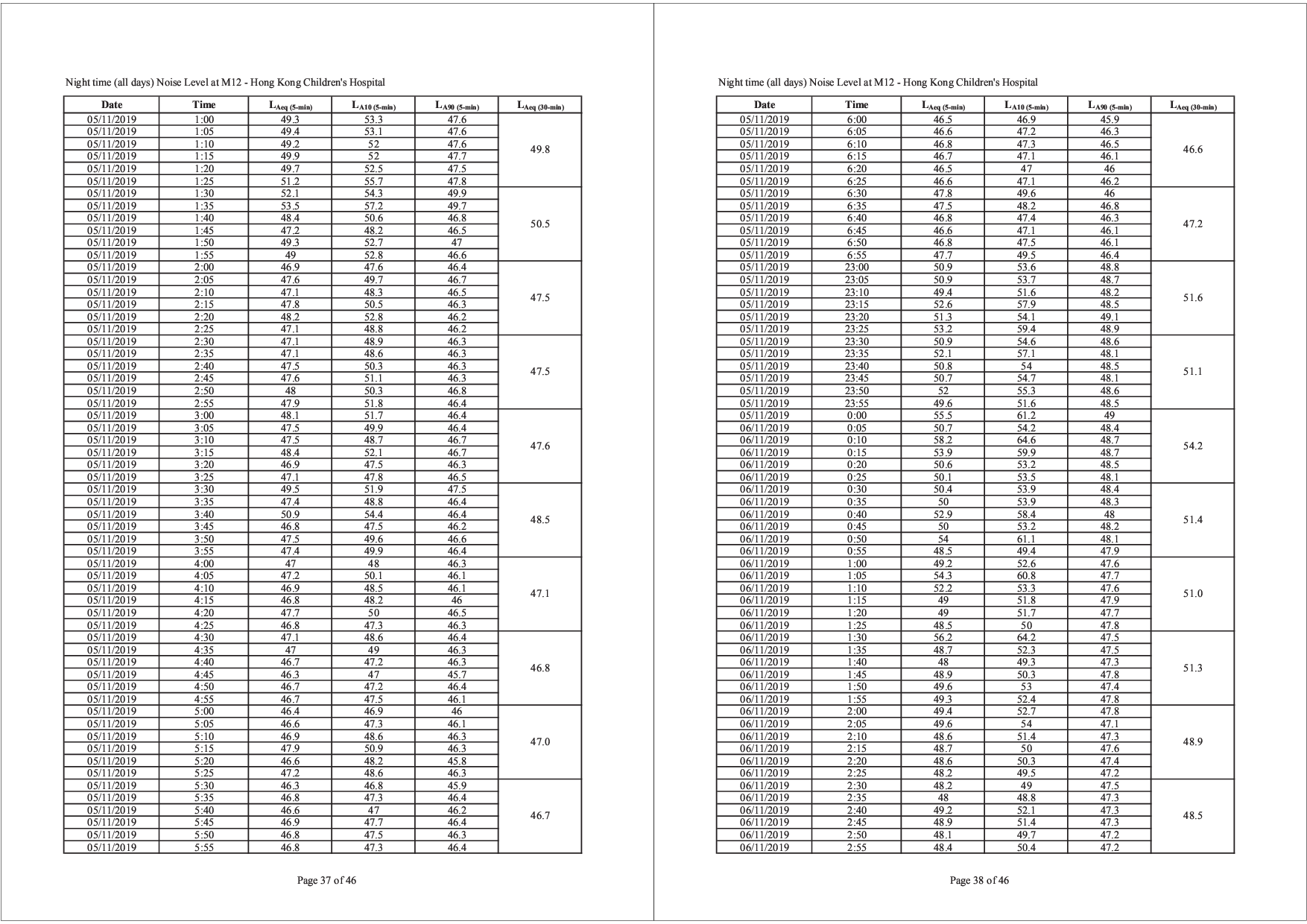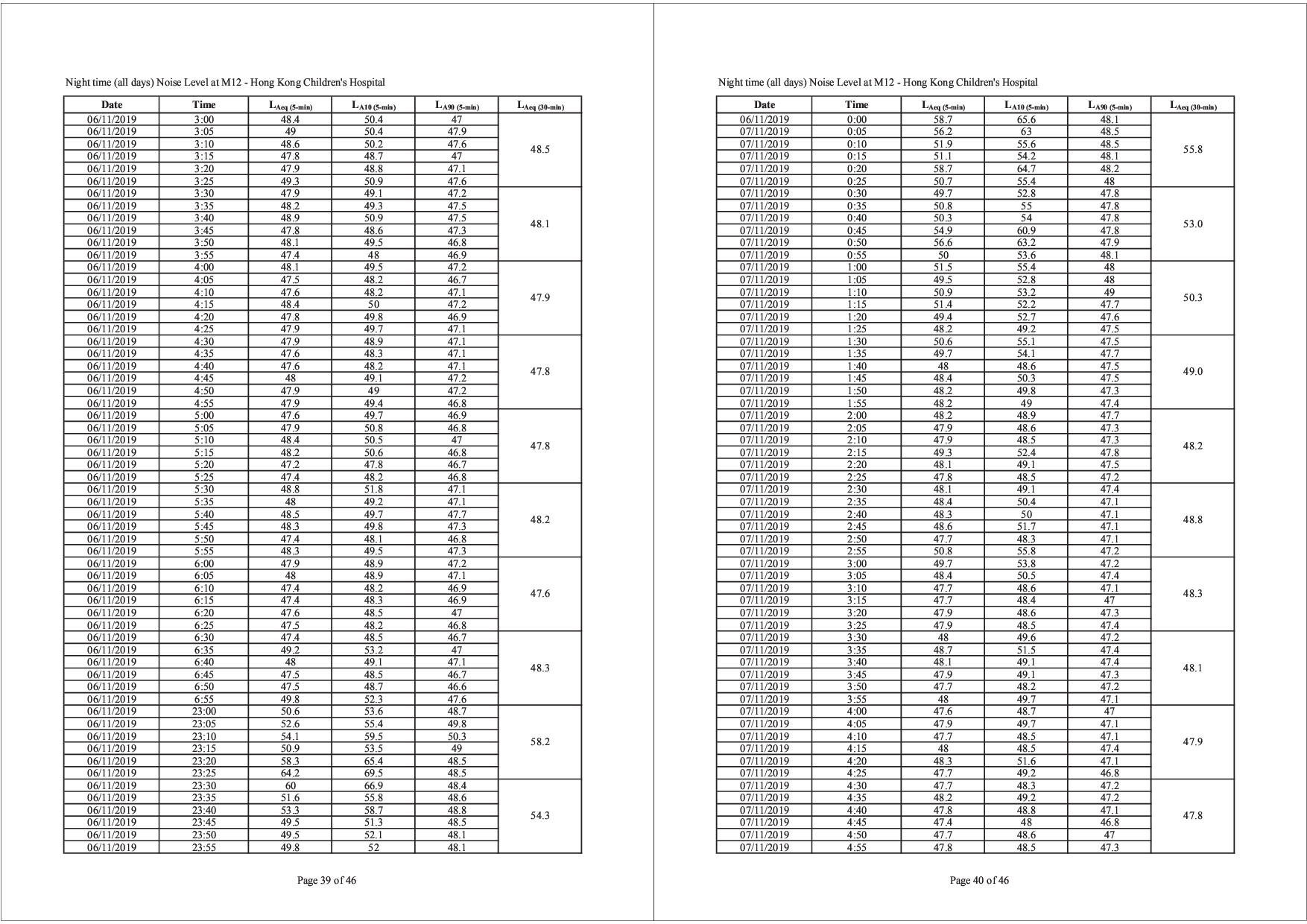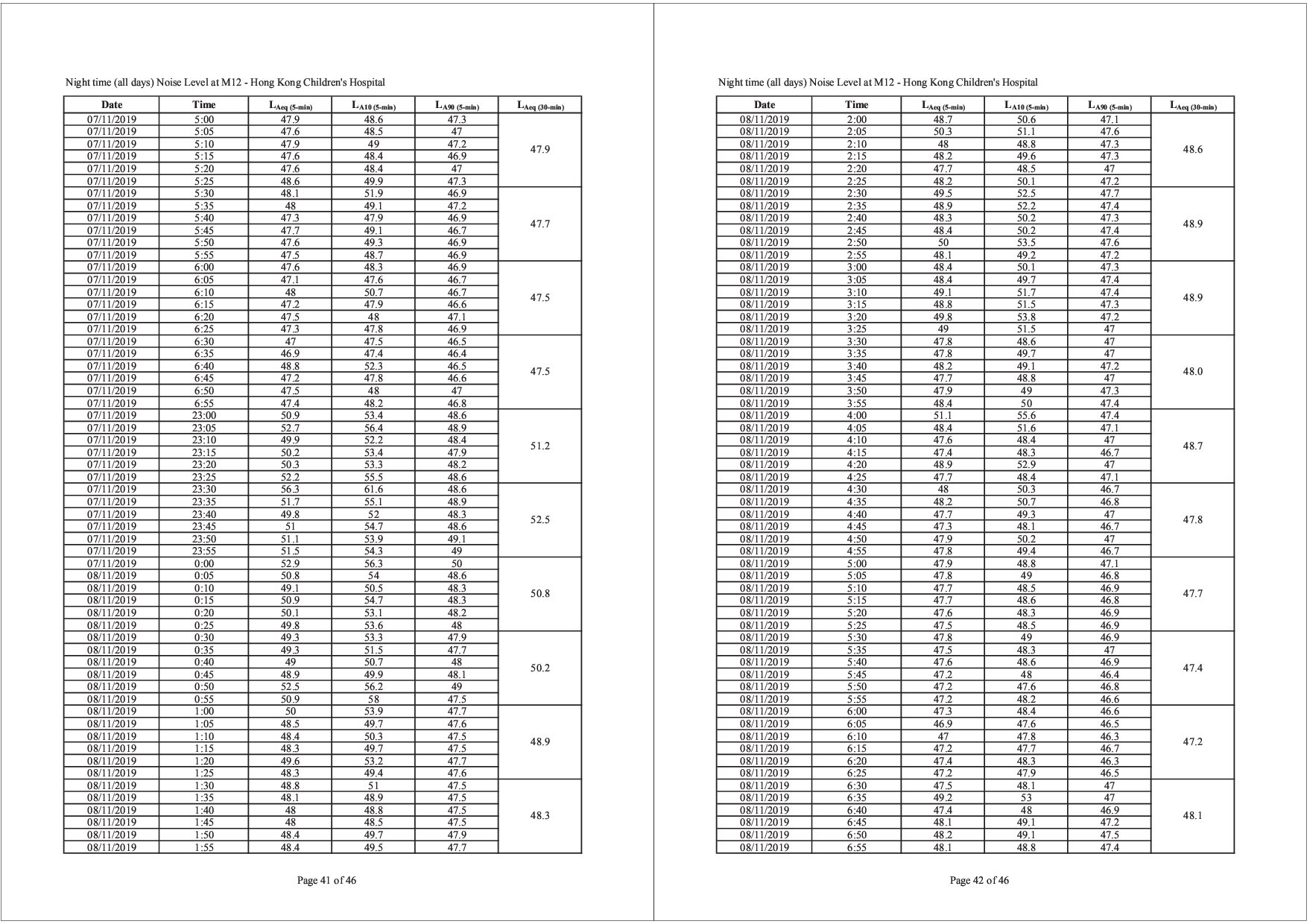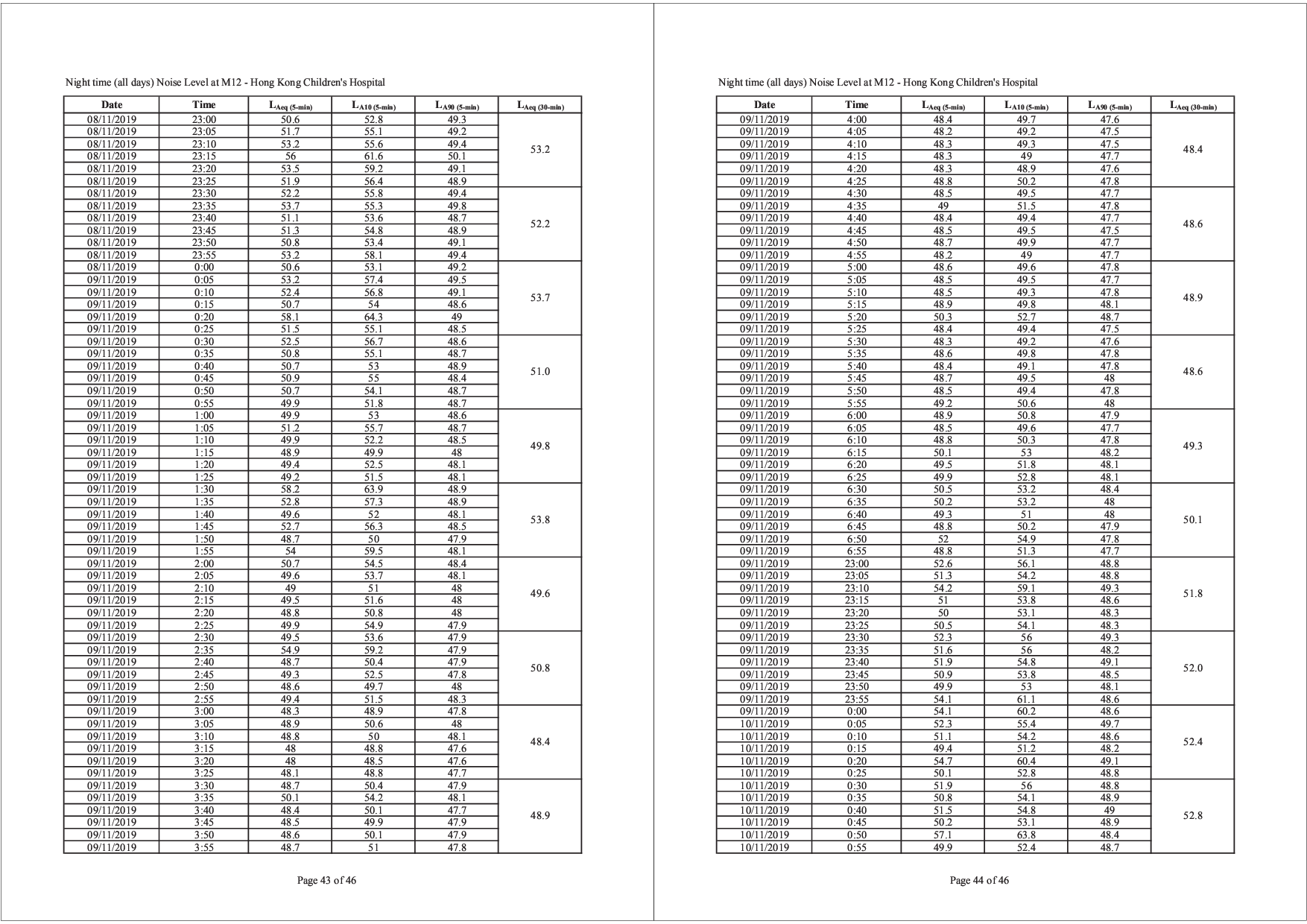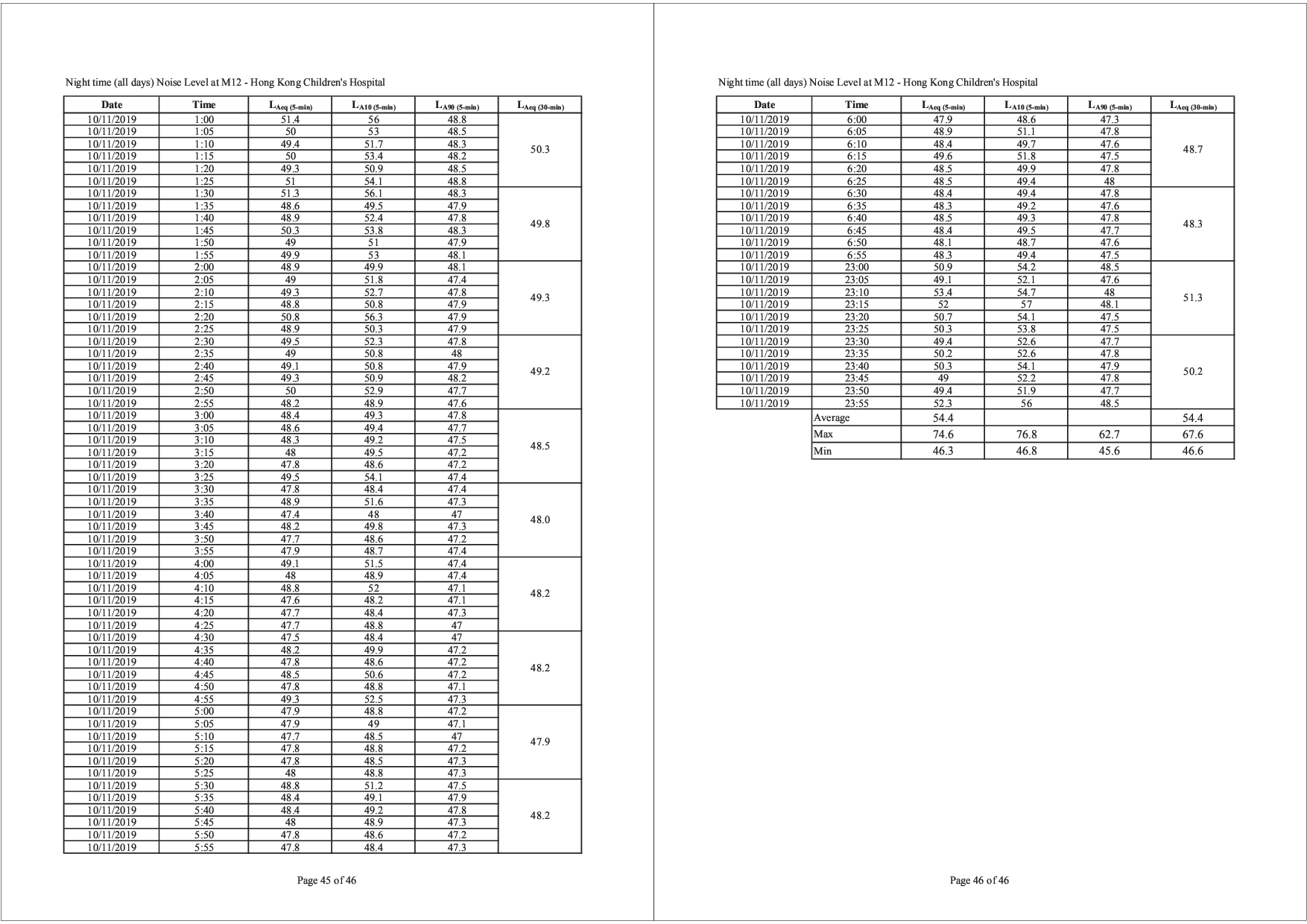Baseline Monitoring Report
for
Contract No. ED/2018/01 –
Kai Tak Development – Stage 4 infrastructure at the former runway and south apron
Contract No.: EDO 15/2018
25 March 2020
(Version 1.7)
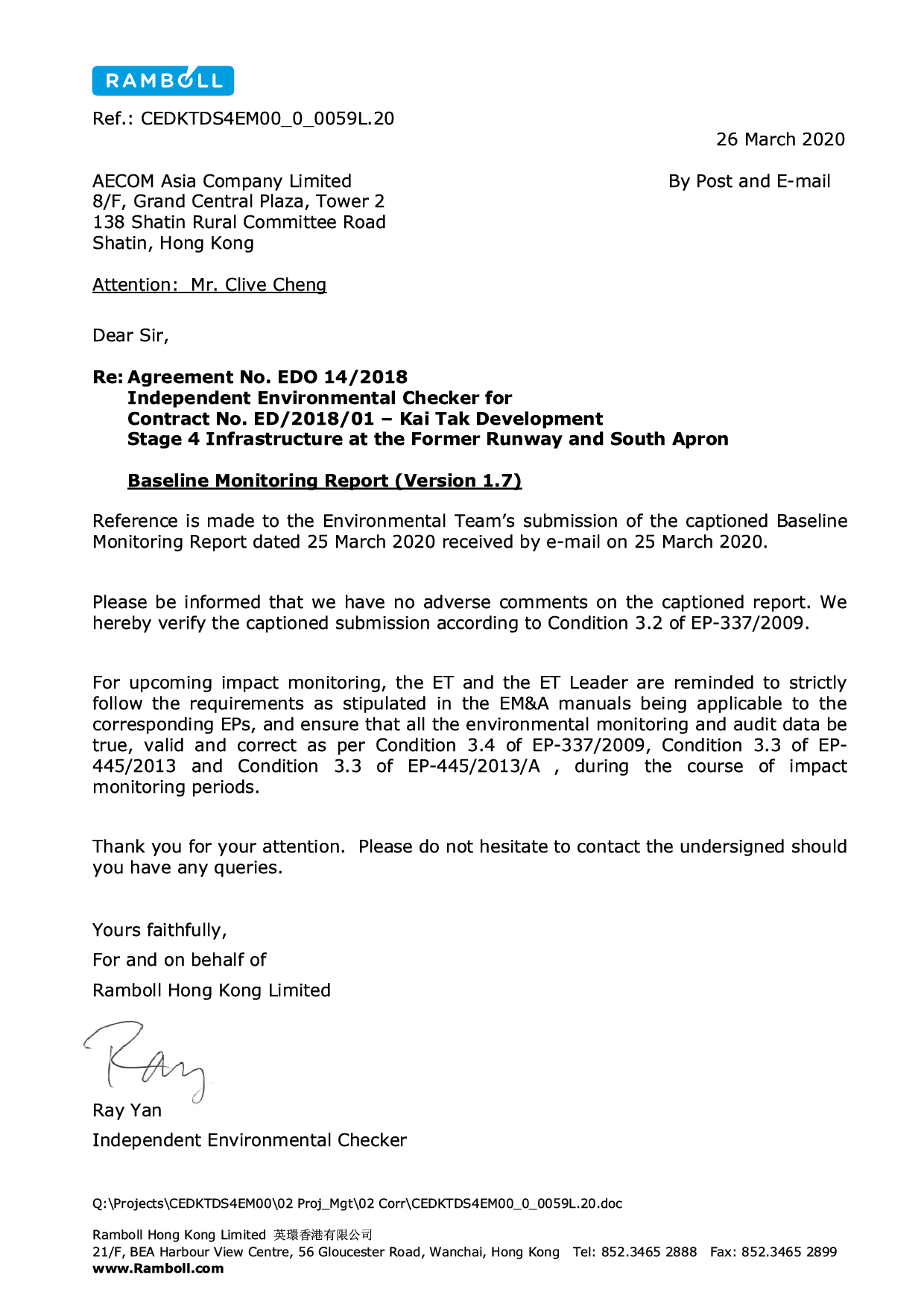
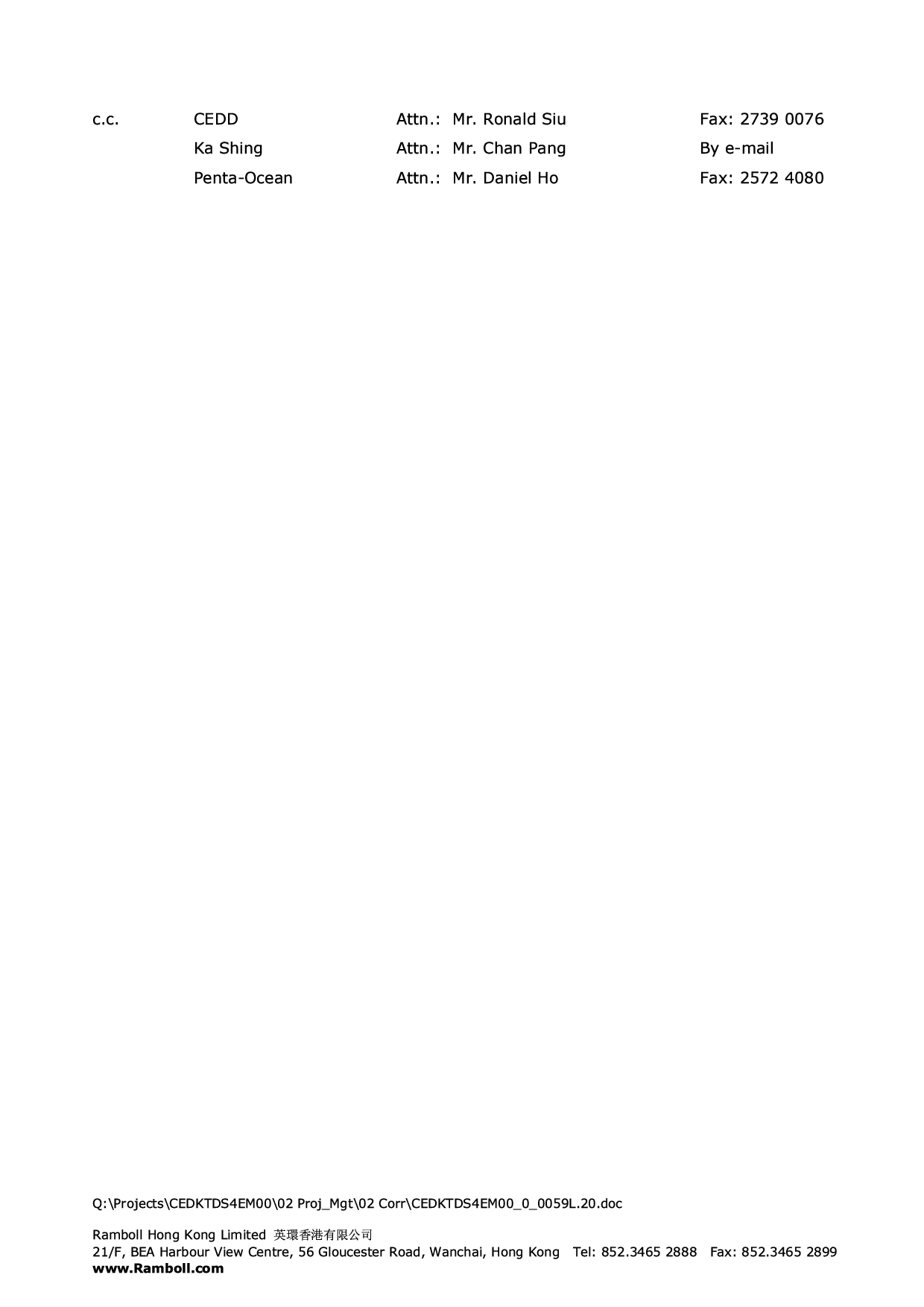
Table of Content
1. INTRODUCTION
Purpose of the Baseline Monitoring Report
Structure of the Baseline Monitoring Report
Monitoring Parameters, Frequency and Duration
Monitoring Methodology and QA/QC Procedure
Summary of Baseline Monitoring results and Observations
Monitoring Parameters, Frequency and Duration
Monitoring Methodology and QA/QC Procedure
Summary of Baseline Monitoring results and Observations
4. REVISIONS FOR INCLUSION IN THE EM&A MANUAL
5. CONCLUSIONS
List of Tables
Table 1 Summary of 24-hour average TSP Monitoring Data and Action and Limit Level
Table 2 Summary of 1-hour average TSP Monitoring Data and Action and Limit Level
Table 3 Summary of Daytime noise levels and Action and Limit Level
Table 4 Summary of Evening-time (weekdays) and Day-time & Evening-time (Holidays) noise levels
Table 5 Summary of Night-time (all days) noise levels
Table 2.1 Air Quality Monitoring Stations Listed in EM&A Manual
Table 2.2 Air Quality Monitoring Stations
Table 2.3 Air Quality Monitoring Parameters, Frequency and Duration
Table 2.4 Air Quality Monitoring Equipment
Table 2.5 Summary of Construction Sites nearby Air Monitoring Stations
Table 2.6 Summary of 24-hour average TSP Monitoring Data
Table 2.7 Summary of 1-hour average TSP Monitoring Data
Table 2.8 Action and Limit Levels for Construction Dust Monitoring
Table 2.9 Action and Limit Levels of 24-hour average TSP for Construction Dust Monitoring
Table 2.10 Action and Limit Levels of 1-hour average TSP for Construction Dust Monitoring
Table 2.11 Event and Action Plan for Construction Dust Monitoring
Table 3.1 Noise Monitoring Stations listed in EM&A manual
Table 3.2 Noise Monitoring Stations
Table 3.3 Noise Monitoring Parameters, Frequency and Duration
Table 3.4 Noise Monitoring Equipment
Table 3.5 Summary of Construction Sites nearby Noise Monitoring Stations
Table 3.6 Summary of Day-time (weekdays) noise levels
Table 3.7 Summary of Evening-time (weekdays) and Day-time & Evening-time (Holidays) noise levels
Table 3.8 Summary of Night-time (all days) noise levels
Table 3.9 Action and Limit Levels for Construction Noise Monitoring
Table 3.10 Event and Action Plan for Construction Noise Monitoring
Table 4.1 Air Quality Monitoring Stations (Listed in EM&A Manual and Baseline Monitored)
Table 4.2 Noise Monitoring Stations (Listed in EM&A Manual and Baseline Monitored)
List of Figure
Figure 1 – Proposed works of Contract No. ED/2018/01
Figure 2 – Proposed Bus Stop And Associated Noise Barrier At Road D3A
Figure 3 – Future Pedestrian Connection Between Landscaped Deck And Private Developments
Figure 5 – Air Quality Monitoring Stations Listed in EM&A Manual (AEIAR-130/2009)
Figure 6 – Air Quality Monitoring Stations
Figure 7 – Noise Monitoring Stations Listed in EM&A Manual (AEIAR-130/2009)
Figure 8 – Noise Monitoring Stations
List of Appendices
Appendix A – Construction Programme
Appendix B – Baseline monitoring schedule
Appendix C – Email to Grand Waterfront
Appendix D – Approval for Baseline Monitoring Programme
Appendix E – Photographic records
Appendix F – Cal cert, catalogue of air quality monitoring equipment
Appendix G – Graphical presentation of baseline air quality monitoring data
Appendix H – 24-hr TSP monitoring data
Appendix I – 1-hr TSP monitoring data
Appendix J – Weather information during baseline monitoring period
Appendix K – Cal cert, catalogue of noise monitoring equipment
Appendix L – Graphical presentation of baseline noise monitoring data
Appendix M – Day-time (weekdays) noise monitoring data
Appendix N – Evening-time (weekdays) and Day-time & Evening-time (Holidays) noise monitoring data
Appendix O – Night-time (all days) noise monitoring data
1. Ka Shing Management Consultant Limited was commissioned by Civil Engineering and Development Department to undertake the role of the Environmental Team for Contract No. ED/2018/01 - Kai Tak Development – stage 4 infrastructure at the former runway and south apron (The Project).
2. Baseline monitoring was conducted from 28 October 2019 to 10 November 2019 for 14 consecutive days. The baseline monitoring results form the basis for determining the Action and Limit Levels for the impact monitoring during construction phase.
Air quality monitoring
3. Baseline air quality monitoring (24-hr TSP and 1-hr TSP) was conducted at 3 monitoring locations (AM3, AM4(A) and AM7).
4. The recorded baseline air quality results and Action and Limit Levels for 24-hr TSP and 1-hr TSP are summarized in Table 1 and Table 2 respectively.
|
Air Monitoring Station |
Average TSP Concentration, mg/m3 |
Range, mg/m3 |
Action Level, mg/m3 |
Limit Level, mg/m3 |
|
AM3 |
79 |
45 – 105 |
182 |
260 |
|
AM4(A) |
87 |
42 – 149 |
187 |
260 |
|
AM7 |
79 |
31 - 125 |
181 |
260 |
|
Air Monitoring Station |
Average TSP Concentration, mg/m3 |
Range, mg/m3 |
Action Level, mg/m3 |
Limit Level, mg/m3 |
|
AM3 |
72 |
38 – 104 |
297 |
500 |
|
AM4(A) |
117 |
72 – 167 |
326 |
500 |
|
AM7 |
99 |
71 - 137 |
315 |
500 |
Noise monitoring
5. Baseline noise monitoring was conducted at 2 monitoring locations (M11 and M12) with 24 hours continuously monitoring. Monitoring data was analyzed under the following periods:
- Day-time (0700-1900 hrs) on weekdays
- Evening-time (1900-2300 hrs) on weekdays and Day-time (0700-1900 hrs) and Evening-time (1900-2300 hrs) on weekends / holidays
- Night time (2300-0700 hrs) on all days
6. The recorded baseline noise levels and Action and Limit Levels is summarized in Table 3, Table 4 and Table 5 respectively.
|
Time Period |
Noise Monitoring Station |
Average LAeq, 30-min during 0700 – 1900 on normal weekdays, dB(A) |
Range of LAeq, 30-min during 0700 – 1900 on normal weekdays, dB(A) |
Action Level |
Limit Level, dB(A) |
|
LAeq, 30-min 0700 – 1900 on normal weekdays |
M11 |
68.3 |
61.8 – 72.6 |
When one documented complaint is received. |
75 |
|
M12 |
61.9 |
44.8 – 74.6 |
|
Evening-time (1900-2300 hrs) on weekdays Day-time (0700-1900 hrs) & Evening-time (1900-2300 hrs) on holidays |
Sound Pressure Level, dB(A) |
||
|
LAeq, 5-min |
|||
|
Noise Monitoring Station |
Average |
Max. |
Min. |
|
M11 |
66.5 |
78.2 |
56.9 |
|
M12 |
57.3 |
75.2 |
46.9 |
|
Night-time (2300-0700 hrs next day) |
Sound Pressure Level, dB(A) |
||
|
LAeq, 5-min |
|||
|
Noise Monitoring Station |
Average |
Max. |
Min. |
|
M11 |
63.1 |
77.6 |
51.7 |
|
M12 |
54.4 |
74.6 |
46.3 |
1.1 The Kai Tak Development (KTD) is located in the southern part of Kowloon Peninsula of the HKSAR, comprising the apron and runway areas of the former Kai Tak Airport and existing waterfront areas at To Kwa Wan, Ma Tau Kok, Kowloon Bay, Kwun Tong and Cha Kwo Ling.
1.2 Contract No. ED/2018/01 - Kai Tak Development – stage 4 infrastructure at the former runway and south apron (The Project), comprises mainly the design and construction of a dual two- lane Road D3 (Metro Park Section), a single 2-lane Road L12d, a salt water pumping station, a sewage pumping station, landscaped deck and promenade above and adjoining Road D3 (Metro Park Section) respectively, some remaining road works at Road L14, noise barrier at Road D3A, and other associated works at the former runway and south apron. The proposed works are shown in Figure 1 and Figure 2. During the course of the Contract No. ED/2018/01, there may be modification of noise barriers in association with the construction of footbridges connecting to the landscaped deck of Road D3A by developers of adjacent lands (Figure 3). The proposed works and site boundary are shown in Figure 4. The construction programme of the Project is given in Appendix A. Civil Engineering and Development Department (CEDD) had completed an Environmental Impact Assessment (EIA) and is the Permit Holder.
1.3 In accordance with the approved EIA Reports, Environmental Monitoring and Audit (EM&A) programmes are recommended to ensure compliance with the EIA study recommendations. The project proponent was the Civil Engineering and Development Department (CEDD). AECOM Asia Co. Ltd. (AECOM) was commissioned by CEDD as Supervisor (act as Engineers’ Representative (ER) listed in EM&A Manual). Ramboll Hong Kong Limited (Ramboll) was commissioned as the Independent Environmental Checker (IEC). Penta-Ocean Construction Co., Ltd. (Penta-Ocean) was appointed as the main Contractor for the construction works of Contract No. ED/2018/01. Ka Shing Management Consultant Limited (KS) was commissioned by CEDD to undertake the role of the Environmental Team (ET) to implement the EM&A programme for The Project.
1.4 The construction work under ED/2018/01 comprises the EM&A Manuals (EIA Register Nos. AEIAR-130/2009 for Kai Tak Development and EIA Register Nos. AEIAR-170/2013 for Roads D3A and D4A) and Environmental Permit Nos. EP-337/2009, EP-445/2013 and Variation to the EP (VEP) No. EP-445/2013/A.
1.5 Air quality and noise monitoring has been proposed in the EM&A Manual with EIA Register Nos. AEIAR-130/2009 for Kai Tak Development while no air quality and noise monitoring are proposed in EM&A Manual with EIA Register Nos. AEIAR-170/2013 for Roads D3A and D4A.
1.6 Baseline air quality and noise monitoring has been proposed in the EM&A Manual with EIA Register Nos. AEIAR-130/2009 for Kai Tak Development under EP-337/2009 while no air quality and noise monitoring are proposed in EM&A Manual with EIA Register Nos. AEIAR-170/2013 for Roads D3A and D4A under EP-445/2013 and VEP No. EP-445/2013/A.
1.7 Baseline air quality and noise monitoring was conducted according to the approved Baseline Monitoring Programme from 28 October 2019 to 10 November 2019 at 3 air quality monitoring locations (AM3, AM4(A) and AM7) and 2 noise monitoring locations (M11 and M12). The measurement schedule is given in Appendix B.
1.8 This report presents the methodology of the required monitoring parameters, location and frequency for baseline air quality and noise monitoring at monitoring stations and also established the Action and Limit Levels for impact monitoring during construction phase of the Project.
1.9 The structure of the report is as follows:
- Section 1 Introduction
- Section 2 Air Quality Monitoring
- Section 3 Noise Monitoring
- Section 4 Revisions for inclusion in the EM&A Manual
- Section 5 Conclusions
2.1 In accordance with the EM&A Manual with EIA Register Nos. AEIAR-130/2009, baseline monitoring shall be carried out at all of the designated monitoring locations for at least 14 consecutive days prior to the commissioning of the construction works to obtain daily 24-hour TSP samples. 1-hour TSP sampling shall also be done at least 3 times per day prior to the commencement of the construction works.
Air Quality Monitoring Stations Listed in EM&A Manual
2.2 According to the EM&A Manual with EIA Register Nos. AEIAR-130/2009 for Kai Tak Development, 6 designated locations, AM1 to AM6, are selected as air quality monitoring stations which are shown in Table 2.1 and details refer to Figure 5.
|
Air Quality Monitoring Stations Listed in EM&A Manual (AEIAR-130/2009) |
Land Used |
Within / Outside 500m away from the Project site boundary^ |
Existing Air Quality Monitoring Stations under EM&A Programme |
|
AM1 - Rhythm Garden |
Residential |
Outside |
AM1(C) – Contractor’s Site Office of KL/2015/03 under Contract No. KLN/2016/09 - Environmental Monitoring Works for Kai Tak Development |
|
AM2 - Lee Kau Yan Memorial School |
School |
Outside |
AM2 – Lee Kau Yan Memorial School under Contract No. KLN/2016/09 - Environmental Monitoring Works for Kai Tak Development |
|
AM3 - Sky Tower |
Residential |
Within |
AM3(A) – Holy Trinity Bradbury Centre under Contract No. KLN/2016/09 - Environmental Monitoring Works for Kai Tak Development |
|
AM4 - Grand Waterfront |
Residential |
Within |
AM4(C) – NFS Pump Room under Contract No. KLN/2016/09 - Environmental Monitoring Works for Kai Tak Development |
|
AM5 - CCC Kei To Secondary School |
School |
Outside |
AM5(B) – CCC Kei To Secondary School under Contract No. KLN/2016/09 - Environmental Monitoring Works for Kai Tak Development |
|
AM6 - Site 1B4 (Planned) |
Vacant Land |
Within |
NA |
NOTE:
^ Detailed locations refer to Figure 5.
2.3 All air quality monitoring parameter, frequency and period are identical to those as set out under the respective approved EM&A Manual with EIA Register Nos. AEIAR-130/2009, and they are applicable to all concerned air monitoring locations. With reference to the same principle of EIA report of the Project, air quality monitoring station will only be provided at Air Sensitive Receivers (ASRs) within 500 m from the boundary of the Project. AM1, AM2, AM5 are not located within 500m site boundary of the Project and thus these 3 ASRs are not covered in this baseline monitoring report.
2.4 AM6 is now vacant land which is planning as primary school. According to the Baseline Environmental Monitoring Report (Part II) dated December 2010, baseline air quality monitoring was not conducted at AM6. Baseline and impact monitoring will be sought once development is completed and occupied and thus this ASR is not covered in this baseline monitoring report.
Alternative and additional air quality monitoring stations
2.5 ET have conducted the site visit with the representative of the Property Management of Grand Waterfront on 21 August 2019 for selecting the monitoring station location. Only 44/F refuge floor (R2/F) was allowed for installation. ET explained the purpose of environmental monitoring and sent the installation proposal to Property Management during August 2019 (refer to Appendix C). No permission of setup and entry was received until the date of preparation of this baseline monitoring report. Baseline air quality monitoring was conducted at the alternative monitoring station of AM4(A) - The Hong Kong Society for the Blind’s Factory cum Sheltered Workshop.
2.6 Hong Kong Children’s Hospital was opened on 21 June 2019, the hospital is considered as air sensitive receivers located within 500m of site boundary and in vicinity of the construction site. Baseline air quality monitoring was conducted at the additional monitoring station of AM7 - Hong Kong Children’s Hospital.
2.7 The alternative and additional monitoring location proposal was approved by ER on 23 September 2019, certified by ET Leader and verified by IEC on 15 October 2019 and approved by EPD on 24 October 2019 according to Condition 3.1 of EP-337/2009. Details please refer to Appendix D. The air quality monitoring locations are listed in Table 2.2.
|
Air Quality Monitoring Locations for the Project |
Status of Air Quality Monitoring Locations |
Within / Outside 500m away from the Project site boundary^ |
Land Used |
Fulfill the selection criteria of alternative and additional monitoring location |
Location of Measurement |
|
AM3 - Sky Tower |
Listed in EM&A Manual |
Within |
Residential |
NA |
Podium floor near T7 |
|
AM4(A) - The Hong Kong Society for the Blind’s Factory cum Sheltered Workshop |
Alternative of AM4 Grand Waterfront |
Within |
Workshop |
1. Within 500m of site boundary; 2. Located in vicinity of the construction site. |
Rooftop |
|
AM7 – Hong Kong Children’s Hospital |
Additional |
Within |
Hospital |
1. Hong Kong Children’s Hospital was opened on 21 June 2019, the hospital is considered as air sensitive receivers located within 500m of site boundary; 2. Located in vicinity of the construction site. |
Rooftop |
NOTE:
^ Detailed locations refer to Figure 6.
2.8 The air quality monitoring locations and monitoring frequency are listed in Table 2.3.
|
Air Monitoring Station |
Location for Measurement |
Parameter |
Time Period |
Frequency |
|
AM3 - Sky Tower (Original) |
Podium floor near T7 |
- 24-hour average TSP
- 1-hour average TSP |
At least 14 consecutive days prior to the commissioning of the construction works.
- 24 hours
- 0700-1900 hrs |
- Daily
- 3 times / day |
|
AM4(A) - The Hong Kong Society for the Blind’s Factory cum Sheltered Workshop (Alternative of AM4) |
Rooftop |
|||
|
AM7 - Hong Kong Children’s Hospital (Additional) |
Rooftop |
2.9 Photographic records of the baseline monitoring setup are shown in Appendix E.
2.10 24-hour average TSP and 1-hour average TSP levels were measured for Baseline monitoring. 24-hour average TSP levels were measured by the High Volume Samplers (HVS) and 1-hour average TSP levels were measured by direct reading method to indicate short-term impacts. Wind data monitoring equipment was set up at conspicuous locations for logging wind speed and wind direction near to the dust monitoring locations. Table 2.4 summarizes the equipment to be used in the air quality monitoring.
|
Equipment |
Model |
Quantity |
|
HVS Sampler |
TE-5170 X c/w of TSP sampling inlet |
3 |
|
Calibrator |
TISCH TE-5025A |
1 |
|
1-hour TSP Dust Meter |
TSI Model AM510 SidePak Personal Aerosol Monitor |
2 |
|
Wind Anemometer |
Davis Vantage Pro2 Weather Station |
1 |
2.11 High volume samplers (HVS) (TE-5170 X c/w of TSP sampling inlet) comprising with appropriate sampling inlets were employed for 24-hour TSP monitoring. The sampler was composed of a motor, a filter holder, a flow controller and a sampling inlet and its performance specification complied with that required by USEPA Standard Title 40, Code of Federation Regulations Chapter 1 (Part 50).
2.12 Calibration certificates, catalogue of used equipment are given in Appendix F.
24-hour TSP Monitoring
Operating/Analytical Procedures
2.13 Operating/analytical procedures for the operation of HVS are shown as follows:
l A horizontal platform with appropriate support to secure the samplers against gusty wind was provided.
l No two samplers were placed less than 2m apart.
l The distance between the sampler and an obstacle, such as buildings, was at least twice the height that the obstacle protrudes above the sampler.
l A minimum of 2m of separation from walls, parapets and penthouses was set for the rooftop samples.
l A minimum of 2m separation from any supporting structure, measured horizontally was set.
l No furnaces or incineration flues was nearby.
l Airflow around the sampler was unrestricted.
l The sampler was more than 20m from the dripline.
l Any wire fence and gate, to protect the samplers, was not caused any obstruction during monitoring.
l Permission were obtained to setup the samplers and to obtain access to the monitoring stations.
l A secured supply of electricity was provided to operate the samplers.
2.14 Prior to the commencement of the dust sampling, the flow rate of the HVS was properly set (between 1.1 m3/min. and 1.4 m3/min.) in accordance with the manufacturer's instruction to within the range recommended in USEPA Standard Title 40, CFR Part 50.
2.15 For TSP sampling, Glass Fiber Filter Media 8" x 10" have a collection efficiency of > 99 % for particles of 0.3 μm diameter were used.
2.16 The power supply was checked to ensure the sampler worked properly. On sampling, the sampler was operated for 5 minutes to establish thermal equilibrium before placing any filter media at the designated air monitoring station.
2.17 The filter holding frame was removed by loosening the four nuts and a weighted and conditioned filter was carefully centered with the stamped number upwards, on a supporting screen.
2.18 The filter was aligned on the screen so that the gasket formed an airtight seal on the outer edges of the filter. Then the filter holding frame was tightened to the filter holder with swing bolts. The applied pressure was sufficient to avoid air leakage at the edges.
2.19 The shelter lid was closed and secured with the aluminium strip.
2.20 The timer was programmed. Information was recorded on the record sheet, which included the starting time, the weather condition and the filter number (the initial weight of the filter paper can be found out by using the filter number).
2.21 After sampling, the filter was removed from the HVS and put into a clean and labeled seal plastic bag to avoid cross contamination. The elapsed time was also be recorded. The sampled filters were sent to the Castco Testing Centre Limited for weighting.
2.22 Before weighing, all filters were equilibrated in a conditioning environment for 24 hours. The conditioning environment temperature was between 25°C and 30°C and not vary by more than ±3°C; the relative humidity (RH) was less than 50% and not vary by more than ±5%. A convenient working RH is 40%.
Maintenance/Calibration
2.23 The following maintenance/calibration are required for the HVS:
l The HVS and their accessories were properly maintained. Appropriate maintenance such as routine motor brushes replacement and electrical wiring checking were made to ensure that the equipment and necessary power supply are in good working condition.
l High volume samplers were calibrated with at bi-monthly intervals using TE-5025A Calibration Kit throughout all stages of the air quality monitoring.
1-hour TSP Monitoring
Measurement Procedures
2.24 The measurement procedures of the 1-hour TSP were conducted in accordance with the Manufacturer’s Instruction Manual as follows:
l Set up the dust meter on a tripod at 1.2m level.
l Turned on the dust meter and check the battery, if too low, change new ones. Pointed the meter to the source area or the planned measurement area.
l The zero calibration of the instrument was conducted before and after each sampling.
l TSP levels were recorded for 1-hour with 5-minute data logging interval.
l Recorded down the general meteorological conditions, Test ID no., start/end time, initial/final reading at each sampling location for data processing.
l Recorded any activities that may generate dust during measurement period.
Maintenance/Calibration
2.25 The following maintenance/calibration are required for the direct dust meters:
l To validity the accuracy of dust meter, compare the results measured by dust meter and HVS by direct reading method every 12 months throughout all stages of the air quality monitoring.
2.26 Wind Anemometer was installed at the roof-top of AM7 - Hong Kong Children’s Hospital with 10m above ground and clear of constructions or turbulence caused by the buildings.
2.27 The wind data was captured by a data logger. The data was downloaded for analysis after the completion of baseline monitoring.
2.28 The wind data monitoring equipment will be re-calibrated at least once every six months.
2.29 Wind direction is divided into 16 sectors of 22.5 degrees each.
2.30 Baseline monitoring was conducted from 28 October 2019 to 10 November 2019 at 3 monitoring locations (AM3, AM4(A) and AM7).
2.31 No construction activities inside the Project site boundary were observed during baseline monitoring.
2.32 Non-project related construction activities near the air monitoring stations were observed. Construction activities are summarized in Table 2.5.
|
Air Monitoring Station |
Construction Site nearby |
Project Proponent |
Construction Activities Observed |
|
AM3 |
Kai Tak Sports Park (HAB/KTSP/01) |
Home Affairs Bureau |
1) Ground Investigation 2) Piling works (Percussive piling, Socket H piling and Bored piling) 3) Setting up of temporary site office 4) Mobilization 5) Concreting and excavation |
|
AM4(A) |
Home Affairs Bureau |
1) Ground Investigation 2) Piling works (Percussive piling, Socket H piling and Bored piling) 3) Setting up of temporary site office 4) Mobilization 5) Concreting and excavation |
|
|
Central Kowloon Route - Kai Tak West (HY/2014/07) |
Highways Department |
1) Temporary working platform installation at underpass and depressed road 2) Base slab and wall construction at underpass 3) Backfilling works at ventilation adit 4) Excavation and ELS installation at cut & cover tunnel, depressed road and underpass 5) Temporary Grouting |
|
|
AM7 |
New Acute Hospital |
Hospital Authority |
1) Piling Works |
2.33 Graphical presentation and all monitoring data of 24-hour average TSP and 1-hour average TSP levels are shown in Appendix G, Appendix H and Appendix I respectively.
2.34 Monitoring data of 24-hour average TSP and 1-hour average TSP are summarized in Table 2.6 and Table 2.7 respectively.
|
Air Monitoring Station |
Average TSP Concentration, mg/m3 |
Range, mg/m3 |
|
AM3 |
79 |
45 – 105 |
|
AM4(A) |
87 |
42 - 149 |
|
AM7 |
79 |
31 - 125 |
|
Air Monitoring Station |
Average TSP Concentration, mg/m3 |
Range, mg/m3 |
|
AM3 |
72 |
38 – 104 |
|
AM4(A) |
117 |
72 – 167 |
|
AM7 |
99 |
71 - 137 |
2.35 The weather was general sunny during the baseline monitoring period. Details of weather information during the baseline monitoring period are shown in Appendix J.
2.36 The baseline monitoring results form the basis for determining the Action and Limit Levels for the impact monitoring. Table 2.8 shows the required Action and Limit Levels.
|
Parameter |
Action Level (1) |
Limit Level |
|
24-hour average TSP |
BL ≤ 200 mg/m3, AL = (BL*1.3+LL)/2 BL > 200 mg/m3, AL = LL |
260 mg/m3 |
|
1-hour average TSP |
BL ≤ 384 mg/m3, AL = (BL*1.3+LL)/2 BL > 384 mg/m3, AL = LL |
500 mg/m3 |
Note: (1) BL = Baseline level, AL = Action Level, LL = Limit Level.
2.37 The Action and Limit Levels of 24-hour average TSP and 1-hour average TSP are summarized in Table 2.9 and Table 2.10 respectively.
|
Air Monitoring Station |
Action Level, mg/m3 |
Limit Level, mg/m3 |
|
AM3 |
182 |
260 |
|
AM4(A) |
187 |
260 |
|
AM7 |
181 |
260 |
|
Air Monitoring Station |
Action Level, mg/m3 |
Limit Level, mg/m3 |
|
AM3 |
297 |
500 |
|
AM4(A) |
326 |
500 |
|
AM7 |
315 |
500 |
2.38 ET will compare the impact monitoring results with Action and Limit Levels for 24-hour average and 1-hour average TSP. If non-compliance of the Action and Limit Levels occur, action in accordance with Event and action in EM&A Manual shall be carried out. Details refer to Table 2.11.
|
Event |
Action |
|||
|
ET |
IEC |
Supervisor / ER |
Contractor |
|
|
Action Level being exceeded by one sampling |
1. Identify source and investigate the causes of exceedance; 2. Inform Contractor, IEC and Supervisor /ER; 3. Repeat measurement to confirm finding. |
1. Check monitoring data submitted by ET; 2. Check Contractor’s working method. |
1. Notify Contractor. |
1. Rectify any unacceptable practice; 2. Amend working methods if appropriate. |
|
Action Level being exceeded by two or more consecutive sampling |
1. Identify source and investigate the causes of exceedance; 2. Inform Contractor, IEC and Supervisor /ER; 3. Increase monitoring frequency to daily; 4. Discuss with IEC and Contractor on remedial actions required; 5. Assess the effectiveness of Contractor’s remedial actions; 6. If exceedance continues, arrange meeting with IEC and Supervisor /ER; 7. If exceedance stops, cease additional monitoring. |
1. Check monitoring data submitted by ET; 2. Check Contractor’s working method; 3. Discuss with ET and Contractor on possible remedial measures; 4. Advise the Supervisor /ER on the effectiveness of the proposed remedial measures. |
1. Confirm receipt of notification of exceedance in writing; 2. Notify Contractor; 3. In consolidation with the IEC, agree with the Contractor on the remedial measures to be implemented; 4. Supervise implementation of remedial measures; 5. Conduct meeting with ET and IEC if exceedance continues. |
1. Discuss with ET and IEC on proper remedial actions; 2. Submit proposals for remedial actions to Supervisor /ER and IEC within three working day of notification; 3. Implement the agreed proposals; 4. Amend proposal if appropriate. |
|
Limit Level being exceeded by one sampling |
1. Identify source and investigate the causes of exceedance; 2. Inform Contractor, IEC, Supervisor /ER, and EPD; 3. Repeat measurement to confirm finding; 4. Assess effectiveness of Contractor’s remedial actions and keep EPD, IEC and Supervisor /ER informed of the results. |
1. Check monitoring data submitted by ET; 2. Check Contractor’s working method; 3. Discuss possible remedial measures with ET and Contractor; 4. Advise the Supervisor /ER on the effectiveness of the proposed remedial measures. |
1. Confirm receipt of notification of exceedance in writing; 2. Notify Contractor; 3. In consolidation with the IEC, agree with the Contractor on the remedial measures to be implemented; 4. Supervise implementation of remedial measures; 5. Conduct meeting with ET and IEC if exceedance continues. |
1. Take immediate action to avoid further exceedance; 2. Discuss with ET and IEC on proper remedial actions; 3. Submit proposal for remedial actions to Supervisor /ER and IEC within three working days of notification; 4. Implement the agreed proposals. |
|
Limit Level being exceeded by two or more consecutive sampling |
1. Notify IEC, Supervisor /ER, Contractor and EPD; 2. Repeat measurement to confirm findings; 3. Carry out analysis of Contractor’s working procedures to identify source and investigate the causes of exceedance; 4. Increase monitoring frequency to daily; 5. Arrange meeting with IEC, Supervisor /ER and Contractor to discuss the remedial action to be taken; 6. Assess effectiveness of Contractor’s remedial actions and keep EPD, IEC and Supervisor /ER informed of the results; 7. If exceedance stop, cease additional monitoring. |
1. Check monitoring data submitted by ET; 2. Check Contractor’s working method; 3. Discuss with Supervisor /ER, ET, and Contractor on the potential remedial actions; 4. Review Contractor’s remedial actions whenever necessary to assure their effectiveness and advise the Supervisor /ER accordingly. |
1. Confirm receipt of notification of exceedance in writing; 2. Notify Contractor; 3. In consolidation with the IEC, agree with the Contractor on the remedial measures to be implemented; 4. Supervise implementation of remedial measures; 5. If exceedance continues, consider stopping the Contractor to continue working on that portion of work which causes the exceedance until the exceedance is abated. |
1. Take immediate action to avoid further exceedance; 2. Discuss with ET and IEC on proper remedial actions; 3. Submit proposal for remedial actions to Supervisor /ER and IEC within three working days of notification; 4. Implement the agreed proposals; 5. Submit further remedial actions if problem still not under control; 6. Stop the relevant portion of works as instructed by the Supervisor /ER until the exceedance is abated. |
3.1 In accordance with the EM&A Manual with EIA Register Nos. AEIAR-130/2009, baseline noise monitoring should be carried out to prior to the commencement of the construction works.
3.2 The baseline noise levels should be measured at least 14 consecutive days throughout the day (Day-time: 0700-1900 hrs, Evening-time: 1900-2300 hrs and Night-time: 2300-0700 hrs) including weekdays and weekends.
Noise Monitoring Stations Listed in EM&A Manual
3.3 According to the EM&A Manual with EIA Register Nos. AEIAR-130/2009 for Kai Tak Development, 10 designated noise monitoring stations, M1 to M10, are selected as noise monitoring stations which are shown in Table 3.1 and details refer to Figure 7.
|
Noise Monitoring Stations Listed in EM&A Manual (AEIAR-130/2009) |
Land Used |
Within / Outside 300m away from the Project site boundary^ |
Existing Noise Monitoring Stations under EM&A Programme |
|
M1 - Buddhist Chi King Primary School |
School |
Outside |
M1 - Buddhist Chi King Primary School under Contract No. KLN/2016/09 - Environmental Monitoring Works for Kai Tak Development |
|
M2 - S.K.H Kowloon Bay Kei Lok Primary School |
School |
Outside |
M2 - S.K.H. Kowloon Bay Kei Lok Primary School under Contract No. KLN/2016/09 - Environmental Monitoring Works for Kai Tak Development |
|
M3 - Cognitio College |
School |
Outside |
M4 - Congnitio College under Contract No. KLN/2016/09 - Environmental Monitoring Works for Kai Tak Development |
|
M4 - Lee Kau Yan Memorial School |
School |
Outside |
M5 - Lee Kau Yan Memorial School under Contract No. KLN/2016/09 - Environmental Monitoring Works for Kai Tak Development |
|
M5 - Nam Yuen |
Residential |
Outside |
M6(C) - Mercy Grace’s Home under Contract No. KLN/2016/09 - Environmental Monitoring Works for Kai Tak Development |
|
M6 - Holly Carpenter Primary School |
School |
Outside |
M7(A) - Oblate Primary School under Contract No. KLN/2016/09 - Environmental Monitoring Works for Kai Tak Development |
|
M7 - CCC Kei To Secondary School |
School |
Outside |
M8 - CCC Kei To Secondary School under Contract No. KLN/2016/09 - Environmental Monitoring Works for Kai Tak Development |
|
M8 - Po Leung Kuk Ngan Po Ling College |
School |
Outside |
M9(Temporary) - Near Chi Yun School under Contract No. KLN/2016/09 - Environmental Monitoring Works for Kai Tak Development |
|
M9 - Tak Long Estate (Site 1B1) |
Residential |
Outside |
M10 - Tak Long Estate Carpark under Contract No. KLN/2016/09 - Environmental Monitoring Works for Kai Tak Development |
|
M10 - Site 1B4 (Planned) |
Vacant Land |
Outside |
NA |
NOTE:
^ Detailed locations refer to Figure 7.
3.4 All noise monitoring parameter, frequency and period are identical to those as set out under the respective approved EM&A Manual with EIA Register Nos. AEIAR-130/2009, and they are applicable to all concerned noise monitoring locations. With reference to the same principle of EIA report of the Project, noise monitoring station will only be provided at Noise Sensitive Receivers (NSRs) within 300 m from the boundary of the Project. All 10 points are not located within 300m site boundary of the Project and thus they are not covered in this baseline monitoring report.
Additional noise monitoring stations
3.5 ET Leader additionally complemented 2 noise monitoring locations, M11 and M12, which are representative and within 300m of the project site boundary.
3.6 The Hong Kong Society for the Blind’s Factory cum Sheltered Workshop was within 300m of site boundary and close to the major site activities. Baseline noise monitoring was conducted at the additional monitoring station of M11 - The Hong Kong Society for the Blind’s Factory cum Sheltered Workshop.
3.7 Hong Kong Children’s Hospital was opened on 21 June 2019, the hospital is considered as noise sensitive receivers located within 300m of site boundary and in vicinity of the construction site. Baseline noise monitoring was conducted at the additional monitoring station of M12 - Hong Kong Children’s Hospital.
3.8 The additional monitoring location proposal was approved by ER on 23 September 2019, certified by ET Leader and verified by IEC on 15 October 2019 and approved by EPD on 24 October 2019 according to Condition 3.1 of EP-337/2009.Details please refer to Appendix D. The noise monitoring locations are listed in Table 3.2.
|
Noise Monitoring Locations for the Project |
Status of Noise Monitoring Locations |
Within / Outside 300m away from the Project site boundary^ |
Land Used |
Fulfill the selection criteria of additional monitoring location |
Location of Measurement |
|
M11 - The Hong Kong Society for the Blind’s Factory cum Sheltered Workshop |
Additional |
Within |
Workshop |
1. Within 300m of site boundary. 2. Close to the major site activities. 3. Assurance of minimal disturbance to the occupants during monitoring. |
Rooftop (Façade) |
|
M12 - Hong Kong Children’s Hospital |
Additional |
Within |
Hospital |
1. Hong Kong Children’s Hospital was opened on 21 June 2019, the hospital is considered as noise sensitive receivers located within 300m of site boundary. 2. Close to the major site activities. 3. Assurance of minimal disturbance to the occupants during monitoring. |
Rooftop (Façade) |
NOTE:
^ Detailed locations refer to Figure 8.
3.9 The noise monitoring locations and monitoring frequency are listed in Table 3.3.
|
Noise Monitoring Station |
Location for Measurement |
Parameter |
Time Period |
Duration, minute |
|
M11 - The Hong Kong Society for the Blind’s Factory cum Sheltered Workshop (Additional) |
Rooftop (Façade) |
LAeq, LA10 and LA90 |
At least 14 consecutive days prior to the commissioning of the construction works.
- Daytime (0700-1900 hrs) Weekdays
- Daytime (0700-1900 hrs) Weekends / Holidays - Evening time (1900-2300 hrs) All days - Night time (2300-0700 hrs) All days |
- 30 minutes with average of 6 consecutive Leq, 5-min - 5 minutes
- 5 minutes
- 5 minutes |
|
M12 - Hong Kong Children’s Hospital (Additional) |
Rooftop (Façade) |
3.10 Photographic records of the baseline monitoring setup are shown in Appendix E.
3.11 As referred to in the Technical Memorandum (TM) issued under the Noise Control Ordinance (NCO), sound level meters in compliance with the IEC 61672-1 (Type 1) standard [this standard replaced the International Electrotechnical Commission Publications 60651:1979 (Type 1) and 60804:1985 (Type 1)] were used for noise monitoring. Table 3.4 summarizes the equipment to be used in the noise monitoring.
|
Equipment |
Model |
Quantity |
|
Sound Level Meter |
RION NL52 |
2 |
|
Sound Level Calibrator |
RION NC 74 |
1 |
|
Air Flowmeter |
TSI TA440 Air Velocity |
1 |
3.12 Calibration certificates, catalogue of used equipment are given in Appendix K.
3.13 The noise level measurement was conducted at 1m from the exterior of the nearby noise sensitive receivers building façade and at 1.2m above the ground and facing to the source area or the planned measurement area.
3.14 No noise measurement was conducted in the presence of fog, rain, wind with a steady speed exceeding 5 m/s or wind with gusts exceeding 10 m/s. Air flow was measured by air flow meter.
3.15 Turned on the sound level meter and check the battery, if too low, change new ones.
3.16 Calibration was conducted immediately prior to and after each noise measurement, the accuracy of the sound level meters was checked by using sound calibrator generating 1,000 Hz with 94dB. Measurement data was found to be valid only if the calibration level from before and after the noise measurement agreed to within 1.0 dB.
3.17 Noise level was recorded.
3.18 Recorded any activities that may generate noise during measurement period.
3.19 The microphone head of the sound level meter and calibrator was cleaned with a soft cloth at quarterly intervals.
3.20 The sound level meter and sound calibrator were calibrated annually.
3.21 Calibration for sound level meter was conducted immediately prior to and following each noise measurement by using sound calibrator generating a known sound pressure level at a known frequency (1,000 Hz with 94dB). Measurements may be accepted as valid only if the calibration levels from before and after the noise measurement agree to within 1.0 dB.
3.22 Baseline monitoring was conducted from 28 October 2019 to 10 November 2019 at 2 monitoring locations (M11and M12).
3.23 The weather was general sunny during the baseline monitoring period. Details of weather information during the baseline monitoring period are shown in Appendix I. It is noticed that 3mm of rainfall was recorded on 28 October 2019 at Kai Tak automatic weather station. however after reviewing those monitoring data of M11 & M12, there was no abnormal data being found. Therefore the noise data obtained during the precipitation is not necessary to be excluded from the calculations of baseline noise levels.
3.24 No construction activities inside the Project site boundary were observed during baseline monitoring.
3.25 Non-project related construction activities near the noise monitoring stations were observed. Construction sites information are presented in Table 3.5.
|
Noise Monitoring Station |
Construction Site nearby |
Project Proponent |
Construction Activities Observed |
|
M11 |
Kai Tak Sports Park (HAB/KTSP/01) |
Home Affairs Bureau |
1) Ground Investigation 2) Piling works (Percussive piling, Socket H piling and Bored piling) 3) Setting up of temporary site office 4) Mobilization 5) Concreting and excavation |
|
Central Kowloon Route - Kai Tak West (HY/2014/07) |
Highways Department |
1) Temporary working platform installation at underpass and depressed road 2) Base slab and wall construction at underpass 3) Backfilling works at ventilation adit 4) Excavation and ELS installation at cut & cover tunnel, depressed road and underpass 5) Temporary Grouting |
|
|
M12 |
New Acute Hospital |
Hospital Authority |
1) Piling Works |
3.26 Graphical presentations are shown in Appendix L. All monitoring data of Day-time noise levels (weekdays); Evening-time (weekdays) and Day-time & Evening-time (Holidays) noise levels; and Night-time noise levels are shown in Appendix M, Appendix N and Appendix O respectively.
3.27 Monitoring data of Day-time noise levels (weekdays), Evening-time (weekdays) and Day-time & Evening-time (Holidays), and Night-time (all days) noise levels are summarized in Table 3.6, Table 3.7 and Table 3.8 respectively.
|
Day-time (0700-1900 hrs) |
Sound Pressure Level, dB(A) |
||
|
LAeq, 30-min |
|||
|
Noise Monitoring Station |
Average |
Max. |
Min. |
|
M11 |
68.3 |
72.6 |
61.8 |
|
M12 |
61.9 |
74.6 |
44.8 |
|
Evening-time (1900-2300 hrs) on weekdays Day-time (0700-1900 hrs) & Evening-time (1900-2300 hrs) on holidays |
Sound Pressure Level, dB(A) |
||
|
LAeq, 5-min |
|||
|
Noise Monitoring Station |
Average |
Max. |
Min. |
|
M11 |
66.5 |
78.2 |
56.9 |
|
M12 |
57.3 |
75.2 |
46.9 |
|
Night-time (2300-0700 hrs next day) |
Sound Pressure Level, dB(A) |
||
|
LAeq, 5-min |
|||
|
Noise Monitoring Station |
Average |
Max. |
Min. |
|
M11 |
63.1 |
77.6 |
51.7 |
|
M12 |
54.4 |
74.6 |
46.3 |
3.28 The Action and Limit Levels for construction noise were established in accordance with the EM&A Manual. The baseline noise level shall be referenced during the compliance check in the impact noise monitoring period. Table 3.9 presents the Action and Limit Levels for construction noise.
|
Time Period |
Noise Monitoring Station |
Action Level |
Limit Level (2) |
|
0700 – 1900 on normal weekdays |
M11 M12 |
When one documented complaint is received |
75 dB(A) |
Note: (2) If works are to be carried out during restricted hours, the conditions stipulated in the Construction Noise Permit (CNP) issued by the Noise Control Authority have to be followed.
3.29 ET will compare the impact monitoring results with Action and Limit Levels of construction noise. If non-compliance of the Action and Limit Levels occur, action in accordance with Event and action in EM&A Manual shall be carried out. Details refer to Table 3.10.
|
Event |
Action |
|||
|
ET |
IEC |
Supervisor / ER |
Contractor |
|
|
Action Level being exceeded |
1. Notify Supervisor / ER, IEC and Contractor; 2. Carry out investigation; 3. Report the results of investigation to the IEC, Supervisor / ER and Contractor; 4. Discuss with the IEC and Contractor on remedial measures required; 5. Increase monitoring frequency to check mitigation effectiveness. (The above actions should be taken within 2 working days after the exceedance is identified.) |
1. Review the investigation results submitted by the ET; 2. Review the proposed remedial measures submitted by the Contractor and advise the ER accordingly; 3. Advise the Supervisor / ER on the proposed remedial measures. (The above actions should be taken within 2 working days after the exceedance is identified.) |
1. Confirm receipt of notification of failure in writing; 2. Notify Contractor; 3. In consolidation with the IEC, agree with the Contractor on the remedial measures to be implemented; 4. Supervise the implementation of remedial measures. (The above actions should be taken within 2 working days after the exceedance is identified.) |
1. Submit noise mitigation proposal to IEC and Supervisor / ER; 2. Implement noise mitigation proposals. (The above actions should be taken within 2 working days after the exceedance is identified.) |
|
Limit Level being exceeded |
1. Inform IEC, Supervisor /ER, Contractor and EPD; 2. Repeat measurement to confirm findings; 3. Increase monitoring frequency; 4. Identify source and investigate the cause of exceedance; 5. Carry out analysis of Contract’s working procedure; 6. Discuss remedial measures required with the IEC, Contractor and Supervisor /ER; 7. Assess effectiveness of Contractor’s remedial actions and keep IEC, EPD, and Supervisor /ER informed of the results; 8. If exceedance stops, cease additional monitoring. (The above actions should be taken within 2 working days after the exceedance is identified.) |
1. Discuss the potential remedial actions with Supervisor /ER, ET and Contractor; 2. Review Contractor’s remedial actions whenever necessary to assure their effectiveness and advise the Supervisor /ER accordingly. (The above actions should be taken within 2 working days after the exceedance is identified.) |
1. Confirm receipt of notification of failure in writing; 2. Notify Contractor; 3. In consolidation with the IEC, agree with the Contractor on the remedial measures to be implemented; 4. Supervise the implementation of remedial measures; 5. If exceedance continues, consider stopping the Contractor to continue working on that portion of work which causes the exceedance until the exceedance is abated. (The above actions should be taken within 2 working days after the exceedance is identified.) |
1. Take immediate action to avoid further exceedance; 2. Submit proposals for remedial actions to IEC and Supervisor /ER within 3 working days of notification; 3. Implement the agreed proposal; 4. Submit further proposal if problem still not under control; 5. Stop the relevant portion of works as instructed by the Supervisor /ER until the exceedance is abated. (The above actions should be taken within 2 working days after the exceedance is identified.) |
4.1 The baseline monitoring was conducted according to the EM&A Manual with EIA Register Nos. AEIAR-130/2009 for air quality and noise.
4.2 The monitoring methodology and parameters monitored are all in line with the EM&A Manual with EIA Register Nos. AEIAR-130/2009.
4.3 According to the EM&A Manual with EIA Register Nos. AEIAR-130/2009, 6 designated locations, AM1 to AM6, and 10 designated noise monitoring stations, M1 to M10, are selected as air quality monitoring stations and noise monitoring stations respectively.
4.4 With reference to the same principle of EIA report of the Project, air quality monitoring station and noise monitoring station will only be provided at Air Sensitive Receivers (ASRs) within 500 m from the boundary of the Project and Noise Sensitive Receivers (NSRs) within 300 m from the boundary of the Project respectively. Details refer to Table 2.1 and Table 3.1.
4.5 Baseline monitoring was also conducted at alternative and additional environmental monitoring locations which were approved by ER on 23 September 2019, certified by ET Leader and verified by IEC on 15 October 2019 and approved by EPD on 24 October 2019 according to Condition 3.1 of EP-337/2009. Details refer to Table 2.2 and Table 3.2.
4.6 Air quality and noise monitoring stations listed in the EM&A Manual and actual baseline monitoring stations are summarized in Table 4.1 and Table 4.2 respectively.
|
Air Quality Monitoring Stations Listed in EM&A Manual (AEIAR-130/2009) |
Baseline Air Quality Monitoring Stations |
|
AM1 - Rhythm Garden |
--- |
|
AM2 - Lee Kau Yan Memorial School |
--- |
|
AM3 - Sky Tower |
AM3 - Sky Tower |
|
AM4 - Grand Waterfront |
AM4(A) - The Hong Kong Society for the Blind’s Factory cum Sheltered Workshop (Alternative of AM4 Grand Waterfront) |
|
AM5 - CCC Kei To Secondary School |
--- |
|
AM6 - Site 1B4 (Planned) |
--- |
|
--- |
AM7 – Hong Kong Children’s Hospital (Additional) |
|
Noise Monitoring Stations Listed in EM&A Manual (AEIAR-130/2009) |
Baseline Noise Monitoring Stations |
|
M1 - Buddhist Chi King Primary School |
--- |
|
M2 - S.K.H Kowloon Bay Kei Lok Primary School |
--- |
|
M3 - Cognitio College |
--- |
|
M4 - Lee Kau Yan Memorial School |
--- |
|
M5 - Nam Yuen |
--- |
|
M6 - Holly Carpenter Primary School |
--- |
|
M7 - CCC Kei To Secondary School |
--- |
|
M8 - Po Leung Kuk Ngan Po Ling College |
--- |
|
M9 - Tak Long Estate (Site 1B1) |
--- |
|
M10 - Site 1B4 (Planned) |
--- |
|
--- |
M11 - The Hong Kong Society for the Blind’s Factory cum Sheltered Workshop (Additional) |
|
--- |
M12 - Hong Kong Children’s Hospital (Additional) |
4.7 Action and Limit Levels for 1-hour and 24-hour average TSP of air quality monitoring stations are established based on the baseline monitoring results and are the revisions for inclusion in the EM&A Manual with EIA Register Nos. AEIAR-130/2009.
5.1 Baseline air quality and noise monitoring were conducted from 28 October 2019 to 10 November 2019 in respect to the methodology, equipment and monitoring parameters with the EM&A Manual (EIA Register Nos. AEIAR-130/2009) of the Project at the monitoring stations specified in the Baseline Monitoring Programme approved by ER on 23 September 2019, certified by ET Leader and verified by IEC on 15 October 2019 and approved by EPD on 24 October 2019 according to Condition 3.1 of EP-337/2009.
5.2 Baseline air quality monitoring was conducted at 3 locations (AM3, AM4(A) and AM7) while baseline noise monitoring was conducted at 2 locations (M11 and M12).
5.3 The baseline results are considered representative to the ambient conditions of the respective sensitive receivers.
5.4 Action and Limit Levels were derived from the baseline monitoring results and will be adopted for impact monitoring during construction phase of the Project.
Figure
